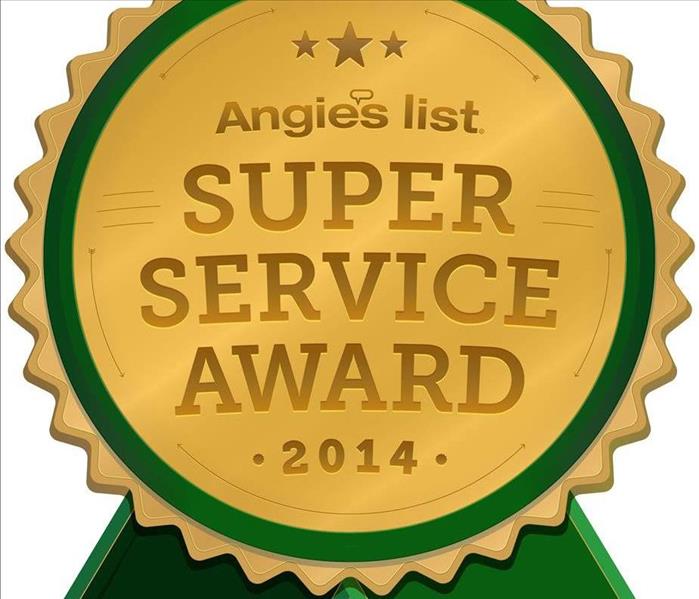Archived Blog Posts
Does SERVPRO Ventilate During Fire Restoration in Cambridge?
9/13/2022 (Permalink)
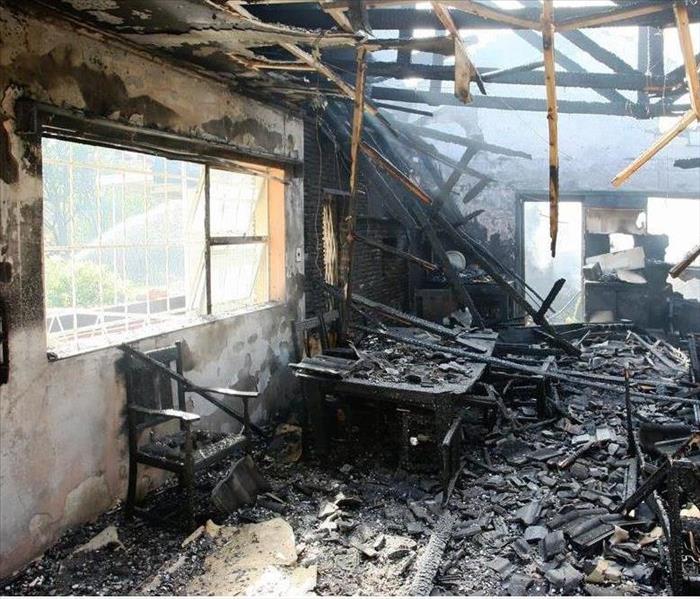 Call SERVPRO of Cambridge / Belmont at (617) 864-7378 for assistance from a professional remediation company.
Call SERVPRO of Cambridge / Belmont at (617) 864-7378 for assistance from a professional remediation company.
SERVPRO Fire Restoration Helps Cambridge Clients Avoid Airborne Smoke Residues
Many of our clients in Cambridge want to immediately enter their homes or buildings to recover family heirlooms and other valuable items after a fire. Some will ignore the guidance of the fire department to wait until the fire is completely out and the space has been thoroughly ventilated. There is real danger lurking inside your home. Among the hazards are slips and falls, live electrical wires, weakened support structures, and airborne smoke residues containing many toxic compounds.
SERVPRO provides fire restoration services to our clients in Cambridge and the surrounding area. We are very conscious of potential hazards, and our technicians ensure that the space is well ventilated, we turn the electrical system off, and structures are not in danger of collapsing. We ensure the area is safe for our team to enter. We can look for essential items and recover them before cleaning and restoration begin.
Ventilation is vital. Air movers remove nitrogen produced by burning organic materials and sulfur from burned inorganic materials. These chemicals are hydrocarbons, are quite toxic, and have been linked with cancer diagnoses. In addition, carbon monoxide, hydrogen cyanide, and hydrogen chloride are also produced.
SERVPRO ventilates the space, removing most of the gasses emitted from debris. We remove all fire-damaged contents and structures and clean every surface to remove smoke residue from your home. SERVPRO can also assist with restoring and repairing your home after a fire in your home after we remove all smoke residues.
Our SERVPRO services include:
- Smoke damage cleaning and remediation
- Fire damage restoration
- House fire cleanup, repair, and restoration
Call SERVPRO of Cambridge / Belmont for fire restoration services. We provide service to Cambridge and nearby areas. We can help 24/7. Call (617) 864-7378.
Fire Damage Restoration Variables in Belton Homes
8/11/2022 (Permalink)
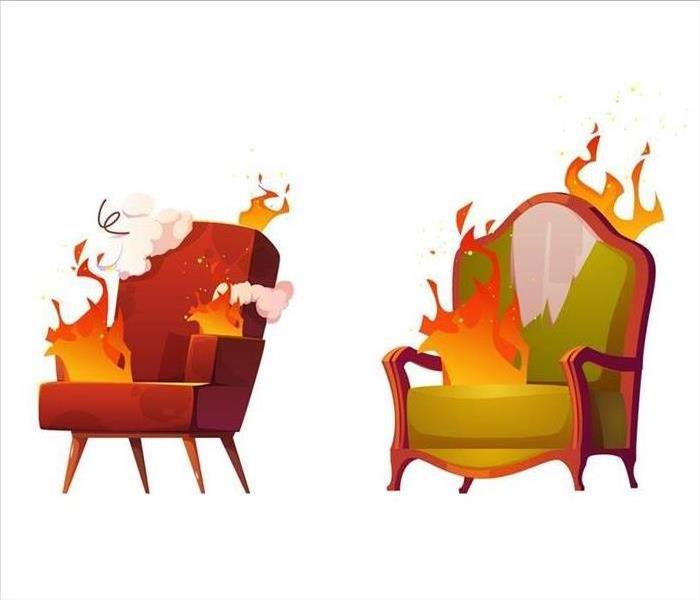 Fire damage restoration services by SERVPRO are second to none. Call now!
Fire damage restoration services by SERVPRO are second to none. Call now!
Belmont Fire Damage Cleanup with SERVPRO - What to Expect
If your Belmont home catches fire, you face the challenging task of fire damage restoration. Despite the traumatic experience, you must act fast to prevent further destruction. Any delay could worsen material deterioration.
Before embarking on fire damage restoration processes in Belmont properties, it is highly recommended that you inform your insurance provider. That way, the initial claim can readily cover all the damages. Having to deal with insurance companies can be nerve-wracking at times. SERVPRO helps smooth the process by working directly with adjusters. Our teams inspect the damages and help you clean your property to its former state.
Areas to be inspected include:
- Roof
- Plumbing and heating
- Interior walls and framing
- Windows
A fire causes an array of issues on the onset. Soot settles quickly into items and surfaces, and if it is wet soot, it damages textured and porous materials significantly. When combined with water, it forms a corrosive solution that can damage metal objects. It also increases conductivity, thus the risk of shorts in electronics which may leave some items irreparable. Smoke also causes a putrid smell that needs professional intervention.
Only a trained person should enter a fire scene because fire damage is unpredictable and may pose particular risks that only professionals can identify. Therefore safety should be a priority even after the fire is out. There are also specialized equipment and techniques necessary for cleanup that only professionals can perform effectively.
Cleaning and deodorizing textiles
Unfortunately, not every item can be saved; however, for small fires, SERVPRO crews help restore surfaces and eliminate the smoke odor. We also assist with more challenging things, especially carpets and upholstery. Special care is needed when cleaning and deodorizing textiles.
Textile restoration may involve:
- Performing several wash cycles
- Using specialized cleaning products to prevent yellowing
- Expediting drying to avoid bad odor
SERVPRO of Cambridge / Belmont has experience in fire damage restoration and thus helps manage and complete the most difficult or dangerous cleanup processes. Call us at (617) 864-7378. We're Faster To Any Size Disaster.
SERVPRO Handles all Water Damage Restoration in Cambridge
8/11/2022 (Permalink)
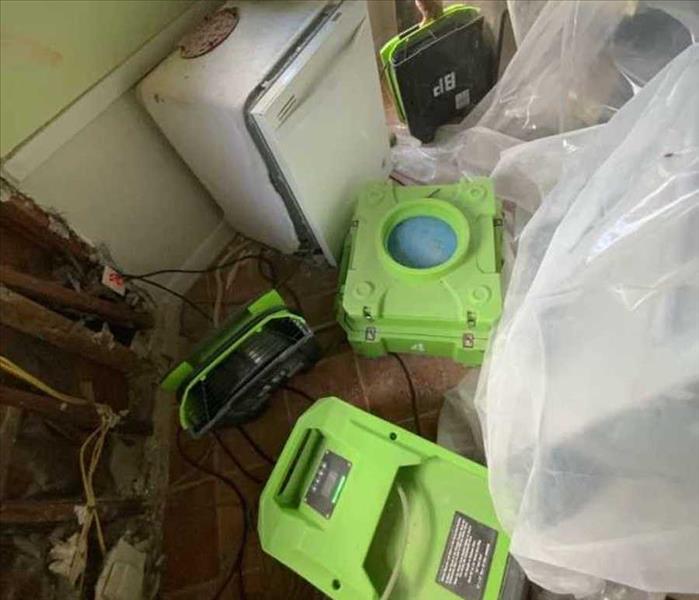 Water damage restoration is no DIY project. Let SERVPRO technicians handle al the work for you, from start to finish.
Water damage restoration is no DIY project. Let SERVPRO technicians handle al the work for you, from start to finish.
Rapid Water Removal in Cambridge Halts Deterioration
Any property disaster, including water intrusion events, worsens the longer you hesitate to act. It can be overwhelming to address such a disaster, which could lead to delays in taking action. Making plans ahead of time for an emergency can help you see your Cambridge property restored speedily after water damage occurs.
A complete Cambridge water damage restoration process has many steps. It considers all the small, essential details that otherwise could remain unnoticed, causing further and severe problems in the future. Water can get into seemingly unusual places. Therefore, restoration by experts involves cleaning and deodorizing such areas. Sanitation and odor removal are also part of the process. SERVPRO is quick to implement these steps to lessen the potential long-term damage. Our professionals are compassionate and want to help you get back to normal as quickly as possible.
Excess moisture causes issues such as:
- Microbial growth
- Damage to content
- Poor indoor air quality
The need for swift action is because standing water becomes more contaminated if not treated and removed, thus creating a perfect condition for microbial growth and damage to contents. Without proper water extraction, decontamination and drying, many long-term effects can take hold in a home. SERVPRO technicians specialize in restoring and repairing water damage using advanced equipment that, among other things, helps extract standing water and detect hidden moisture.
Factors determining restoration
The restoration resources required usually depend on various things, ranging from simple vacuuming and drying to complete reconstruction projects. Submersible pumps, truck-mounted vacuums, and portable wet/dry vacuums effectively extract water.
SERVPRO performs additional inspections to determine the remaining moisture levels and identify whether the floors and carpeting need to be removed.
Considerations during restoration
- The class and category of water destruction
- Exposure time
- The permeability level of materials affected
SERVPRO of Cambridge / Belmont IICRC has certified experts that provide thorough and effective water recovery services. They follow the best industry practices of keeping up-to-date on the latest cleanup techniques. You can reach us at (617) 864-7378. We're Faster To Any Size Disaster.
What to Expect From Mold Removal Companies in Belmont
8/11/2022 (Permalink)
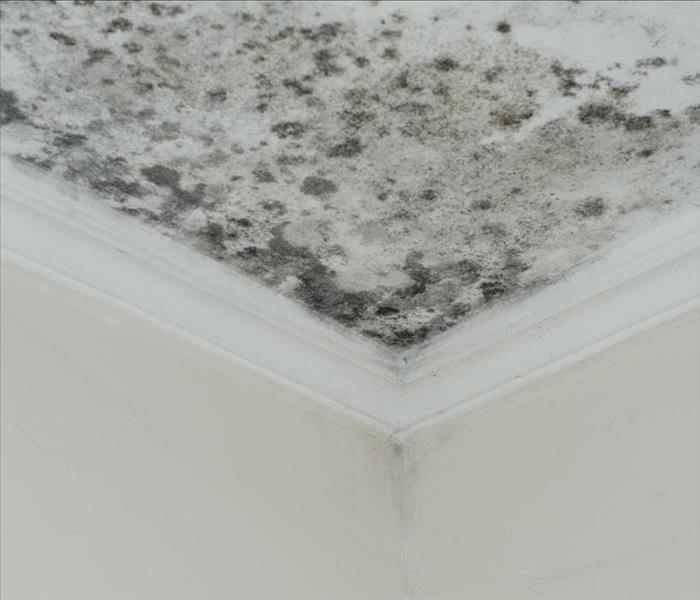 SERVPRO IICRC certified technicians have the training and experience for all mold remediation services needed for your home.
SERVPRO IICRC certified technicians have the training and experience for all mold remediation services needed for your home.
Effective Mold Damage Cleanup for Belmont Homeowners
Mold is undesirable in your Belmont home. Over time, it can accumulate, leading to removal challenges. It is unpleasant when damp materials such as wood change color and rot. When you discover contamination in your home, you may be tempted to clean it yourself, but such remediation is best left to professionals.
Among the mold removal companies in Belmont, SERVPRO helps clean moldy surfaces on your property, reversing any damage it may have done. Our teams know what a homeowner should expect and the industry standards. We know mold remediation can be overwhelming, and we understand that every home and circumstance is unique. As such, we stick to proven processes to remove mold contaminants and keep infestations from returning.
Some major steps for effective mold remediation
- Defining the job scope
- Correcting the moisture problem
- Establishing protection measures
- Cleaning and restoring the damaged surfaces
SERVPRO offers comprehensive surface and indoor air quality inspections to define the extent of the necessary work that technicians should do. Our crew talks you through all your options and tailors a plan that fits your budget and needs. We also determine whether there is a leak problem or high interior humidity as these are common moisture sources that set the stage for mold growth in houses.
Dealing with mold
The key to effective mold remediation is containing contaminants, a process involving sealing off the area with plastic sheeting and establishing negative air pressure in the contaminated areas. The method we choose to clean mold depends on the surface type and damage degree. Many materials, including porous ones like carpets, insulation, wallpaper, mattresses, and plush furniture like sofas, cannot be adequately cleaned or restored after being contaminated with mold. You must remove and discard them.
Mold removal techniques
- Scrubbing with antimicrobial cleaners
- Dry-ice blasting technique
- Wire brushing to break up the mold
- Sanding
SERVPRO of Cambridge / Belmont is among the best mold remediation companies that clean mold-infested materials using advanced equipment, fully restoring the area. Call us at (617) 864-7378. We're Faster To Any Size Disaster.
SERVPRO Provides Flood Damage Cleanup in Cambridge
7/11/2022 (Permalink)
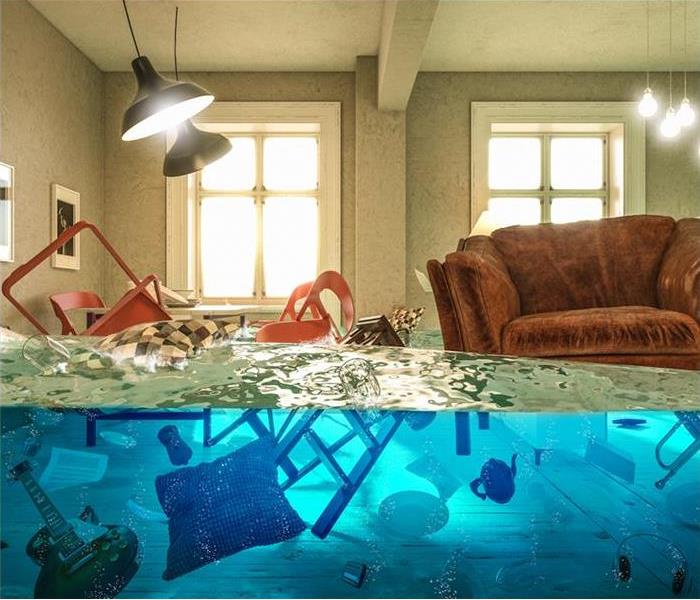 When flooding hits your Cambridge area, you need to call the technicians at SERVPRO.
When flooding hits your Cambridge area, you need to call the technicians at SERVPRO.
Protecting Your Valuables After Flood Damage in Cambridge – Call SERVPRO
Floods and storms can cause a great deal of damage to homes and businesses in Cambridge. The wind and flood waters can introduce water and contaminated debris into basements and living areas. After the storm, residents are left with so much damage they hardly know where to begin. After they ensure their family and pets are okay, many people are concerned about valuables such as jewelry, electronics, and other items that hold a great deal of sentimental value.
SERVPRO technicians can help with flood damage cleanup in Cambridge homes. Our team can be onsite to help with cleanup and begin restoration within four hours after your call to our office. We provide:
- Emergency roof coverings.
- Board-up of windows and doors.
- Emergency repairs to prevent further damage to your home.
We carefully remove debris and damaged contents as we clear your home, and begin cleaning, disinfection, and drying your contents and structure.
Homeowners and residents are also concerned about valuables such as jewelry and mementos. Depending on the amount of damage and the safety of residents, some may be able to enter the home to recover jewelry, valuable documents, pictures, and mementos.
SERVPRO technicians wearing appropriate personal protective equipment can also enter the home and recover these valuables. Non-porous items such as jewelry can be cleaned, disinfected, and returned to the owners. Documents and pictures are carefully cleaned and dried.
While these items can be recovered, they cannot be returned to their original condition.
In addition to jewelry and document recovery provided by SERVPRO, we also offer the following services to clients dealing with flood water damage:
- Water removal services
- Water damage repairs and restoration
- Repairing a leaking roof from storms
Call SERVPRO of Cambridge / Belmont for flood damage cleanup services. We cover Cambridge and nearby areas. We can help 24/7. Call (617) 864-7378.
Need Water Damage Cleanup in Cambridge – Call SERVPRO
7/11/2022 (Permalink)
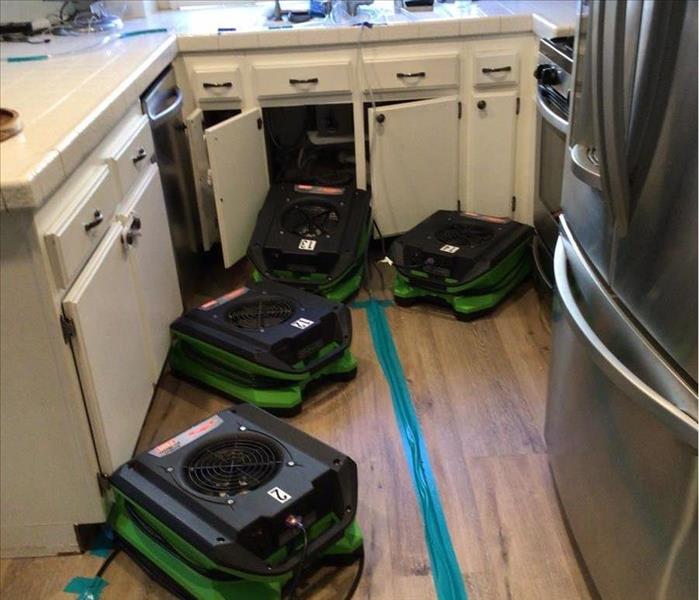 All you need is SERVPRO for all your water damage needs. Call (617) 864-7378.
All you need is SERVPRO for all your water damage needs. Call (617) 864-7378.
SERVPRO Provides Water Damage Cleanup and Drying in Cambridge
Many homeowners in Cambridge attempt to clean up their homes on their own after a water leak or perhaps an overflowing sink or tub. They mop up all the excess water and hope that not too much water has seeped under the cabinets or into the floor and subfloor. Only a few days later, they notice hardwood floors or subfloors are swelling, causing cupping, buckling, or warping. They may even notice a musty odor around carpeted floors or under cabinets, a sign of mold.
SERVPRO provides water damage cleanup to residents of Cambridge and the surrounding area. We encourage residents to mop up as much water as possible after correcting the water source. We can be onsite in less than four hours from your call and immediately take action to remove additional moisture from beneath floors and cabinets before further damage occurs.
We apply weighted water removers to carpets, floor drying mats to hardwood floors, and use vacuum wands to remove water and moisture from under cabinets or inside walls. Removing water and moisture from these difficult-to-reach areas reduces the amount of moisture available to be absorbed by these structures.
We deploy high-capacity air movers and dehumidifiers to reduce humidity levels further and draw out any remaining moisture in carpets, floors, cabinets, and walls. Wet moves to dry, and your feet, etc., will be completely dry within a few days with no further damage or concern about mold colonies growing in your home.
SERVPRO provides the following services to their clients:
- Water damage cleanup and repairs
- Ceiling repairs from water damages
- Emergency services water damage restoration
Call SERVPRO of Cambridge / Belmont for water damage restoration services. We cover Cambridge and nearby areas. We can help 24/7. Call (617) 864-7378.
Mold Damage in the Attic of your Belmont Home – Call SERVPRO
7/11/2022 (Permalink)
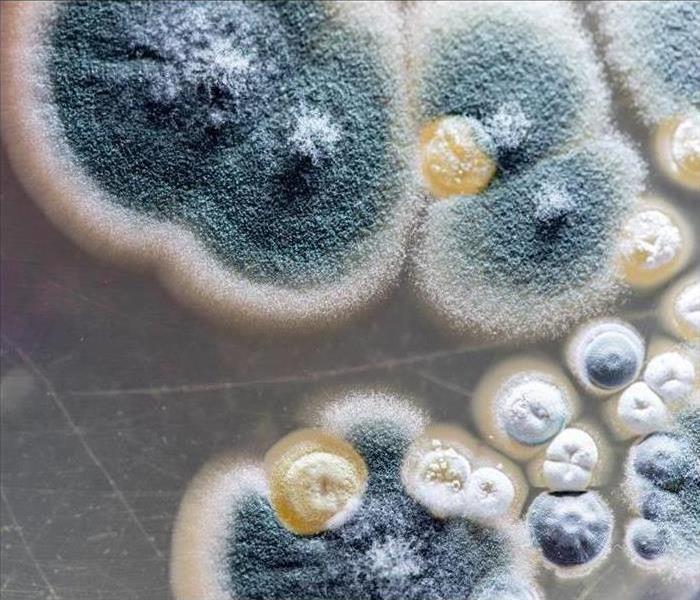 Let our fast response team at SERVPRO of Cambridge/Belmont eliminate your mold damage.
Let our fast response team at SERVPRO of Cambridge/Belmont eliminate your mold damage.
Call SERVPRO to Manage Mold Damage Remediation in Belmont Homes
Many homeowners in Belmont are surprised to find extensive mold damage in the attic of their Belmont homes. They notice a musty odor that seems to become stronger, especially when they open the access door to the attic space. In some situations, there may also be evidence of water damage on the ceiling inside the living area.
SERVPRO provides mold damage remediation and repairs to homeowners of Belmont homes and businesses. Our technicians can inspect your attic and provide guidance on the best approach to deal with the mold problem. State and local bylaws require specific inspection and documentation protocols to be followed based on the size of the mold infestation.
We can also identify the source of the moisture and help correct the situation. Mold needs moisture to become established. Moisture from HVAC condensation pans, leaking plumbing or sprinkler lines, damage to the roof, ice dams, hail damage, and extreme weather conditions can all introduce moisture to your attic and facilitate mold growth.
SERVPRO checks the condition of the rafters, insulation, and drywall or sheetrock. We remove wet insulation and repair roof shingles, dry rafters, and the entire attic space. We bag wet insulation in place or use large insulation vacuums and carefully remove this material to avoid contamination inside your home. Wet or sagging drywall must be removed and replaced.
Our building services team can remove damaged materials and provide installation of structural materials as needed. Using one qualified team saves our clients time and money. We supervise a full range of restoration and repair services.
Our services to homeowners include:
- Mold inspections, remediation, and removal
- Attic and bathroom mold removal
- Mold damage restoration and repair
Call SERVPRO of Cambridge / Belmont for mold damage remediation services. We cover Belmont and nearby areas. We can help 24/7. Call (617) 864-7378.
SERVPRO Provides Commercial Water Removal Services in Belmont
6/15/2022 (Permalink)
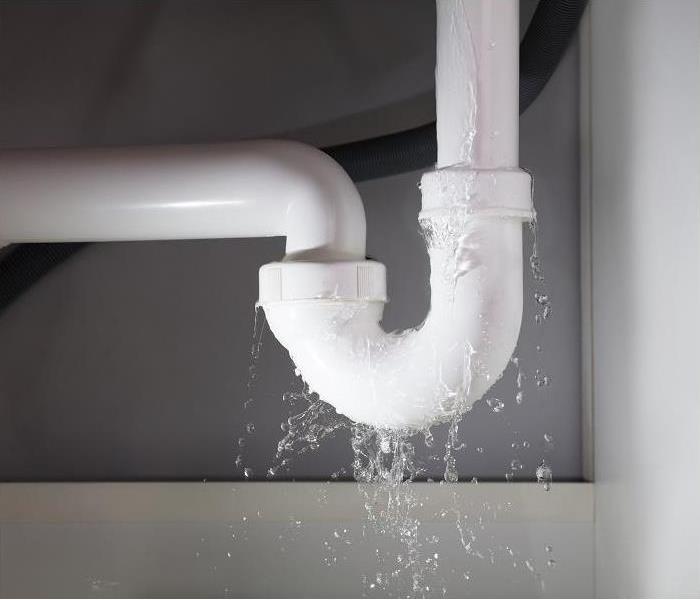 Water loss events come from a multitude of sources. No matter the scope, SERVPRO is always available for fast remediation.
Water loss events come from a multitude of sources. No matter the scope, SERVPRO is always available for fast remediation.
In Belmont, We Employ Advanced Water Removal Tools
Belmont business owners routinely face the risk of catastrophic water damage. Water-related threats generally come from failures in structural elements, plumbing networks, or appliances they use in their operations. These issues are made even more troublesome because they are often unforeseeable and can impact a business anytime.
SERVPRO’s water removal teams in Belmont have saved countless local hotels, restaurants, retail venues, and other commercial enterprises. We have successfully performed water cleanup work on businesses suffering such problems as ceiling leaks, burst pipes, malfunctioning appliances, and basement flooding. Our highly-skilled technicians have employed various cutting-edge water extraction and moisture removal tools to complete these critical projects. Specifically, their professional-grade gear has included:
- Heavy-duty portable and truck-mounted extractors that can suction up gallons of standing water in a concise time
- Air circulation devices, like high-velocity box fans, air movers, and Injectidry systems, that promote the evaporation of moisture on surfaces and then push the resulting water vapor-filled air from business interiors
- High-tech refrigerant or desiccant dehumidifiers that either condense excess moisture out of the air or draw it away with desiccant materials
However, SERVPRO crews carefully inspect your facilities to locate all water-impacted areas and materials before this equipment is used. Our technicians use infrared cameras to find hidden leaks, moisture sensors to identify affected materials, and meters to determine how damaged these things are. Once these tasks have been completed, we know what needs to be done.
Remember that, as your neighbors, SERVPRO of Cambridge/Belmont is dedicated to helping you with your commercial water removal needs. Rest assured that we are always here and ready to assist you whenever you need us, day or night. Call us anytime at (617) 864-7378.
SERVPRO Cleans Up Even the Worst Fire Damage in Cambridge
6/15/2022 (Permalink)
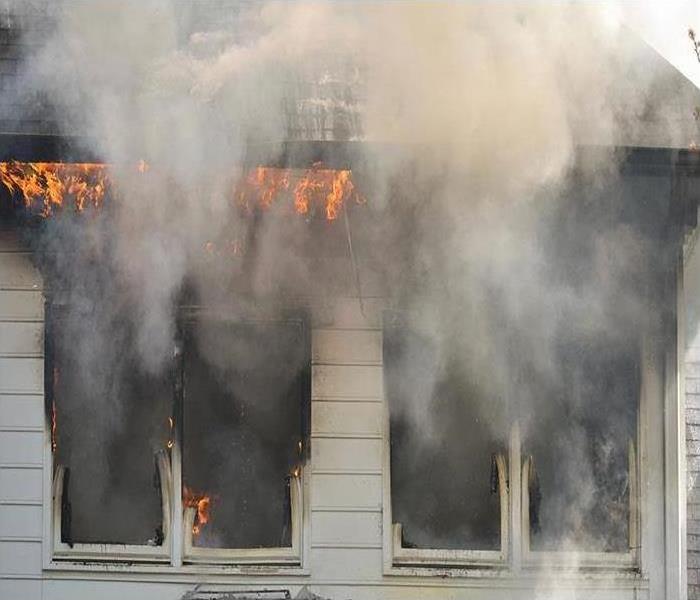 Smoke and soot are difficult to remove. Call SERVPRO!
Smoke and soot are difficult to remove. Call SERVPRO!
Our Cambridge Crews Are Expert Fire Damage Erasers
The first thing on the minds of Cambridge homeowners impacted by fire is how quickly they can return their residence to its pre-fire state. Of course, this work is usually easier said than done since the fire and smoke damage can often be extensive. With that said, there are local services that can effectively clean up and restore burned homes.
In Cambridge, SERVPRO’s fire damage team routinely remediates the effects of fire-related issues. Therefore, we have deftly dealt with all of the typical problems involved in restoring fire-damaged homes. On countless occasions, our expert crews have performed thorough house fire cleanup projects, completed smoke remediation efforts, and conducted complex fire damage restoration work. The methods and equipment we have used include:
- Locating and removing acidic fire/smoke residues from interior surfaces using innovative abrasive, wet, or dry methods to prevent discoloration and other damage
- Employing state-of-the-art HVAC cleaning systems to eliminate smoke particles from ductwork that could otherwise spread throughout your residence and foul other areas
- Refreshing the interior environment by pushing smoky air out with high-velocity box fans and air movers
- Removing or neutralizing airborne smoke particles with cutting-edge air scrubbers and ozone machines
- Eliminating persistent, undesirable smells from your home with powerful ultra-low volume and thermal foggers that emit commercial-grade deodorants to treat impacted areas/surfaces
Treating odorous, fire-damaged furniture and other upholstered contents with advanced injection devices
Once SERVPRO has taken all these steps, homes have generally been fully remediated, and residents are almost always amazed by the results. Moreover, homeowners are usually ecstatic about how swiftly we can return residences to their pre-fire state.
So, with this in mind, contact SERVPRO of Cambridge/Belmont whenever you need fire damage remediated. We are always ready to assist you at (617) 864-7378.
Flood Damage Causes Unique Problems for Cambridge Homeowners
6/15/2022 (Permalink)
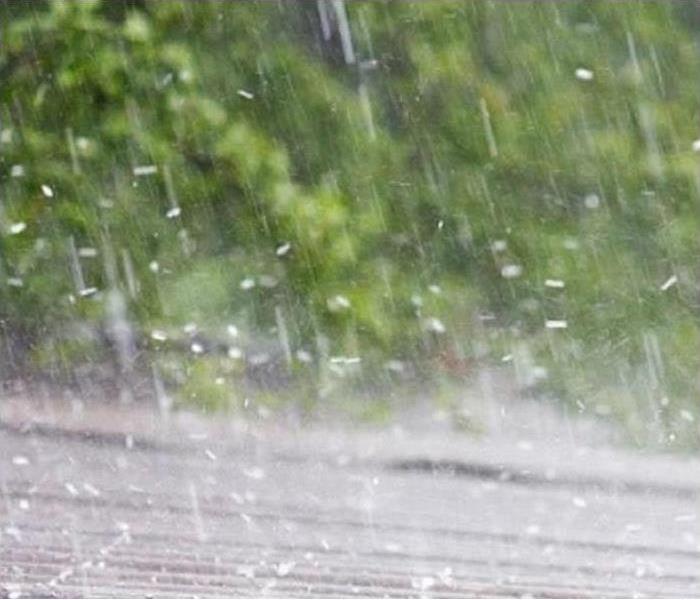 The Cambridge area, routinely experiences severe stormy weather. SERVPRO is your trusted choice for complete storm damage restoration.
The Cambridge area, routinely experiences severe stormy weather. SERVPRO is your trusted choice for complete storm damage restoration.
Cambridge Flood Damage Takes Special Remediation
Coastal Massachusetts, including the Cambridge area, routinely experiences severe stormy weather. This weather occurs throughout the year and can come in the form of Nor’easters or hurricanes during the warmer months. Regardless of what causes it, the related storm surges often push up the Charles River, bringing unique, flood-related problems.
SERVPRO is mindful of the ever-present threat of flood damage in Cambridge and knows how to mitigate and remediate such issues. This knowledge is impressive, given the unique damage flooding events can cause and how complex flood restoration work often is. As a top biohazard cleaning company, SERVPRO is a firm experienced in all aspects of flood cleanup, from water removal services and water damage repairs to sewage cleanup. Some of the flood damage our crews have cleaned up and restored includes:
- Rooms, basements, or other floors of homes filled with feet of refuse, chemical, and feces-polluted water that have rendered these areas unlivable
- Areas of homes where floodwaters have left behind feet or inches of debris and silt
- Structural elements, like floors, walls, and ceilings, that are moldy, compromised by water saturation or dry rot, or are unsound for other reasons
- Homes filled with repulsive, flood-related odors that are difficult to eliminate
A few of the ways we clean up and fix these issues are by:
- Rapidly extracting floodwaters from homes with powerful extractors
- Expertly drying interiors with air mover, dehumidifier, and Injectidry system networks
- Fogging floodwater-affected areas and materials with state-of-the-art foggers that emit industrial-grade antimicrobials and deodorants
As you can clearly see, your helpful neighbors at SERVPRO of Cambridge/Belmont can help you overcome even the worst flood damage. Our skilled technicians have the specialized knowledge and equipment necessary to get your job done quickly and effectively. Call us anytime at (617) 864-7378 for assistance.
Restoring Belmont Residential Carpet After Water Damage
5/29/2022 (Permalink)
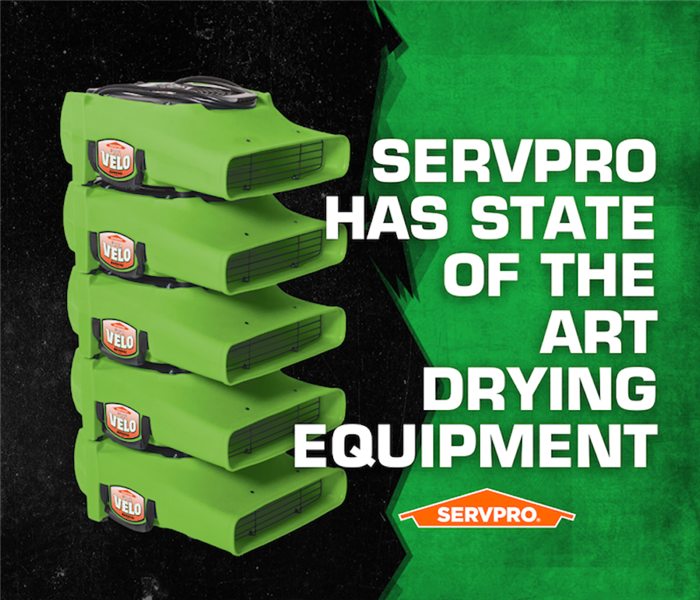 SERVPRO techs use the latest technology and equipment for every water damage restoration project. Call now!
SERVPRO techs use the latest technology and equipment for every water damage restoration project. Call now!
Belmont Carpet Cleanup Performed by SERVPRO
Home carpeting is one of the most vulnerable surfaces in a given home. While Cambridge homeowners can use consumer-grade vacuums with carpet cleaning and extraction features to mitigate damage, these solutions do not guarantee complete water removal. These tools can also unintentionally cause damage like delamination, where the backing separates from the fibers.
Water damage restoration from Belmont SERVPRO professionals can ensure that home flooring, baseboards, and more are returned to a pre-disaster condition. Carpet restoration includes cleaning, drying, re-seaming, and repairs to ensure that the home is clean, dry, and comfortable for occupants.
SERVPRO's Carpet Cleanup and Drying Process
Carpet requires a certain degree of care and knowledge about residential carpeting construction. For example, a typical carpet features two backings: a primary one to hold the fibers and a second underneath. The two layers are often held together by a latex adhesive.
SERVPRO techs can combat wet carpets with a diverse array of processes:
- Making multiple passes over the wet carpet with a carpet wand attached to a hot water extractor. The extraction process requires extra care and attention to prevent damage to fibers, adhesives, or backing
- Carpet can be partially pulled up to inspect subflooring or to tent the carpet so that air movers and dehumidifiers can dry above and below the surface
- Deodorization methods include injection for spot cleanup, ultra-low volume fogging for larger-scale odor control, and application of EPA-registered biocides
Carpet and pad are typically salvageable after clean water damage like pipe leaks or appliance overflows. However, SERVPRO can implement repairs and reinstall the carpet as necessary.
Homeowners can look to SERVPRO of Cambridge / Belmont for cleanup that can make a disaster seem "Like it never even happened." Call (617) 864-7378 for mitigation from an emergency-response restoration crew.
SERVPRO Fire Restoration Mitigates Soot and Proteins
5/22/2022 (Permalink)
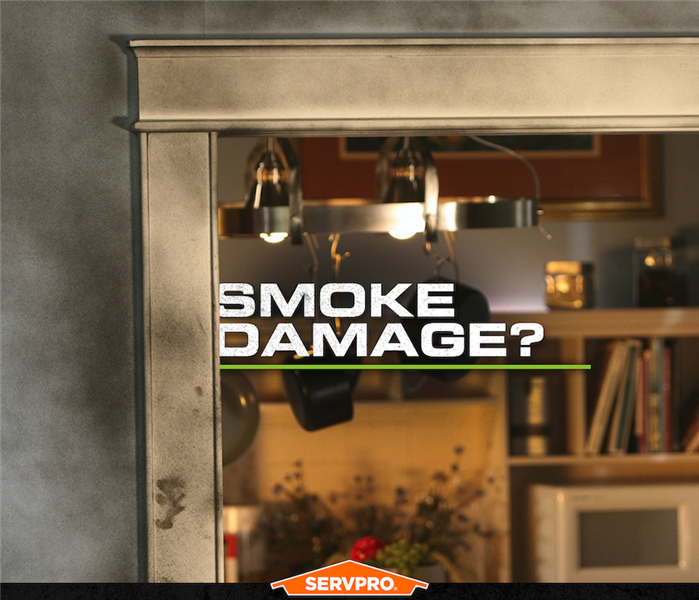 Fire damage restoration services by SERVPRO are second to none. We are ready 24/7 365 days a year.
Fire damage restoration services by SERVPRO are second to none. We are ready 24/7 365 days a year.
Professional Fire Cleanup for Cambridge Kitchens
Kitchens are by far the most common source of fire damage restoration in Cambridge, accounting for as many as half of reported cases and nearly half of estimated unreported incidents. High temperatures and smoke create chemical changes that can contaminate food while spreading soot particles and other soils throughout nooks and crannies in a Cambridge property.
SERVPRO fire restoration technicians respond to calls 24 hours a day, seven days a week, to mitigate soils and restore structures and belongings. Cleanup services address soot, protein residues, and fire-related odors. They include HVAC inspections to minimize the risk of spreading smoke particles during cleanup.
Mitigating Fire Soils and Proteins with SERVPRO Solutions
Fire damage soils, especially those from "wet" smoke associated with oils and plastics, are difficult for homeowners to remediate. SERVPRO has a multitude of solutions for these soils, as well as the filmy, odorous residues left behind by burnt proteins such as meat and fish:
- Enzyme digesters consume protein residues and convert them into the water-soluble matter for simultaneous cleaning and deodorizing
- Specialized detergents that are either hydrophilic or lipophilic can target soils for successful emulsification of wet smoke
- EPA-registered, OSHA-approved solvents are usable for soils that are more difficult to clean and also provide odor control when dispensed through a thermal fogger
- Light, dry soils on kitchen walls and fixtures are often removable with light detergents or manual cleaning agents like dry cleaning sponges
- Metals and appliances are also often restorable after enduring fire damage
Residents can call SERVPRO of Cambridge / Belmont at (617) 864-7378. We're Faster To Any Size Disaster and serve the community with emergency-response inspection and restoration services.
Cambridge Office Ceiling Water Cleanup by SERVPRO
5/15/2022 (Permalink)
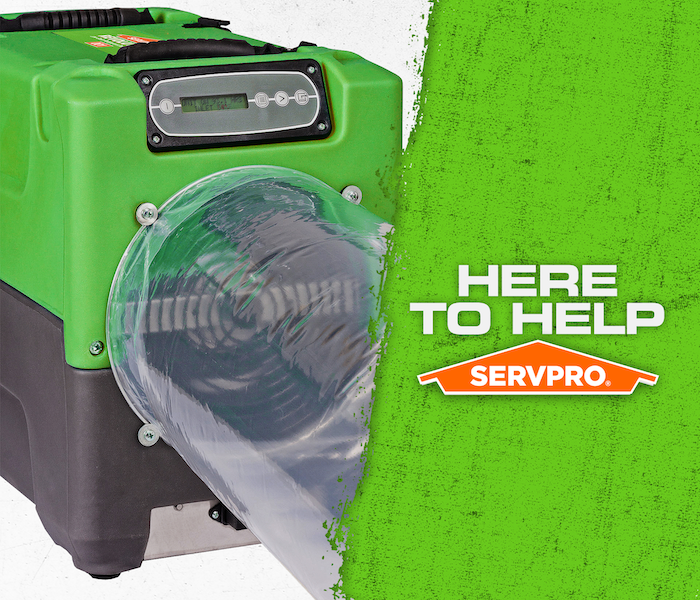 Water cleanup for commercial buildings is a job for SERVPRO. We are here to help.
Water cleanup for commercial buildings is a job for SERVPRO. We are here to help.
Water Damage Restoration Revitalizes Businesses
Water damage from plumbing damage and other concerns can happen anywhere and at any time, putting sudden, undue pressure on local businesses. While Cambridge commercial properties can take steps to prepare for damage, like installing water sensors and bringing in licensed professionals to perform maintenance, disasters can still occur at any time of the day or night.
SERVPRO water damage restoration returns Cambridge businesses to a sanitary, preloss state 24 hours a day. Restoration technicians can perform inspection, cleanup, and rebuilding according to industry standards and local regulations for commercial facilities.
How SERVPRO Can Dry Ceiling Water Leak Effects
Restoration technicians can use the following techniques to mitigate water damage from a ceiling leak, including for commercial drop ceilings:
- Technicians can inspect the area with high-end water detection equipment, including thermal imaging cameras and pinless moisture sensors that can detect moisture over an inch deep in a multitude of surfaces
- Drywall ceilings may require partial demolition in cases with more extensive damage. If the water is relatively new, techs can make small cutouts in the ceiling for ventilation during the drying
- Ceiling tiles are removable for drying but may be prone to warping and crumbling after water damage. Depending on their condition, replacement is often much more cost-effective for these tiles than repair
- Portable extractors with specialized attachments can mitigate moisture in vulnerable areas like carpeting
- Carefully-positioned air movers and dehumidifiers work together to remove remaining moisture after extraction and can be paired with polyethylene drying chambers and sheeting, more effectively forcing air into ceiling cavities
Property owners can reach SERVPRO of Cambridge / Belmont at (617) 864-7378. We're Faster To Any Size Disaster and can help businesses reopen their doors.
Mold Damage Remediation in Belmont Is a Hazardous Business
4/28/2022 (Permalink)
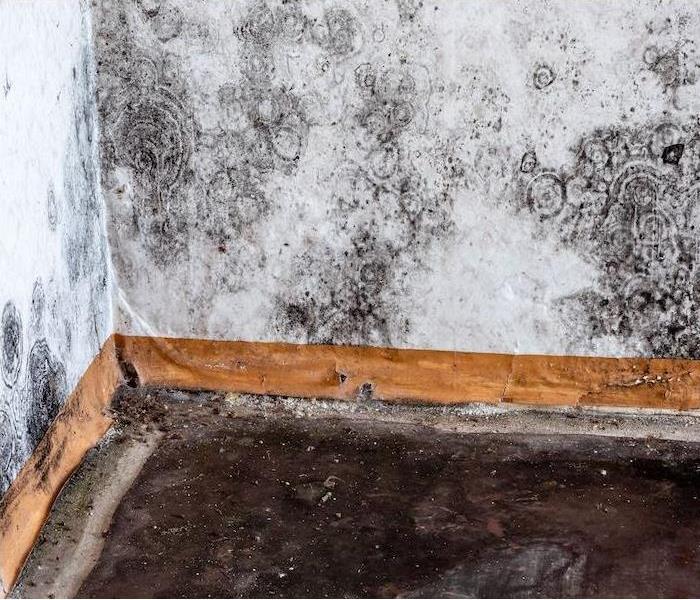 We aim to restore your property as quickly as possible, “Like It Never Even Happened.”
We aim to restore your property as quickly as possible, “Like It Never Even Happened.”
Safe Mold Damage Remediation in Belmont Requires Specialized Precautions and Gear
As a frugal Belmont business owner, you may be tempted to handle mold-related issues yourself. This mindset, however, can often cost you more time, money, and overall grief in the long run. So, enlisting the aid of trained mold remediators who know what safety precautions to take and have the right gear for the job is the prudent thing to do.
Only professional remediation firms like SERVPRO know how to best clean up and restore commercial mold damage in Belmont. This truth results because companies like ours are immersed in this type of work. Our highly-trained mold specialists perform mold inspection, mold removal, and black mold damage repairs daily, so they usually know what needs to be done to complete their work as safely and effectively as possible. When performing their restoration tasks, SERVPRO’s technicians:
- Inform occupants to talk to their doctors if they have any mold-related health concerns
- Devise and follow safety plans specially designed for each site and situation
- Come equipped with the necessary remediation equipment for each particular job, like N95 filter respirators for small mold outbreaks, half-mask breathing devices for use in more significant contaminated places, full-face respirators, Powered Air Purifying Respirators, and full-body protective suits for more thoroughly impacted structures.
- Always wear chemical-resistant gloves and appropriate eye protection for each job.
Keeping all of this in mind, remember that your extensively experienced, helpful neighbors at SERVPRO of Cambridge/Belmont are always here and ready to assist you with all of your mold damage remediation needs. We have the expertise and gear to get your job done right the first time. So, whenever you need us, pick up the phone and call (617) 864-7378.
Flood Damage Poses Invisible Threats to Your Cambridge Home
4/22/2022 (Permalink)
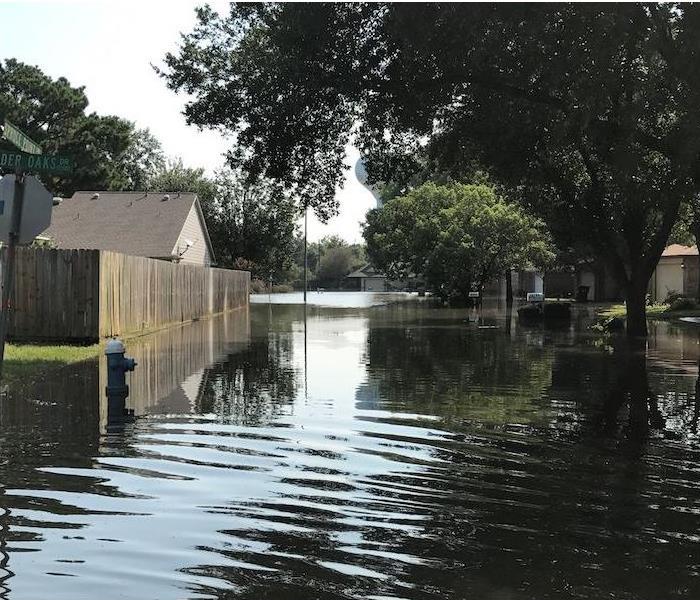 Don’t let your property be a victim of flood damage, SERVPRO of Cambridge/Belmont is only a call away.
Don’t let your property be a victim of flood damage, SERVPRO of Cambridge/Belmont is only a call away.
Cambridge Flood Damage Is Exacerbated by Dangerous, Stormwater-Borne Microbes
Cambridge homeowners generally fixate on the visible effects of flooding on their residences. However, the invisible impacts of waterborne microorganisms carried by floodwaters can often cause as much trouble over time as physical contact with the water itself. It is for this reason that effective microbial remediation is necessary for complete flood damage restoration.
Cambridge flood damage cleanup and repair firms like SERVPRO are experts at eliminating flood-related microbial threats from homes. Our biohazard remediation and flood restoration professionals are well-versed in sewage cleanup techniques, water removal services, and water damage repairs. Moreover, they are thoroughly educated on the various microscopic pests that can impact residences after a flooding event. As a result, SERVPRO technicians know how to spot potential problems associated with the following microorganisms and clean them up:
- Viruses like norovirus and Hepatitis A & E, which are the simplest floodwater microbes, originate from human and animal excrement and can multiply and cause health effects in residents over time.
- Bacteria, including Salmonella Typhi and Clostridium Tetani, which live off absorbed materials in their environment, are usually single-celled organisms found in water, soil, and other organic matter and may cause effects like viruses.
- Fungi like mold, mildew, and Serpula Lacrymans, which are generally multi-celled microbes that digest environmental materials for nutrients rather than eating and may cause one or more of the following issues: discoloration; disintegration of materials like drywall; foul odors; and dry rot in wooden materials
Mindful of these potential, yet oft-overlooked, flood-related dangers to your residence, you should be prepared to call a reputable flood damage cleanup firm like SERVPRO of Cambridge/Belmont if deluging stormwaters ever impact your home. So, whenever your home suffers flooding, don’t hesitate to call us at (617) 864-7378 for assistance.
Cambridge Businesses Deserve Professional Water Damage Restoration
4/13/2022 (Permalink)
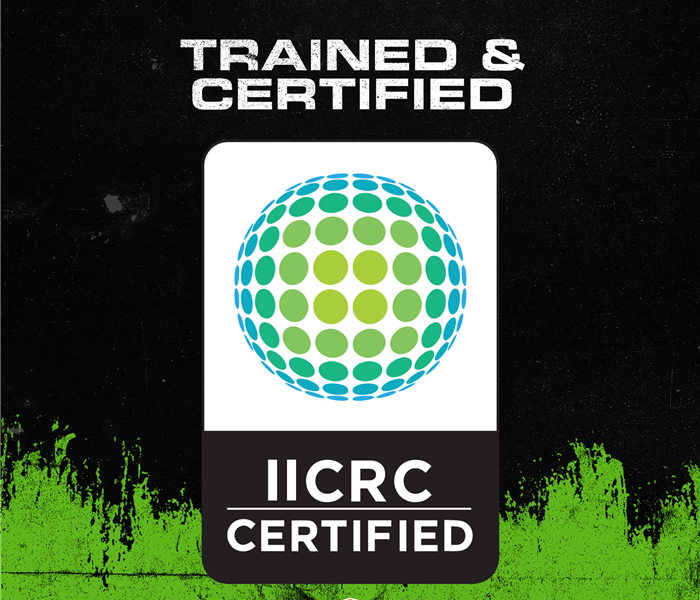 SERVPRO IICRC certified technicians have the water damage restoration knowledge and services needed for your home. We are here to help.
SERVPRO IICRC certified technicians have the water damage restoration knowledge and services needed for your home. We are here to help.
Water Damage Cleanup and Repair with SERVPRO in Cambridge Is Best
Many business owners feel that just their maintenance staff or cleaning crew can handle a spill or water damage. However, multiple factors play with water-related damage to your business. Not only do you have to think of areas where water migrated for secondary damage, but there is also the potential for health effects from the onset of black mold. Getting everything addressed at your Cambridge business by skilled IICRC-certified professionals at SERVPRO gets you the results you deserve!
Did you know that contacting SERVPRO’s water restoration technicians (WRT) whenever you notice water damage in Cambridge ensures you get a rapid response? We arrive at your commercial property within hours of the initial call so we can begin the assessment and formulate a plan of action for water removal services.
Moisture Detection is Crucial for All Water-related Calls
There can be numerous spaces and building materials within your business harboring hidden moisture. SERVPRO’s Green Fleet is packed with restoration tools and equipment, including a full selection of moisture detection tools like meters, sensors, and infrared camera technology. Our skilled technicians know how to follow the natural path of the water’s migration while using tools to help us check moisture levels throughout the impact zone.
- We may perform flood cuts where we remove wall materials a few inches above the waterline. This allows us to dry the area behind the wall before replacing saturated materials with all new materials – “Like it never even happened.”
- Depending on the project, we may perform other controlled demolition techniques to remove ceiling tiles, baseboards, and panels. However, we always work using the restore versus replace mentality to save you time and money on your water restoration project.
- Any areas of your business that have impacted flooring, we can remove and replace carpets, carpet padding, subfloor, etc.
Trust your business to our locally owned and operated SERVPRO of Cambridge/Belmont franchise. You can contact us 24/7 for water damage assistance by dialing (617) 864-7378.
SERVPRO Knows How to Clean Up Commercial Fire Damage in Belmont
4/13/2022 (Permalink)
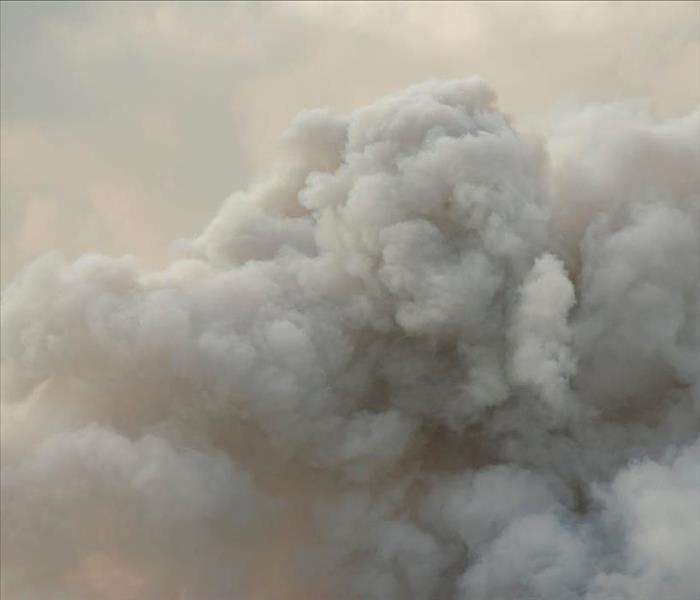 SERVPRO of Cambridge/Belmont understands how important your business is. Let us help you out.
SERVPRO of Cambridge/Belmont understands how important your business is. Let us help you out.
Our Belmont Fire Damage Experts Are Skilled at Remediating Your Fire-Related Issues
Effective remediation of fire-related issues at Belmont businesses requires knowing how to locate, correctly identify, and remove different types of residues. Moreover, the proper training, skills, and equipment are needed to complete this process successfully. Fortunately, SERVPRO technicians possess all of these essential attributes.
SERVPRO, a commercial fire damage firm in Belmont, routinely inspects, cleans up, and restores local fire-impacted businesses. A key effort of our smoke remediation and fire restoration services is residue removal. In performing this work, our skilled fire damage restoration professionals do the following things:
- Carefully examine your facilities, starting from the origin of the blaze to the furthest reaches of the fire and smoke damage, to determine the location and extent of residue deposits around your shop, restaurant, hotel, or other enterprises.
- Inspect and classify residues once they have been located to select the best method to clean them up
- Identify the type of surface the residue is on so that appropriate cleaning measures can be taken to preserve the material this fire and smoke waste covers.
- Use dry, wet, abrasive, or innovative techniques to remove fire-related coatings from impacted surfaces.
- Expertly dispose of any fire and smoke wastes according to government and industry-approved safety guidelines.
Four Main Factors Affecting Residue Cleanup
Our technicians remain mindful of the factors affecting the rate and effectiveness of residue cleanup efforts. They understand that:
- A certain amount of time is required for cleaning and deodorizing products to work
- Agitation helps to dislodge residue particles faster
- Different chemical actions, like dissolving or bleaching, are best for each situation
- Heat speeds up chemical reactions.
With all of that said, if you ever need fire damage remediation at your business, don’t hesitate to contact SERVPRO of Cambridge/Belmont. We are always ready for your call at (617) 864-7378.
The 4 Things That Often Cause Flooding | SERVPRO® of Cambridge/Belmont
4/5/2022 (Permalink)
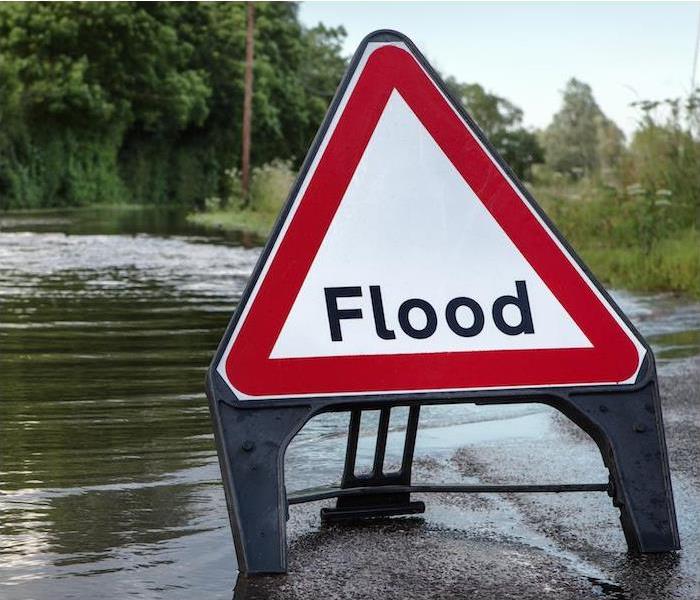 Regardless of the cause of the flooding, SERVPRO of Cambridge/Belmont has the team to help you recover from any disastrous event.
Regardless of the cause of the flooding, SERVPRO of Cambridge/Belmont has the team to help you recover from any disastrous event.
Natural disasters of any type can be devastating. Whether you are dealing with tornadoes, hurricanes, severe thunderstorms or something else, they can all be quite dangerous. However, most people are surprised to learn that flooding is the most common and the most deadly type of natural disaster within the United States.
There can be a lot of variation in the damage that flooding causes, but the types of flooding and the things that make it occur are often the same—and that is what we will be examining today.
3 Main Kinds of FloodingFlash floods, as the name implies, occur rather rapidly. Typically caused by heavy rainfall, either from a large storm cell or a slow-moving one, flash floods occur when the ground is no longer able to absorb an adequate amount of water. Flash flooding can impact any area, and often the water will move swiftly enough to carry away objects such as dumpsters and cars in its path.
River floods happen when a riverbank cannot contain the water within the river—this is common after heavy rainfall or in the spring when snow begins to melt. River floods occur when the river overflows, flooding the surrounding area.
Coastal floods are similar in nature to river floods, but they occur in bodies of water along the coast. Typically due to hurricanes or other types of storm surges, coastal floods occur when water along the coast rises rapidly and overwhelms its borders.
4 Ways Flooding Often OccursHeavy rainfall. When storms dump a large amount of rain on an area, all types of flooding become likely. Flash floods are the most common type of flood, and they often occur in areas with large swaths of paved ground, such as cities and suburban areas. Heavy rainfall can also cause rivers or coastal waters to overfill.
Oceanic activity. The rise of ocean tides, due to rainfall, hurricanes or other storms, can lead to coastal flooding that impacts areas bordering the water.
Dams and levees failing. As seen in 2005 events surrounding Hurricane Katrina, the failure of a dam or levee is quite devastating. These structures are sometimes overwhelmed due to a high volume of water, and are thus prone to giving way and causing major destruction.
Snowmelts and ice dams. Throughout the winter, snow and ice can pile upon one another and lead to quite a bit of moisture buildup when warm weather finally comes along. This can lead to flooding on its own, but also cause ice jams, which can cause secondary flooding along riverbanks.
Regardless of the cause of the flooding, SERVPRO has the tools and teams to help your home or business recover from its disastrous effects. Contact us anytime when flooding or water damage makes a mess in your life.
Water Damage - We are here to help!
3/24/2022 (Permalink)
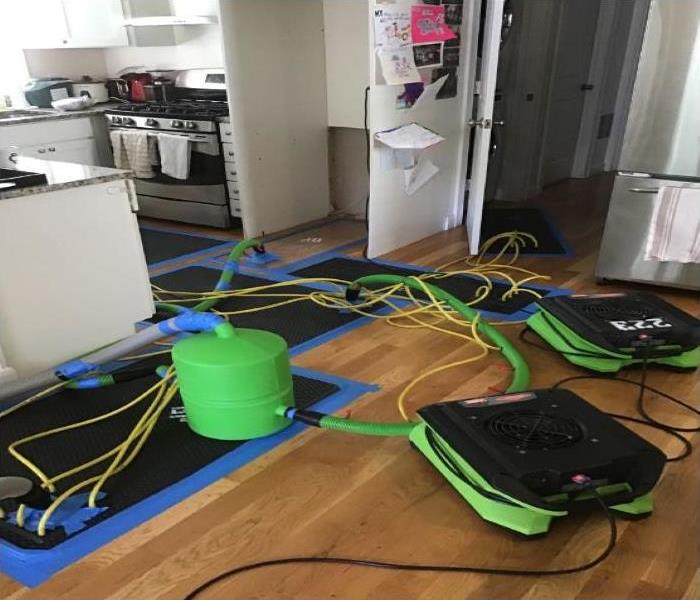 If you sustain water damage, please call SERVPRO of Cambridge/Belmont (617) 864-7378 to assist you.
If you sustain water damage, please call SERVPRO of Cambridge/Belmont (617) 864-7378 to assist you.
John & Sue Butler’s contractor had finally finished the renovations. They had been living with relatives until their new condominium was finished. The furniture and belongings were delivered and they were finally living in their dream home. They came home Sunday night after a weekend away and they noticed water dripping down from the ceiling. Their hardwood floors had standing water and were beginning to buckle. They discovered that their upstairs neighbor pipe broke causing the water to run down into their unit. They called SERVPRO of Cambridge/Belmont to assist them. The Butler’s explained that they had just moved in and didn’t want the life to be disrupted. The SERVPRO technician assessed the damages and came up with a plan that would not require any demolition. He discovered there were existing cavities he could install an Inject-I-Dry System that would dry out the floors & ceilings without any demolition or sanding. The technician monitored the drying progress and after one week, he determined that the floor and ceiling were dry and removed the equipment. The Butler’s were ecstatic!
Checking For Water Damage In Your Home
3/24/2022 (Permalink)
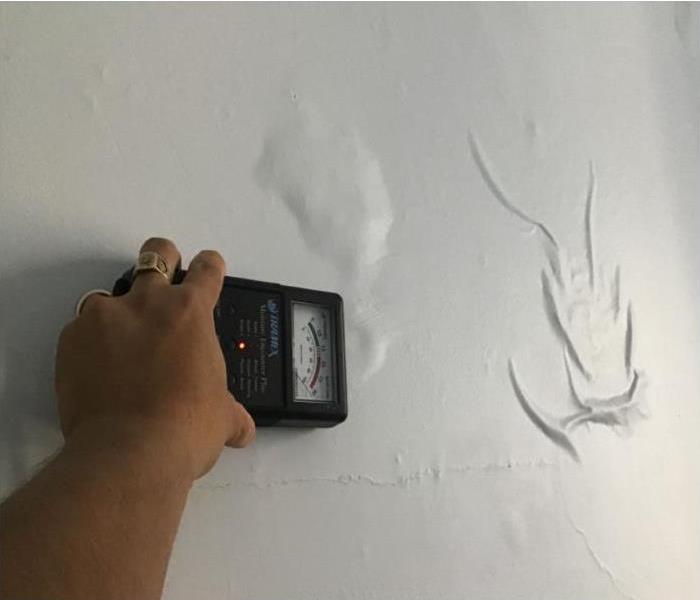 Get in touch today to speak with a water damage restoration expert. 617-864-7378
Get in touch today to speak with a water damage restoration expert. 617-864-7378
When it comes to keeping your home structurally sound and well-maintained, watching out for water damage is one of the best things you can do. Not only can water damage cause cosmetic problems and lead to unsightly spots throughout the home, but it can also significantly damage structures when it is allowed to fester.
Fortunately, homeowners can easily perform their own routine checks to look for water damage throughout the house, which can help them catch issues early and avoid having to make costly claims on their homeowners insurance.
Tips for Doing an At-Home Water Damage Inspection
Inspect your walls and ceilings. Drywall and paint can quickly show water damage, making walls and ceilings one of the best and easiest places to begin your search. Any discoloration, particularly soft spots or peeling areas of paint, might indicate that there is water damage present. It is also wise to check up on your external window and door frames for weather-related leakage.
Don’t forget to look down. It is not uncommon to find water damage that shows itself in the floor, since that is the lowest spot in every room. Water can pool and begin to saturate the subfloor, not causing surface issues but instead showing up with warped floorboards, buckling or a general smell of mildew, which should always be checked out.
Inspect your roof. It is important to keep your roof in good shape to make sure it is keeping out all the elements it can when it rains. A pair of binoculars can give you valuable insights into the quality of your roof and help you spot any loose shingles or peeling places. Additionally, it is smart to check that your gutters are doing their job the next time it rains to prevent water from building up around your foundation.
Pay close attention to the basement. Though basements have a reputation for being damp, if you have moisture problems under your home it can be a serious issue. Look for signs of water running down foundation walls or musty odors, which might indicate there is too much moisture present that should be addressed.
If you have water damage anywhere in your home, we are here to help. You can contact us at any hour to learn more about our services or to report damages.
Why So Many Choose SERVPRO of Cambridge/Belmont
3/22/2022 (Permalink)
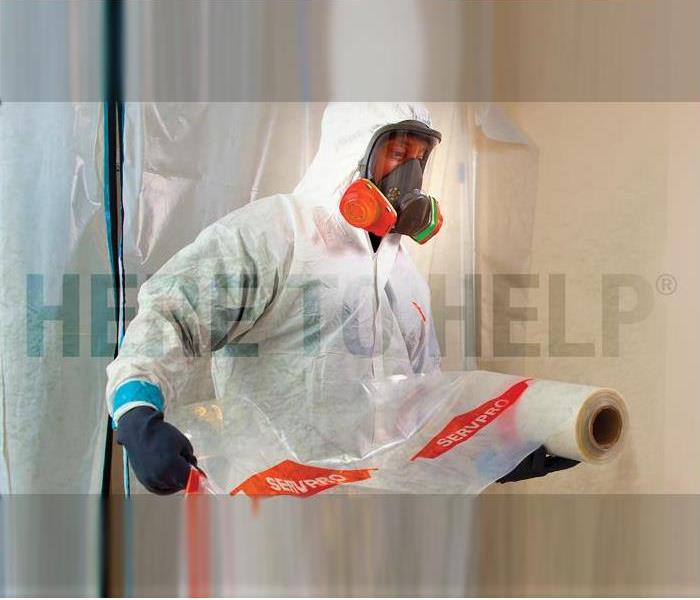 Give us a call today if you have any questions - 617-864-7378
Give us a call today if you have any questions - 617-864-7378
Why so many choose SERVPRO
It's more than just the brand recognition, it’s also the qualified personnel, the expertise and dedication to the community that make us the place to call. Below are additional reasons why:
Qualified
We have the best training in the industry. Each team member is trained in clean up and restoration which can range from bio hazard, fire, mold to water damage. We are IICRC certified (Institute of Inspection Cleaning and Restoration Certificate) for fire and water cleanup and restoration. Our job is to make sure our clients understand the loss and how we will help restore their home or facility. We live up to the motto and we leave each location looking “Like it never even happened.”
Immediate
Our team understands that the best way to limit further damage is to begin the clean up and restore the property as soon as possible. For this reason our team is available 24/7 - day, night, or holiday! This also helps with keeping costs down. We strive to always answer the first call or respond within a few hours.
Latest Technology
We take pride in the fact that we are able to keep up with some of the advancements technology has to offer. This allows us to restore your property as quickly and efficiently as possible so you can get back to what you were doing preloss.
No Loss Too Big or Too Small
Whether you have multiple locations, or a room that has suffered a loss we can help restore your property. SERVPRO is a national company and as a result our SERVPRO of Cambridge/Belmont team has access to the 1,800+ other franchises to handle any scope of loss. You call us and we will handle the rest!
Future Loss Prevention
With every job we ensure we understand what the cause of the loss was. We do this to ensure the cause of loss is addressed to prevent similar damage from occurring again.
Our Community
We love what we do and the ability to help our community. We know the roads, the neighborhoods, and what makes our towns so special. It is important to us that our town thrives so we are highly motivated to do all we can to make this an even better town to live in.
Help is always here
Whether you have a question or a loss give us a call and we will help 617-864-7378. We serve ALL - businesses, home owners, property managers and tenants in the Cambridge/Belmont area. ensure that the water is extracted, your property is dried, and mold is addressed if necessary. Third, contact your insurance company to see if you have coverage for the damaged property.
The Silent Business Partner You Didn’t Know You Needed | SERVPRO® of Cambridge/Belmont
3/17/2022 (Permalink)
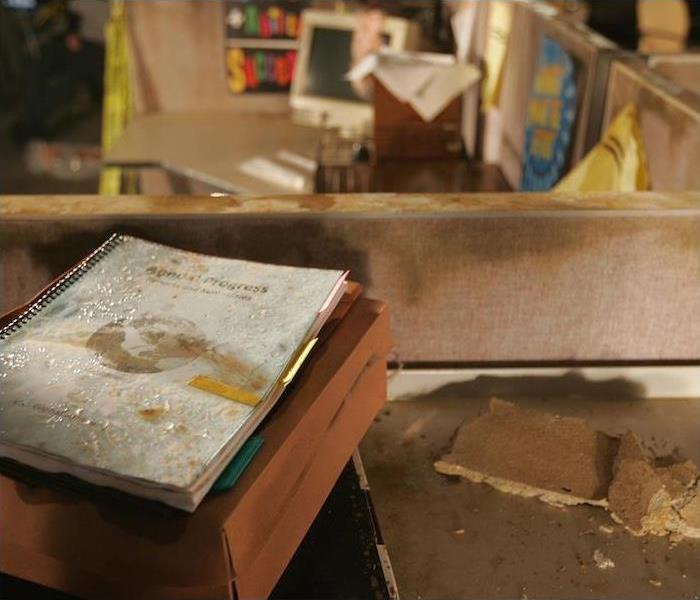 SERVPRO of Cambridge/Belmont are your local commercial restoration experts. Contact us today should you experience any damage.
SERVPRO of Cambridge/Belmont are your local commercial restoration experts. Contact us today should you experience any damage.
Owning a business of your own can be a lot of work! We understand that it takes every ounce of dedication to ensure that your company is successful. So, if a major disruption happens, it can truly be devastating as well as chaotic for you personally.
You should know that just because you are alone in running a business doesn’t mean you are alone in dealing with emergencies. You have a partner in SERVPRO of Cambridge/Belmont. We want to see you succeed, and we will work to get you prepared and back on your feet.
Large loss recovery. Fires, storms and flooding are the top causes of financial losses. This can cause major damages to any business, and even more so if you don’t react quick enough. That’s why we are available 24⁄7 so that you can count on us any time of the day or night!
Emergency Ready Plan. Your best defense is preparation. Any and every business needs an emergency plan, and we’re here to help you implement one. We will work to create an optimized plan for your company, outlining the specifics of what to do in an emergency and how to do it.
Cleaning of All Kinds. We offer more than simply the general carpet cleaning that you might be thinking of! We also providing specialty cleaning services like biohazard removal. We can find a solution for any kind of mess, because we’ve been in the industry for a long time and we know what to expect.
Restoration Services. Storms bring floodwaters, fires can spark in the kitchen and pipes may burst sometimes! No matter what kind of disaster has taken hold of your business, they will all require cleanup and restoration services of some kind. We can assure you that with SERVPRO of Cambridge/Belmont we will have your business back to preloss condition in no time.
Industry Specialization. There’s no commercial enterprise that we can’t help! We have trained our technicians on every in and out that accompanies commercial properties. No matter what type of special needs your place may have, we have you covered. We will also do our best to enclose our work area, in hopes of not disrupting your regular business operations.
Whatever your recovery need may be, and whatever your commercial property may require, trust SERVPRO to get the job done. Contact us today to get started on an Emergency Ready Plan or find out how we can serve your business.
Overloaded Circuits Cause Fires
3/17/2022 (Permalink)
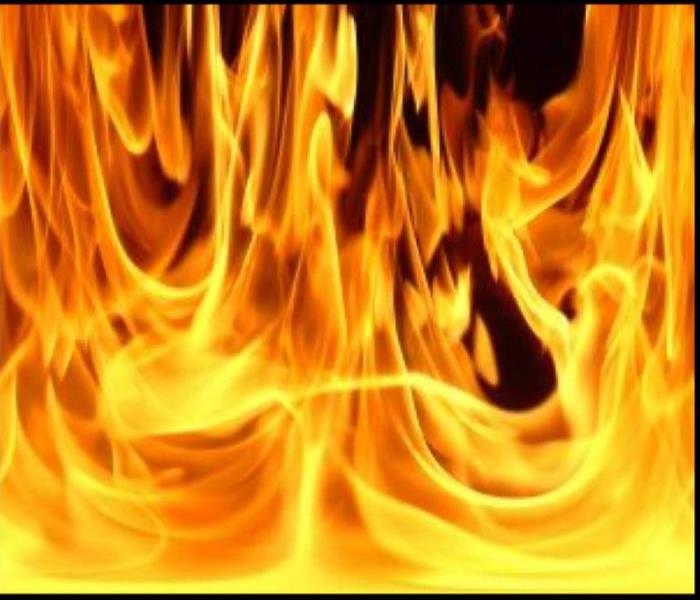 Over loaded circuits' are dangerous - no matter where you are
Over loaded circuits' are dangerous - no matter where you are
Overloaded circuits are one of the leading cause of fires in homes. It can be as simple as an overloaded outlet! There is too much energy which the conductor does not have the capacity to disperse. The energy build up converts to heat. The heat build up with the static from the electricity cause fire to ignite.
If a fire starts in your home due to an overloaded circuit do not try to handle the fire on your own as you can risk electrocution. Instead, call 911 and get yourself and your family to a safe place. Once the fire has been put out call your insurance company and a remediation company like us to help get your home back to pre loss condition.
We are always here to help in the event of a fire in your home or commercial space. We offer local support and expertise 24/7 to ensure you are taken care of! Give SERVPRO Cambridge/Belmont a call at 617- 864-7378.
Water Damage - We are here to help!
3/17/2022 (Permalink)
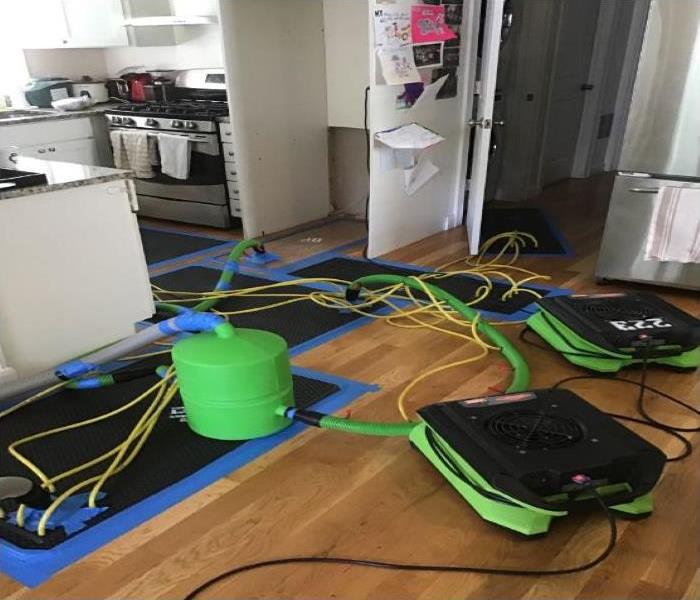 If you sustain water damage, please call SERVPRO of Cambridge/Belmont (617) 864-7378 to assist you.
If you sustain water damage, please call SERVPRO of Cambridge/Belmont (617) 864-7378 to assist you.
John & Sue Butler’s contractor had finally finished the renovations. They had been living with relatives until their new condominium was finished. The furniture and belongings were delivered and they were finally living in their dream home. They came home Sunday night after a weekend away and they noticed water dripping down from the ceiling. Their hardwood floors had standing water and were beginning to buckle. They discovered that their upstairs neighbor pipe broke causing the water to run down into their unit. They called SERVPRO of Cambridge/Belmont to assist them. The Butler’s explained that they had just moved in and didn’t want the life to be disrupted. The SERVPRO technician assessed the damages and came up with a plan that would not require any demolition. He discovered there were existing cavities he could install an Inject-I-Dry System that would dry out the floors & ceilings without any demolition or sanding. The technician monitored the drying progress and after one week, he determined that the floor and ceiling were dry and removed the equipment. The Butler’s were ecstatic!
What Will Spring Weather Bring? | SERVPRO® of Cambridge/Belmont
3/4/2022 (Permalink)
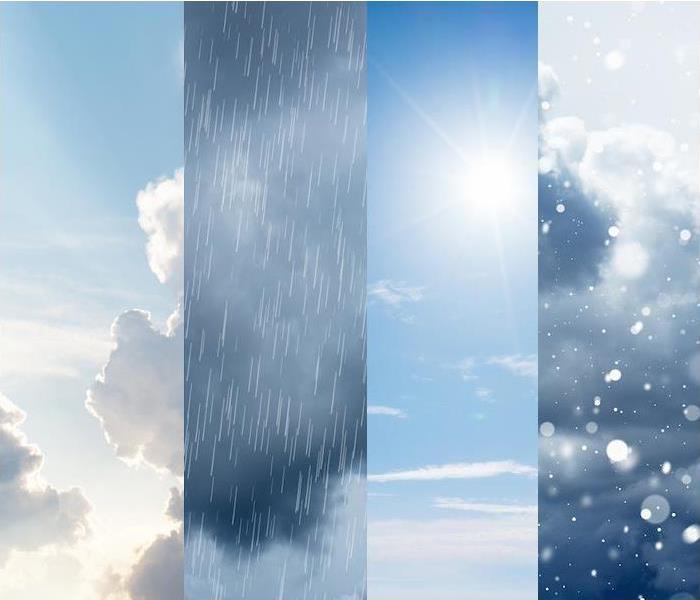 Extreme temperature changes can lead to the possibility of severe weather. SERVPRO of Cambridge/Belmont is here if you experience any damage.
Extreme temperature changes can lead to the possibility of severe weather. SERVPRO of Cambridge/Belmont is here if you experience any damage.
The United States comes in at a close second as one of the largest countries with only Russia and Canada being larger!
Because our country is so large, that means that seasonal weather can look a lot different depending on where you are. With our nation being so spread out, it can create different weather patterns for certain areas, which in turn creates different weather threats.
As the spring season is drawing near, it means that the cold and warm air masses will collide, causing weather hazards. With the official start of spring on March 20 quickly approaching, let’s take some time to review the weather:
Let’s get started on our first region, the Pacific Northwest. This region will experience heavy rains during the spring months, which can cause flooding or water damage. The higher elevations also might have to worry with flooding, but from melting snow or ice, which clearly can cause problems of its own.
Moving to the Upper Midwest and Northeast regions, these ares are still experiencing winter weather. In fact, this region is likely to still be dealing with snowstorms or blizzards until late spring or early summer. We’re intimately acquainted with this weather pattern! While the arrival of spring might bring a little more warmth, we usually don’t fully warm up until summer.
As we move on to the West Coast, this region is experiencing opposite of what we see here. On the West Coast, they may be faced with excessive heat waves. When temperatures get intensely high and the air remains dry, it puts the area at risk of wildfires and also endangers people.
The middle part of the United States, from Iowa down to Texas, has drier air, but it’s very windy! This region has to prepare for windstorms, derechos and wildfires. Part of the Midwest is also home to what’s known as “Tornado Alley,” where tornadoes are incredibly common.
Last but certainly not least, we have the Southeast region, which can experience severe weather hazards during the spring. Intense thunderstorms and even tornadoes are common in the South this time of year, and states along the coast also have to keep an eye out for early-season hurricanes.
So, as you can see, with the United States being so large and spread out, weather patterns can look extremely different. That’s why you must always stay prepared and aware about what is going on in your area!
If extreme weather leaves you with damage from water, fire or other elements, help is a click away. Contact SERVPRO for fast, expert recovery.
What SERVPRO Means by “Full Service” | SERVPRO® of Cambridge/Belmont
2/15/2022 (Permalink)
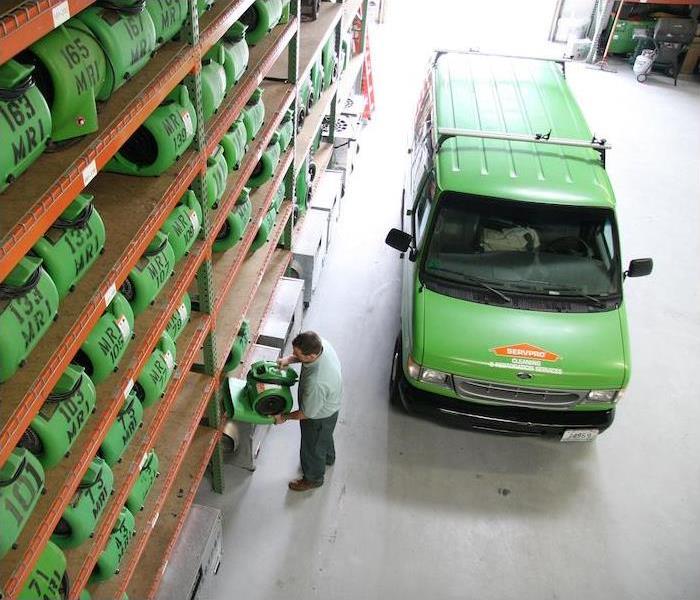 When you need cleanup and recovery of any kind, you can trust SERVPRO of Cambridge/Belmont to get the job done.
When you need cleanup and recovery of any kind, you can trust SERVPRO of Cambridge/Belmont to get the job done.
If you drive by a neighbor’s home and see carpets on the side of the house along with a green SERVPRO truck sitting in the driveway, it’s safe to assume that they had some kind of disaster happen to them.
We are well-known as being a cleaning company, but what we want people to understand is that we are actually a full-service company! So if you need cleaning, restoration or even reconstruction, you can rest assured that we will see you through all of it.
Let’s take a deeper look into what SERVPRO provides for home and business owners:
Water damage recovery. If you suffer from some type of water damage, you can bet that we will be there to help in no time. Water damage requires a quick cleanup, and we are available 24⁄7 so that we can provide that for you.
Fire damage recovery. There is a fire reported every 23 seconds here in the United States. As we’ve seen for ourselves, fires can do a lot of damage to a home or business, but that’s why we know to bring in big help!
Mold removal. Mold damage can creep up on you in no time, and sometimes without you even noticing! It can threaten the structure of your home, and it spreads quickly. That’s why you should leave that cleanup to the professionals.
Storm recovery. Whether you’ve been hit by a tornado or high winds, the damage weather can do to a home or business can be quite catastrophic! We are here and ready to help restore or even reconstruct your home or business following storm damage.
Commercial needs. While we are best known for residential services, we provide the same services (plus a few more) to business owners, too. We work to give your business a shiny look so that your customers and employees see that you care about them.
General cleaning. Sometimes, life can be hectic, and general cleaning can be difficult to keep up with. That’s why we provide these services, along with carpet, curtain and upholstery cleaning.
Specialty cleaning. Businesses sometimes need specialized services for things like biohazard cleanup or document restoration. No matter what it is, we know that if it can get dirty, we can get it clean.
Construction. There are times that a home or business is past the restoration process, and the only option left is reconstruction. And while we understand that is stressful, we will provide you with services to help you get through it, and make your home or business look just as good as before.
Add 24-hour service and an easy insurance process to all this, and the picture becomes clear—when you need cleanup and recovery of any kind, you can trust SERVPRO to get the job done.
Cold Weather Season - Always Ready
2/15/2022 (Permalink)
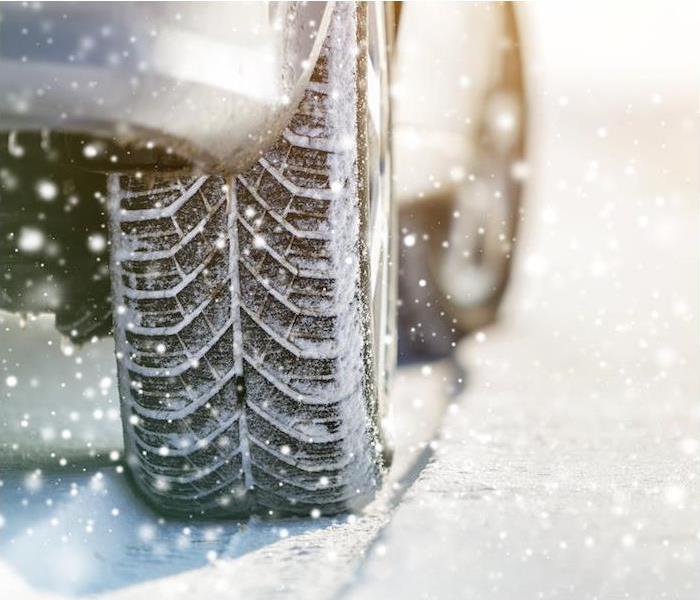 Let us help you get through the winter season!
Let us help you get through the winter season!
Get Cold Weather and Freeze Alert
Keep your heating systems operating
Keep your building and equipment warm. Heating systems are the lifeline of your business during cold conditions. If they fail, disaster could strike.
Immediate action required:
- All piping must be insulated. Install new and replace damaged insulation and don’t forget to examine your sprinkler system.
- Inspect all outside dampers for proper operation.
- Clear and protect all outside vents from ice and snow accumulation.
- Heat requires power. If generators are unavailable, make arrangements to obtain an electrical portable heating during outages.
Safeguard business equipment during power outages
Voltage surge protection is necessary at all times – especially during cold, freezing conditions. Severe weather can cause power loss and downed wires, disrupting your business’ power supply. When electricity is restored, the sudden surge of power can literally destroy the modem, high-tech equipment
Your business relies on.
Immediate action required:
- Unplug it. Anticipate voltage surges during severe weather. The best solution is equipment isolation – turn it off and unplug it. If you need to keep equipment running, installing surge protectors can provide protection.
- Inspect building. Close all windows, doors and outside dampers. Schedule regular building checks during storms and cold weather. Arrange for snow and ice removal, including the roof.
- Who’s responsible? Ensure accountability by designating personal responsibility for loss prevention. Business and building owners must work together with facilities and maintenance people.
- Provide emergency telephone numbers. Collect and distribute a list of emergency phone numbers and contacts, such as snow removal, heating system Repair Company, utility company, and the weather bureau.
- Anticipate flooding. Severe and cold weather can cause flooding. Move susceptible equipment or stock to an alternate location, where water cannot reach it.
- Always have cold-weather gear on hand. – Have plenty of gloves, hats, emergency blankets and flashlights available.
If you have water or fire issues, please call SERVPRO of Cambridge/Belmont (617) 864-7378
What Happens Next After Water Damage | SERVPRO® of Cambridge/Belmont
2/14/2022 (Permalink)
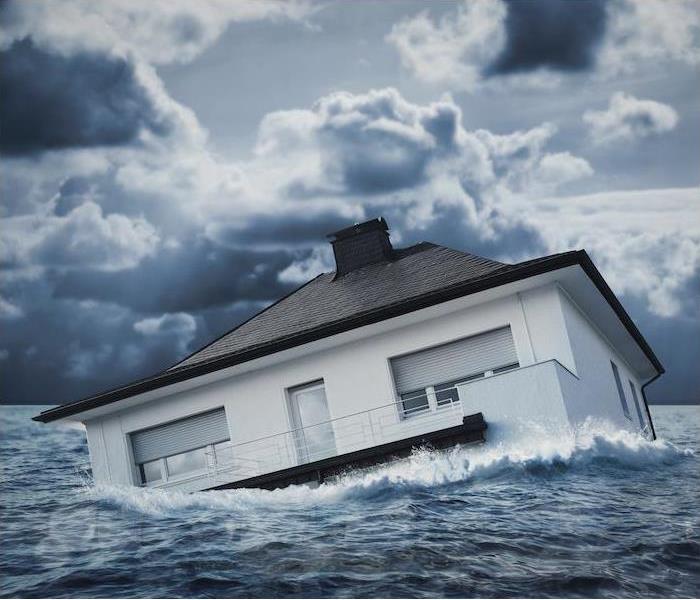 When water damage strikes, make the call to SERVPRO of Cambridge/Belmont for A-to-Z cleanup and restoration.
When water damage strikes, make the call to SERVPRO of Cambridge/Belmont for A-to-Z cleanup and restoration.
Each day, there are 14,000 Americans who have the unfortunate experience of water damage. That’s a lot of people in a day’s time, but when you have people like SERVPRO on your side, you can stay calm if disaster strikes.
When you call your local SERVPRO team following water damage, this is what you can expect:
Emergency Contact. When you reach out to our team, we’ll ask a handful of questions to get a good understanding of the emergency and damage. Then we’ll schedule an appointment to visit your house and assess the damage in person.
Water Damage Inspection and Assessment. When our technicians arrive on site, they immediately get to the main water source to shut it off, if the leak or source of damage hasn’t curtailed. They will inspect the inside and outside of your home and note any hazards along the way.
Water Removal. This stage is about saying goodbye to standing water. The longer that water lingers, the more damage occurs. We’ll use powerful pumps and extraction tools to rid your home of hundreds and even thousands of gallons of water, which speeds up the drying process.
Damaged Material Removal. We will hopefully be able to restore many of the items in your house, but some items will be rendered unusable after water damage. We’ll quickly remove those items to free up space and air for other items to dry out.
Cleaning, Sanitizing and Deodorizing. Water can and will be absorbed by many things in your home, leaving behind odors and toxins. That’s why we use some of the most up-to-date cleaning agents that will not only clean your property, but also help sanitize and deodorize your home.
Drying. While to the naked eye it may seem that your home is dry, the reality is it’s probably not. We have specialized equipment to help monitor the moisture levels in your home. If excess moisture is still present, we’ll use tools to restore a normal moisture balance and limit mold growth.
Monitoring. Even though it’s a waiting game at this point, we never lose communication with you. We will call and also stop by regularly to confirm that everything is going according to plan.
Repairs and Construction. Now that your home is dried out, you can begin to see a light at the end of the tunnel. Repair of physical damage is up next. We can do any minor or major repair needed in order to get your home back in good working order.
If water damage impacts your property, call SERVPRO for complete cleanup and restoration. We’ll make sure your property is back to normal and “Like it never even happened.”
The Fire Tetrahedron & Why It’s Important | SERVPRO® of Cambridge/Belmont
1/17/2022 (Permalink)
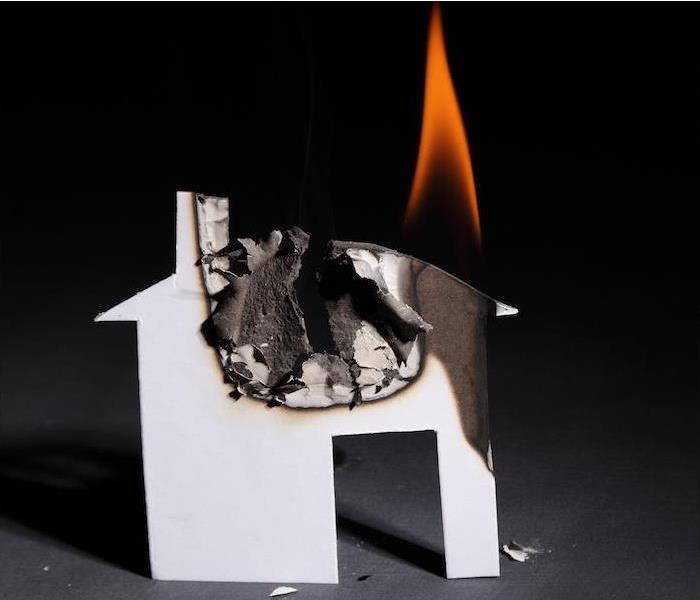 If your home or business has any damage, SERVPRO of Cambridge/Belmont is ready around the clock to help you recover.
If your home or business has any damage, SERVPRO of Cambridge/Belmont is ready around the clock to help you recover.
You might have read that title and wondered why on earth we’re talking about a geometric term, the tetrahedron.
Well, we’re not actually talking about geometry in today’s blog. We are actually going to discuss the fire tetrahedron.
If you think back on your childhood education, you may remember that a tetrahedron is a four-faced shape. That’s the connection, because there are essentially four “faces” to fire, or four things it can’t live without.
The 4 Things a Fire Needs to LiveFuel. Adding “fuel to the fire” is a saying because in order for a fire to live or grow is has to have a fueling agent. Things like wood, plastics or many other common things are potential fuel sources for both planned fires and accidental ones.
Heat. In order for a fire to start, you have to have enough heat to make it burn. Different types of fires will require a different amount of heat. Some objects will simply melt when they hit a certain temperature, while others will combust, which can be a major danger.
Oxygen. Humans require oxygen to live, and so do fires. Oxygen feeds a fire, causing it to grow and also generate products of combustion.
Chemical Chain Reaction. A chain reaction is something that perpetuates a fire so long as it is undisturbed.
The 4 Ways to Stop a FireCool it. The point of dousing a fire with water is to cool it to a point that combustion is no longer possible. By cooling your burning material, you are cooling it to a thermal balance.
Smother it. You may remember another common childhood lesson—“stop, drop and roll.” We were taught to take those actions if our clothing caught on fire. There’s a reason for that. When you drop to the ground, covering your clothing, it cuts off the oxygen supply to the fire, which smothers it.
Starve it. This works similarly to smothering the fire, except instead of removing oxygen, you’re removing the fuel source.
Interrupt the chain reaction. There are chemical agents, such as halon, that can be very effective in putting out a fire. However, this chemical has an elevated potential for ozone depletion, meaning it is harmful to the environment, and has been banned.
If the fire tetrahedron makes a wreck of your home or business, we’re ready around the clock to help you recover. Contact SERVPRO anytime for fast, thorough cleanup and recovery after a fire.
Put a Plan Together for Winter Storms and Extreme Weather | SERVPRO® of Cambridge/Belmont
11/22/2021 (Permalink)
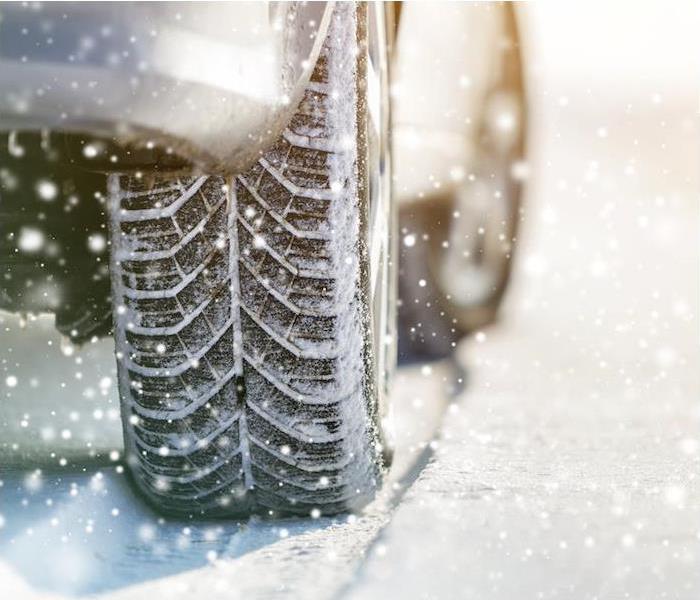 If winter weather should bring damage to your home or business, contact SERVPRO of Cambridge/Belmont for fast, restorative solutions.
If winter weather should bring damage to your home or business, contact SERVPRO of Cambridge/Belmont for fast, restorative solutions.
The latter part of the year is busy. Thanksgiving and Christmas holidays are approaching, and you may simply look forward to the new year and a fresh start!
The one thing we want to remind you of is the importance of safety during potentially hazardous winter weather. Cambridge and Belmont have cold winters with abundant snow. It’s best to be prepared before the weather arrives.
Let’s take a look at a few items you need to keep in mind as winter storms are on the horizon.
Keep the Family SafeFamily safety tops the list, and that’s no surprise. Ensure your family has an emergency action plan so you can communicate and stay in touch during a winter weather emergency. This will reduce fear and promote action in the face of a winter weather emergency.
Step one is creating an emergency action plan, and step two is making sure your vehicle is winterized prior to cold weather arriving. Make sure all fluid levels are topped off and proper anti-icing precautions are taken. Keep an ice scrapper in the car for frost and snow, and put extra clothes and blankets in the truck in case you get stranded and have to wait for help in your car.
Keep Your Home SafeFrozen pipes are a serious risk in the winter for homeowners. Knowing how to prevent them can save money and a considerable amount of anxiety!
Make sure all sources of heat are properly maintained before the winter. This includes furnaces, kerosene and other portable heaters.
If you use wood or coal, make sure your chimneys are unobstructed and free of creosote and ash. Make sure to have an adequate supply of fuel to see you through an extended winter storm. Be sure to follow all safety procedures when using kerosene, wood or coal.
If you feel particularly industrious, consider installing storm windows or coating windows with extra insulation from the inside to increase the “R” value and keep more of the heat on the inside.
Keep Your Pets SafeDomesticated animals should be brought inside during the winter months. Very few breeds of animals can tolerate winter weather, much less extreme winter weather and storms.
Ensure your pets have a place they can be comfortable during extended cold weather. If you own livestock or horses, make sure they have a shelter from the elements and a steady supply of food and unfrozen water.
Watch for Melts and FloodingMelting snow and ice can produce dangerous floods, putting people, homes and pets in danger. Always stay informed using local emergency alerts, and be cautious as the weather warms and ice and snow begin to melt.
If winter weather should bring damage or flooding to your home or business, contact SERVPRO for fast, restorative solutions.
Water Damage - Trust the SERVPRO Process
11/16/2021 (Permalink)
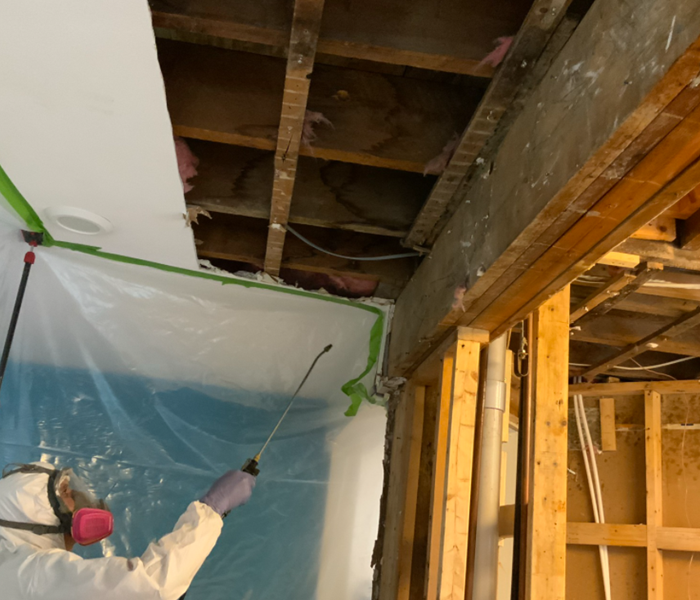 Trust us to get the job done right the first time!
Trust us to get the job done right the first time!
Every situation is different and may require a unique solution. However, the general process is always the same!
Step 1: Emergency Contact
We are always available for you in the event of a water emergency. When you call in, no matter the day or time someone will return your call. The main goal during the initial contact is to understand what is going on so we can dispatch someone to your home or business as soon as possible.
Step 2: Inspection and Assess Damage
When we arrive on site our goal is to know what caused the damage if it is not apparent. This way we can have the issue addressed. The damage may require a third party to be involved (ie. plumber). You may contact your own contractor we are also happy to provide a few recommendations. Once we know what has caused the damage we can continue move on to the next step!
Step 3: Water Removal/ Water Extraction
A licensed technician will use specialized water extraction equipment to remove water from your home. Removal and extraction may result in removal of flooring depending on the type of water damage (ie. sewage back up). Our technicians will document and removal items that cannot be restored.
Step 4: Drying and Dehumidification
We will place machines in your home or business to ensure the space is dry and prevent the possible growth of mold. The average run time for drying machines is between 3-5 days. Of course, it may be more or less depending on the extent of the water damage to your property. It is important that you not unplug or move the equipment from where they were placed by the technician to ensure the space dries properly.
Step 5: Cleaning and Repair
Our technicians will clean the affected area and neighboring areas with anti-microbial cleaning products to prevent the possible growth of mold. We ensure we clean every crack and crevice!
Step 6: Restoration
We have the capacity to put your home back to pre loss condition with our reconstruction team. When you are ready call our office to discuss with our Reconstruction Manager.
In all, the first few steps my take place upon the first to second visit. The remaining steps will depend on the extent of the damage. In situations where we are working with your insurance carrier we will happily communicate with your adjuster directly to keep the work moving smoothly so restoration can begin as soon as possible. For questions please do not hesitate to call our office at (617) 864-7378.
Be Aware of Storms | SERVPRO® of Cambridge/Belmont
11/15/2021 (Permalink)
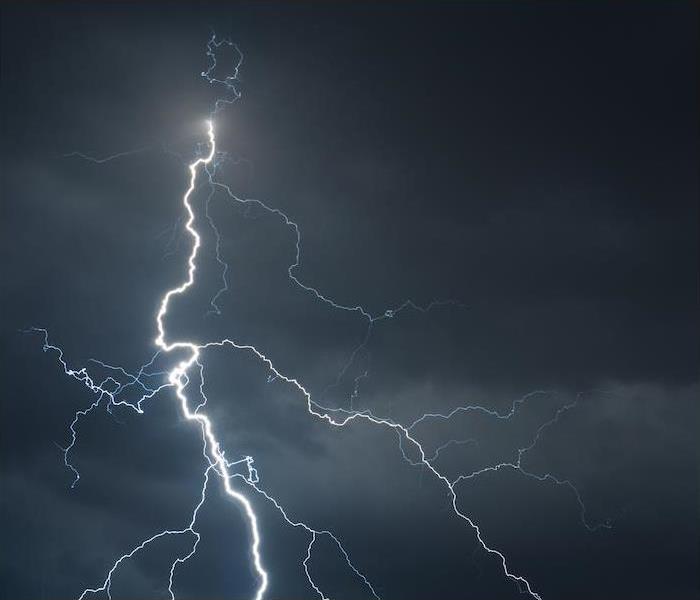 If storms cause damage to your home or business, SERVPRO of Cambridge/Belmont is on the line, ready to make things right.
If storms cause damage to your home or business, SERVPRO of Cambridge/Belmont is on the line, ready to make things right.
Stay Alert
Storms may be more common in summer but that doesn’t mean you shouldn’t take them less seriously. Storm alerts are issued for a reason so take notice.
Consider canceling or postponing outdoor events if bad weather is in the forecast.
Local meteorologists try to provide the most accurate forecasts possible. Get yourself an NOAA Weather radio if you think a power outage could happen.
Plan to stay home and off the roads if storms are in the forecast.
Consider tree maintenance to remove dead or low hanging limbs that could be susceptible to strong winds. Also, store outdoor lawn furniture in a secure location.
Unfortunately, with all of these precautions, people still die each year from storm-related weather. Don’t take storms for granted.
If lightning accompanies the rain, stay indoors for at least 30 minutes after the last thunder you hear. Lightning can strike 10 miles away from the storm.
Stay away from windows, and don’t shower or bathe during a thunderstorm. Consider unplugging sensitive electronics.
Make sure you have an emergency kit prepared, and know the evacuation route for your area.
If flooding materializes, stay on high ground and avoid flood water if possible.
Don’t attempt to drive or walk through moving water, as it can easily knock a person off their feet. Flood waters can also conceal hidden road damage, and that could be catastrophic for you and people in your car.
There are any number of dangers that can come into play in a thunderstorm, and it’s always best to be cautious and put things on hold until storms safely pass. If storms cause damage to your home or business, SERVPRO is on the line, ready to make things right again.
Here’s How to Find a Restoration Provider You Can Trust | SERVPRO® of Cambridge/Belmont
11/13/2021 (Permalink)
 You can rest easy knowing you’ve got the trusted leader in the restoration industry on the other end of the line, SERVPRO of Cambridge/Belmont.
You can rest easy knowing you’ve got the trusted leader in the restoration industry on the other end of the line, SERVPRO of Cambridge/Belmont.
When an emergency strikes, it causes chaos. It doesn’t make any difference how the disaster occurred, all that matters is you find a local reputable restoration company that can restore your property to pre-disaster condition.
When that time comes, you’re going to be in a situation where you have to make a decision quickly, as you decide what company is going to get your business and handle your restoration.
Keep these points in mind when evaluating a partnership with a restoration company:
Are They Legit?
Keep in mind that not everyone who shows up after a disaster has the best of intentions. Unfortunately, major storms and disaster situations bring scammers to your area who try to rip you off for money when you’re most at risk, deliver nothing and then disappear.
We have been part of the national landscape for over 50 years. You don’t get that kind of longevity without satisfied customers.
National brands like the PGA Tour trust us with their disaster needs. We provide high-quality service to maintain their affiliated facilities.
Can They Act Fast?
When disaster strikes, there’s no time to waste. You have got to reach someone right away so resources can be mobilized and your restoration can begin. Even a small delay can lead to more damage and costs.
That’s why we’re on call 24 hours a day to respond to your emergency situation.
Does They Have Access to National Resources?
SERVPRO of Cambridge/Belmont is locally owned and operated, which means there’s always a team right here in Cambridge ready to act. But if major storms come and a surge of activity is at hand, your local franchise is supported by the full, coast-to-coast network of SERVPRO franchises.
This means when trouble hits, we’ll be sending in a surge of help and powerful tools to make sure every local homeowner in need gets the service and attention they deserve.
When you call SERVPRO, you can rest easy knowing you’ve got the trusted leader in the restoration industry on the other end of the line. When disaster hits home, contact us to get our local experts and nationwide network on your side.
The Leading Causes of House Fires & How to Prevent Them | SERVPRO® of Cambridge/Belmont
11/8/2021 (Permalink)
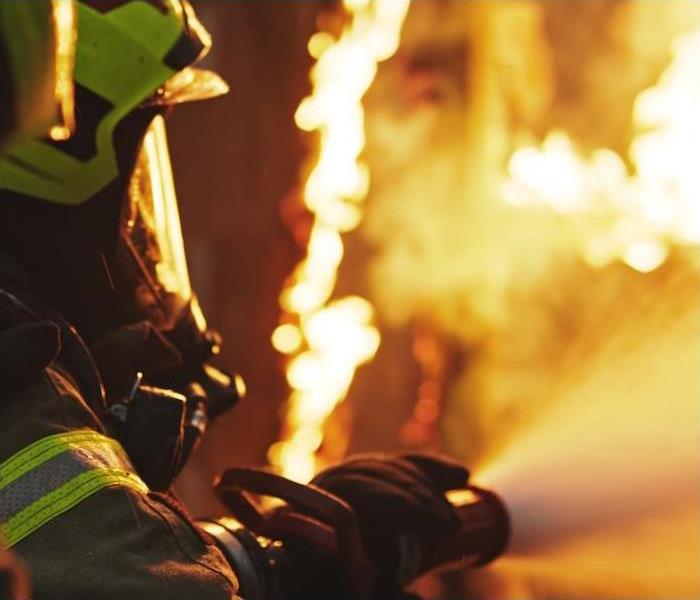 Regardless of the cause, SERVPRO of Cambridge/Belmont are here for you if your home is affected by fire.
Regardless of the cause, SERVPRO of Cambridge/Belmont are here for you if your home is affected by fire.
No homeowner wants to face a home fire. Fires cause devastation and spread unpredictably. It’s best to be prepared and have a plan in the event a fire occurs.
But despite all the technological advancements and advocacy campaigns, home fires still account for a quarter of all reported home fires.
Prevention is the key, so let’s look at the top causes of these house fires and see if we can get that number down by learning how to prevent them:
Cooking. This is the leading cause of home fires, by far! Almost half of all house fires start in the kitchen, and the main reason is unattended cooking. Want to reduce your chance of a home fire? Don’t leave the kitchen while you’re cooking.
Heating equipment. Nationally, 14% of all home fires are started by heating equipment. It’s a combination of things that cause this, including equipment malfunctions and accidents, but the biggest culprit is space heaters and having flammable items too close.
Electrical fires. These fires are generally caused by higher electrical demand in the home due to the increased amount of electronics. Add to that faulty or overloaded circuits in older homes, and these are the factors that contribute to electrical fires at home. Using ungrounded plugs or even placing high-wattage bulbs into low-wattage sockets can also start these fires.
Intentional fires. Arson is still an issue as well. Over 28,000 home fires are intentionally set each year. We use the word intentional because the fire was started with the purpose of burning the structure instead of an accident causing the fire.
Smoking materials. Way too many people still smoke and fall asleep. While smoking materials account for only 5% of all house fires, they are the leading cause of civilian fire deaths. These often start because cigarettes are left burning as people fall asleep and that makes the victim more susceptible.
Regardless of the cause, SERVPRO is here for you if your home is affected by fire. Contact your local team today to see how we can help.
Cleaning and Restoration Solutions for Businesses | SERVPRO® of Cambridge/Belmont
11/8/2021 (Permalink)
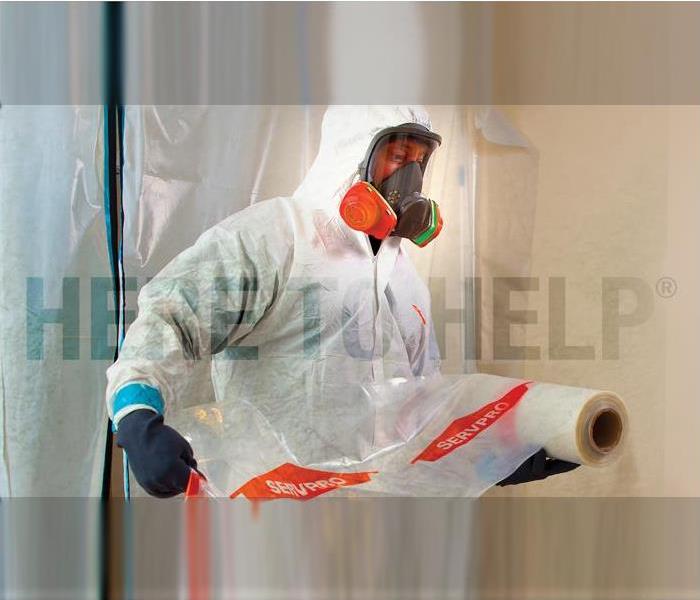 Are you ready to have the cleanest business in town? Contact SERVPRO of Cambridge/Belmont for all your cleaning needs.
Are you ready to have the cleanest business in town? Contact SERVPRO of Cambridge/Belmont for all your cleaning needs.
SERVPRO of Cambridge/Belmont has been providing disaster recovery services for our residents for many years. Did you know we also provide restoration from storm damage, fire damage, flood damage and mold remediation for business owners?
That’s right! Besides providing these services for homeowners, we also provide them to commercial enterprises. And the services don’t end there—we also provide commercial cleans.
Many commercial businesses usually have a higher level of cleaning requirements because customers and suppliers use their facilities as well as their employees. Knowing your business has been cleaned at the highest level can give you peace of mind knowing you have provided a clean and sanitized work environment for all that use it.
SERVPRO Custom Business Solutions
Satisfying your customers is your business—ours is making your business sparkle for them. We provide professional cleaning and sanitization services for all types of businesses:
Community grocers, as well as national chain stores, strip malls and other business locations. Facility cleanliness is our mission, whether you’re the mom-and-pop store on the corner or a mega-chain big-box retailer. We provide a superior level of cleanliness to all clients.
Academic institutions including preschool through universities and everything in between. Faculty and student cleaning is inadequate, according to a recent study. It appears that only half of the bacteria is cleared from desks. The number get even worse if items aren’t cleaned daily.
Any healthcare facility, including hospitals, assisted living centers and even hospice centers. Cleanliness in these institutions is critical and must be done properly and often. We can make sure your medical facilities are cleaned above CDC standards.
Bowling alleys, night clubs, recreational facilities and other entertainment venues. Recreational facilities require a high level of cleaning due to the number of people that utilize these facilities. We can make your venue sparkle.
Food service facilities, warehouses and manufacturing facilities. Cleanliness in these facilities is crucial for the safety of their customers. Let us handle the cleaning so you can focus on the food.
Office buildings to high rises, commercial complexes to property management companies. SERVPRO of Buffalo/Tonawanda provides the best environmental care and sanitation service for their clients.
Did you know workplaces lose an outrageous $260 billion per year due to the lost productivity that comes from sick days and lost productivity? Let SERVPRO help you turn the tide of workplace germs and ensure a healthy, clean environment for your teams and customers.
When you’re ready to have the cleanest business in town, we’re ready to help. Contact your local SERVPRO to get the pros working on the cleaning so you can work on the work.
With Fall Weather Comes New Fire Dangers | SERVPRO® of Cambridge/Belmont
11/8/2021 (Permalink)
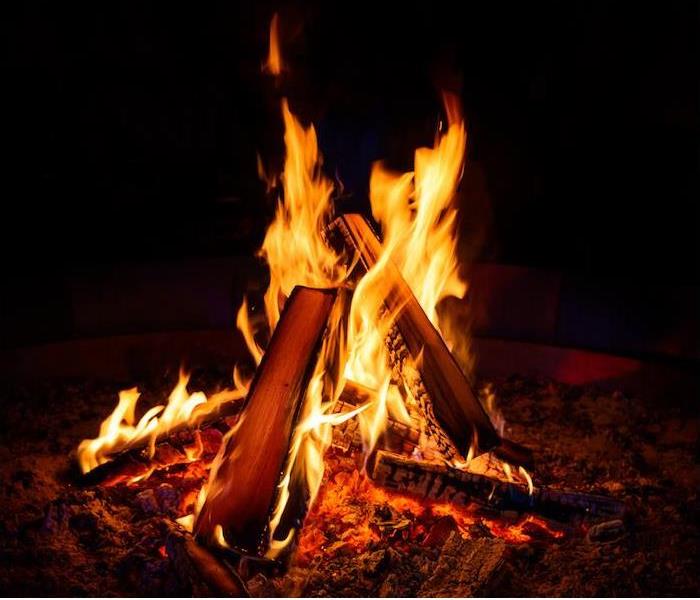 Be mindful about fall fire safety. Always remember that SERVPRO of Cambridge/Belmont is the trusted leader in the restoration industry.
Be mindful about fall fire safety. Always remember that SERVPRO of Cambridge/Belmont is the trusted leader in the restoration industry.
One nice aspect of living in Cambridge is that we get to experience all four seasons. And fall is quickly approaching! The official start of the season is Sept. 22 this year.
Fall is a favorite season for campers, leaf-peepers and of course trick-or-treaters. There are lots of fun activities to do during autumn.
But along with the fun comes a few potential fire hazards. So grab a pumpkin spice latte, and let’s look over fire safety tips for the season.
Campfires and Fire Pits
This is the season for campfires and fire pits. But when you’re indulging, be sure to do so safely.
Knowing where and how to build a campfire is as important as knowing how to put it out. Start small with twigs and tinder and then ad larger stick and wood.
Use an extended lighter to start the fire if you have one. If not, consider buying one. Accelerants like kerosene or lighter fluid should be avoided.
Build your fire away from structures and other flammable items. And finally, extinguish your fire completely before leaving your campfire or fire pit.
Slowly douse it with a bucket of water to make sure no embers remain. A slight breeze can restart an ember and possibly cause a fire.
Fall Burning of Yard Debris
This time of year, yards are becoming full of dried leaves and many people like to burn leaves as a method of disposal. Make sure you check with Cambridge Fire Department to obtain a burn permit prior to burning.
Never burn household trash or debris can that can have adverse effects like explosions or the release of toxic fumes.
Safety With Space Heaters
Portable space heaters are one of the most frequent causes of home fires in fall and winter. Following the proper safety precautions with space heaters is important for life and property safety.
Always keep your heater away from flammable objects. Make sure your heater has an automatic shutoff in case the heater turns over or overheats.
Plug any space heater directly into the outlet and avoid extension cords if possible.
If a fire hazard should turn from potential to reality in your home, remember the trusted leader in the recovery industry and contact SERVPRO to get your property fully restored right down to the smell of smoke.
Where to Look for Water Leaks in Your Home | SERVPRO® of Cambridge/Belmont
11/8/2021 (Permalink)
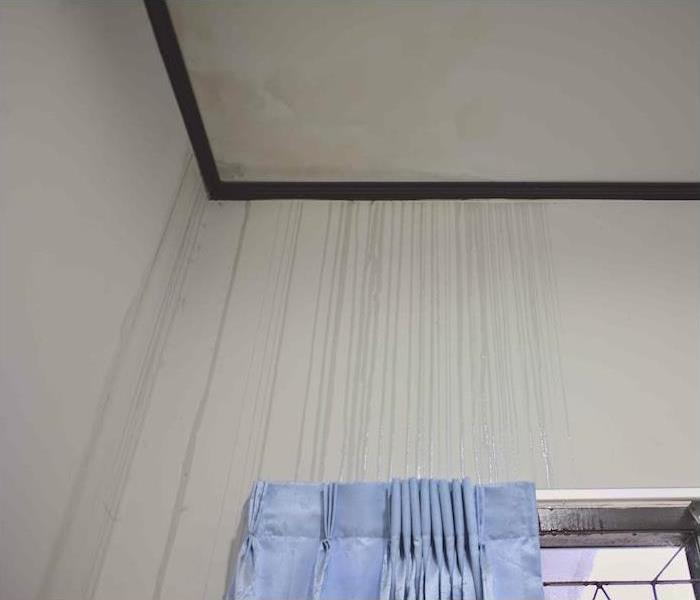 water leak can turn into a big problem. Contact the SERVPRO of Cambridge/Belmont team if you are dealing with any water damage.
water leak can turn into a big problem. Contact the SERVPRO of Cambridge/Belmont team if you are dealing with any water damage.
Water damage isn’t something anyone really wants to deal with. However, we never really get notice that a disaster is about to happen. Water is always looking for somewhere to go, and it seeks the path of least resistance.
Understanding your home water system can go a long way to preventing water damage. Practice preventive maintenance with an emphasis on the most common sources for water damage:
Toilet leaks. Whether it’s a broken wax seal or a clogged toilet, these have to be repaired quickly before more damage results. The tank has many moving parts, and these can wear out over time. Proper fixture maintenance in the bathroom can save you time and aggravation in the future.
Ice maker supply line. Ice maker supply lines are common sources of water leaks. If the line is damaged, replace it. If it’s loose, secure it.
Foundation cracks. Foundation cracks are serious and should be repaired by a professional. They can allow water to seep into the basement, and if your basement is finished living space, the damage can add up quickly.
Poor ventilation. Proper attic ventilation is important because it removes moisture from the attic that could condensate, drip and cause mold growth.
Roots in drain lines. Older homes have more problems with roots in the drain lines due to the types of materials that were used in construction. Septic systems utilize field lines, and they tend to attract tree roots due to the moisture in the ground.
Common drain issues. Homeowners face many issues with drain systems, including slow drains, recurring clogs, a foul odor or flooding from a backup.
Staying current on your home maintenance is the best way to avoid a potential catastrophe!
If a water leak erupts into a big problem at home, you’ve got the best team in the business on your side. Contact SERVPRO today so we can get started.
Avoiding Water Damage in Your Home
11/8/2021 (Permalink)
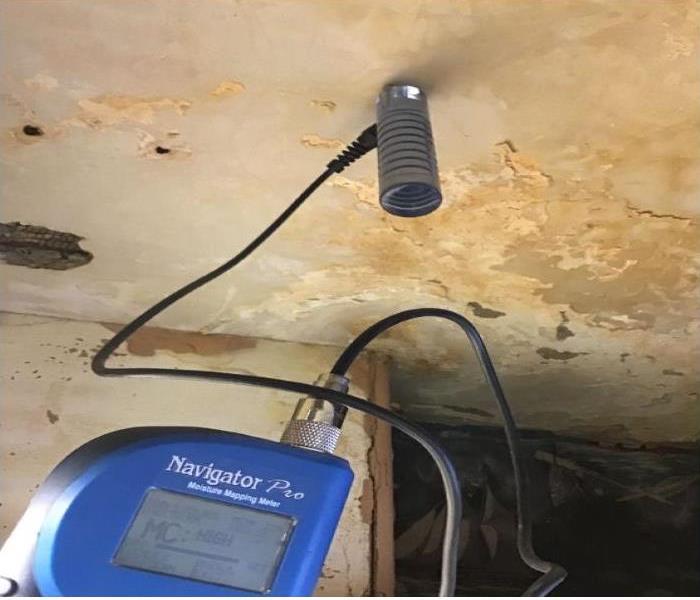 Get in touch if you are in need of water remediation
Get in touch if you are in need of water remediation
When it comes to keeping your home structurally sound and well-maintained, watching out for water damage is one of the best things you can do. Not only can water damage cause cosmetic problems and lead to unsightly spots throughout the home, but it can also significantly damage structures when it is allowed to fester.
Fortunately, homeowners can easily perform their own routine checks to look for water damage throughout the house, which can help them catch issues early and avoid having to make costly claims on their homeowners insurance.
Tips for Doing an At-Home Water Damage Inspection
Inspect your walls and ceilings. Drywall and paint can quickly show water damage, making walls and ceilings one of the best and easiest places to begin your search. Any discoloration, particularly soft spots or peeling areas of paint, might indicate that there is water damage present. It is also wise to check up on your external window and door frames for weather-related leakage.
Don’t forget to look down. It is not uncommon to find water damage that shows itself in the floor, since that is the lowest spot in every room. Water can pool and begin to saturate the subfloor, not causing surface issues but instead showing up with warped floorboards, buckling or a general smell of mildew, which should always be checked out.
Inspect your roof. It is important to keep your roof in good shape to make sure it is keeping out all the elements it can when it rains. A pair of binoculars can give you valuable insights into the quality of your roof and help you spot any loose shingles or peeling places. Additionally, it is smart to check that your gutters are doing their job the next time it rains to prevent water from building up around your foundation.
Pay close attention to the basement. Though basements have a reputation for being damp, if you have moisture problems under your home it can be a serious issue. Look for signs of water running down foundation walls or musty odors, which might indicate there is too much moisture present that should be addressed.
If you have water damage anywhere in your home, we are here to help. You can contact us at any hour to learn more about our services or to report damages. Get in touch today to speak with a water damage restoration expert.
Winterize Your Shed
9/30/2021 (Permalink)
 We care!
We care!
Everything you need to know about how to winterize your shed! There are few things you need to do in the fall to help make your shed ready for a cold harsh winter.
Thorough Cleaning
Your shed becomes a place to store everything, from pots, lawn mower, fertilizer, mulch, garden hose to gardening tools, and many other things. Before you decide to close your shed for winter with all your summer stuff it is a great idea to do a very thorough cleaning before closing it for good!
- Remove all the things outdoors to sort out what you need and what has to be disposed
- Sweep the floor and remove any cobwebs.
- Clean the gardening tools properly and store them in plastic bags, so that you have them ready for spring.
- Empty out the contents of the garden hose and then roll it to store away properly to prevent it from cracking or getting damaged in extreme temperatures.
- Remove oil and gas from the leaf blower, lawn mower and trimmer
- Place potting soil, fertilizer, mulch, and grass seed in individual plastic bags and secure them.
Repair the Interior of the Shed
When you empty out the shed and after you finish cleaning the floor and walls, it is time to inspect the interiors of the shed and make repairs to holes or damages that have been done. Make sure to check the floor, ceiling and walls carefully. If you notice holes and crevices, use caulk to fill them in. You will preventing pests from getting inside your shed in winter.
Give the Roof Special Treatment
Remember the roof of your shed is what protects everything inside, do not neglect to do inspections on this very important part.
- If the shed has metal roof, there will be areas that are rusted. Clean the roof thoroughly and rustproof it.
- Replace loose shingles and replace any that is broken.
- If you have a wooden roof, look for wood warping, boring insects, and cracked panels.
- Replace rusted nails and reinforce loose panels properly.
- Trim overhanging branches from trees, as they can damage your garden shed once they get heavy with ice and snow.
Repair the Exterior
Check the exterior of your shed carefully. Look for holes in the siding and make sure they are filled Use these tips to winterize your backyard shed. It may sound like a lot of work, but if you plan on doing a little bit every day, you should have your garden shed ready for winter within no time. Winterizing your shed will boost its longevity and you will not have to worry about repairs when spring arrives.
If you need cleaned because of bugs or animals in the spring call SERVPRO of Cambridge/Belmont! Call us at 617-864-7378.
Know what To Do If A Storm Catches You Off Guard
9/8/2021 (Permalink)
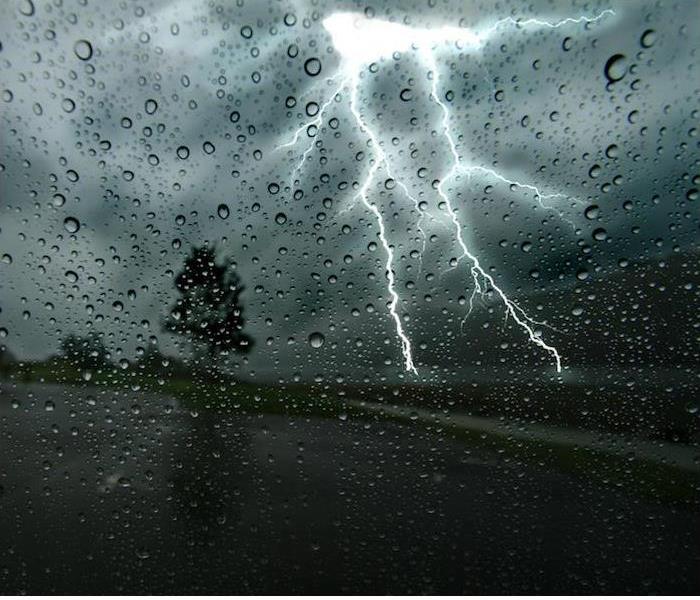 We can help you during your time of need
We can help you during your time of need
When the sky is clear and the weather is warm, it seems silly to think about thunderstorms ruining the fun—but unfortunately, this happens quite often on hot, humid days, as that creates the ideal condition for a sudden storm to form.
When storms catch people off-guard, they are often extra dangerous because people are not sure of what to do. With these tips, you can make sure you are prepared for a storm anywhere.
Make Sure You Are Prepared for a Storm Anywhere
Know your options for shelter. When you hear that a storm is a possibility and you are somewhere you can wait out the threat, this would be the ideal thing to do. That being said, when storms come up suddenly, this will not always be an option. You can set up shelter in your vehicle with the proper guidelines in mind, enabling you to wait out the storm anywhere you are.
Practice electrical safety. Claps of thunder are caused by lightning strikes, so any thunderstorm has the potential to cause lightning damage. If you are sheltering in a building, unplugging your electronics can help prevent damage from a power surge in case lightning strikes the building. Surge protectors are also a smart thing to invest in, both for your home and your office, in case you are not around when a storm starts.
Avoid direct contact with concrete. While concrete structures do have sturdiness going for them, they also pose risks when it comes to lightning strikes due to their metal framework. When lightning strikes a concrete building, the electricity can transfer from the metal and through the concrete, so be careful to not sit or lean against any concrete surfaces during a storm.
Stay indoors for at least 30 minutes. If you are interrupted by a thunderstorm, you will likely want to get back to your summer fun as soon as you can, but it is important to give yourself ample time in your shelter spot. Lightning can travel nearly 30 miles from the center of a storm cell, so experts recommend waiting at least 30 minutes before heading back outside.
If your home sustains damage due to a storm, you can count on us to help. Contact us at any hour to learn more about our storm restoration process.
Precautions to Take to Keep Your Home Safe From Wildfires | SERVPRO® of Cambridge/Belmont
9/6/2021 (Permalink)
 If your home is damaged by fire or any other reason, SERVPRO of Cambridge/Belmont is ready and able to repair any damage.
If your home is damaged by fire or any other reason, SERVPRO of Cambridge/Belmont is ready and able to repair any damage.
While flooding is a major concern in the greater Boston area, there is also a risk of wildfire. While the risk may be lower in Massachusetts than in other parts of the country, it is still a risk, and wildfires by their very nature can cause great damage.
There are a number of steps you can take in advance to minimize the risk of a wildfire affecting your home and property. First and foremost, it’s important to simply be more careful when it comes to fire hazards.
But defensible space is another important protocol you can implement.
Create a Barrier of Protection Around Your Home
Creating a fire break around your home is recommended by most communities and its law in a few states. State and federal agencies have coined the term “defensible space.”
This essentially creates a buffer zone around your house that removes most, if not all, of the fuel available for a wildfire. Things like dead trees, broken-off tree limbs and gutters full of debris are all examples of the fuel that makes wildfires extra dangerous around a home.
Defensible space involves removing combustibles and incorporating nonflammable elements in landscaping, which creates a barrier around your home from the flames, embers or even heat from a wildfire. This is the best way to slow down or stop a wildfire.
States like California require defensible space by law and all homeowners must comply. In Massachusetts, it’s simply recommended.
The Rising Number of Wildfires
While California is a hot spot for wildfires, they happen in other parts of the country as well. Last year, we experienced over 59,000 wildfires.
Of the 59,000 wildfires, over 10,000 occurred in California! That still leaves each state in the union an average of 1,000 wildfires per month. Here in Massachusetts, we had 1,189 wildfires in 2020.
Creating defensible space is something tangible we can do in advance a wildfire, so it’s a great place to begin when it comes to protecting your home.
If your home is damaged by fire of any sort, wild or not, SERVPRO is ready and able to repair the damage caused. Get in touch today to get the pros on your team.
When Disaster Strikes, Choose SERVPRO | SERVPRO® of Cambridge/Belmont
9/1/2021 (Permalink)
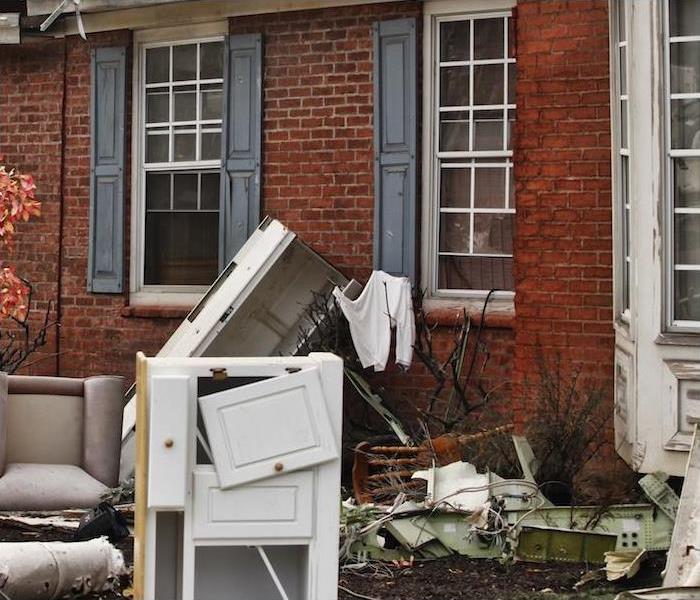 When you are dealing with any damage, immediate action is crucial. SERVPRO of Cambridge/Belmont is your local restoration expert.
When you are dealing with any damage, immediate action is crucial. SERVPRO of Cambridge/Belmont is your local restoration expert.
Homeowners, business owners and property managers, it’s your job to make sure operations run smoothly. Keeping morale high and the family happy is a priority.
When something like a disaster strikes, the status quo is upset! All of those responsibilities take a back seat, and you now have a new focus. You may have never managed a crisis before—and that’s why we’re here.
Managing and handling a crisis is our job, not yours! Let us handle the pressure, we do it for a living.
When life tries to get a fast one by you, trust SERVPRO to take over and get you back to normal.
Equipped, Qualified & Ready
Our job is to be ready when needed. When you call, we’ll be on the way in a moment’s notice. We understand there is no time to spare when fire damage, flooding or a natural disaster is at hand.
When a crisis happens, we’re queued up and ready to go.
Being Faster to Any Disaster Is What We Do
When a disaster hits, we understand that we need to drop everything and come running. After all, in a disaster situation, every second counts.
For every minute that passes, mold can grow, and you can have more smoke or water damage. A fast response is critical, and with a local office right here nearby, you’ll be the beneficiary of a local company with national resources.
We Know the Best Disaster Recovery Techniques
Disasters don’t care where or when they strike, and homes and businesses can suffer accidental or natural damage.
We have custom plans for many situations, and we’re prepared to get your home or business back to normal ASAP!
Our Expertly Trained Techs Restore Your Property "Like it never even happened."
We’re not a “here today and gone tomorrow” type of operation. SERVPRO is an expert in the recovery and restoration business because we care about your satisfaction enough to ensure your property is restored to its original condition.
We are committed to ensuring your restoration is exceptional from start to finish.
We Modify Our Approach When New Disasters Arise
Because of the COVID-19 pandemic, illness prevention is high on the priority list. With that in mind, we now offer sanitization and disinfecting services that go beyond normal office cleaning.
If you want your customers to feel safe and welcome, we can give you that ultra-clean space and ease the worries of your customers and employees at the same time.
Fires burn, storms rage, pipes leak—it happens. Your local SERVPRO is ready to take on the challenge so you can get back to life.
Regardless of why you need cleanup or disaster recovery, SERVPRO has the tools, the technicians and the training to get your situation under control. When you’re ready to get help from the best, get in touch with SERVPRO of Cambridge/Belmont.
Emergency Ready Profile for Your Business
8/23/2021 (Permalink)
 We are always here for you and your business 24/7 365
We are always here for you and your business 24/7 365
When accidents strike they do not care whether you are prepared or not! As a business it is vital that you know what to do, who to call, and how you will bounce back in the event of an emergency. The fact is that as many as one in four businesses that suffer a major disaster will not reopen afterward. Do not let your business become a statistic!
Here at SERVPRO of Cambridge/Belmont we pride ourselves in being a resource to the businesses in our community. It is important to us that the businesses in our community and surrounding communities survive. SERVPRO has a Free Emergency Ready Profile that your business can use to help prepare you in the event of a major disaster. Studies show that the faster you can react to a disaster it lowers the damage done. The profile helps store everything you need such as contact information, locations of shut off valves, pictures and so much more to help in the event there is a disaster. The profile you create for your business is also useful to us as it will inform us of where our vehicles should park in the event of a loss. This is helpful in the event you do not want to bring public attention to the fact that your business is experiencing some kind of loss.
We understand you may already have a facilities manager or be a facilities manager who knows the ins and outs of the building. The profile is not meant to replace a facilities manager in any way – it’s a resource for them. Anything can happen and as a business you want to make sure whoever is nearby can pick up your profile and depending on the type of disaster know exactly who to contact and what to do if anything.
The Emergency Ready Profile can be distributed in digital form and/or hard copy. We understand that as a business too much time cannot be wasted, for that reason the profile can be completed within 30 minutes. If you are interested in creating an Emergency Ready Profile for your business Call us today 617- 864-7378. We will set up a time for an office representative to go to your business to fill out the profile for you for free!
We Are Here For You After A Storm
8/20/2021 (Permalink)
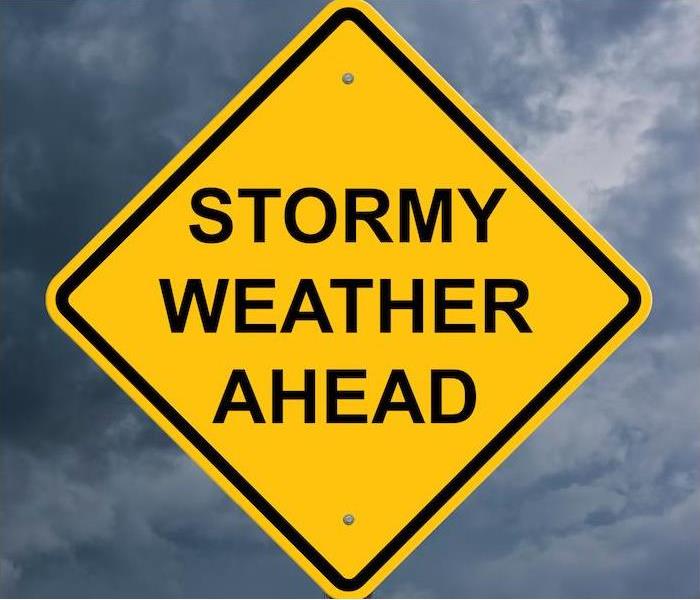 You can call us 24 hours a day, 365 days a year to report your damage and receive exceptional service
You can call us 24 hours a day, 365 days a year to report your damage and receive exceptional service
Severe weather is a powerful thing, and it can cause significant damage to homes, property and businesses. In recent years, the cost of treating storm damage has continued to rise nationwide, but not treating it can lead to much larger problems with your structures later on.
Choosing the right restoration company is one of the most important things you can do if you have sustained storm damage. They will be responsible for taking care of your building and belongings, as well as making sure that every aspect of the damage is thoroughly handled.
Picking the right company for the job will provide you with great peace of mind and ensure that any damage is properly addressed.
Why We Have Become Leaders in Storm Restoration
Our reputation has been earned over time. We are proud to be not only a member of the local community but also to be considered a leader in the restoration industry as a whole. We have worked hard to earn our reputation, and we are proud of it. After disasters, there are many scams afoot that take advantage of those who are vulnerable, but when you trust us, you can be certain you are getting the best in the business.
Our resources allow us to take on more jobs. If there is a large area that is impacted by a storm, you do not want a company that is struggling to keep up with demand to be in charge of your restoration. Thanks to our national partners, we can handle disasters that are any size with the same service and expertise we always do. When there is a large storm, we can call for backup in the way of extra resources and workforce to handle the issues.
Our emergency response is truly 24⁄7. Severe weather never takes a day off, so we won’t either. You can call us 24 hours a day, 365 days a year to report your damage and receive exceptional service, so as soon as you discover you need us, we can be there. No matter what time you discover you have received damage, you can call us and be certain you will receive a rapid response from our expert technicians.
When you have damage from a storm to your home or commercial building, you can always depend on us to handle it. Contact us at any hour to see our exceptional service in action.
Fall is Almost Here - Are You Ready?
8/20/2021 (Permalink)
 We are always here when you need us! 365 24/7
We are always here when you need us! 365 24/7
- Get Your HVAC Serviced
Your AC has been faithfully chugging along all summer. Now it’s time to give it a rest. Before you tuck it away for the winter, be sure to clean the coils. You can find YouTube videos showing how to do this safely.
If you’re done using the AC for the year, cover the outdoor unit to keep debris and ice from damaging your system. Then move indoors and switch your thermostat from cooling to heating. Change the filter, too. You should also make sure all indoor vents are uncovered, and maybe clean your own air ducts while you’re at it.
- Clean the Gutters
Clogged gutters will channel water down the side of your home where it eventually damages the foundation and can flood your basement. So get a ladder and pull debris out of the gutters by hand. If you have a one-story house, you can use this leaf-blower attachment to blast the stuff. Still too much work? Hire a gutter cleaning company — they’re worth it.
- Drain and Store Your Lawn Equipment
Over time, unused fuel goes through chemical changes that create deposits and destroy your lawn equipment. So drain the tanks of your lawn mower, leaf blower, and weed eater before storing them. Fall is also an excellent time to get your lawn mower blades sharpened so they’ll be ready for next spring.
- Turn Off and Drain Outdoor Faucets and Sprinklers
Outdoor hoses and pipes will burst if they’re full of water when the temperatures plunge below freezing. While replacing a garden hose isn’t that difficult, it’s incredibly expensive to dig up your lawn’s sprinkler system to deal with burst pipes. So, disconnect your outdoor hoses and turn off the outdoor water supply. Open outdoor faucets and run your sprinkler system to drain any remaining water. Then take these steps to prevent frozen pipes.
- Inspect and Clean Your Chimney
Nothing is charming about filling your home with soot, smoke, and carbon monoxide because your chimney isn’t working correctly. Even gas fireplaces need an inspection to ensure the pipe is free of cracks that can allow smoke to enter your home. This job is best left to pros. The cost runs around $100-200.
- Get Your Snow Blower Ready
By the time winter arrives, it’s often too late to find snow gear. Stock up on such things in autumn when they’re plentiful and lower-priced. Even if you think you’ve got enough left from last year, or that your snow blower or shovel are in good shape, take a few moments to check. You don’t want to get caught out in the cold finding out you’re wrong.
Don’t Delay
As with most home maintenance tasks, preparing your home for fall isn’t tricky, just time-consuming. Putting it off causes problems that can wind up costing you an enormous amount of money, though, so set aside time on the next couple of weekends to get these jobs done.
If you have water, smoke or mold issues, please call SERVPRO of Cambridge/Belmont to assist you (617) 864-7378
Smoke Damage
8/19/2021 (Permalink)
 We are always here when you need us!
We are always here when you need us!
Fire damage is the physical damage to a property as a result of burning. The damage can be directly caused by flames or indirectly due to smoke and other substances emitted by fire such as soot. Smoke and soot can be as damaging to your property as actual flames. This is because the smoke will create black clouds throughout the walls, ceiling, and porous materials in your property. There is also a strong odor associated with smoke that is very hard to remove from porous materials such as clothes, carpets and furniture. In the unfortunate event your home or business experiences fire damage (flames, smoke or soot) we recommend you enlist the help of a professional to help you clean your property as thoroughly as possible. If a firefighter was called to your property the likelihood that water damage occurred is highly likely. In this event you have to make sure that the water is dried as quickly as possible to prevent the possible growth of mold. When mold grows it will spread quickly, cause possible health effects and increase the cost of remediation. For this reason edge on the side of caution and just hire a professional in the beginning. We at SERVPRO of Cambridge/Belmont will ensure we get everything done right the first time so you can have your peace of mind and property back!
Fire Safety Tips
8/19/2021 (Permalink)
 If you do have a fire call SERVPRO of Cambridge/Belmont (617) 864-7378
If you do have a fire call SERVPRO of Cambridge/Belmont (617) 864-7378
A house can easily catch fire from the misuse of appliances to smoking in bedrooms. You can take measures to avoid fire in your home and ensure the safety of your family. Below are some of the most common causes of household fires, and some tips to take precautions.
Cooking Equipment
Pots and pans can overheat and cause a fire very easily if the person cooking gets distracted and leaves cooking unattended. Always stay in the room, or ask someone to watch your food, when cooking on hotplates.
Heating
Keep portable heaters at least 5’ away from anything that could easily catch fire such as furniture, curtains, laundry, clothes and even you. If you have a furnace, get it inspected once a year to make sure it is working to safety standards.
Smoking in bedrooms
Bedrooms are best to be kept off limits for smoking. A cigarette that is not put out properly can cause a flame, as the butt may stay alit for a few hours. It could burst into flames if it came into contact with flammable materials, such as furniture. Did you know that fires started in the bedroom or lounge make up 73% of all house fire fatalities?
Electrical Equipment
An electrical appliance, such as a toaster can start a fire if it is faulty or has a frayed cord. A power point that is overloaded with double adapter plugs can cause a fire from an overuse of electricity. A power point extension cord can also be a fire hazard if not used appropriately. Double check the appliances and power points in your home.
Candles
Candles look and smell pretty, but if left unattended they can cause a room to easily burst into flames. Keep candles away from any obviously flammable items such as books and tissue boxes. Always blow a candle out before leaving a room. Did you know that in Perth last year 34 house fires started as a result of candles?
Curious Children
Kids can cause a fire out of curiosity, to see what would happen if they set fire to an object. Keep any matches or lighters out of reach of children, to avoid any curiosity turned disaster. Install a smoke alarm in your child’s room and practice a home escape plan with your children and family in case there was a fire. Inform your kids the importance of knowing their address knowing their address and if they needed to, call 911.
Faulty Wiring
Homes with inadequate wiring can cause fires from electrical hazards. Some signs to see if you’ve bad wiring are: 1) Lights dim if you use another appliance; 2) For an appliance to work, you have to disconnect another; 3) Fuses blow or trip the circuit frequently. Have a licensed electrician come and inspect your house, or contact your landlord if you have any of the above occurrences.
Barbeques
Barbeques are great for an outdoor meal, but should always be used away from the home, tablecloths or any plants and tree branches. Keep BBQs regularly maintained and cleaned with soapy water and clean any removable parts. Check the gas bottle for any leaks before you use it each time.
Flammable Liquids
If you have any flammable liquids in the home or garage such as petrol, kerosene or ethylated spirits, keep them away from heat sources and check the label before storing. Be careful when pouring these liquids.
Lighting
Lamp shades and light fittings can build up heat if they are very close to light globes. Check around the house to make sure. Lamp bases can become a hazard if they are able to be knocked over easily, and so should be removed if they are. Check that down lights is insulated from wood paneling or ceiling timbers.
The above tips are a good guide to avoiding a fire in your home. If you do have a fire and need assistance with the cleanup, please call SERVPRO of Cambridge/Belmont (617) 864-7378
Dishwashers - Water Damage
8/12/2021 (Permalink)
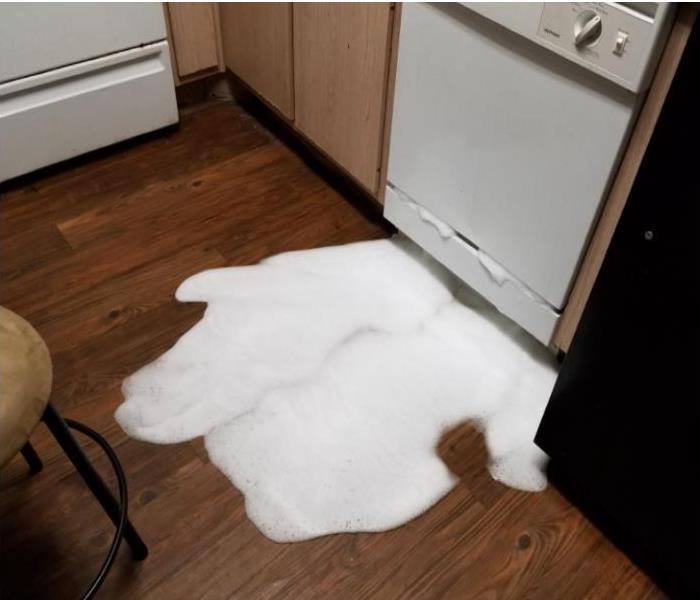 Simple repairs will save you in the long run
Simple repairs will save you in the long run
When to Fix: Common Dishwasher Issues
Typical dishwasher problems involve broken mechanical parts. Think a broken soap dispenser, dislodged sliding rack wheel, or broken sprayer arm.
When a dishwasher won’t drain, there’s usually something in the drain process that shouldn’t be there like lemon seeds, glass, plastic wrap or even bobby pins. “With a high-end dishwasher, you’ll get an OE overflow code. Often I can disconnect the machine, lean it forward, and drain it for a fix without having to replace any of the control boards,” says Craig.
In general, if you have to fix an issue but the unit is relatively new, it makes sense to fix if repair costs are under half the cost to replace the appliance. A good unit can last you 15-20 years if it’s well-maintained.
When to Replace: Do the Math
Once you start to replace the electronic boards, it gets expensive. On high-end dishwashers (KitchenAid, Samsung, Bosch) if the user control panel and the power control unit go out at the same time, it’s not worth it to repair it. “The parts alone will exceed $600 wholesale,” says Craig.
If a dishwasher is more than 7-10 years old and you’re paying more than half of the original cost in repairs, you should consider buying a new one.
Replacing a door latch can get pricey - this can run $200-250 for parts and labor and you can easily avoid this repair. If you want to add in dishes, don’t just pull it open. Hit pause and let the automatic lock release. It will save you money!”
Leaking is a big problem around the door or underneath where the motor or pumps assembly are. Costs vary depending on how old the unit is or if the control board is gone. Contact your local department store for most up to date pricing.
How to Avoid Issues
Don’t overload the machine and when you first have a problem, look at your model number and do some online research to learn about your machine. There might be an easy DIY fix for your symptoms. Or the manufacturer may offer a warranty.
Don’t run a garbage disposal at the same time the dishwasher is running. The two share the same plumbing, so if they’re going at the same time, you are more apt to kick debris into the dishwasher discharge line and clog it.
A little preventative maintenance goes a long way. Have a pro come every two years, clean out your lines and any calcium deposits, and get you running clean again. If the dishwasher does leak, call the preferred professional, SERVPRO of Cambridge/Belmont (617) 864-7378.
Storms and Sewage Back Ups
8/12/2021 (Permalink)
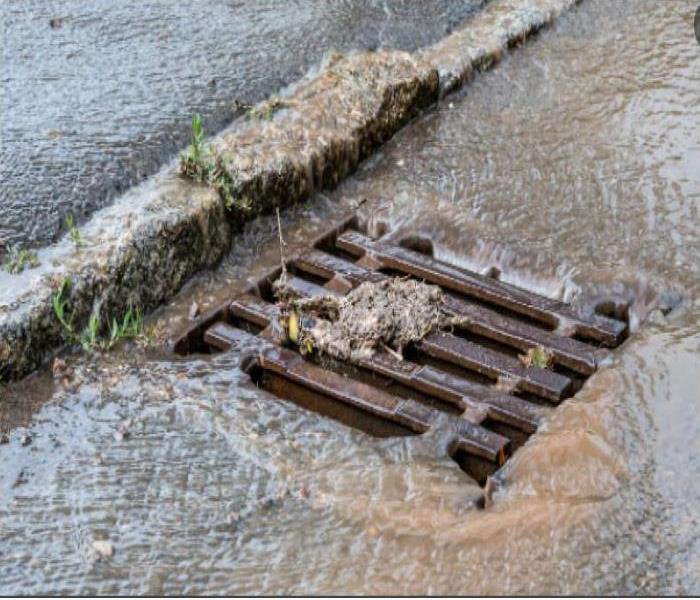 City Sewer systems can get overwhelmed causing back up in your home.
City Sewer systems can get overwhelmed causing back up in your home.
The heavy rains that occurred in the Cambridge/Belmont area caused not only flooding but also many sewage back- ups. The town & cities sewage system gets overwhelmed causing the sewage to flow into basements through toilets and sinks. When a storm drain suffers a partial or complete blockage, rain water gets trapped in the pipes and must go somewhere. Unfortunately, the only exit point is the pipe servicing your home that connects to the sewer line. With nowhere left to go it goes up through your pipe, pushing whatever refuse and filth it’s carrying into your basement and other areas of your home. Contact your local plumber to install a backwater valve to prevent this from happening to you! If your basement gets flooded or has sewage issues, please call SERVPRO of Cambridge/Belmont (617) 864-7378 to assist you. Did you know that SERVPRO of Cambridge/Belmont also helps Commercial and Industrial customers?
Keeping Your Business Open
8/12/2021 (Permalink)
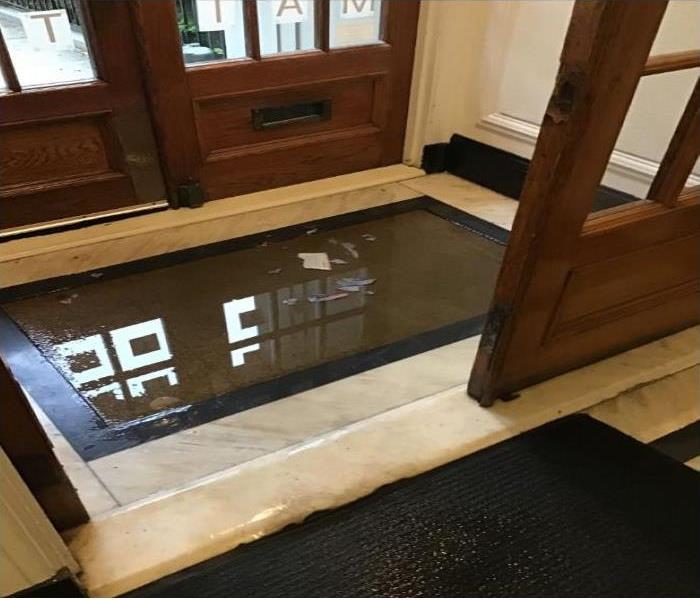 Call us when you need us!
Call us when you need us!
This past weekend a pipe broke in the middle of the night causing water to pour into the 2 retail businesses. At 5:30 Am the commercial property owner was notified and he immediately called SERVPRO of Cambridge/Belmont. SERVPRO’s crew arrived and immediately began to extract the water. The business owner was hoping to be open for business at his usual 9:30 AM opening time. Additional crews were dispatched to take care of the 2 other business affected. The crews worked feverishly to ensure that both businesses could open at their usual time. The SERVPRO of Cambridge/Belmont project manager using a moisture detector and infrared camera created a moisture map to determine all affected floors, walls and ceilings. The project managed related this information to the crews so that they could strategically place the necessary drying equipment. The equipment was set up and the businesses were open at their usual time. If your home or business has undergone water damage, please call SERVPRO of Cambridge/Belmont (617) 864-7378 to assist you.
Mold and Your Business
8/11/2021 (Permalink)
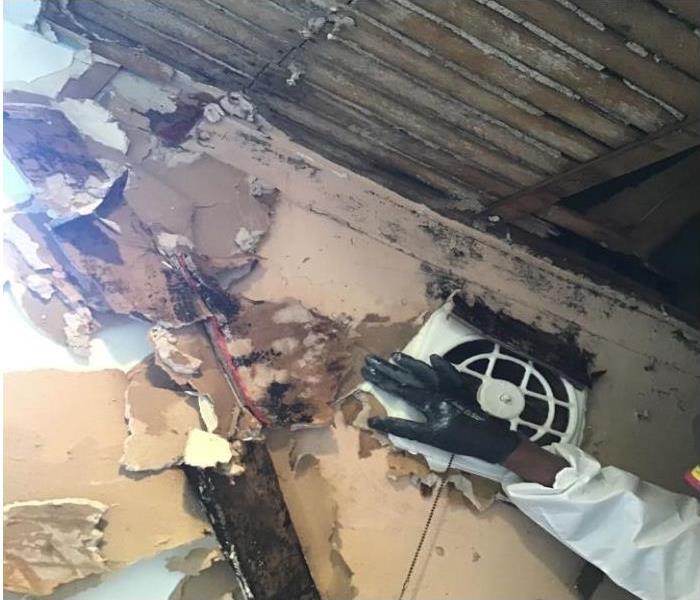 Commercial buildings are affected by mold growth too. Make sure you resolve to prevent lost business days.
Commercial buildings are affected by mold growth too. Make sure you resolve to prevent lost business days.
Mold can be found almost anywhere; they can grow on virtually any organic substance, as long as moisture and oxygen are present. There are molds that can grow on wood, paper, carpet, foods, and insulation. When excessive moisture accumulates in buildings or on building materials, mold growth will often occur, particularly if the moisture problem remains undiscovered or unaddressed. It is impossible to eliminate all molds and mold spores in the indoor environment. However, mold growth can be controlled indoors by controlling moisture indoors.
Molds reproduce by making spores that usually cannot be seen without magnification. Mold spores waft through the indoor and outdoor air continually. When mold spores land on a damp spot indoors, they may begin growing and digesting whatever they are growing on in order to survive. Molds gradually destroy the things they grow on.
Many types of molds exist. All molds have the potential to cause health effects. Potential health effects are an important reason to prevent mold growth and to remediate/clean up any existing indoor mold growth.
Since mold requires water to grow, it is important to prevent moisture problems in buildings. Moisture problems can have many causes, including uncontrolled humidity. Some moisture problems in buildings have been linked to changes in building construction practices during the 1970s, 80s and 90s. Some of these changes have resulted in buildings that are tightly sealed, but may lack adequate ventilation, potentially leading to moisture buildup. Building materials, such as drywall, may not allow moisture to escape easily. Moisture problems may include:
- Roof leaks
- Landscaping or gutters that direct water into or under the building
- Unvented combustion appliances
- Delayed maintenance or insufficient maintenance are also associated with moisture problems in schools and large buildings
Moisture problems in portable classrooms and other temporary structures have frequently been associated with mold problems. When mold growth occurs in buildings, health effects may be reported by some building occupants. Remediators should avoid exposing themselves and others to mold-laden dusts as they conduct their cleanup activities. Caution should be used to prevent mold and mold spores from being dispersed throughout the air.
If you are a facilities manager, maintenance supervisor or property manager and you have a mold issue; please call SERVPRO of Cambridge/Belmont (617) 864-7378
Maintaining Your AC Unit
8/11/2021 (Permalink)
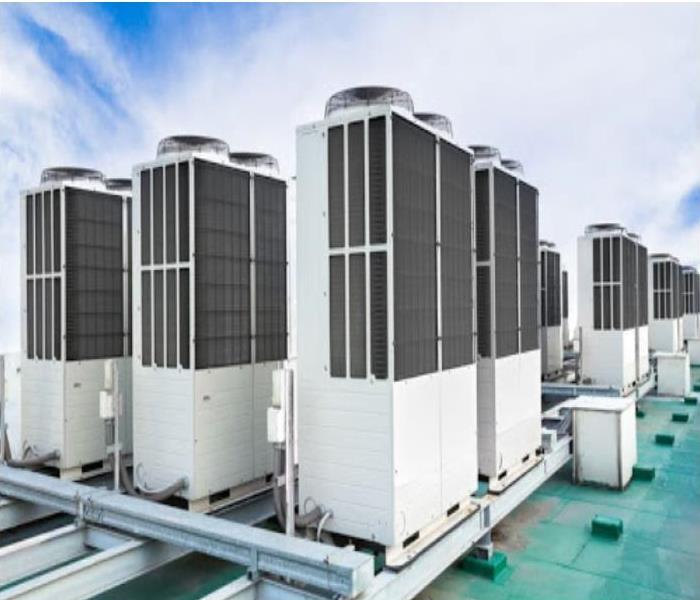 Call us because we are faster to any size disaster!
Call us because we are faster to any size disaster!
Overtime, in commercial buildings A/C units can slowly take a turn for the worse. There can be many complications that can lead to colossal damage. A/C units should be checked for leaks and serviced every year, preferably in the spring, to make sure an incident does not happen in the future. As your A/C system runs, over time it accumulates dust and dirt in key areas that affect its efficiency. Leaving your A/C unchecked unit can make for your A/C unit to lose five percent of its operating efficiency each year.
In Watertown, Monday morning, SERVPRO of Cambridge/Belmont (617-864- 7378) responded to a call from a customer saying that there A/C unit had finally broken and there were leaks coming through the ceiling because the A/C unit was located on the second floor. There was not only water damage to the ceiling but also to the merchandise that was located on the first floor. This is a situation that could have been prevented and also could have saved the company a lot of money and headache by having there A/C unit checked each year.
SERVPRO of Cambridge/Belmont (617-864- 7378) took the job and were quick, very reliable, and trustworthy. This job was taken care of in just one short day. For any commercial needs call us we are here at your convenience 24/7, 365 days a year. Let us be the company that gets your business back to “Like it never even happened.”
Floods in Commercial Properties
8/11/2021 (Permalink)
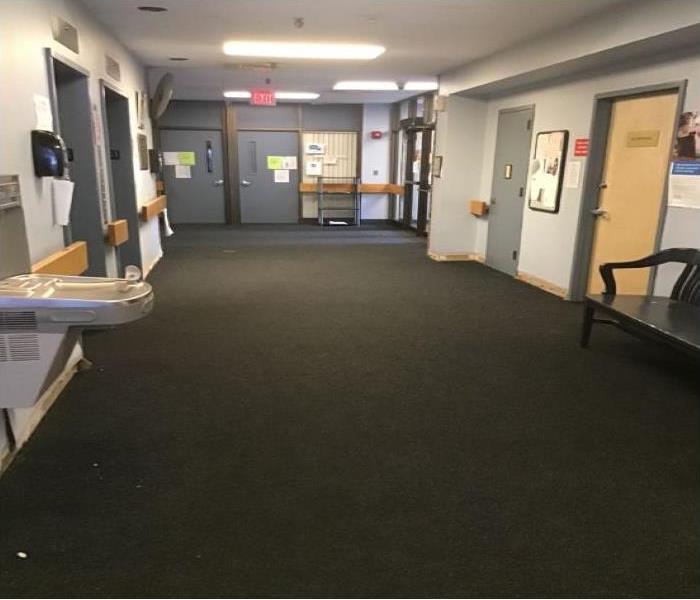 We specialize in water remediation so you can get back to business faster
We specialize in water remediation so you can get back to business faster
Flooding and water damage events at City of Cambridge commercial properties are often complex with numerous issues that require a knowledgeable and flexible response. Whether we’re dealing with a relatively small water cleanup scenario or a large scale event, we work quickly to assess each unique situation and isolate the damaged area. In many instances, normal operations can continue in a temporary space while we restore your facility.
Our professionals are trained to be mindful of legal and environmental concerns and strive to fully restore the damaged area while working within your budgetary constraints. We understand that every hour spent cleaning up is an hour of lost revenue and productivity. So when an emergency situation arises in your business, give us a call and we’ll be there fast with the help you need.
About SERVPRO of Cambridge/Belmont
SERVPRO of Cambridge/Belmont specializes in the cleanup and restoration of commercial and residential property after a water damage event. Our staff is highly trained in property damage restoration. From initial and ongoing training at SERVPRO’s corporate training facility to regular IICRC-industry certification, rest assured our staff is equipped with the knowledge to restore your property. If you are a property of facilities manager in Cambridge or Belmont and you have questions regarding our services, please call (617) 864-7378
Signs of Water Damage in the Basement | SERVPRO® of Cambridge/Belmont
6/18/2021 (Permalink)
 SERVPRO of Cambridge/Belmont is a full restoration company. Our restoration experts are on call 24/7 and ready to help you.
SERVPRO of Cambridge/Belmont is a full restoration company. Our restoration experts are on call 24/7 and ready to help you.
Many homeowners find their basement to be a great resource. It’s very utilitarian, serving as everything from a storm shelter to a bonus bedroom to some much-needed storage space.
Basements, however, have an inherent issue: They’re dug into the ground, which means they’re susceptible to water damage from the ground around them over time.
While this is not an absolute certainty, you’ll definitely want to be aware of the risks of water damage from the underground as you go forward in home ownership. Let’s examine some of the most likely indicators of water damage and leaks, so you know what you’re looking for in the fight against interior moisture.
What to Look for to Determine Possible Water Damage
Unpleasant, musky odors. Water that seeps into the basement from underground may in fact be clean to begin with, but it doesn’t take long for it to stagnate, causing that signature musty odor. This happens so frequently, in fact, that many people assume basements simply smell that way all the time. In actuality, though, the pungent smell will only arise when mold and mildew are present in the environment,. While you may not see mold or mildew right away, the smell is a dead giveaway that there may be a problem.
Flaking paint on masonry or walls. Many people assume that waterproof paint is a foolproof solution for basement dryness. Unfortunately, even the most advanced paint will give way over time, beginning to crack, flake and bubble, eventually creating a larger problem than you would have encountered without waterproof paint.
Foundational cracks. Homes do often experience some mild shifting over a period of many years, but a real crack in the foundation is a tipoff that there may be a major leak somewhere that needs immediate attention. Cracks can also show up in the floor, the ceiling or in your walls and are often a sign that there is water damage that could progress into something worse. Hairline cracks are no cause for alarm, but if they become any larger, they should be treated immediately.
If you notice any of these signs in your basement, let us take a look. Our expert water restoration technicians can help you determine what is causing these issues and how to treat it properly. Contact us today to learn more.
A Look at the Types of Damage Associated With Thunderstorms | SERVPRO® of Cambridge/Belmont
6/15/2021 (Permalink)
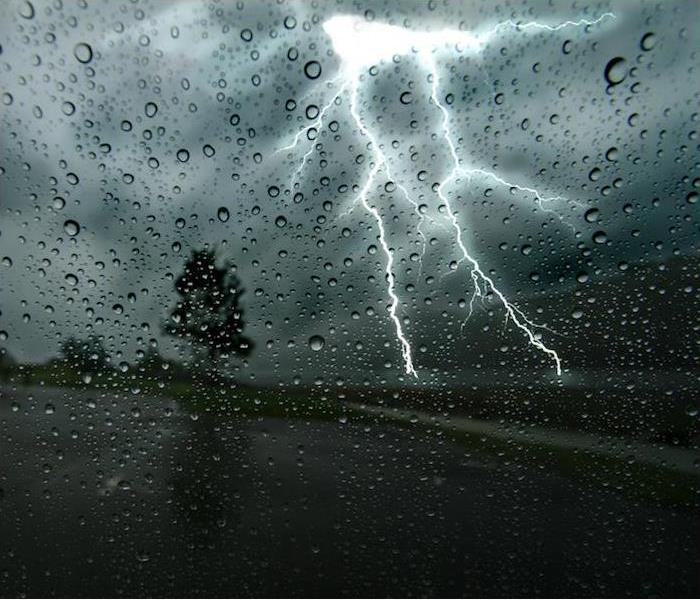 Thunderstorms can pop up at any moment. Contact SERVPRO of Cambridge/Belmont if you experience any damage.
Thunderstorms can pop up at any moment. Contact SERVPRO of Cambridge/Belmont if you experience any damage.
Thunderstorms are quite a dangerous weather event, and though they occur frequently, it is important to not become immune to the threats that they pose. Every thunderstorm brings the potential for injury and damage along with it, and between hail, high winds, heavy rains and flooding potential, there are lots of issues that can be present each time a storm happens.
Every storm that contains thunder and lightning has the potential to be dangerous, as lightning strikes and heavy rain are major hazards. Additionally, a thunderstorm can become severe when winds over 58 miles per hour and hail over one inch are present, posing even more possible hazards to those in the path of the storm.
Various Ways That Thunderstorms Can Cause Damage
Damage and injury from lightning strikes. Every thunderstorm will also contain lightning, as thunder and lightning always go hand in hand. Lightning strikes are responsible for over 300 injuries each year, which does not include how often they cause structural fires or fell trees that cause additional damage.
Property damage due to hail. Though hail may seem like a minor occurrence compared to something like lightning, its damages can be quite far reaching. People without adequate shelter can receive injuries from hail, and it can also dent cars, cause damage to homes that lead to water entry and lead to leaking roofs. Large hail is extremely dangerous because of the sheer speed with which it can fall.
Harm from flash flooding. Though most people consider flooding something that is only likely to happen around bodies of water, with flash flooding, it can be a threat nearly anywhere. Flash flooding is often caused when rainfall is heavy and drainage systems or ditches get backed up, which can quickly lead to standing or flowing water. Flash floods are particularly dangerous because of their force, which can knock people over and carry cars away in its tide.
Thunderstorms are dangerous and can cause significant damage to homes or commercial spaces. If you have damage due to a thunderstorm, you can count on us to help. Contact us 24⁄7 for more information about our storm restoration practices.
With Outdoor Activities in Spring, the Risk of Fire Increases | SERVPRO® of Cambridge/Belmont
6/15/2021 (Permalink)
 Restoring fire and smoke damage is one of our specialties. Contact SERVPRO of Cambridge/Belmont to learn more.
Restoring fire and smoke damage is one of our specialties. Contact SERVPRO of Cambridge/Belmont to learn more.
As old man winter starts to ease its grip on Boston and with the long cold days behind us, spring is right around the corner. Spending more time outdoors is now a priority since the weather is milder. However, with the increased outdoor activity, there also comes and increased risk of fire.
Spring brings with it the increased risk of fire mainly due to the increased outdoor activity around the grill. Unfortunately, spring is responsible for the largest increase in average daily fires.. But if you are diligent, we can all work to prevent fires this spring.
The Fire Marshall Say Pay Special Attention to These Areas Around the Home
BBQing. Single-handedly, the grill is responsible for a large percentage of outdoor fires, with lack of proper cleaning being the major cause.. When you have fuel, flame and grease in close proximity, that recipe has all the ingredients for a grill fire. Food particles that fall through the grill grates and the accumulation of grease are the biggest cause of unintended grill fires. Clean the grill before each use, and replace defective or worn parts.
The fire pit. The grill gets its share of blame for accidental fires, but the fire pit is another source of unplanned outside fires. We all enjoy a nice spring evening, but temperatures can get cold after the sun goes down. The fire pit provides an opportunity to interact outside with others. These safety tips are important to remember: Don’t leave children unattended around a fire. Keep water close by. Adding debris or other materials, other than wood, to a fire pit should be avoided. This can cause “flare-ups” and embers can be carried away by gusting winds. Roasting food should be done over the embers and not the open flame.
The dryer vent and chimney. Chimneys and dryer vents are another cause of outdoor fires. Warmer weather brings fewer fires in the fireplace or woodstove. Ash, soot and creosote build up during the winter in the stove pipe, and unless it’s removed, the risk of fire increases. Professional chimney sweeps are well worth the investment. It’s hard and dirty work. Clogged dryer vents are another opportunity for fire damage. The leading reason for fires in a clothes dryer is clogged lint in the dryer vent. Don’t become a statistic; keep dryer vents cleared of excess lint.
Has your home or business recently suffered fire or smoke damage? Our tech’s will be there fast and have it cleaned up quick. We’re available 24⁄7 for emergency situations. Call or click today and experience the SERVPRO difference.
You Can Keep Heavy Rains From Damaging Your Belmont Home | SERVPRO® of Cambridge/Belmont
6/10/2021 (Permalink)
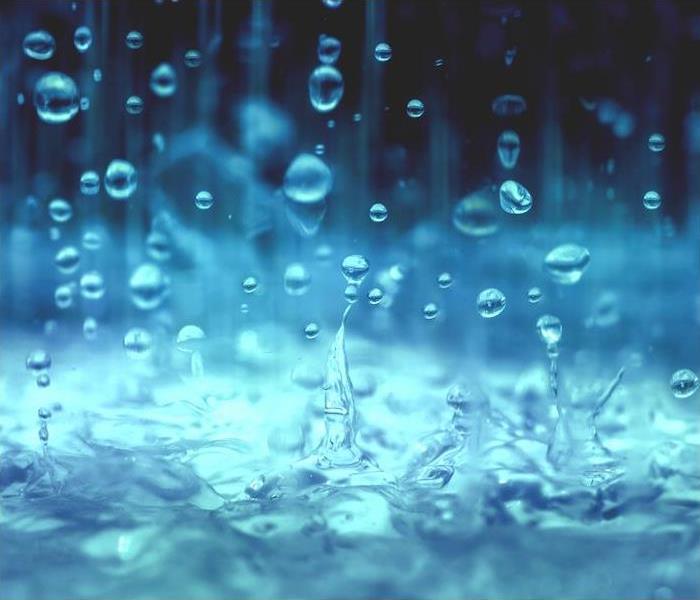 If you need help dealing with any damage caused by water, contact SERVPRO of Cambridge/Belmont today.
If you need help dealing with any damage caused by water, contact SERVPRO of Cambridge/Belmont today.
Water damage to your home can come from expected and unexpected sources. If you’re like most homeowners, you probably know that natural disasters (like flash floods) and home accidents (like plumbing failures) can cause water damage.
But have you thought about the damage heavy rains can do?
Heavy rains might not have been at the top of your list of water damage causes. But it can be a real problem for homeowners, and it’s common.
Drenching rainstorms are a common prediction during spring and summer forecasts. If your home is not properly maintained, these rains can cause costly damage.
Water Damage Is a Common Hazard
If you have to file a claim for water damage, you’ll be in good company. One in every 50 Americans will also be filing a claim this year. Depending on your neighborhood, that means several people you know may file a claim soon.
You can’t avoid all water damage hazards. Flash flooding can’t always be predicted and can cause serious damage to entire neighborhoods and communities.
But sometimes, homeowners can avoid the damage caused by heavy rains if they take the right steps.
Keep Your Home Safe During Heavy Rains
We see many water-damaged homes, so our teams have valuable insights into how you can protect your home from suffering water damage. Basic home maintenance can make a difference, and many of these projects might be on your list already.
Take stock of your yard. Knowing how your yard drains (and how it works with your home) is vital. If you notice that your yard is draining toward your home, then you might want to get in touch with a landscaping expert to look for ways to protect your yard.
Choose to landscape your yard thoughtfully. Many people choose plants and flowers because they like the aesthetic they create. But choosing landscaping items for protection can ensure your home is ready for heavy rain. Native plants, trees and bushes can be vital in protecting your home from water damage.
Look into sealing your roof. Experts estimate that almost 95% of damage is caused by water finding its way through gaps in your shingles, which can be prevented with this step.
If you need help dealing with damage caused by water, fire or any other issue, we’re here to help you restore your home. We have crews who are available 24⁄7 in the event of an emergency. Contact us at any time to learn more about us and how we can help you restore your home to its original state.
Be Safe While Using Ladders
3/12/2021 (Permalink)
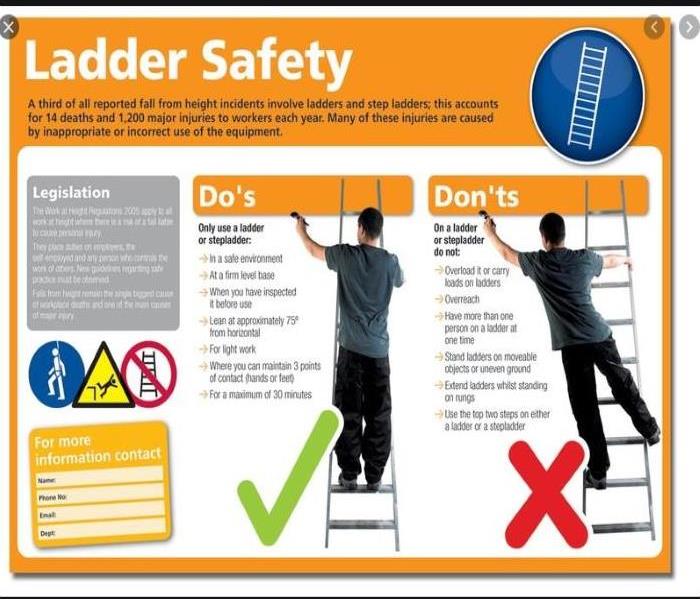 Stay safe when using ladders at all times
Stay safe when using ladders at all times
Take the time before you climb. Check to see if your ladder is safe to use before stepping foot on a rung. Ladders get thrown in and out of trucks and closets which may cause the ladders to get beat-up. A damaged ladder is unsafe to use and should be immediately taken out of service. The checklist to the right outlines a few areas that should be inspected before each use.
If you notice any cracked or damaged uprights, braces, or rungs, the ladder should not be used. Loose nails, screws, bolts or other metal parts are also a huge red flag. The ladder rungs should be secure and clean of any oil or dirt. Foot treads should not be worn out and all of the ladder’s labels should be present and legible. As always, only use a ladder on a stable surface. If the ladder is rocking even slightly, or if you need to place something underneath the feet of the ladder to keep it stable, the ladder is unsafe for use.
Why is inspection so important? According to the World Health Organization, the United States has the most number of deaths caused by falls from ladders. Falls from ladders are also the leading cause of deaths in the construction industry. There are over 164,000 emergency room visits and 300 deaths from falling from ladders. The majority of falls from ladders that lead to death are from heights of 10 feet or less from the ground. The number of deaths has tripled over the past decade. Most of these deaths may have been prevented by inspecting ladders before use and putting defected ladders out of service. Another factor that may decrease the amount of fatalities and injuries due to falls from ladders is proper training.
The following list outlines just a few items to train employees in regards to the safe and proper use of ladders.
- Always maintain 3-points of contact at all times when climbing
- Do not carry any materials up or down a ladder
- Face the ladder when ascending or descending
- Never overreach
- Only allow one person to climb the ladder at a time
Extension Ladders:
- Position the ladder at the proper pitch (1/4 rule)
- Extend the side rails at least 36 inches or 3 rungs above the landing
- Secure the top of the ladder to help prevent shifting
If you have fire, water or mold issues, please call SERVPRO of Cambridge/Belmont (617) 864-7378
Mold - Surprising Places You Can Find Them
3/12/2021 (Permalink)
 Mold must be addressed as soon as possible to avoid spread.
Mold must be addressed as soon as possible to avoid spread.
Mold is defined as a fungus that can spread rapidly and can take over you home and work space rather quickly. The most common places for mold to hide is, Carpeting, Furniture, Closets, Clothes, HVAC Systems, Drywall, Ceiling, and Flooring.
Carpeting
No matter how small the amount of carpet is that has liquid dropped on it, it is always a good idea to take precautions and check to see if mold has started to grow in or underneath the surface. Some of the smallest spills could lead to the biggest problems over time if not taken care of properly.
Furniture
Most people do not realize that when water or liquid is spilled on a piece of furniture it could potentially be a breeding ground for mold. Liquid can seep into the fabric and if not dried correctly could start to spread through the piece of furniture
Closets
Closets would be the last place that one would think mold would grow in. Mold spores are found in the air and can land on anything and everything throughout your home. Mold spores tend to grow more rapidly in dark, damp, or humid environments. That is why your closet can be a good breeding ground for mold spores.
Clothes
One might ask mold can grow in clothes?! Not to panic if taken care of properly this can be avoided. Most people organize their closets in conjunction with what season is approaching. Last season's clothes go into the back of the closet to sit there until it comes around again. Which mean out of sight out of mind. This is when mold spores can start to grow. Some clothes after sitting for so long can come out and smell musty. A suggestion for SERVPRO of Cambridge/Belmont 616-864-7378 is to wash your clothes each season before wear. If mold does become a problem in your closets feel free to contact us so we are able to get your closet back to “Like it never even happened.”
HVAC Systems
What is your HVAC system? You probably think of it as the thing that keeps your home warm or cool depending on the season. What it really is, is a series of long fully enclosed duct work that traverse every part of your home. These are the places that never see light and can collect several different types of bacteria, including mold spores. This is something that can be easily prevented. Getting duck worked cleaned each year can help prevent from a catastrophic mold over take throughout your home.
Drywall
Drywall loves to absorb anything and everything that comes into contact with it. Some examples are odors, bacteria, smoke, or moisture. Whenever something is absorb it can be naked to the eyes. You will not be able to notice any damage that has taken place unless it starts to smell or starts to peep through onto the drywall.
Ceiling
Most people will not notice anything wrong with the ceiling until it is visible. Which means, at that time mold has had a chance to grow throughout it. This usually happens when there is a overflow of a toilet or bathtub. Do not fret! SERVPRO of Cambridge/Belmont 616-864-7378 has the tools to help fix your mold problem. Give us a call we are available 24/7 365 days a year.
Flooring
One detail that you cannot forget about is when flooring gets wet the moisture might have disappeared on the top but that does not mean that the liquid is not deep under the surface waiting to start breeding. More often than not moisture can get underneath and become a breeding ground for mold. Some examples of where mold can grow in a moist or humid area is your attic, storage room, crawl space, or inside your washer and dryer. Some tips to make sure that your floor is staying clean and dry is to make sure that spills, when they happen, are taken care of and not just left to seep into the floor to cause damage.
It’s Easier Than You Think to Lower Your House Fire Risk this Winter | SERVPRO® of Cambridge/Belmont
3/11/2021 (Permalink)
 House fires tend to peak during the winter. SERVPRO of Cambridge/Belmont are available 24/7 in the event of an emergency.
House fires tend to peak during the winter. SERVPRO of Cambridge/Belmont are available 24/7 in the event of an emergency.
Your SERVPRO team wants to help you make your home a safer place this winter. So we’ve put together these helpful tips for Belmont homeowners.
You can find a lot of information about fire prevention, but we think these tips can be beneficial because you can implement them quickly. It won’t cost you a lot of time or money. And it will make your family safer.
Ways to Make Your Home Safer This Winter
Here are a few ways experts say you can lower your winter fire risk:
Make your kitchen safer from grease fires. Grease fires are a common problem in the kitchen. You can’t put them out with water, and pulling a skillet off the stove can spread the fire. Instead, keep a fire extinguisher nearby. While a fire extinguisher is best, you can smother these fires with a lid or use baking soda to put them out.
Don’t let your furnace go without maintenance. Even if your furnace seems to be working well, it’s smart to have it serviced every winter. It’s easy for issues liked clogged ducts and vents to go unnoticed until they become a fire hazard. Stop those fires before they start by having the furnace checked.**
Use your fireplace safely. Assuming your chimney is good to go (meaning it’s clear), then you may want to light a fire on a cold night. If you do, be sure you’re disposing of the ashes correctly and regularly cleaning your fireplace. A fireplace caked in ashes can become a fire hazard.
Be careful with your candles. Many people love the look and smell of a candle burning on a cold night. Enjoy them safely while you’re home, but don’t leave them burning when you leave.
If your home is damaged due to a fire or any other cause, you can always count on us for restoration assistance. We have crews who are available 24⁄7 in the event of an emergency. Contact us at any time to learn more about our restoration services and how we can help your family.
Reporting Water Damage
3/11/2021 (Permalink)
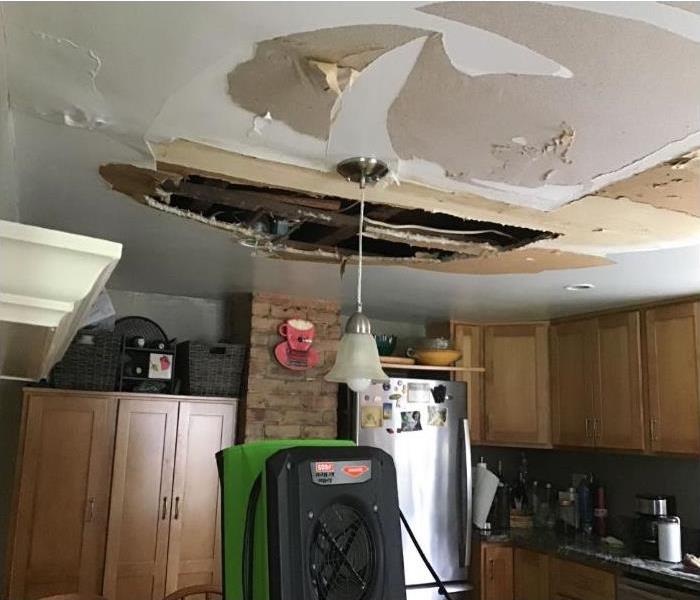 Do not wait call us as soon as you can if you experience water damage
Do not wait call us as soon as you can if you experience water damage
Town of Belmont 24 Hour Emergency Water Damage Service
SERVPRO of Cambridge/Belmont is available 24 hours a day for water emergencies, large or small. When you are dealing with water damage, immediate action is crucial. A delay of just a few hours can greatly increase the severity of the water damage.
We Answer the Phone Ready to Help
Call Today - (617) 489-7378
We understand that when you call us, you may be feeling confused, stressed, and vulnerable. You need an expert to guide you through this crisis. SERVPRO of Cambridge/Belmont has the specific water damage training and experience to help you through this tough time. We specialize in water damage restoration—in fact, it's the cornerstone of our business.
What to Expect
When you call, we will ask several questions regarding your water damage emergency. These questions will help us determine what equipment and resources to bring, including how many trained SERVPRO Professionals may be needed.
Our SERVPRO Representative will ask several questions:
Your name and contact information
Your insurance information (if applicable)
The street address of the water-damaged home or business
When did the flooding or water damage occur?
What caused the water damage (if known)?
Is there electricity available (on-site)?
About SERVPRO of Cambridge/Belmont
SERVPRO of Cambridge/Belmont specializes in the cleanup and restoration of residential and commercial property after a fire, smoke or water damage event. Our staff is highly trained in property damage restoration. From initial and ongoing training at SERVPRO’s corporate training facility to regular IICRC-industry certification, rest assured our staff is equipped with the knowledge to restore your property. SERVPRO of Cambridge/Belmont (617) 489-7378 – If you suspect you have water damage, Call us!
We are here to help!
3/11/2021 (Permalink)
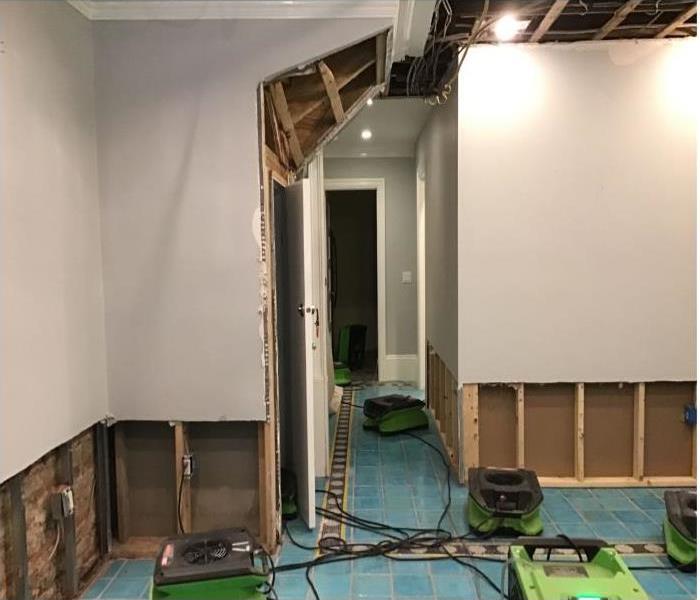 Call us when you need us 365 - 24/7
Call us when you need us 365 - 24/7
John & Sue Butler’s contractor had finally finished the renovations. They had been living with relatives until their new condominium was finished. The furniture and belongings were delivered and they were finally living in their dream home. They came home Sunday night after a weekend away and they noticed water dripping down from the ceiling. Their hardwood floors had standing water and were beginning to buckle. They discovered that their upstairs neighbor pipe broke causing the water to run down into their unit. They called SERVPRO of Cambridge/Belmont to assist them. The Butler’s explained that they had just moved in and didn’t want the life to be disrupted. The SERVPRO technician assessed the damages and came up with a plan that would not require any demolition. He discovered there were existing cavities he could install an Inject-I-Dry System that would dry out the floors & ceilings without any demolition or sanding. The technician monitored the drying progress and after one week, he determined that the floor and ceiling were dry and removed the equipment. The Butler’s were ecstatic!
If you sustain water damage, please call SERVPRO of Cambridge/Belmont (617) 864-7378 to assist you.
Planning Ahead in Case of a Burst Pipe | SERVPRO® of Cambridge/Belmont
12/14/2020 (Permalink)
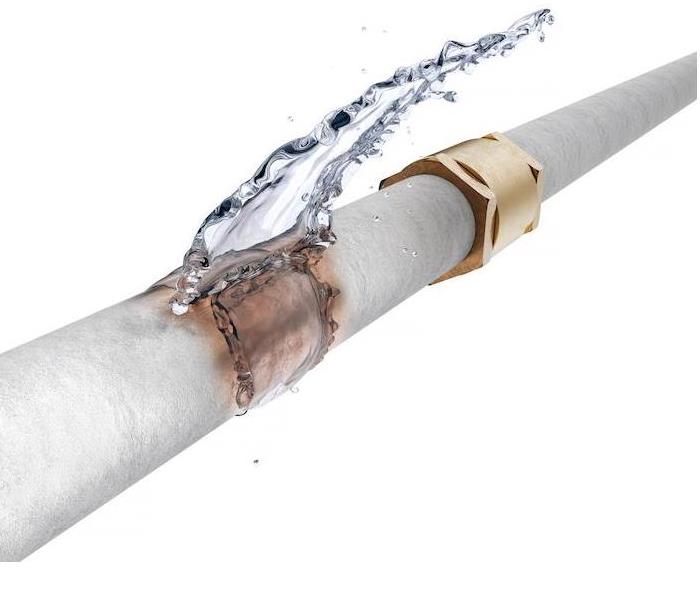 If you have water damage in your home due to a burst pipe or another cause, contact us right away. SERVPRO of Cambridge/Belmont is available 24/7.
If you have water damage in your home due to a burst pipe or another cause, contact us right away. SERVPRO of Cambridge/Belmont is available 24/7.
Burst pipes are something that can happen when you least expect it, causing serious damage in a brief amount of time. While there is no way to know when a pipe may burst, knowing what to do in the event that one does can help you act quickly to mitigate the damage that the water can cause.
In a perfect world, water damage would be a rare occurrence—but many people are surprised to find out how often it occurs. Every year, one in 50 homes will experience some type of water damage, but a plan can significantly lessen the impact that it has.
Having a Plan in the Event a Pipe Bursts in Your HomeShut off your water main. When a pipe bursts in your home, in some situations, it can continue pouring water into the area, creating even more damage. If it is safe to do so, shutting off your water main can reduce the overall damages that are caused.
Shut off your electricity. Water and electricity definitely do not mix, so if you are able to get to your circuit breaker to cut your electricity off safely, it is wise to do so. This will ensure that if water comes in contact with outlets or appliances, there is not a shock or fire hazard.
Contact your restoration company. Setting your restoration in motion quickly is one of the best things you can do for water damage, so it is wise to get in touch with your restoration company right away. We recommend always choosing a company that is available 24⁄7 so you never have to wait for a call back when you report your damages.
Take a record of the damages. Not only is keeping good records helpful for you, but it will also be helpful if you are eligible to file a claim with your insurance provider. Take photos and videos in addition to making a list of everything that is damaged by the water.
Contact your insurance company. The type of coverage you will receive for water damage of this nature can vary, so your insurance company is the authority on what is and is not eligible to be covered by filing a claim. Contacting them quickly can help you set this process in motion so you can get it settled as fast as possible.
Open windows and doors if possible. If the weather permits and it is safe to do so, increasing the airflow around water damage by opening windows and doors can speed up the drying time by encouraging evaporation.
If you have water damage in your home due to a burst pipe or another cause, you can count on us for restoration assistance. Contact us at any time to learn more about our restoration services.
Ice Dams - What You Should Know
12/14/2020 (Permalink)
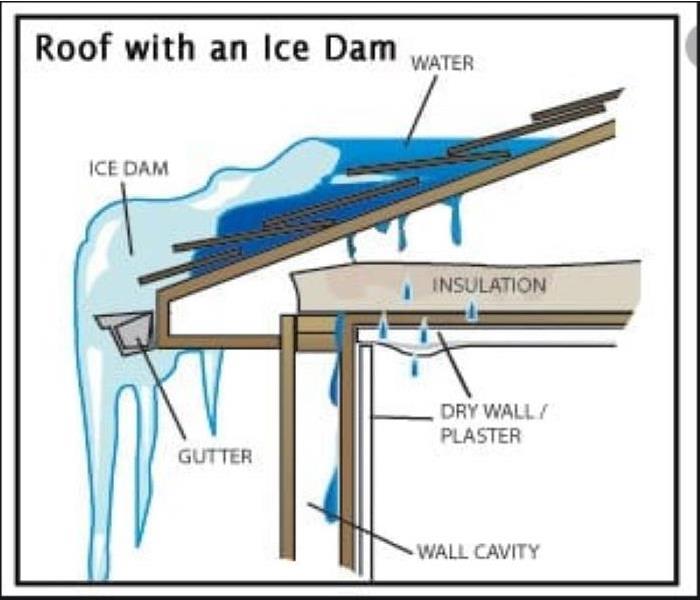 If you have water damage from Ice Dams, please call SERVPRO of Cambridge/Belmont (617) 864-7378
If you have water damage from Ice Dams, please call SERVPRO of Cambridge/Belmont (617) 864-7378
Ice dams form when melted snow refreezes at roof edges. Anyone who has lived in cold climates has seen ice dams. However, most of us don’t stop to understand why these ice bands form until they damage our homes.
Three things are required for an ice dam to form: snow, heat to melt the snow and cold to refreeze the melted snow into solid ice. Ice dams can form when as little as 1 or 2 inches of snow accumulates on a roof – if the roof is poorly insulated and air sealed, and the snowfall is followed by several days of sub-freezing temperatures. Ice dams develop as snow on the upper part of the roof melts. Water runs down the roof slope under the blanket of snow and refreezes into a band of ice at the roof’s edge creating a “dam”. Additional snow-melt pools against the dam and eventually leaks into the building through the roof or roof trim.
The reason ice-dams form along the roof’s lower edge, usually above the overhang, is straight-forward. The upper roof surface is at a temperature that is above freezing. And the lower part of the roof surface (along the eaves) is below freezing. The upper roof surface is located directly above the living space. Heat lost from the house warms this section of the roof, melting snow in this area. During periods of sub-freezing temperature the lower regions of the roof deck remain at sub-freezing ambient temperatures. Roof overhangs are not warmed by indoor heat-loss.
Deeper snow and cold temperatures increase the likelihood and size of ice dams. Every inch of snow that accumulates on the roof’s surface insulates the roof deck a little more, trapping more indoor heat beneath the roof deck and warming the roof sheathing. Each inch of snow has an R-value of approximately 0.5 – 1. The worst ice dams occur when deep snow accompanies cold weather. Here is an example to provide a sense of scale: A poorly insulated and unvented R-20 cathedral roof with 10 inches of snow can result with serious ice damming. In this example, 10 inches of snow adds ~between R-5 and R-10 to the roof system resulting in a total roof R of 25 – 30. The layer of snow holds indoor heat below the sheathing and could warm the roof sheathing above freezing in the area over the living space. If the inside temperature is 70 degrees and the outside 20 degrees (50 degree differential), the temperature of the roof sheathing would be between 5/25 and 10/30 of the way from 20 degrees toward 70 degrees. In other words, the roof should temperature should be between 30 and 37 degrees over the living space. Snow will probably melt under these conditions. Yet, the temperature of the roof over the unheated overhangs is 20 degrees, the same as the outdoor temperature. The melt water will freeze when it reaches that part of the roof. Deeper snow makes things worse. More insulation makes the situation better. You can do the math for a variety of snow depths and various indoor/outdoor temperature conditions to get a sense of how the variables are related. The trick is to keep the entire roof below freezing if possible. Roof venting helps and is discussed below.
Fire Prevention
12/14/2020 (Permalink)
 Fire safety is important. Call us if you experience fire damage in your home or business 617-864-7378
Fire safety is important. Call us if you experience fire damage in your home or business 617-864-7378
The following are things you can do to protect yourself, your family, and your property in the event of a
Fire:
SMOKE ALARMS AND CARBON MONOXIDE DETECTORS
Install smoke alarms. Properly working smoke alarms decrease your chances of dying in a fire by half.
Place smoke alarms on every level of your residence, including the basement.
Install a working carbon monoxide detector in the common area of the bedrooms.
Test and clean smoke alarms once a month and replace batteries at least once a year. Replace smoke alarms once every 10 years.
COOKING SAFETY
Never leave cooking unattended.
Always wear short or tight-fitting sleeves when you cook.
Keep towels, pot holders and curtains away from flames
Never use the range or oven to heat your home.
ESCAPING THE FIRE
Have an escape plan. Review escape routes with your family.
Make sure windows are not nailed or painted shut.
Teach family members to stay low to the floor, where the air is safer, when escaping from a fire.
In high-rise, never lock fire exits or doorways, halls or stairways. Never prop stairway or other fire doors open.
HEATING SOURCE
Place space heaters at least three feet away from flammable/combustible materials.
Use only the type of fuel designated for your space heater.
MATCHES/LIGHTERS AND SMOKING
Keep matches/lighters away from children.
Never smoke in bed or when drowsy or medicated.
If you must smoke, do it responsibly.
ELECTRICAL WIRING
Inspect extension cords for frayed or exposed wires or loose plugs
Make sure outlets have cover plates and no exposed wiring.
Make sure wiring does not run under rugs, over nails, or across high traffic areas.
Do not overload extension cords or outlets.
If you do have a fire, please call SERVPRO of Cambridge/Belmont (617) 864-7378 to assist you in the cleanup
Prep Your Business for Cold Weather
12/14/2020 (Permalink)
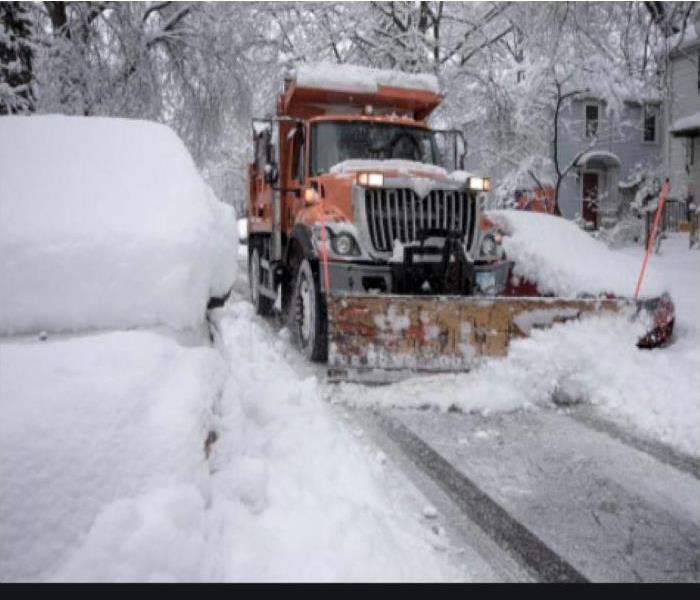 Make sure your business is always ready for cold weather
Make sure your business is always ready for cold weather
Get Cold Weather and Freeze Alert
Keep your heating systems operating
Keep your building and equipment warm. Heating systems are the lifeline of your business during cold conditions. If they fail, disaster could strike.
Immediate action required:
- All piping must be insulated. Install new and replace damaged insulation and don’t forget to examine your sprinkler system.
- Inspect all outside dampers for proper operation.
- Clear and protect all outside vents from ice and snow accumulation.
- Heat requires power. If generators are unavailable, make arrangements to obtain an electrical portable heating during outages.
Safeguard business equipment during power outages
Voltage surge protection is necessary at all times – especially during cold, freezing conditions. Severe weather can cause power loss and downed wires, disrupting your business’ power supply. When electricity is restored, the sudden surge of power can literally destroy the modem, high-tech equipment
Your business relies on.
Immediate action required:
- Unplug it. Anticipate voltage surges during severe weather. The best solution is equipment isolation – turn it off and unplug it. If you need to keep equipment running, installing surge protectors can provide protection.
- Inspect building. Close all windows, doors and outside dampers. Schedule regular building checks during storms and cold weather. Arrange for snow and ice removal, including the roof.
- Who’s responsible? Ensure accountability by designating personal responsibility for loss prevention. Business and building owners must work together with facilities and maintenance people.
- Provide emergency telephone numbers. Collect and distribute a list of emergency phone numbers and contacts, such as snow removal, heating system Repair Company, utility company, and the weather bureau.
- Anticipate flooding. Severe and cold weather can cause flooding. Move susceptible equipment or stock to an alternate location, where water cannot reach it.
- Always have cold-weather gear on hand. – Have plenty of gloves, hats, emergency blankets and flashlights available.
If you have water or fire issues, please call SERVPRO of Cambridge/Belmont (617) 864-7378
A Guide to Flash Floods After Severe Weather Occurs | SERVPRO® of Cambridge/Belmont
11/23/2020 (Permalink)
 SERVPRO of Cambridge/Belmont is your local water & storm restoration expert. We will get the job done right, contact us today.
SERVPRO of Cambridge/Belmont is your local water & storm restoration expert. We will get the job done right, contact us today.
While many weather events get a bad reputation as being dangerous or deadly, many people do not consider flooding to be included in this list. Many people are surprised to find that flooding is second only to heat deaths in total weather-related fatalities in the United States, and flash floods are especially dangerous.
One of the reasons why flash floods can be so deadly is because they come about suddenly, and even areas not prone to flooding can be impacted. Even a small drainage pond or blocked sewer system can lead to a dangerous flash flood if enough rain falls, which is why knowing the facts about safety is key.
How Are Flash Floods Defined?
While regular floods occur slowly, flash floods start within six hours of extreme rain after a storm or other severe weather, and often occur in as little as three hours. Additionally, they are rarely found in known floodplains and instead are frequently occurring in urban areas and other parts of towns that are not used to floods occurring traditionally.
What Are the Levels of Warning Present for Flash Flooding?
Because flash floods happen so quickly, it is important to tune into your local weather broadcast during storms and severe weather so you can always be alerted to their possibility. If there is a flash flood watch issued, that means that it is a possibility that a flash flood might occur and you should be sure you are ready to evacuate. For a flash flood warning, flooding is more imminent and everyone should move to higher ground. If an emergency is issued, that means to move immediately as there are life-threatening flood issues taking place.
How Can I Increase My Safety During a Flash Flood?
Being safe is so important during any storm or severe weather event, especially when flash floods become a possibility. These are some of the best rules to keep in mind to make sure you and your family are always as safe as possible:
- When storms involve heavy rain, stay inside and away from low-lying parts of properties.
- Always have an evacuation plan for floods and be sure your family is aware of it.
- Avoid trying to cross floodwater, whether in a vehicle or on foot.
- Avoid touching floodwater or allowing children to play near it, as it can be heavily contaminated.
- Always turn around if there is water on your intended route of travel.
If your home or business has been damaged due to a flood or other severe weather, you can depend on us. Contact us at any hour to learn more about our services or to report damage to your property.
Practicing Fire Safety This Holiday Season | SERVPRO® of Cambridge/Belmont
11/19/2020 (Permalink)
 Make sure your fire risk is low during the holidays. If you experience any damage, SERVPRO of Cambridge/Belmont will be here to help.
Make sure your fire risk is low during the holidays. If you experience any damage, SERVPRO of Cambridge/Belmont will be here to help.
The holiday season always arrives rapidly, and as we get our homes and ourselves ready to celebrate, it is still important to keep the importance of fire safety in focus. Winter is the peak of fires in the home according to the Red Cross, partially because of the risky activities that occur primarily in the wintertime.
Cooking is always a concern, but winter also brings about the concerns of heating and decoration that are not present at other times of the year. Do not give fires the opportunity to spark by focusing on fire safety as you celebrate the best of winter.
Wintertime Tips for Fire Prevention
Keep safe when cooking. The top cause of house fires is cooking at any time of year, but more people tend to prepare large meals and increase the frequency of their baking when it is cold outside. It is wise to practice fire safety each time you cook, keeping a fire extinguisher nearby and keeping flammable items at least three feet from the stove. Make sure children and pets are not allowed near open flames in the kitchen as well.
Heat the house with proper precautions. Many people make use of space heaters and fireplaces to supplement their home’s heating system, but it is important that you always use these tools with caution. Space heaters should always cut off if they get too hot or tip over, and should never be used on carpet or near flammable items. If you use a fireplace, be sure to get your chimney inspected every year and never allow a fire to burn unattended.
Decorate with care. The decorations commonly associated with Christmas, such as trees and lights, present an electrical hazard if they are not installed correctly. Christmas tree fires due to electricity are extremely common, often as a result of the lights being plugged in improperly. Make sure to not overload outlets or power cables, and never use decorations with frayed wiring.
If you have damage due to a house fire, you can depend on us to help. Contact us 24 hours a day to report damage and receive a quick response from our certified restoration technicians. Get in touch today.
Why Our “Restore First” Mentality Is Best for Customers | SERVPRO® of Cambridge/Belmont
10/23/2020 (Permalink)
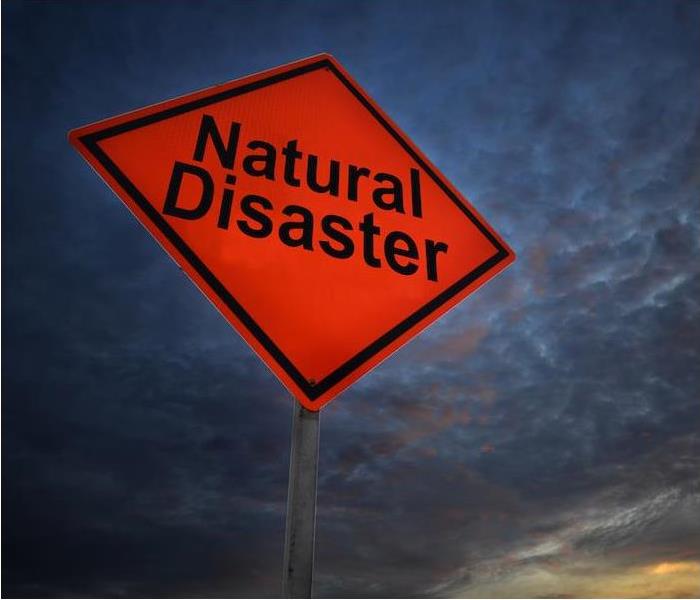 Have you sustained property damage and feeling overwhelmed? We are here to help, contact SERVPRO of Cambridge/Belmont.
Have you sustained property damage and feeling overwhelmed? We are here to help, contact SERVPRO of Cambridge/Belmont.
If your home sustains damage for any reason, it can be a frustrating and fraught time for your entire family. There are many emotions that people will cycle through after a fire or other disaster, and having to go through the process of handling the damage can further complicate the recovery process.
While there are always difficulties to consider throughout the recovery period, having a good restoration company on your side can truly make all the difference.
We will work with you and your insurance company to make the entire procedure as seamless as possible, and with our restoration-first mentality, we will do our best to preserve your belongings so you do not have to replace them.
How Our Restoration-First Mentality Helps Our Clients
We can help you save money on your insurance. Homeowners insurance is designed to help you cover the cost of losses in case of many types of damage, but filing a claim can also raise your premium tremendously. In the event of water damage, for example, the average claim is over $10,000. We can help lower the cost you have to claim with insurance by restoring objects where possible.
We can protect your sentimental items. We have invested in some of the most advanced restoration equipment available to us, which is what enables us to save items that may seem like a lost cause. In the past, we have been able to restore irreplaceable objects such as family photos, documents and art, as well as valuables such as electronics. Some things can’t be replicated, which is why we do our best to keep these sentimental objects intact.
We make sure your home feels like home again. As we have helped many people in the community with losses and damage, we understand all the complex emotions involved. To help make the return home easier, we focus primarily on restoring your house to its pre-damaged state and placing your belongings just how they were before the damage occurred. This will help your house feel like home again so your family can focus on healing.
If you have damages and are feeling overwhelmed, we are here to help. You can call us as soon as you need to in order to begin the restoration process. Contact us today to learn more.
How Can I Check for Water Damage in My Home? | SERVPRO® of Cambridge/Belmont
9/18/2020 (Permalink)
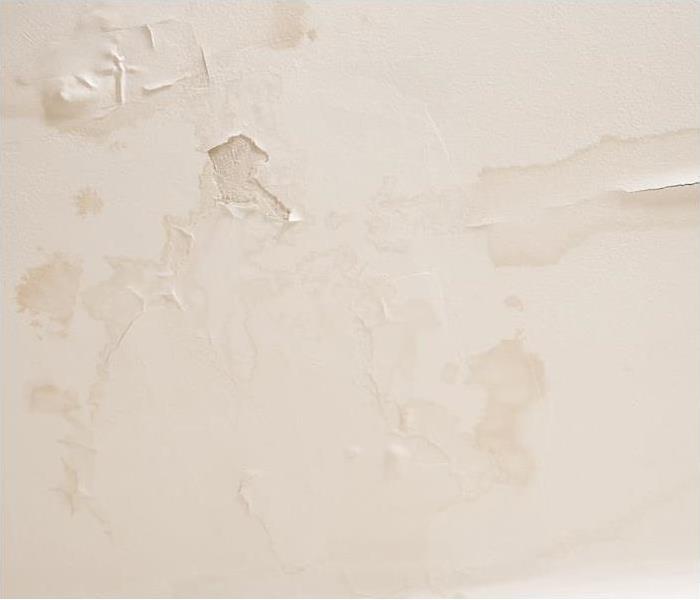 Do you have any water damage to your home? Contact SERVPRO of Cambridge/Belmont, we are your local water restoration experts.
Do you have any water damage to your home? Contact SERVPRO of Cambridge/Belmont, we are your local water restoration experts.
When it comes to keeping your home structurally sound and well-maintained, watching out for water damage is one of the best things you can do. Not only can water damage cause cosmetic problems and lead to unsightly spots throughout the home, but it can also significantly damage structures when it is allowed to fester.
Fortunately, homeowners can easily perform their own routine checks to look for water damage throughout the house, which can help them catch issues early and avoid having to make costly claims on their homeowners insurance.
Tips for Doing an At-Home Water Damage InspectionInspect your walls and ceilings. Drywall and paint can quickly show water damage, making walls and ceilings one of the best and easiest places to begin your search. Any discoloration, particularly soft spots or peeling areas of paint, might indicate that there is water damage present. It is also wise to check up on your external window and door frames for weather-related leakage.
Don’t forget to look down. It is not uncommon to find water damage that shows itself in the floor, since that is the lowest spot in every room. Water can pool and begin to saturate the subfloor, not causing surface issues but instead showing up with warped floorboards, buckling or a general smell of mildew, which should always be checked out.
Inspect your roof. It is important to keep your roof in good shape to make sure it is keeping out all the elements it can when it rains. A pair of binoculars can give you valuable insights into the quality of your roof and help you spot any loose shingles or peeling places. Additionally, it is smart to check that your gutters are doing their job the next time it rains to prevent water from building up around your foundation.
Pay close attention to the basement. Though basements have a reputation for being damp, if you have moisture problems under your home it can be a serious issue. Look for signs of water running down foundation walls or musty odors, which might indicate there is too much moisture present that should be addressed.
If you have water damage anywhere in your home, we are here to help. You can contact us at any hour to learn more about our services or to report damages. Get in touch today to speak with a water damage restoration expert.
What Sets Our Storm Restoration Methods Apart? | SERVPRO® of Cambridge/Belmont
9/1/2020 (Permalink)
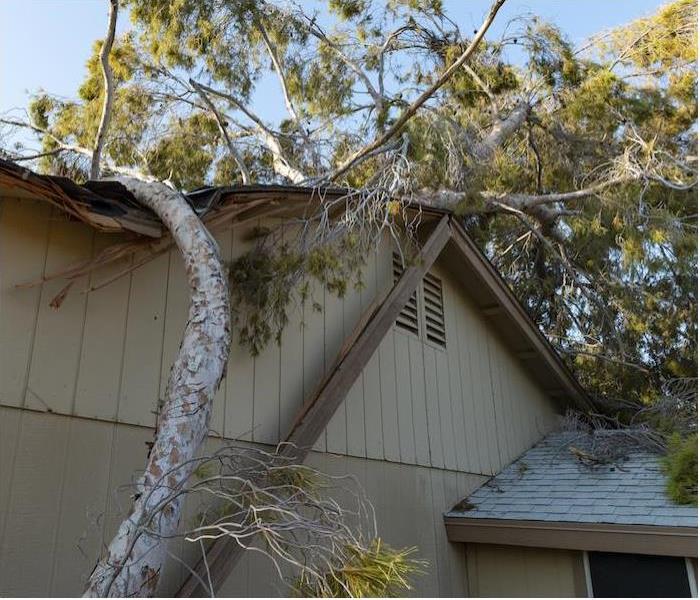 Choosing the right restoration company is crucial to getting things back to normal. Call SERVPRO of Cambridge/Belmont to set up an appointment.
Choosing the right restoration company is crucial to getting things back to normal. Call SERVPRO of Cambridge/Belmont to set up an appointment.
Severe weather is a powerful thing, and it can cause significant damage to homes, property and businesses. In recent years, the cost of treating storm damage has continued to rise nationwide, but not treating it can lead to much larger problems with your structures later on.
Choosing the right restoration company is one of the most important things you can do if you have sustained storm damage. They will be responsible for taking care of your building and belongings, as well as making sure that every aspect of the damage is thoroughly handled.
Picking the right company for the job will provide you with great peace of mind and ensure that any damage is properly addressed.
Why We Have Become Leaders in Storm Restoration
Our reputation has been earned over time. We are proud to be not only a member of the local community but also to be considered a leader in the restoration industry as a whole. We have worked hard to earn our reputation, and we are proud of it. After disasters, there are many scams afoot that take advantage of those who are vulnerable, but when you trust us, you can be certain you are getting the best in the business.
Our resources allow us to take on more jobs. If there is a large area that is impacted by a storm, you do not want a company that is struggling to keep up with demand to be in charge of your restoration. Thanks to our national partners, we can handle disasters that are any size with the same service and expertise we always do. When there is a large storm, we can call for backup in the way of extra resources and workforce to handle the issues.
Our emergency response is truly 24⁄7. Severe weather never takes a day off, so we won’t either. You can call us 24 hours a day, 365 days a year to report your damage and receive exceptional service, so as soon as you discover you need us, we can be there. No matter what time you discover you have received damage, you can call us and be certain you will receive a rapid response from our expert technicians.
When you have damage from a storm to your home or commercial building, you can always depend on us to handle it. Contact us at any hour to see our exceptional service in action.
What Sets Our Storm Restoration Methods Apart | SERVPRO® of Cambridge/Belmont
8/11/2020 (Permalink)
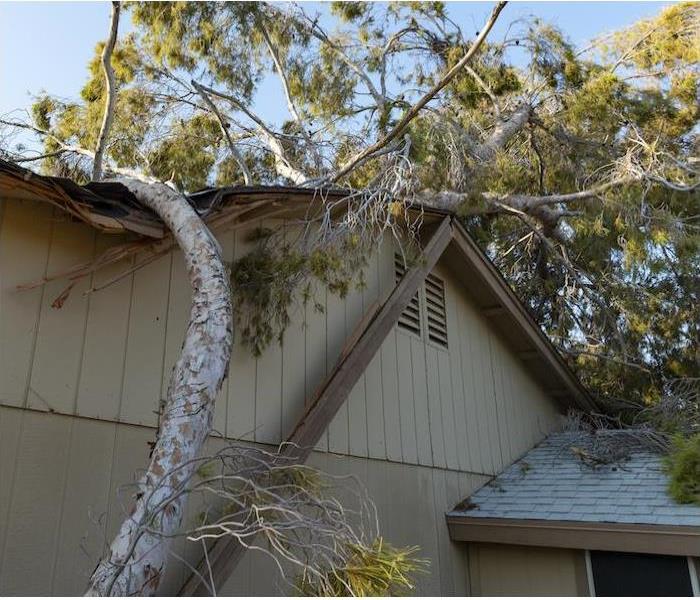 Choosing the right restoration company is crucial to getting things back to normal. Call SERVPRO of Cambridge/Belmont to set up an appointment.
Choosing the right restoration company is crucial to getting things back to normal. Call SERVPRO of Cambridge/Belmont to set up an appointment.
Severe weather is a powerful thing, and it can cause significant damage to homes, property and businesses. In recent years, the cost of treating storm damage has continued to rise nationwide, but not treating it can lead to much larger problems with your structures later on.
Choosing the right restoration company is one of the most important things you can do if you have sustained storm damage. They will be responsible for taking care of your building and belongings, as well as making sure that every aspect of the damage is thoroughly handled.
Picking the right company for the job will provide you with great peace of mind and ensure that any damage is properly addressed.
Why We Have Become Leaders in Storm Restoration
Our reputation has been earned over time. We are proud to be not only a member of the local community but also to be considered a leader in the restoration industry as a whole. We have worked hard to earn our reputation, and we are proud of it. After disasters, there are many scams afoot that take advantage of those who are vulnerable, but when you trust us, you can be certain you are getting the best in the business.
Our resources allow us to take on more jobs. If there is a large area that is impacted by a storm, you do not want a company that is struggling to keep up with demand to be in charge of your restoration. Thanks to our national partners, we can handle disasters that are any size with the same service and expertise we always do. When there is a large storm, we can call for backup in the way of extra resources and workforce to handle the issues.
Our emergency response is truly 24⁄7. Severe weather never takes a day off, so we won’t either. You can call us 24 hours a day, 365 days a year to report your damage and receive exceptional service, so as soon as you discover you need us, we can be there. No matter what time you discover you have received damage, you can call us and be certain you will receive a rapid response from our expert technicians.
When you have damage from a storm to your home or commercial building, you can always depend on us to handle it. Contact us at any hour to see our exceptional service in action.
Unwanted Fires and its affect on your property
8/11/2020 (Permalink)
 Be prepared, Call SERVPRO
Be prepared, Call SERVPRO
Fire damage is the physical damage to a property as a result of burning. The damage can be directly caused by flames or indirectly due to smoke and other substances emitted by fire such as soot. Smoke and soot can be as damaging to your property as actual flames. This is because the smoke will create black clouds throughout the walls, ceiling, and porous materials in your property. There is also a strong odor associated with smoke that is very hard to remove from porous materials such as clothes, carpets and furniture. In the unfortunate event your home or business experiences fire damage (flames, smoke or soot) we recommend you enlist the help of a professional to help you clean your property as thoroughly as possible. If a firefighter was called to your property the likelihood that water damage occurred is highly likely. In this event you have to make sure that the water is dried as quickly as possible to prevent the possible growth of mold. When mold grows it will spread quickly, cause possible health issues and increase the cost of remediation. For this reason edge on the side of caution and just hire a professional in the beginning. We at SERVPRO of Cambridge/Belmont will ensure we get everything done right the first time so you can have your peace of mind and property back!
Don't Overload Your Outlets!
8/11/2020 (Permalink)
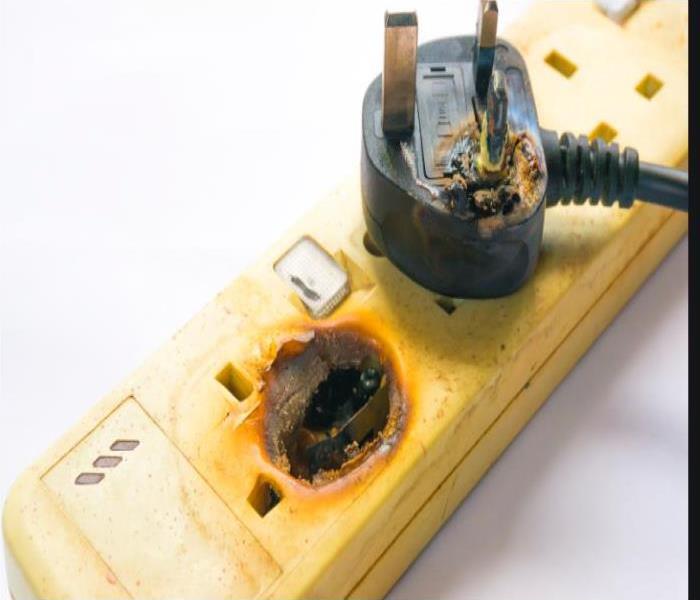 Make sure you check circuits so they are not overloaded
Make sure you check circuits so they are not overloaded
Overloaded circuits are one of the leading cause of fires in homes. It can be as simple as an overloaded outlet! There is too much energy which the conductor does not have the capacity to disperse. The energy build up converts to heat. The heat build up with the static from the electricity cause fire to ignite.
If a fire starts in your home due to an overloaded circuit do not try to handle the fire on your own as you can risk electrocution. Instead, call 911 and get yourself and your family to a safe place. Once the fire has been put out call your insurance company and a remediation company like us to help get your home back to pre loss condition.
We are always here to help in the event of a fire in your home or commercial space. We offer local support and expertise 24/7 to ensure you are taken care of! Give SERVPRO Cambridge/Belmont a call at 617- 864-7378.
Emergency Ready Profile for Your Business
8/11/2020 (Permalink)
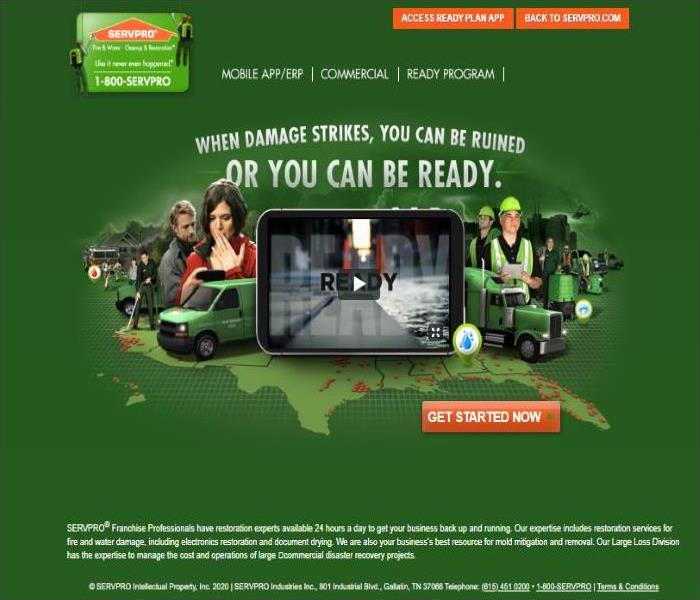 Be ready for any disaster with our Emergency Ready Profile
Be ready for any disaster with our Emergency Ready Profile
When accidents strike they do not care whether you are prepared or not! As a business it is vital that you know what to do, who to call, and how you will bounce back in the event of an emergency. The fact is that as many as one in four businesses that suffer a major disaster will not reopen afterward. Do not let your business become a statistic!
Here at SERVPRO of Cambridge/Belmont we pride ourselves in being a resource to the businesses in our community. It is important to us that the businesses in our community and surrounding communities survive. SERVPRO has a Free Emergency Ready Profile that your business can use to help prepare you in the event of a major disaster. Studies show that the faster you can react to a disaster it lowers the damage done. The profile helps store everything you need such as contact information, locations of shut off valves, pictures and so much more to help in the event there is a disaster. The profile you create for your business is also useful to us as it will inform us of where our vehicles should park in the event of a loss. This is helpful in the event you do not want to bring public attention to the fact that your business is experiencing some kind of loss.
We understand you may already have a facilities manager or be a facilities manager who knows the ins and outs of the building. The profile is not meant to replace a facilities manager in any way – it’s a resource for them. Anything can happen and as a business you want to make sure whoever is nearby can pick up your profile and depending on the type of disaster know exactly who to contact and what to do if anything.
The Emergency Ready Profile can be distributed in digital form and/or hard copy. We understand that as a business too much time cannot be wasted, for that reason the profile can be completed within 30 minutes. If you are interested in creating an Emergency Ready Profile for your business Call us today 617- 864-7378. We will set up a time for an office representative to go to your business to fill out the profile for you for free!
Flooding in your Business and Its Challenges
8/11/2020 (Permalink)
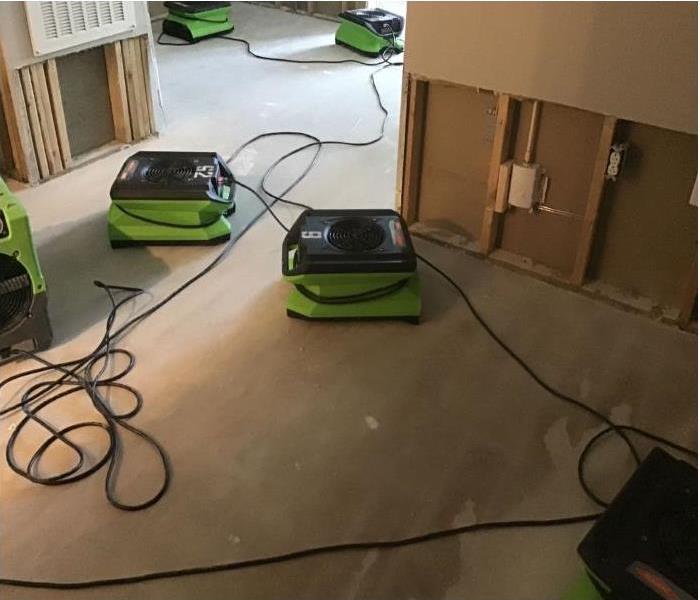 We specialize in the cleanup and restoration of commercial and residential property after a water damage event
We specialize in the cleanup and restoration of commercial and residential property after a water damage event
Flooding and water damage events at City of Cambridge commercial properties are often complex with numerous issues that require a knowledgeable and flexible response. Whether we’re dealing with a relatively small water cleanup scenario or a large scale event, we work quickly to assess each unique situation and isolate the damaged area. In many instances, normal operations can continue in a temporary space while we restore your facility.
Our professionals are trained to be mindful of legal and environmental concerns and strive to fully restore the damaged area while working within your budgetary constraints. We understand that every hour spent cleaning up is an hour of lost revenue and productivity. So when an emergency situation arises in your business, give us a call and we’ll be there fast with the help you need.
About SERVPRO of Cambridge/Belmont
SERVPRO of Cambridge/Belmont specializes in the cleanup and restoration of commercial and residential property after a water damage event. Our staff is highly trained in property damage restoration. From initial and ongoing training at SERVPRO’s corporate training facility to regular IICRC-industry certification, rest assured our staff is equipped with the knowledge to restore your property. If you are a property of facilities manager in Cambridge or Belmont and you have questions regarding our services, please call (617) 864-7378
A/C Maintenance is Always Necessary
8/11/2020 (Permalink)
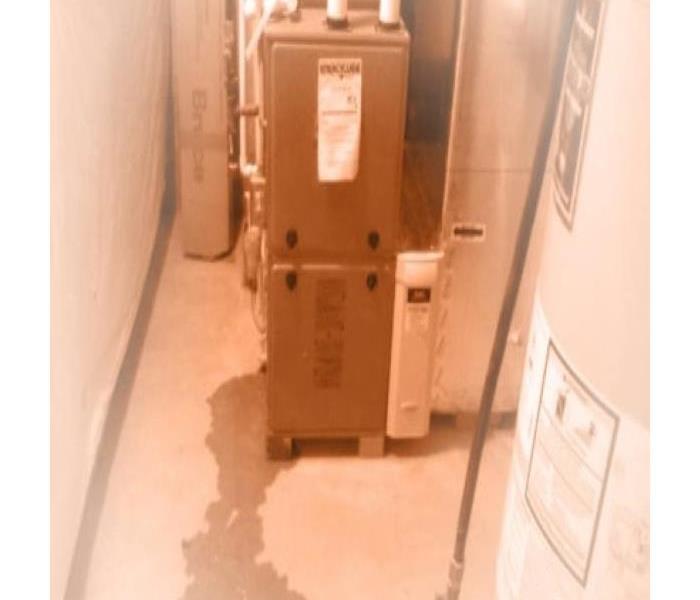 Constant maintenance of your A/C unit could save a business thousands
Constant maintenance of your A/C unit could save a business thousands
Overtime, in commercial buildings A/C units can slowly take a turn for the worse. There can be many complications that can lead to colossal damage. A/C units should be checked for leaks and serviced every year, preferably in the spring, to make sure an incident does not happen in the future. As your A/C system runs, over time it accumulates dust and dirt in key areas that affect its efficiency. Leaving your A/C unchecked unit can make for your A/C unit to lose five percent of its operating efficiency each year.
In Watertown, Monday morning, SERVPRO of Cambridge/Belmont (617-864- 7378) responded to a call from a customer saying that there A/C unit had finally broken and there were leaks coming through the ceiling because the A/C unit was located on the second floor. There was not only water damage to the ceiling but also to the merchandise that was located on the first floor. This is a situation that could have been prevented and also could have saved the company a lot of money and headache by having there A/C unit checked each year.
SERVPRO of Cambridge/Belmont (617-864- 7378) took the job and were quick, very reliable, and trustworthy. This job was taken care of in just one short day. For any commercial needs call us we are here at your convenience 24/7, 365 days a year. Let us be the company that gets your business back to “Like it never even happened.”
Mold Growth in Schools
8/11/2020 (Permalink)
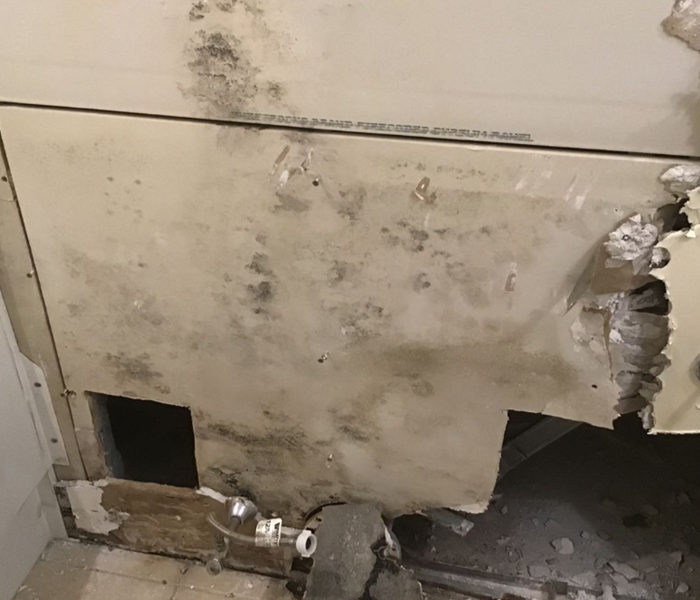 Keep indoors and surfaces moisture free to avoid possibly mold growth
Keep indoors and surfaces moisture free to avoid possibly mold growth
Mold can be found almost anywhere; they can grow on virtually any organic substance, as long as moisture and oxygen are present. There are molds that can grow on wood, paper, carpet, foods, and insulation. When excessive moisture accumulates in buildings or on building materials, mold growth will often occur, particularly if the moisture problem remains undiscovered or unaddressed. It is impossible to eliminate all molds and mold spores in the indoor environment. However, mold growth can be controlled indoors by controlling moisture indoors.
Molds reproduce by making spores that usually cannot be seen without magnification. Mold spores waft through the indoor and outdoor air continually. When mold spores land on a damp spot indoors, they may begin growing and digesting whatever they are growing on in order to survive. Molds gradually destroy the things they grow on.
Many types of molds exist. All molds have the potential to cause health effects. Potential health concerns are an important reason to prevent mold growth and to remediate/clean up any existing indoor mold growth.
Since mold requires water to grow, it is important to prevent moisture problems in buildings. Moisture problems can have many causes, including uncontrolled humidity. Some moisture problems in buildings have been linked to changes in building construction practices during the 1970s, 80s and 90s. Some of these changes have resulted in buildings that are tightly sealed, but may lack adequate ventilation, potentially leading to moisture buildup. Building materials, such as drywall, may not allow moisture to escape easily. Moisture problems may include:
- Roof leaks
- Landscaping or gutters that direct water into or under the building
- Unvented combustion appliances
- Delayed maintenance or insufficient maintenance are also associated with moisture problems in schools and large buildings
Moisture problems in portable classrooms and other temporary structures have frequently been associated with mold problems. When mold growth occurs in buildings, health effects may be reported by some building occupants. Remediators should avoid exposing themselves and others to mold-laden dusts as they conduct their cleanup activities. Caution should be used to prevent mold and mold spores from being dispersed throughout the air.
If you are a facilities manager, maintenance supervisor or property manager and you have a mold issue; please call SERVPRO of Cambridge/Belmont (617) 864-7378
Hot Water Heaters - When to Replace
8/11/2020 (Permalink)
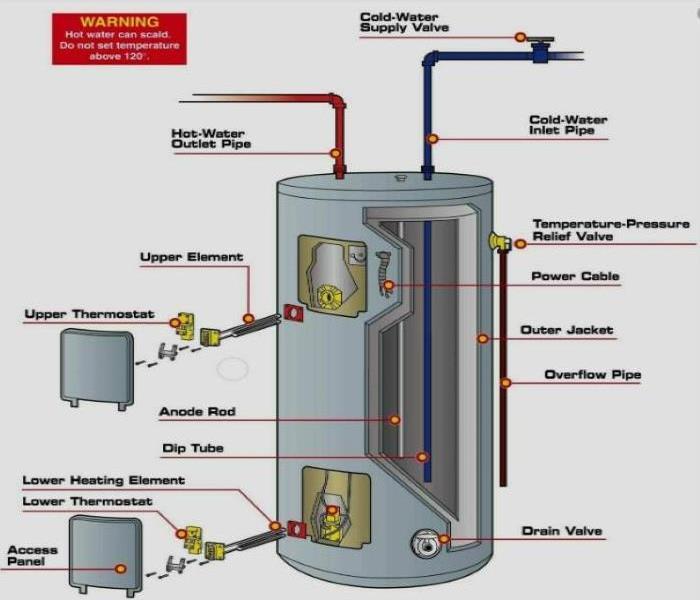 Check for signs that your water heater is ready for service or replacement
Check for signs that your water heater is ready for service or replacement
Water heaters are essential elements of our home. We use them in daily activities such as taking a bath, using the dishwasher and using the washing machine. But because we use them frequently, it’s sometimes easy to take them for granted and forget that they need to be maintained. Failing to do so will result in malfunctions and problems and eventually, replacing your water heater. Taking notice of the first signs of a problem can help you repair your water heater before it becomes worse.
You don’t have to be an expert to spot the first signs of trouble. All you need to have is a keen sense of observation so that your water heater can be repaired.
Here are three signs that indicate your water heater needs to be repaired.
Hot water has off smell or off color. The first instance that you notice your hot water has an off smell or has a rusty color, that’s something that you need to check out. The smell could be the result of a rusty anode rod in the water heater. There is no need to worry since the anode rod can be replaced that will then eliminate the bad odor. Bacteria growth also causes bad smells. This happens when the hot water has not been used or has been turned off for quite some time or when the thermostat is set at a very low level.
Corroded pipes can also cause an off color in your water. This can be solved by installing a water softener or by replacing the plumbing. If you also see a lot of sediments in the water, it’s time to have the water heater repaired.
Water is not hot enough, too hot, not strong enough or there is none at all. When there is no water, check first that your water heater has power and is working fine. If it is, have it inspected by a plumber. If water is not enough, this could be due to an undersized water heater and is a common situation when a lot more people are using the water heater. This could also be caused by the presence of mineral deposits inside the water heater tank. When water is too hot or not hot enough, you may have to adjust the temperature dial of the water heater. If there is no change in temperature, have the water heater checked and repaired.
Strange noises and leaks. Leaks coming from your water heater could lead to flooding. In the same way, strange noises like pops, bangs, gurgles, and the like are clear indicators that something is wrong with your water heater. This is usually caused by a buildup of sediments inside the tank. A boiling sound, however, could mean the water heater is overheating or that pressure is building up inside the tank. All these have to be addressed immediately to prevent further problems.
It’s important to have your water heater repaired as soon as you see these signs. This will help you save on costs, prevent further damage, and avoid an untimely replacement of your unit.
If your hot water heater malfunctions and creates a water damage, please call SERVPRO of Cambridge/Belmont (617) 864-7378 to assist you with the water damage.
Leaky Dishwasher
8/11/2020 (Permalink)
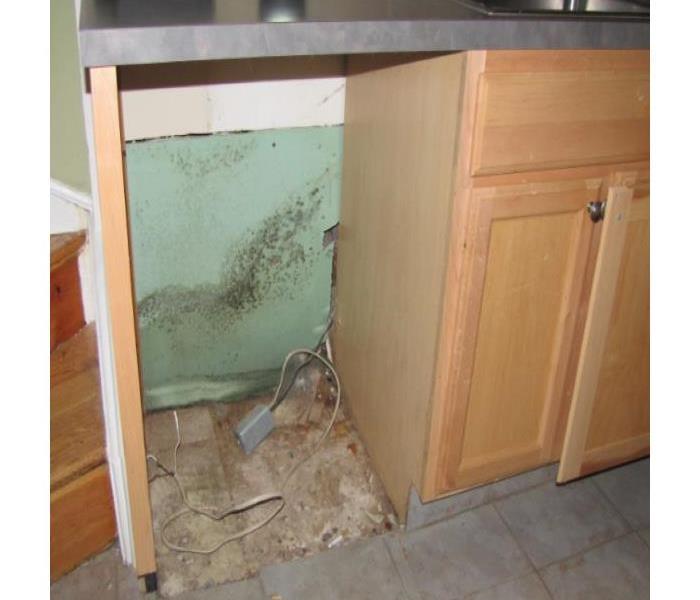 Leaky Dishwashers can be very expensive
Leaky Dishwashers can be very expensive
When to Fix: Common Dishwasher Issues
Typical dishwasher problems involve broken mechanical parts. Think a broken soap dispenser, dislodged sliding rack wheel, or broken sprayer arm.
When a dishwasher won’t drain, there’s usually something in the drain process that shouldn’t be there like lemon seeds, glass, plastic wrap or even bobby pins. “With a high-end dishwasher, you’ll get an OE overflow code. Often I can disconnect the machine, lean it forward, and drain it for a fix without having to replace any of the control boards,” says Craig.
In general, if you have to fix an issue but the unit is relatively new, it makes sense to fix if repair costs are under half the cost to replace the appliance. A good unit can last you 15-20 years if it’s well-maintained.
When to Replace: Do the Math
Once you start to replace the electronic boards, it gets expensive. On high-end dishwashers (KitchenAid, Samsung, Bosch) if the user control panel and the power control unit go out at the same time, it’s not worth it to repair it. “The parts alone will exceed $600 wholesale,” says Craig.
If a dishwasher is more than 7-10 years old and you’re paying more than half of the original cost in repairs, you should consider buying a new one.
Replacing a door latch can get pricey - this can run $200-250 for parts and labor and you can easily avoid this repair. If you want to add in dishes, don’t just pull it open. Hit pause and let the automatic lock release. It will save you money!”
Leaking is a big problem around the door or underneath where the motor or pumps assembly are. Costs vary depending on how old the unit is or if the control board is gone. Contact your local department store for most up to date pricing.
How to Avoid Issues
Don’t overload the machine and when you first have a problem, look at your model number and do some online research to learn about your machine. There might be an easy DIY fix for your symptoms. Or the manufacturer may offer a warranty.
Don’t run a garbage disposal at the same time the dishwasher is running. The two share the same plumbing, so if they’re going at the same time, you are more apt to kick debris into the dishwasher discharge line and clog it.
A little preventative maintenance goes a long way. Have a pro come every two years, clean out your lines and any calcium deposits, and get you running clean again. If the dishwasher does leak, call the preferred professional, SERVPRO of Cambridge/Belmont (617) 864-7378.
Are you Ready for Fall?
8/11/2020 (Permalink)
 Fall in Boston
Fall in Boston
- Get Your HVAC Serviced
Your AC has been faithfully chugging along all summer. Now it’s time to give it a rest. Before you tuck it away for the winter, be sure to clean the coils. You can find YouTube videos showing how to do this safely.
If you’re done using the AC for the year, cover the outdoor unit to keep debris and ice from damaging your system. Then move indoors and switch your thermostat from cooling to heating. Change the filter, too. You should also make sure all indoor vents are uncovered, and maybe clean your own air ducts while you’re at it.
- Clean the Gutters
Clogged gutters will channel water down the side of your home where it eventually damages the foundation and can flood your basement. So get a ladder and pull debris out of the gutters by hand. If you have a one-story house, you can use this leaf-blower attachment to blast the stuff. Still too much work? Hire a gutter cleaning company — they’re worth it.
- Drain and Store Your Lawn Equipment
Over time, unused fuel goes through chemical changes that create deposits and destroy your lawn equipment. So drain the tanks of your lawn mower, leaf blower, and weed eater before storing them. Fall is also an excellent time to get your lawn mower blades sharpened so they’ll be ready for next spring.
- Turn Off and Drain Outdoor Faucets and Sprinklers
Outdoor hoses and pipes will burst if they’re full of water when the temperatures plunge below freezing. While replacing a garden hose isn’t that difficult, it’s incredibly expensive to dig up your lawn’s sprinkler system to deal with burst pipes. So, disconnect your outdoor hoses and turn off the outdoor water supply. Open outdoor faucets and run your sprinkler system to drain any remaining water. Then take these steps to prevent frozen pipes.
- Inspect and Clean Your Chimney
Nothing is charming about filling your home with soot, smoke, and carbon monoxide because your chimney isn’t working correctly. Even gas fireplaces need an inspection to ensure the pipe is free of cracks that can allow smoke to enter your home. This job is best left to pros. The cost runs around $100-200.
- Get Your Snow Blower Ready
By the time winter arrives, it’s often too late to find snow gear. Stock up on such things in autumn when they’re plentiful and lower-priced. Even if you think you’ve got enough left from last year, or that your snow blower or shovel are in good shape, take a few moments to check. You don’t want to get caught out in the cold finding out you’re wrong.
Don’t Delay
As with most home maintenance tasks, preparing your home for fall isn’t tricky, just time-consuming. Putting it off causes problems that can wind up costing you an enormous amount of money, though, so set aside time on the next couple of weekends to get these jobs done.
If you have water, smoke or mold issues, please call SERVPRO of Cambridge/Belmont to assist you (617) 864-7378
Fall Checklist
8/11/2020 (Permalink)
 Fall Season checklist
Fall Season checklist
Electrical Cords and Outlets
Repair or replace any loose or frayed wires on all electrical devices. Follow the path of cords; make sure there are no cords are under rugs or across doorways. Rethink extension cords; consider adding electrical outlets where you currently rely on extension cords.
Feel all outlets and plugs to see if any are warm; if so, have an electrician check them. Do not overload any one outlet. Be certain that you have no more than one high-wattage appliance plugged into a single outlet.
Inspect water heaters annually.
The temperature should be set at no higher than 120 degrees to prevent burns. Never leave children alone near a water heater, and keep combustible and flammable materials well away from it.
Smoke and Carbon Monoxide Detectors
Install smoke alarms and carbon monoxide detectors generously.
These should be on each floor of the house, covering all sleeping areas.
Test alarms monthly and replace batteries bi-annually or sooner if alarm chirps
Fire Extinguishers
Place extinguishers strategically. Keep one in the kitchen and one on every floor. And learn how to use them. Replace extinguishers when necessary.
Follow the schedule suggested by the manufacturer, and always replace an extinguisher that appears damaged.
If you have water or fire damage, please call SERVPRO of Cambridge/Belmont (617) 864-7378
Common Places for Mold Growth
8/11/2020 (Permalink)
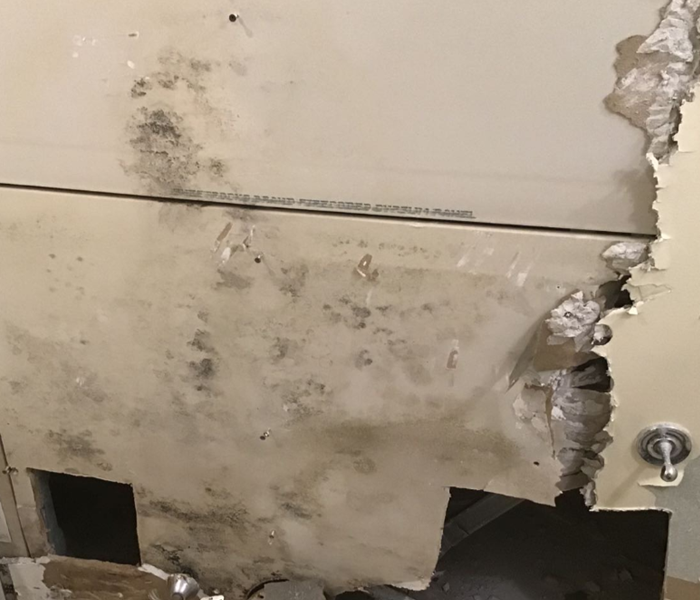 Carpeting, Furniture, Closets, Clothes, HVAC Systems, Drywall, Ceiling, and Flooring are common places for mold growth
Carpeting, Furniture, Closets, Clothes, HVAC Systems, Drywall, Ceiling, and Flooring are common places for mold growth
Mold is defined as a fungus that can spread rapidly and can take over you home and work space rather quickly. The most common places for mold to hide is, Carpeting, Furniture, Closets, Clothes, HVAC Systems, Drywall, Ceiling, and Flooring.
Carpeting
No matter how small the amount of carpet is that has liquid dropped on it, it is always a good idea to take precautions and check to see if mold has started to grow in or underneath the surface. Some of the smallest spills could lead to the biggest problems over time if not taken care of properly.
Furniture
Most people do not realize that when water or liquid is spilled on a piece of furniture it could potentially be a breeding ground for mold. Liquid can seep into the fabric and if not dried correctly could start to spread through the piece of furniture
Closets
Closets would be the last place that one would think mold would grow in. Mold spores are found in the air and can land on anything and everything throughout your home. Mold spores tend to grow more rapidly in dark, damp, or humid environments. That is why your closet can be a good breeding ground for mold spores.
Clothes
One might ask mold can grow in clothes?! Not to panic if taken care of properly this can be avoided. Most people organize their closets in conjunction with what season is approaching. Last season's clothes go into the back of the closet to sit there until it comes around again. Which mean out of sight out of mind. This is when mold spores can start to grow. Some clothes after sitting for so long can come out and smell musty. A suggestion for SERVPRO of Cambridge/Belmont 616-864-7378 is to wash your clothes each season before wear. If mold does become a problem in your closets feel free to contact us so we are able to get your closet back to “Like it never even happened.”
HVAC Systems
What is your HVAC system? You probably think of it as the thing that keeps your home warm or cool depending on the season. What it really is, is a series of long fully enclosed duct work that traverse every part of your home. These are the places that never see light and can collect several different types of bacteria, including mold spores. This is something that can be easily prevented. Getting duct work cleaned each year can help prevent from a catastrophic mold over take throughout your home.
Drywall
Drywall loves to absorb anything and everything that comes into contact with it. Some examples are odors, bacteria, smoke, or moisture. Whenever something is absorb it can be naked to the eyes. You will not be able to notice any damage that has taken place unless it starts to smell or starts to peep through onto the drywall.
Ceiling
Most people will not notice anything wrong with the ceiling until it is visible. Which means, at that time mold has had a chance to grow throughout it. This usually happens when there is a overflow of a toilet or bathtub. Do not fret! SERVPRO of Cambridge/Belmont 616-864-7378 has the tools to help fix your mold problem. Give us a call we are available 24/7 365 days a year.
Flooring
One detail that you cannot forget about is when flooring gets wet the moisture might have disappeared on the top but that does not mean that the liquid is not deep under the surface waiting to start breeding. More often than not moisture can get underneath and become a breeding ground for mold. Some examples of where mold can grow in a moist or humid area is your attic, storage room, crawl space, or inside your washer and dryer. Some tips to make sure that your floor is staying clean and dry is to make sure that spills, when they happen, are taken care of and not just left to seep into the floor to cause damage.
Smoke/Soot - Get the Facts
7/31/2020 (Permalink)
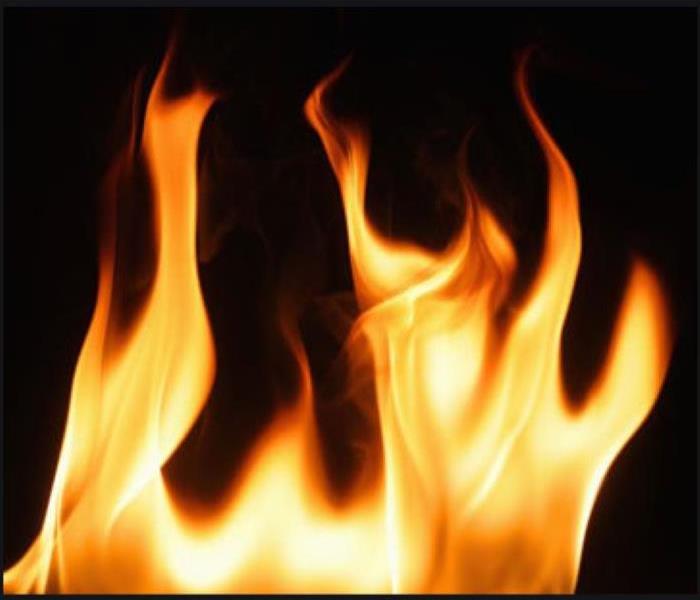 Smoke can cause a lot of damage
Smoke can cause a lot of damage
Smoke and soot is very invasive and can penetrate various cavities within your home, causing hidden damage and odor. Our smoke damage expertise and experience allows us to inspect and accurately assess the extent of the damage to develop a comprehensive plan of action.
Smoke and soot facts:
- Hot smoke migrates to cooler areas and upper levels of a structure.
- Smoke flows around plumbing systems, seeping through the holes used by pipes to go from floor to floor.
- The type of smoke may greatly affect the restoration process.
Different Types of Smoke
There are two different types of smoke–wet and dry. As a result, there are different types of soot residue after a fire. Before restoration begins, SERVPRO of Cambridge/Belmont will test the soot to determine which type of smoke damage occurred. The cleaning procedures will then be based on the information identified during pretesting. Here is some additional information:
Wet Smoke – Plastic and Rubber
- Low heat, smoldering, pungent odor, sticky, smeary. Smoke webs are more difficult to clean.
Dry Smoke – Paper and Wood
- Fast burning, high temperatures, heat rises therefore smoke rises.
Protein Fire Residue – Produced by evaporation of material rather than from a fire
- Virtually invisible, discolors paints and varnishes, extreme pungent odor.
Our Fire Damage Restoration Services
Since each smoke and fire damage situation is a little different, each one requires a unique solution tailored for the specific conditions. We have the equipment, expertise, and experience to restore your fire and smoke damage. We will also treat your family with empathy and respect and your property with care.
Have Questions about Fire, Smoke, or Soot Damage?
Call Us Today – (617) 864-7378
Most Common Causes of Fire in the Workplace
7/31/2020 (Permalink)
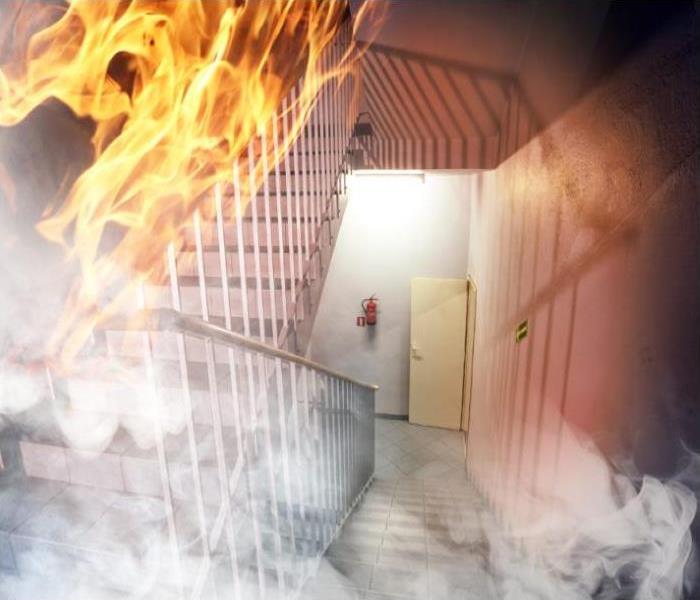 Workplace fires can be stressful but knowing what to do will certainly help!
Workplace fires can be stressful but knowing what to do will certainly help!
Electrical Fires
Over 25% of all fires are linked to a malfunction of either a piece of electrical equipment, wiring, or both. Electricity is a common source of ignition for major fires. One way to avoid problems with electrical fires is to establish an electrical safety program.
All employees should be thoroughly familiar with the safety procedures for their particular jobs. To maximize his or her own safety, an employee should always use tools and equipment properly. Extension cords must be inspected before use, and those found questionable, removed from service and properly tagged. Damage or inadequate maintenance can cause equipment to deteriorate, resulting in unsafe conditions.
Flammable and Combustible Materials
There are thousands of chemicals in use in the modern American workplace. One of the most prevalent dangers of these chemicals is their flammability or combustibility. Improper handling of flammable materials brings a great risk of fire. When a flammable liquid is spilled, vapors begin to form immediately. It is the vapors that will ignite, and which pose the greater danger.
Flammable liquid spill cleanup should begin immediately. Vapors will continue to build until the liquid is removed, and they can be ignited by a variety of sources in the average workplace. The best way to avoid fire caused by these materials is to follow all OSHA guidelines when dealing with flammables.
Human Error
The most common reason for a sprinkler system failure is human error. Often times the water supply was turned off at the time of the fire. The success of fire prevention strategies depends primarily on pre-planning, preparation, equipment quality, and the readiness of personnel. Employees and loss prevention practitioners must be knowledgeable about the proper use of extinguishers. If the wrong extinguisher is used, a fire may become more serious.
General Negligence
Negligence is another common cause of fire in the workplace. It’s slightly different from fires caused by human error. Negligence occurs when an employee does not follow established procedures and knowingly undertakes an activity that is a potential fire hazard.
Fire caused by negligence can be the result of:
- Hot surfaces too close to heating equipment
- Open flame that’s not properly located or protected
- Not following smoking restrictions or careless disposal of butts, ashes, and matches
Good common sense, self awareness, and close adherence to policy are a great way to avoid fires caused by general negligence. Posting fire safety signs in common areas is another way to keep fire safety at top of mind.
Arson
The premise behind arson prevention, like other prevention programs, is to address the opportunity to commit the crime. Arsonists, like other criminals, typically prefer to start fires in locations that are secluded or hidden. Prevention programs often suggest improving the surveillance in these areas by lighting the area, removing visual obstructions to natural observation, and moving the targets such as dumpsters.
If your company, please call SERVPRO of Cambridge/Belmont (617) 864-7378 to assist you with the cleanup.
Flooding & Back ups after Heavy Rain
7/31/2020 (Permalink)
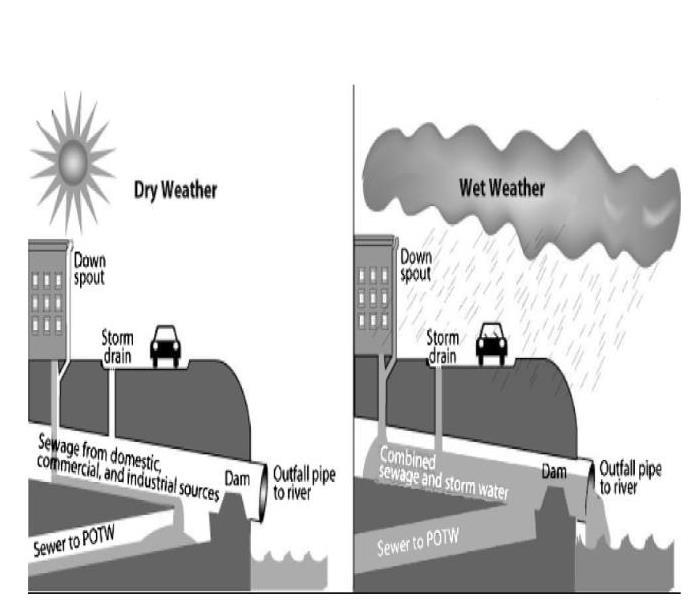 city sewage diagram
city sewage diagram
The heavy rains that occurred in the Cambridge/Belmont area caused not only flooding but also many sewage back- ups. The town & cities sewage system gets overwhelmed causing the sewage to flow into basements through toilets and sinks. When a storm drain suffers a partial or complete blockage, rain water gets trapped in the pipes and must go somewhere. Unfortunately, the only exit point is the pipe servicing your home that connects to the sewer line. With nowhere left to go it goes up through your pipe, pushing whatever refuse and filth it’s carrying into your basement and other areas of your home. Contact your local plumber to install a backwater valve to prevent this from happening to you! If your basement gets flooded or has sewage issues, please call SERVPRO of Cambridge/Belmont (617) 864-7378 to assist you. Did you know that SERVPRO of Cambridge/Belmont also helps Commercial and Industrial customers?
24 Hour Emergency Water Damage Service
7/31/2020 (Permalink)
 24 Hour Emergency Service. We are here to help!
24 Hour Emergency Service. We are here to help!
24 Hour Emergency Water Damage Service
SERVPRO of Cambridge/Belmont is available 24 hours a day for water emergencies, large or small. When you are dealing with water damage, immediate action is crucial. A delay of just a few hours can greatly increase the severity of the water damage.
Call SERVPRO of Cambridge/Belmont Today - (617) 864-7378
We understand that when you call us, you may be feeling confused, stressed, and vulnerable. You need an expert to guide you through this crisis. SERVPRO of Cambridge/Belmont has the specific water damage training and experience to help you through this tough time. We specialize in water damage restoration—in fact, it's the cornerstone of our business.
What to Expect
When you call, we will ask several questions regarding your water damage emergency. These questions will help us determine what equipment and resources to bring, including how many trained SERVPRO Professionals may be needed.
Our SERVPRO Representative will ask several questions:
Your name and contact information
Your insurance information (if applicable)
The street address of the water-damaged home or business
When did the flooding or water damage occur?
What caused the water damage (if known)?
Is there electricity available (on-site)?
About SERVPRO of Cambridge/Belmont
SERVPRO of Cambridge/Belmont specializes in the cleanup and restoration of residential and commercial property after a fire, smoke or water damage event. Our staff is highly trained in property damage restoration. From initial and ongoing training at SERVPRO’s corporate training facility to regular IICRC-industry certification, rest assured our staff is equipped with the knowledge to restore your property.
Create a System for Evacuation Drills at Your Business | SERVPRO® of Cambridge/Belmont
7/23/2020 (Permalink)
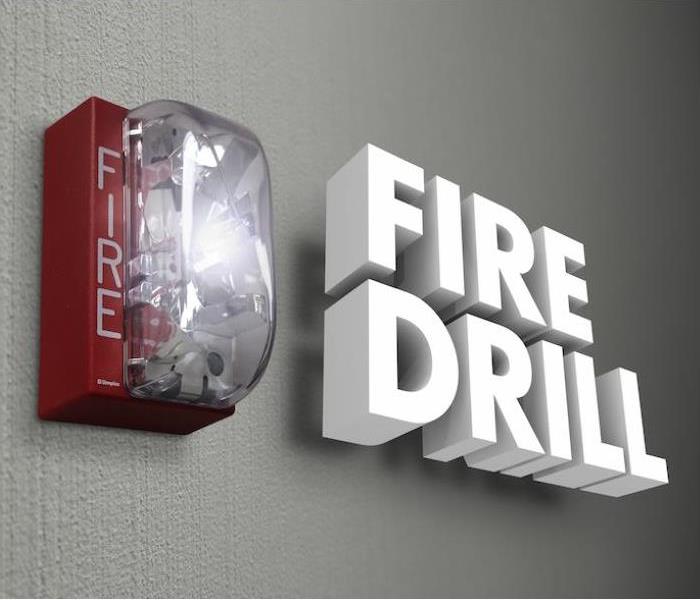 If your business experiences any fire damage, you can count on us. SERVPRO of Cambridge/Belmont specializes in fire restoration.
If your business experiences any fire damage, you can count on us. SERVPRO of Cambridge/Belmont specializes in fire restoration.
f you own a business, it is important that you are honest about potential risks from every source—including from emergencies and natural disasters. With the possibility of commercial fires and the data behind how costly they can be, preparing for these is key to the longevity of your operations.
There are many ways to get started in fire safety planning, but we always recommend originating from a safety standpoint. Teaching your employees how to perform a fire evacuation is a key element to keeping everyone safe in case the fire alarm were to sound for real.
Teaching Your Employees How to Perform a Fire Evacuation
Consult with your local fire officials. With the internet, you have so many research options at your fingertips surrounding commercial fire safety, but do not forget about your local options as well. You can generally have your local fire officials come and provide you with personalized advice for planning your evacuation routes and boosting your fire safety.
Communicate and mark fire evacuation routes. After you have decided what evacuation routes suit your needs, be sure they are labeled clearly and your staff is aware of the upcoming drill. Keeping everyone looped in will create more transparency and be sure every one of your staff members are prepared when the drill begins.
Have fire drills frequently. Though taking time out of your day for a fire drill is not ideal, generally doing them once every few months is sufficient enough for everyone’s safety. Keep them on the schedule regularly enough so that everyone can remember the protocols, but not so often that they become mundane.
Run different fire scenarios. There are many ways fires start and spread throughout an office space, so your drills should reflect this to better prepare everyone for a real fire. Have your mock fire block different exit routes so your employees can see what it is like to alter their course with little notice just like they may have to if the fire alarm sounds for real.
If your business has experienced fire damage, you can count on us. We specialize in commercial fire restoration and will be here for you at any hour—contact us today.
Know What to Do No Matter Where a Storm Catches You | SERVPRO® of Cambridge/Belmont
7/14/2020 (Permalink)
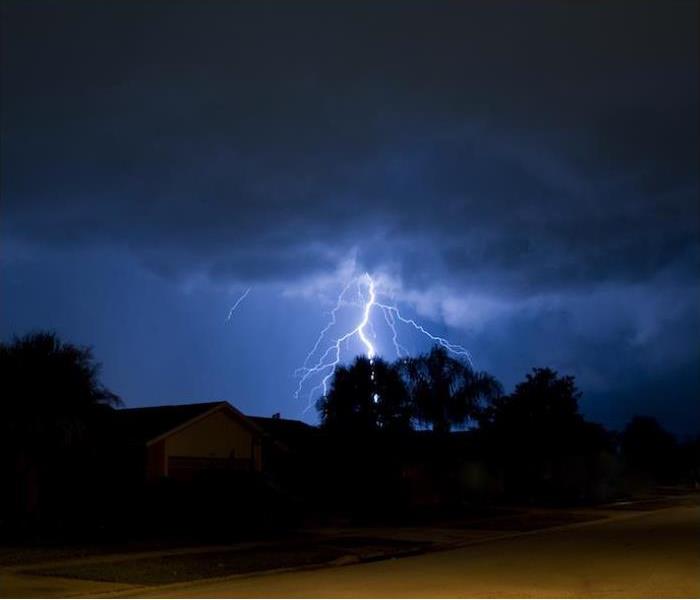 protect yourself and your loved ones during a storm
protect yourself and your loved ones during a storm
When the sky is clear and the weather is warm, it seems silly to think about thunderstorms ruining the fun—but unfortunately, this happens quite often on hot, humid days, as that creates the ideal condition for a sudden storm to form.
When storms catch people off-guard, they are often extra dangerous because people are not sure of what to do. With these tips, you can make sure you are prepared for a storm anywhere.
Make Sure You Are Prepared for a Storm Anywhere
Know your options for shelter. When you hear that a storm is a possibility and you are somewhere you can wait out the threat, this would be the ideal thing to do. That being said, when storms come up suddenly, this will not always be an option. You can set up shelter in your vehicle with the proper guidelines in mind, enabling you to wait out the storm anywhere you are.
Practice electrical safety. Claps of thunder are caused by lightning strikes, so any thunderstorm has the potential to cause lightning damage. If you are sheltering in a building, unplugging your electronics can help prevent damage from a power surge in case lightning strikes the building. Surge protectors are also a smart thing to invest in, both for your home and your office, in case you are not around when a storm starts.
Avoid direct contact with concrete. While concrete structures do have sturdiness going for them, they also pose risks when it comes to lightning strikes due to their metal framework. When lightning strikes a concrete building, the electricity can transfer from the metal and through the concrete, so be careful to not sit or lean against any concrete surfaces during a storm.
Stay indoors for at least 30 minutes. If you are interrupted by a thunderstorm, you will likely want to get back to your summer fun as soon as you can, but it is important to give yourself ample time in your shelter spot. Lightning can travel nearly 30 miles from the center of a storm cell, so experts recommend waiting at least 30 minutes before heading back outside.
If your home sustains damage due to a storm, you can count on us to help. Contact us at any hour to learn more about our storm restoration process.
Non-Invasive drying reduces after damages
3/2/2020 (Permalink)
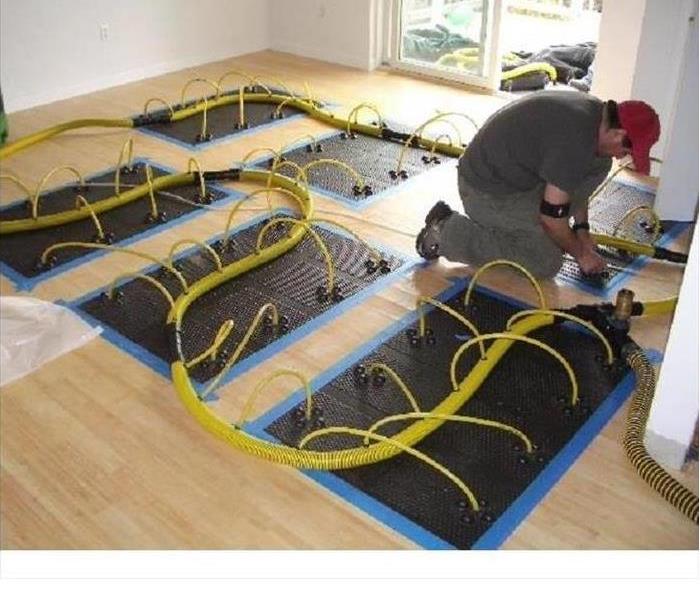 SERVPRO technician installing an Inject-I-Dry System to dry the hardwood floors.
SERVPRO technician installing an Inject-I-Dry System to dry the hardwood floors.
John & Sue Butler’s contractor had finally finished the renovations. They had been living with relatives until their new condominium was finished. The furniture and belongings were delivered and they were finally living in their dream home. They came home Sunday night after a weekend away and they noticed water dripping down from the ceiling. Their hardwood floors had standing water and were beginning to buckle. They discovered that their upstairs neighbor pipe broke causing the water to run down into their unit. They called SERVPRO of Cambridge/Belmont to assist them. The Butler’s explained that they had just moved in and didn’t want the life to be disrupted. The SERVPRO technician assessed the damages and came up with a plan that would not require any demolition. He discovered there were existing cavities he could install an Inject-I-Dry System that would dry out the floors & ceilings without any demolition or sanding. The technician monitored the drying progress and after one week, he determined that the floor and ceiling were dry and removed the equipment. The Butler’s were ecstatic!
If you sustain water damage, please call SERVPRO of Cambridge/Belmont (617) 864-7378 to assist you.
Tips to prevent damage to your home
2/20/2020 (Permalink)
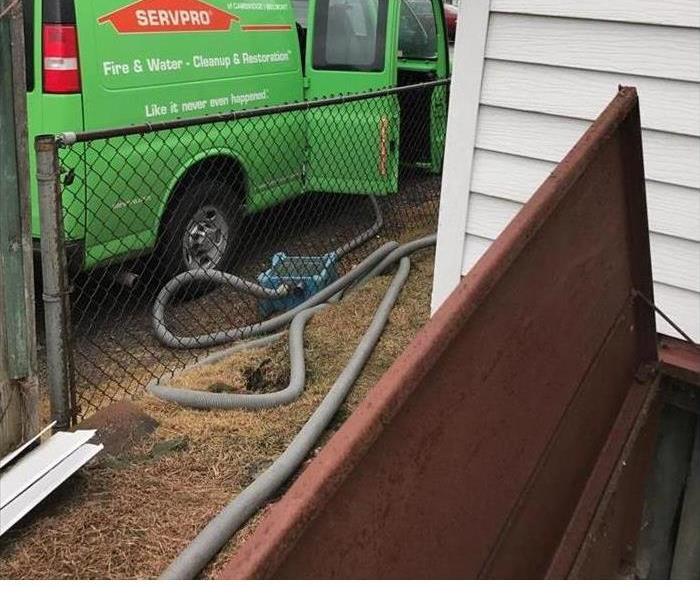 SERVPRO crew extracting water
SERVPRO crew extracting water
- Disconnect hoses
Standing water in a hose may freeze back into the pipe. This may create an ice block that stops your water flow. The block may may burst your pipes and create damage to walls, floor and foundation.
- Clean gutters and downspouts
Clean your gutters at least twice a year to avoid blockage and ice dams. Standing water can cause damage to your gutters and roof, and unmanaged overflow may create puddles that could damage your foundation.
Don't forget to clean downspouts to ensure water can flow through, and secure downspouts so that they point away from the home.
- Maintain trees and vegetation
Thriving shrubs can be a beautiful thing — except when their roots wrap around your pipes and break them. That's why it's important to minimize landscaping near utility pipes or, if necessary, remove trees and shrubs that have become too big.
Interior Measures to Prevent Water Damage
- Know your water main
Know the location of your water main, and shut it off if you leave for an extended amount of time. If no water goes in to the house, chances are no faucet drips can wreak havoc on your home while you're away.
- Check appliances regularly
Check and maintain your home appliances regularly for leaks, according to manufacturer's directions.
- Investigate leaks right away and fix promptly
If you opt to ignore moisture damage or postpone making the necessary repairs, be prepared to experience mold, mildew, dry rot, or even structural damage to your home.
Keep in mind that homeowner's insurance provides coverage for damage that is sudden and accidental. Damage that results from lack of maintenance is not covered on a standard homeowner’s insurance policy.
If it's too late and you're already dealing with a wet disaster, check out advice on how to minimize water damage in your home.
- Upgrade washing machine hoses
Old, brittle or leaky washing machine hoses are among the most frequent causes of water loss for homeowners. Replace yours regularly to avoid a mighty mess and expensive damage.
- Install water detection devices
A water detector is a small electronic device that sounds an alarm when its sensor comes in contact with moisture. Its main benefit is that it detects low moisture levels or slow leaks that often go unnoticed. Install it near water heaters, sump pumps, washing machines, dishwashers and toilets to prevent extensive damage and mold growth.
- Check your water pressure
If the water pressure to your home is set too high, pipes and hoses may fail under the pressure. Buy a water pressure gauge at a local hardware store, attach it to an outside faucet, and turn the faucet to full force. The gauge will give you a reading of the home’s water pressure.
Typical residential water systems are designed for water pressure of 40 to 70 psi. If your home’s water pressure exceeds 100 psi, install a pressure regulator (which is available at hardware stores as well.)
- Monitor your water bill
Sometimes, the only way you know that water is leaking is taking a closer look at your water bill. If your usage jumps significantly from one month to the next without explanation, put your "water detective hat" on. Is there a leak in your crawlspace? Or, is it a pipe in your front yard? Don't leave mystery leaks unattended!
If you have had water damage to your home please call SERVPRO of Cambridge/Belmont (617) 864-7378
Do I need flood insurance?
2/18/2020 (Permalink)
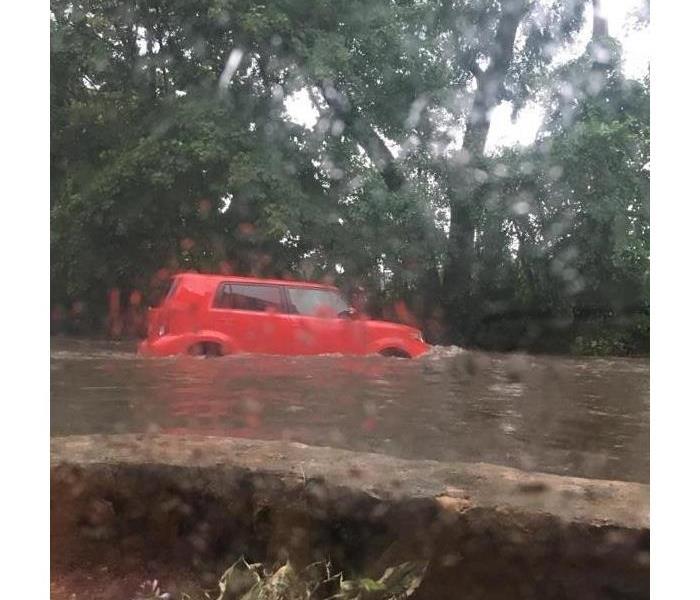 Heavy rain can flood low lying areas very quickly
Heavy rain can flood low lying areas very quickly
The fact is – any property can flood. Your home doesn’t have to be less than five feet of water from hurricane flood surges to suffer flood damage. Normal amounts of rainwater can drain under your home, and flood your basement or the lowest floor level, causing flood damage. This kind of flooding can cause mold, increase the risk of termites and cause electrical problems.
More than 75% of homeowners devastated by flooding unfortunately discover they should have had flood insurance. The sad thing, experts say, is that flood insurance is not that expensive – typically $450 to $600 a year for the average home. When you weigh the cost of flood insurance against replacing your entire home $100,000 to $500,000, it only makes sense to buy it, whether you believe you’ll need it or not. “People may say things like, ‘I live on a hill, and I don’t need flood insurance’.
Common reasons people give for not buying flood insurance include:
- “I’m not in a flood zone.”
- “I’m not anywhere near water.”
- “I’ll never need it, it's money wasted.”
- “My homeowner’s insurance will cover it.”
- “It’s not available.”
- “My realtor told me the property would never flood.”
If your home or business has been flooded, please call SERVPRO of Cambridge/Belmont (617) 864-7378
Did you know there are different types of lightning?
2/13/2020 (Permalink)
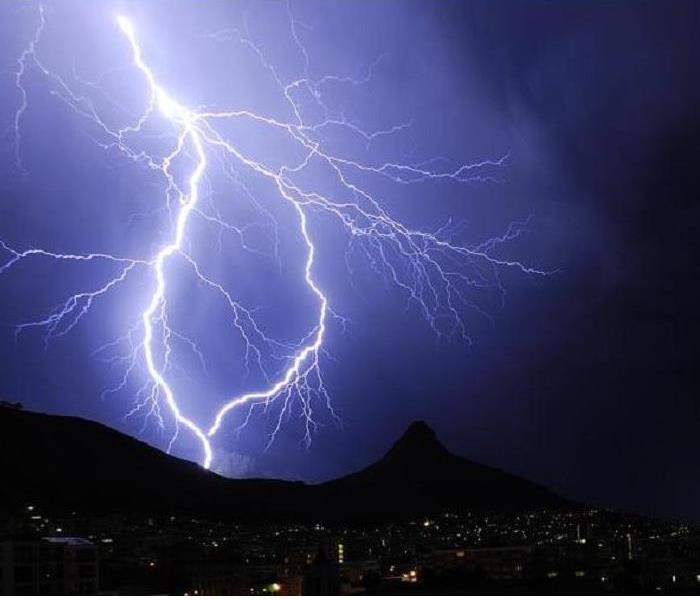 Lightning over the night sky
Lightning over the night sky
Lightning is an electrical discharge caused by imbalances between storm clouds and the ground, or within the clouds themselves. Most lightning occurs within the clouds.
"Sheet lightning" describes a distant bolt that lights up an entire cloud base. Other visible bolts may appear as bead, ribbon, or rocket lightning. During a storm, colliding particles of rain, ice, or snow inside storm clouds increase the imbalance between storm clouds and the ground, and often negatively charge the lower reaches of storm clouds. Objects on the ground, like steeples, trees, and the Earth itself, become positively charged—creating an imbalance that nature seeks to remedy by passing current between the two charges.
Lightning is extremely hot—a flash can heat the air around it to temperatures five times hotter than the sun’s surface. This heat causes surrounding air to rapidly expand and vibrate, which creates the pealing thunder we hear a short time after seeing a lightning flash.
Types of Lightning
Cloud-to-ground lightning bolts are a common phenomenon—about 100 strike Earth’s surface every single second—yet their power is extraordinary. Each bolt can contain up to one billion volts of electricity.
A typical cloud-to-ground lightning bolt begins when a step-like series of negative charges, called a stepped leader, races downward from the bottom of a storm cloud toward the Earth along a channel at about 200,000 mph (300,000 kph). Each of these segments is about 150 feet (46 meters) long.
When the lowermost step comes within 150 feet (46 meters) of a positively charged object, it is met by a climbing surge of positive electricity, called a streamer, which can rise up through a building, a tree, or even a person.
When the two connect, electrical current flows as negative charges fly down the channel towards earth and a visible flash of lightning streaks upward at some 200,000,000 mph (300,000,000 kph), transferring electricity as lightning in the process.
Some types of lightning, including the most common types, never leave the clouds but travel between differently charged areas within or between clouds. Other rare forms can be sparked by extreme forest fires, volcanic eruptions, and snowstorms. Ball lightning, a small, charged sphere that floats, glows, and bounces along oblivious to the laws of gravity or physics, still puzzles scientists.
About one to 20 cloud-to-ground lightning bolts is "positive lightning," a type that originates in the positively charged tops of storm clouds. These strikes reverse the charge flow of typical lightning bolts and are far stronger and more destructive. Positive lightning can stretch across the sky and strike "out of the blue" more than 10 miles from the storm cloud where it was born.
If you have water or fire damage, please call SERVPRO of Cambridge/Belmont (617) 864-7378
Be careful when lifting objects
2/11/2020 (Permalink)
 Proper lifting will reduce back injuries
Proper lifting will reduce back injuries
It can be very tempting and almost feel more natural to bend from your back to lift an object off of the ground. However, lifting with your back can be extremely harmful to your body. The best way to lift heavy objects is by bending from the knees and using your leg muscles to lift.
Helpful tips: Before you lift, make sure there is a clear path to where you are going to move the object to. It is important to position your body close to the object you are trying to pick up with your feet shoulder-length apart on a stable surface. Next, it is crucial to get a good grip on the object you are trying to lift. When ready, begin to stand up and use the muscles from your legs to lift the object. Be sure not to twist from side to side or move too fast. Always try to keep the object as close to your body as possible to help prevent an injury while lifting.
Know your limit: If the object is too heavy to lift on your own, use lift assist equipment such as a dolly or forklift, or ask a friend for help lifting the object.
Did you know? According to the federal Bureau of Labor Statistics, about 20 percent of all workplace injuries and illnesses are made up of back injuries. This means that over one million work-related back injuries are reported each year. These back injuries may include strains, sprains, and herniated disks, which may be prevented by practicing safe lifting habits. The majority of cases were caused by the worker lifting and twisting from side to side at the same time. If the worker had practiced safe lifting habits, their injury may have been prevented.
How employers can help? Employers can hold a safety meeting to train their employees how to lift properly. Employees can also take notice and offer help to a coworker in need of assistance.
If you have water or fire damage, please call SERVPRO of Cambridge/Belmont (617) 864-7378
Develop a relationship with a plumber
2/6/2020 (Permalink)
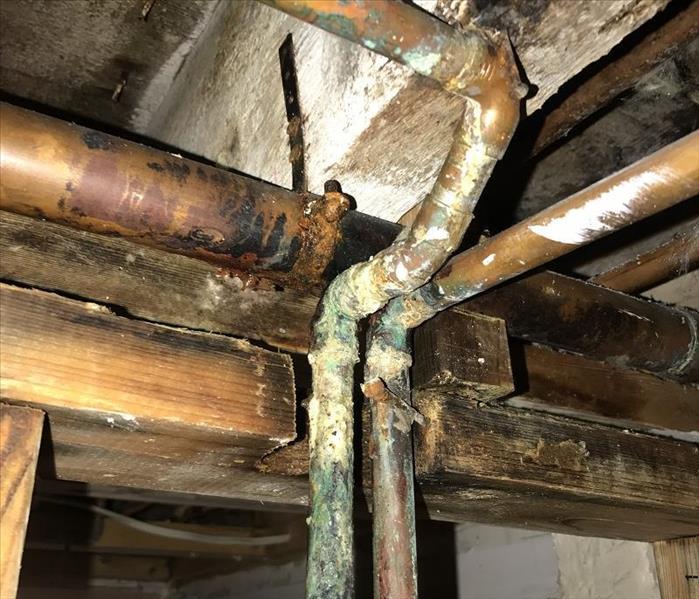 Better call your plumber
Better call your plumber
We depend on our plumbing each and every day, from the hot water in your shower to the water boiling on your stove. As such, it’s important to maintain your plumbing regularly to make sure there aren’t any major issues such as leaks or sewage backups. But plumbing problems can still occur with regular maintenance, so it’s good to be aware of common plumbing issues and what you can do to solve them or minimize damage to your home.
Low Water Pressure:
Proper water pressure is necessary for washing your hands, cleaning dishes, and taking a shower. If you’ve noticed a significant drop in your home’s water pressure, you probably have a clogged pipe. It’s also possible that you need to fully open your shutoff valve. If you’re only having water pressure issues with one faucet, the solution may be as simple as cleaning the aerator or removing a nearby clog.
Dripping Faucet:
Depending on the severity of the drip, a dripping faucet can raise your water bill and waste a significant amount of water—not to mention how annoying it can be. Luckily, fixing a dripping faucet is usually as simple as replacing seats and springs or a washer in the faucet.
Running Toilet:
It happens so frequently: minutes after flushing your toilet, you can still hear the toilet running as if the bowl is filling with water. This is an incredibly annoying problem to have, but usually, an easy one to fix. Remove the lid from your toilet tank and make sure that your tank ball, flapper valve, and flush valve are working properly—if any of them are sticking or not functioning right, they’re easy to replace.
Clogged Drain:
Clogged or slow drains are probably the most common plumbing problem. Plumbing pipes are designed to allow water and waste to flow through freely, but over time, built up hair, soap scum and other debris can form a clog in your drain that prevents water from passing. This is almost sure to happen in any home given enough time. You can use vinegar and baking soda to break up clogs in your sink, or you can buy a drain auger and remove the clog manually.
Sometimes the clog may be deeper in your pipes or too severe to easily remove, look into professional plumbing services; they have the equipment and expertise to clear clogged drains without causing damage to your plumbing. If you have sewage damage as a result of a clogged drain or other plumbing issues, please call SERVPRO of Cambridge/Belmont (617) 864-7378
Leaking Pipes:
Leaks aren’t just an annoyance; they can significantly increase your water bill and quickly cause damage to your home. If you have a leaking pipe that’s beyond a slow drip, shut your water off as soon as possible. If there is any chance of mold or structural damage to your home, call SERVPRO of Cambridge/Belmont (617) 864-7378 to avoid spending a fortune on repairs. Leaking pipes generally need to be replaced, but you can use marine tape or epoxy to cover small leaks temporarily—just remember to shut the water off first.
No Hot Water:
Have you ever rolled out of bed and into the shower only to find there’s no hot water? It’s not a good experience. Chances are you’ve got something wrong with your water heater, most probably an electrical problem such as a thermostat or element. If you’re not comfortable troubleshooting your water heater, it’s a good idea to get help from a trained, knowledgeable professional.
Plumbing truly is an essential part of our everyday lives. We can’t all be professional plumbers, but with a little bit of research and hard work, you can stay cool, calm and collected in the face of a plumbing emergency
If you have water damage as a result of any of these or other plumbing issues, please call SERVPRO of Cambridge/Belmont (617) 864-7378
SERVPRO to the rescue
1/30/2020 (Permalink)
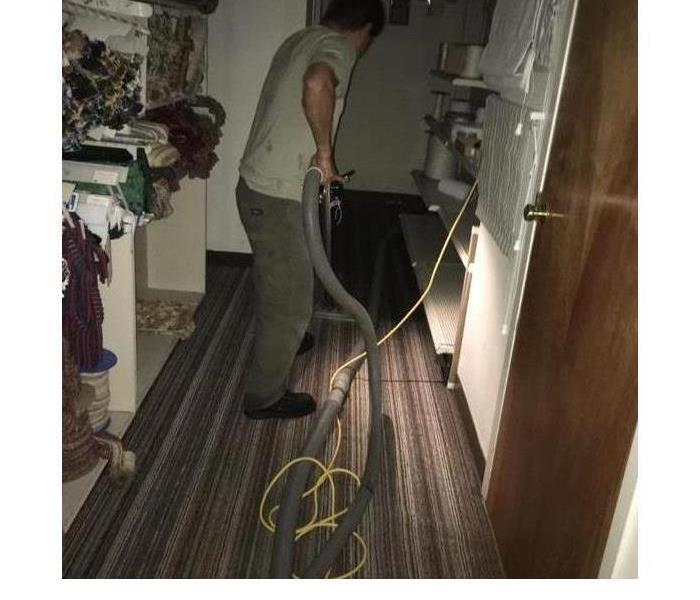 SERVPRO technician extracting water from a wet carpet
SERVPRO technician extracting water from a wet carpet
This past weekend a pipe broke in the middle of the night causing water to pour into the 2 retail businesses. At 5:30 Am the commercial property owner was notified and he immediately called SERVPRO of Cambridge/Belmont. SERVPRO’s crew arrived and immediately began to extract the water. The business owner was hoping to be open for business at his usual 9:30 AM opening time. Additional crews were dispatched to take care of the 2 other business affected. The crews worked feverishly to ensure that both businesses could open at their usual time. The SERVPRO of Cambridge/Belmont project manager using a moisture detector and infrared camera created a moisture map to determine all affected floors, walls and ceilings. The project managed related this information to the crews so that they could strategically place the necessary drying equipment. The equipment was set up and the businesses were open at their usual time. If your home or business has undergone water damage, please call SERVPRO of Cambridge/Belmont (617) 864-7378 to assist you.
Don't ignore small water leaks
1/28/2020 (Permalink)
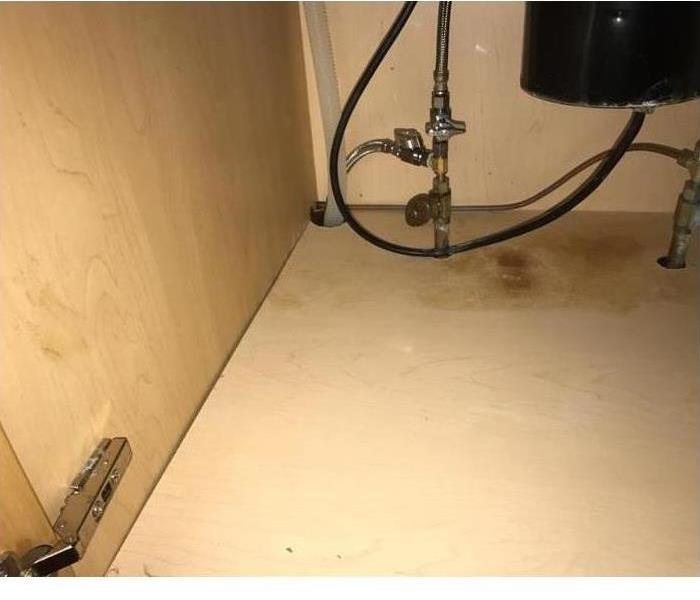 Leaky pipe causing staining under the kitchen sink
Leaky pipe causing staining under the kitchen sink
Whether it's behind the washer, above the ceiling or under the sink, a little drip can lead to big trouble. Water damage happens quickly and can be expensive to fix. Ignore a leak, and you not only could you have a mighty mess on your hands, but your home insurance probably won't bail you out. "What's really important to know for leaks is when did the insured notice it and take action," Says Michael Pridham from SERVPRO of Cambridge/Belmont
"People now build houses to be airtight," says Raffi Yardemian, owner of SERVPRO of Cambridge/Belmont, a property-damage restoration service. "Houses are wrapped in plastic like Saran Wrap. That's good for energy conservation, but if water gets on the wrong side of that plastic, then mold will follow, as certainly as night follows day." Yardemian observes that damage often occurs after people get security systems installed. Holes are drilled into airtight window frames for wires to run through them, but they aren't properly caulked and sealed, allowing water to slowly seep in over time. "You notice that maybe the wall below the window is looking funny, and by that time the framing behind it is rotted out," he says. If the homeowner reports the problem right away, it would likely be covered by home insurance.
Today's houses also have more bathrooms, and the washing machine is often located next to the master bedroom on an upper floor for convenience, Yardemian notes. "That means you've got more pipes, and if the washing machine leaks, it can affect the third floor, the second floor, the first floor and even down to the basement," he says. For water damage from leaky appliances or pipes, the damage must be "sudden and accidental" in order to be covered by insurance - such as a pipe that bursts while you're washing clothes.
But what about a slow leak you can't see? Say, for instance, a pipe behind a wall leaks, and you don't notice it until water starts seeping through the wall. Are you covered? Most likely the answer is yes, as long as you take action as soon as there is evidence of the leak, Yardemian says. "Nobody expects you to tear out your drywall now and again to check the pipes. Call the professionals at SERVPRO of Cambridge/Belmont (617) 864-7378. They will send out a crew to test the walls using moisture detectors and an infrared camera.
Insurance companies understand it's impossible to know you have a hidden leak until the damage becomes apparent. The same goes for leaks behind and under appliances, or above a ceiling. If you can't see the leak, you can still make an insurance claim as long as you report it when it becomes apparent. Don't expect much sympathy if you ignore the wet spot in your ceiling, only to report it when the problem gets worse. The insurance adjuster probably will be able to tell if the damage is fresh.
"If the insured had a leak in the roof and had a pot under it for six months, then that damage is not covered," Yardemian of SERVPRO of Cambridge/Belmont says. "Insurance Professionals are pretty good at seeing whether a wet spot has been there for a while. Sometimes they have engineers go out to look." When it comes to insurance coverage, everything depends on the language in your policy. Although most policies cover damage from leaks as long as you responded quickly, language among policies differs. Keep in mind, though, that while home insurance may cover the water damage to the ceiling, floor, walls or furniture, it won't pay for replacing the worn-out pipe or the leaky roof (unless the roof was damaged by a covered peril, such as hail or a fallen tree).
If you think you have a leak, call the professionals at SERVPRO of Cambridge/Belmont (617) 864-7378
An Ozone Machine is an effective tool to deodorize contents after a fire
1/23/2020 (Permalink)
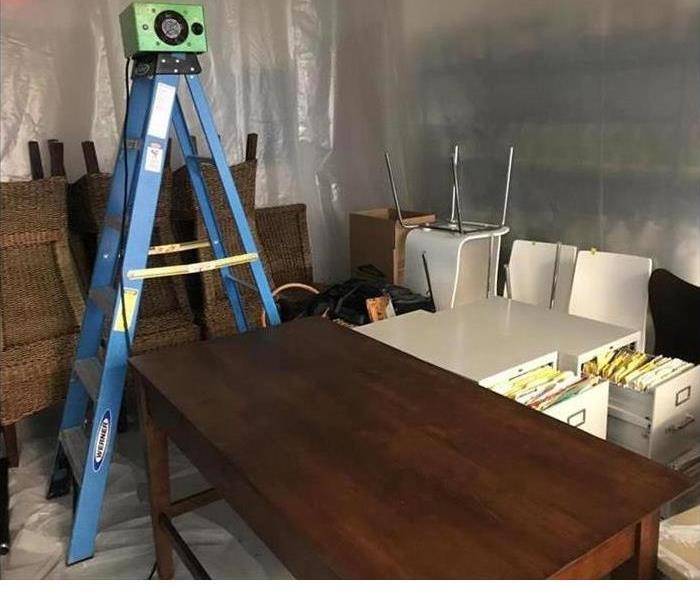 An ozone machine deodorizing contents in an ozone chamber
An ozone machine deodorizing contents in an ozone chamber
The contents of a house that have had a fire usually need to be deodorized to eliminate lingering odors. SERVPRO of Cambridge/Belmont uses an ozone machine to eliminate these odors. Ozone, (O3), sometimes called "activated oxygen", contains three atoms of oxygen rather than the two atoms we normally breathe. Ozone is the second most powerful sterilizer in the world and can be used to destroy bacteria, viruses and odors. Interestingly ozone occurs quite readily in nature, most often as a result of lightning strikes that occur during thunderstorms. In fact the "fresh, clean, spring rain" smells that we notice after a storm most often results from nature's creation of ozone. However, we are probably most familiar with ozone from reading about the "ozone layer" that circles the planet above the earth's atmosphere. Here ozone is created by the sun's ultra-violet rays. This serves to protect us from the ultra-violet radiation.
How does ozone work?
The third oxygen atom of ozone makes it extremely reactive. This atom readily attaches itself to other odor molecules. When contaminants such as odors, bacteria or viruses make contact with ozone, their chemical structure is changed to less odorous compounds. As more ozone attacks the remaining compounds, the odor is eventually destroyed. This process is called oxidation. Ozone essentially reverts back to oxygen after it is used. This makes it a very environmentally friendly oxidant.
If your home or business has had a fire, please call SERVPRO of Cambridge/Belmont (617) 864-7378 to assist you.
Ladder Safety Tips
1/22/2020 (Permalink)
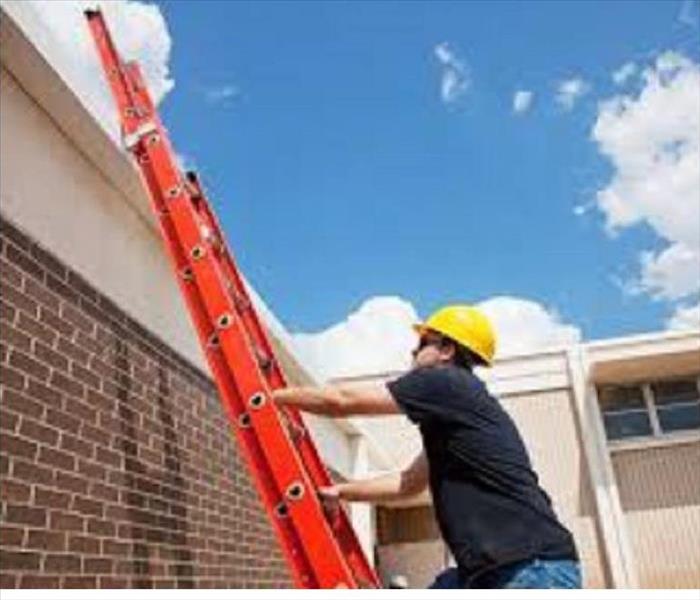 Worker using a ladder correctly
Worker using a ladder correctly
Take the time before you climb. Check to see if your ladder is safe to use before stepping foot on a rung. Ladders get thrown in and out of trucks and closets which may cause the ladders to get beat-up. A damaged ladder is unsafe to use and should be immediately taken out of service. The checklist to the right outlines a few areas that should be inspected before each use.
If you notice any cracked or damaged uprights, braces, or rungs, the ladder should not be used. Loose nails, screws, bolts or other metal parts are also a huge red flag. The ladder rungs should be secure and clean of any oil or dirt. Foot treads should not be worn out and all of the ladder’s labels should be present and legible. As always, only use a ladder on a stable surface. If the ladder is rocking even slightly, or if you need to place something underneath the feet of the ladder to keep it stable, the ladder is unsafe for use.
Why is inspection so important? According to the World Health Organization, the United States has the most number of deaths caused by falls from ladders. Falls from ladders are also the leading cause of deaths in the construction industry. There are over 164,000 emergency room visits and 300 deaths from falling from ladders. The majority of falls from ladders that lead to death are from heights of 10 feet or less from the ground. The number of deaths has tripled over the past decade. Most of these deaths may have been prevented by inspecting ladders before use and putting defected ladders out of service. Another factor that may decrease the amount of fatalities and injuries due to falls from ladders is proper training.
The following list outlines just a few items to train employees in regards to the safe and proper use of ladders.
Always maintain 3-points of contact at all times when climbing
Do not carry any materials up or down a ladder
Wear a tool belt
Use a hand line
Face the ladder when ascending or descending
Never overreach
Work only within an arm’s reach of the ladder
Keep your belt buckle between the sides rails of the ladder at all times
Only allow one person to climb the ladder at a time
Extension Ladders:
Position the ladder at the proper pitch (1/4 rule)
Extend the side rails at least 36 inches or 3 rungs above
Secure the top of the ladder to help prevent shifting
If you have water or fire damage, please call SERVPRO of Cambridge/Belmont (617) 864-7378
Cold weather preparation for your business
1/15/2020 (Permalink)
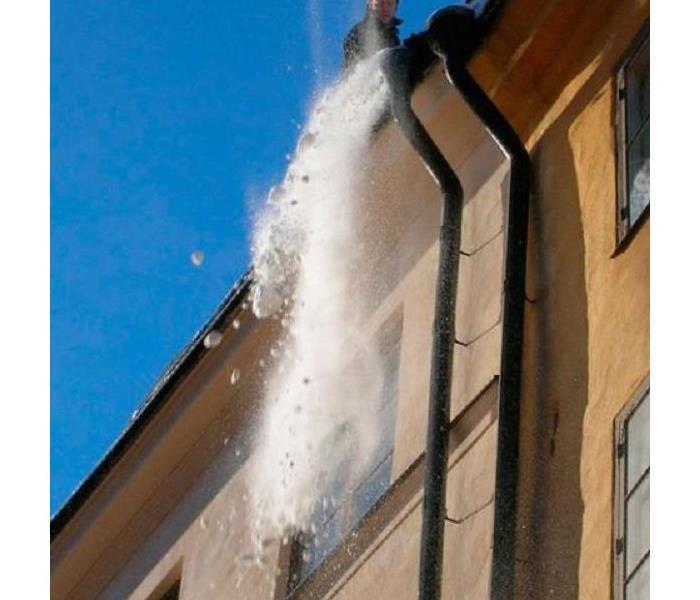 Make sure you clean the snow off the roof
Make sure you clean the snow off the roof
Cold Weather and Freeze Alert
Keep your heating systems operating
Keep your building and equipment warm. Heating systems are the lifeline of your business during cold conditions. If they fail, disaster could strike.
Immediate action required:
- All piping must be insulated. Install new and replace damaged insulation and don’t forget to examine your sprinkler system.
- Inspect all outside dampers for proper operation.
- Clear and protect all outside vents from ice and snow accumulation.
- Heat requires power. If generators are unavailable, make arrangements to obtain an electrical portable heating during outages.
Safeguard business equipment during power outages
Voltage surge protection is necessary at all times – especially during cold, freezing conditions. Severe weather can cause power loss and downed wires, disrupting your business’ power supply. When electricity is restored, the sudden surge of power can literally destroy the modem, high-tech equipment
Your business relies on.
Immediate action required:
- Unplug it. Anticipate voltage surges during severe weather. The best solution is equipment isolation – turn it off and unplug it. If you need to keep equipment running, installing surge protectors can provide protection.
- Inspect building. Close all windows, doors and outside dampers. Schedule regular building checks during storms and cold weather. Arrange for snow and ice removal, including the roof.
- Who’s responsible? Ensure accountability by designating personal responsibility for loss prevention. Business and building owners must work together with facilities and maintenance people.
- Provide emergency telephone numbers. Collect and distribute a list of emergency phone numbers and contacts, such as snow removal, heating system Repair Company, utility company, and the weather bureau.
- Anticipate flooding. Severe and cold weather can cause flooding. Move susceptible equipment or stock to an alternate location, where water cannot reach it.
- Always have cold-weather gear on hand. – Have plenty of gloves, hats, emergency blankets and flashlights available.
If you have water or fire issues, please call SERVPRO of Cambridge/Belmont (617) 864-7378
Fire prevention tips
1/14/2020 (Permalink)
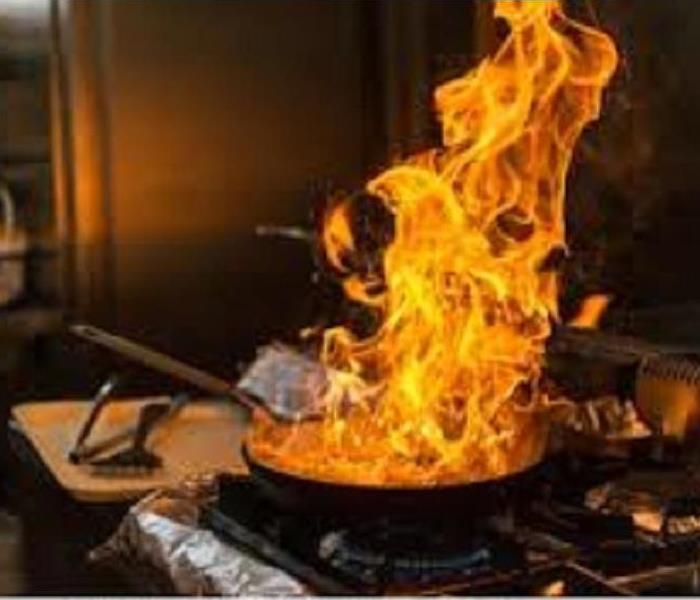 Kitchen grease fire with dangerous flames
Kitchen grease fire with dangerous flames
The following are things you can do to protect yourself, your family, and your property in the event of a
Fire:
SMOKE ALARMS AND CARBON MONOXIDE DETECTORS
Install smoke alarms. Properly working smoke alarms decrease your chances of dying in a fire by half.
Place smoke alarms on every level of your residence, including the basement.
Install a working carbon monoxide detector in the common area of the bedrooms.
Test and clean smoke alarms once a month and replace batteries at least once a year. Replace smoke alarms once every 10 years.
COOKING SAFETY
Never leave cooking unattended.
Always wear short or tight-fitting sleeves when you cook.
Keep towels, pot holders and curtains away from flames
Never use the range or oven to heat your home.
ESCAPING THE FIRE
Have an escape plan. Review escape routes with your family.
Make sure windows are not nailed or painted shut.
Teach family members to stay low to the floor, where the air is safer, when escaping from a fire.
In high-rise, never lock fire exits or doorways, halls or stairways. Never prop stairway or other fire doors open.
HEATING SOURCE
Place space heaters at least three feet away from flammable/combustible materials.
Use only the type of fuel designated for your space heater.
MATCHES/LIGHTERS AND SMOKING
Keep matches/lighters away from children.
Never smoke in bed or when drowsy or medicated.
If you must smoke, do it responsibly.
ELECTRICAL WIRING
Inspect extension cords for frayed or exposed wires or loose plugs
Make sure outlets have cover plates and no exposed wiring.
Make sure wiring does not run under rugs, over nails, or across high traffic areas.
Do not overload extension cords or outlets.
If you do have a fire, please call SERVPRO of Cambridge/Belmont (617) 864-7378 to assist you in the cleanup
10 New Year's Resolutions
1/2/2020 (Permalink)
 Fireworks celebrating New Years in Paris
Fireworks celebrating New Years in Paris
- Start a Meditation Practice.
There are scientific studies that show the many benefits of meditating. To name just a few, meditating helps to improve your mood, it reduces stress, it lessens anxiety, and it even increases your brain’s grey matter — which is involved in muscle control, sensory perception, decision making, and self-control. In addition, once you get the hang of it, meditating is easy to do.
- Learn Something New Each Day.
Set the resolution to learn something new every day in order to have a better understanding of the world and how it works. Fortunately, the internet makes it incredibly easy to learn new things.
- Pick Up a Hobby.
Did you know that having a hobby is good for you? Hobbies can lower your stress levels, boost your brain power, improve your ability to focus, and more. Therefore, in 2020, start a new hobby.
- Play More.
Play is an important source of relaxation and stimulation for adults. In addition, it can make you more creative and productive. Bring more play into your life by making it a New Year’s resolution.
In case it’s been so long since you allowed yourself to play that you’ve forgotten how, here are 10 Ways to Play More and Have More Fun as an Adult.
- Eat Fewer Calories.
There are many reasons why most of us should set a resolution of eating fewer calories. The most obvious reason is to lose weight. After all, carrying excess weight puts us at a greater risk of a whole range of serious health problems, including heart disease, diabetes, and some cancers.
- Write a Business Plan.
Make 2020 the year you stop thinking about starting a business and you start taking action –it’s OK if it’s a small business on the side. The first step to take is to write a business plan. Once you get your ideas down on paper, you’ll be that much more motivated to turn those ideas into reality.
- Exercise More.
It doesn’t matter what you choose to do: join a sports team; get a pedometer and take at least 10,000 steps a day; get up every 20 minutes and stretch; or join a dance class. Just move! Living a sedentary life slows you down, it makes it more likely that you’ll be overweight, and it puts you at a higher risk of depression.
- Read More Books.
I’ll definitely be reading lots of books in 2018, and I encourage you to do the same. If you need some convincing on this one, here are 13 Ways Reading Will Improve Your Life. This year, I’m reading the 12 most important books of Russian literature.
- Be More Grateful.
If you haven’t climbed aboard the gratitude bandwagon yet, this is the year to do it. There are studies that show that gratitude can make you 25% happier. Being grateful will also help you to overcome adversity, improve the quality of your sleep, and allow you to get along better with others. For next year, resolve to be more grateful. Here are some gratitude exercises to get you started.
- Stop Procrastinating.
If you didn’t achieve your goals this year, procrastination was the likely culprit. Make 2018 the year you stop procrastinating and start getting things done. This will help you to ensure that you won’t be sitting there at the end of next year wondering why you never got around to working on your goals.
If you have water or fire damage, please call SERVPRO of Cambridge/Belmont (617) 864-7378
Ice dams in New Emgland
12/19/2019 (Permalink)
 Snow melting causing ice dams and icicles
Snow melting causing ice dams and icicles
Ice dams form when melted snow refreezes at roof edges. Anyone who has lived in cold climates has seen ice dams. However, most of us don’t stop to understand why these ice bands form until they damage our homes.
Three things are required for an ice dam to form: snow, heat to melt the snow and cold to refreeze the melted snow into solid ice. Ice dams can form when as little as 1 or 2 inches of snow accumulates on a roof – if the roof is poorly insulated and air sealed, and the snowfall is followed by several days of sub-freezing temperatures. Ice dams develop as snow on the upper part of the roof melts. Water runs down the roof slope under the blanket of snow and refreezes into a band of ice at the roof’s edge creating a “dam”. Additional snow-melt pools against the dam and eventually leaks into the building through the roof or roof trim.
The reason ice-dams form along the roof’s lower edge, usually above the overhang, is straight-forward. The upper roof surface is at a temperature that is above freezing. And the lower part of the roof surface (along the eaves) is below freezing. The upper roof surface is located directly above the living space. Heat lost from the house warms this section of the roof, melting snow in this area. During periods of sub-freezing temperature the lower regions of the roof deck remain at sub-freezing ambient temperatures. Roof overhangs are not warmed by indoor heat-loss.
Deeper snow and cold temperatures increase the likelihood and size of ice dams. Every inch of snow that accumulates on the roof’s surface insulates the roof deck a little more, trapping more indoor heat beneath the roof deck and warming the roof sheathing. Each inch of snow has an R-value of approximately 0.5 – 1. The worst ice dams occur when deep snow accompanies cold weather. Here is an example to provide a sense of scale: A poorly insulated and unvented R-20 cathedral roof with 10 inches of snow can result with serious ice damming. In this example, 10 inches of snow adds ~between R-5 and R-10 to the roof system resulting in a total roof R of 25 – 30. The layer of snow holds indoor heat below the sheathing and could warm the roof sheathing above freezing in the area over the living space. If the inside temperature is 70 degrees and the outside 20 degrees (50 degree differential), the temperature of the roof sheathing would be between 5/25 and 10/30 of the way from 20 degrees toward 70 degrees. In other words, the roof should temperature should be between 30 and 37 degrees over the living space. Snow will probably melt under these conditions. Yet, the temperature of the roof over the unheated overhangs is 20 degrees, the same as the outdoor temperature. The melt water will freeze when it reaches that part of the roof. Deeper snow makes things worse. More insulation makes the situation better. You can do the math for a variety of snow depths and various indoor/outdoor temperature conditions to get a sense of how the variables are related. The trick is to keep the entire roof below freezing if possible. Roof venting helps and is discussed below.
If you have water damage from Ice Dams, please call SERVPRO of Cambridge/Belmont (617) 864-7378
Commercial water and fire damage in Cambridge, MA
11/25/2019 (Permalink)
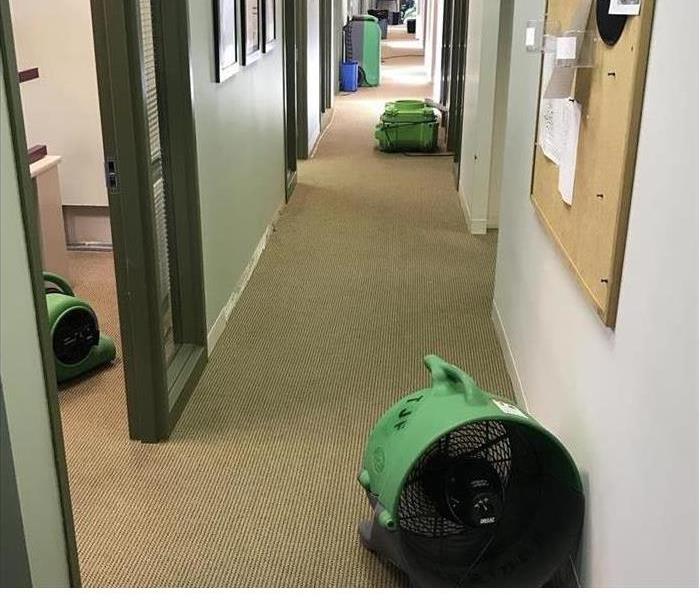 SERVPRO drying equipment at the jobsite
SERVPRO drying equipment at the jobsite
Flooding and water damage events at City of Cambridge commercial properties are often complex with numerous issues that require a knowledgeable and flexible response. Whether we’re dealing with a relatively small water cleanup scenario or a large scale event, we work quickly to assess each unique situation and isolate the damaged area. In many instances, normal operations can continue in a temporary space while we restore your facility.
Restoring Commercial Properties Presents Unique Challenges
Our professionals are trained to be mindful of legal and environmental concerns and strive to fully restore the damaged area while working within your budgetary constraints. We understand that every hour spent cleaning up is an hour of lost revenue and productivity. So when an emergency situation arises in your business, give us a call and we’ll be there fast with the help you need.
About SERVPRO of Cambridge/Belmont
SERVPRO of Cambridge/Belmont specializes in the cleanup and restoration of commercial and residential property after a water damage event. Our staff is highly trained in property damage restoration. From initial and ongoing training at SERVPRO’s corporate training facility to regular IICRC-industry certification, rest assured our staff is equipped with the knowledge to restore your property. If your business has water or fire damage, please call SERVPRO of Cambridge/Belmont (617) 864-7378
November to do's around the home
11/20/2019 (Permalink)
 Make sure the pathways are well lit for your family's safety
Make sure the pathways are well lit for your family's safety
1. Deep Clean Your Home
Now is the time to clean your home for winter festivities. Whether you have a family gathering in the works or you want to make sure things are perfectly cozy for winter, tackle some of those cleaning tasks that aren’t on your regular cleaning rotation. Carpet and upholstery cleaning might be one of those things on your deep cleaning to-do lists. It’s the perfect time to give them a refresh.
2. Make Kitchen & Bathroom Updates
While it might be too late to start a complete remodel before your holiday company arrives, you can certainly make some upgrades to improve your kitchen and bathrooms. A fresh coat of paint or a new sink can be just what the room needs. A new backsplash is also something you might be able to DIY.
3. Inspect Outdoor Stairs
Winter will bring snow and ice that can make it dangerous to walk on your outdoor stairs and pathways. Before the weather changes dramatically, check your outdoor steps for cracks and uneven areas. Get them repaired now. You’ll also want to install a handrail if you don’t have one already. This is a safety feature that’s a must on any outdoor stairs.
4. Replace Outdoor Light Fixtures
Similarly, it’s also a good time to replace any outdoor light fixtures that may be out or in need of repair. Winter brings less daylight along with colder weather, making it harder to see if there’s ice on your walkway. Having efficient outdoor lighting can help avoid an accident. Outdoor flood lights may not be as fashionable but can help illuminate entryways, so you can see. The average cost of floodlights is around $400 to $500.
5. Repair Plumbing
With Thanksgiving coming up quickly, it’s likely any plumbing issues you have will be magnified. A semi-clogged pipe can turn into a big issue if you have visitors over or plenty of dishes to be done. Get the fix you need now, before it’s too late.
6. Install Weather Stripping
Make sure your home is comfortable for the winter weather. Weather stripping can prevent cold air from entering the home. The good news is that it doesn’t need to be replaced every year, but aging weather stripping should be replaced. Depending on the amount you need to be done, you might be able to DIY.
7. Install Fire Protection
The holiday season is a prime time for house fires. From dried trees to burnt turkey and holiday candles, there are plenty of hazards present in your home. According to the National Fire Protection Association, Thanksgiving is the peak day for home cooking fires, with the day before in second place. And, 21% of holiday decoration fires started in the kitchen.
If you need assistance, please call SERVPRO of Cambridge/Belmont (617) 864-7378
The BMW Dealership
11/19/2019 (Permalink)
 Extracting water from the showroom floor
Extracting water from the showroom floor
Matt, a property manager, refers a lot of work to the SERVPRO of Cambridge/Belmont office. Matt was excited as he was scheduled to pick up his new car at a BMW dealership last Friday. When he walked into the office he saw the office manager, Traci, had boots on. He noticed that the carpet in the auto dealer showroom felt squishy to the touch. When Matt inquired what had happened, Traci informed him that the toilet had overflowed during the night. Matt asked Traci if she had called anyone to clean up the mess, Traci replied no and she added “who would I call to clean up this mess?” Matt informed her to call Sergio, the production manager at SERVPRO of Cambridge Belmont. Traci called our office and we sent a crew right out there and immediately began the cleaning and drying process. In a few days the BMW dealership was back selling cars. If your business has water or sewage damage, please call SERVPRO of Cambridge/Belmont (617) 864-7378.
Frigid weather coming to New England
11/12/2019 (Permalink)
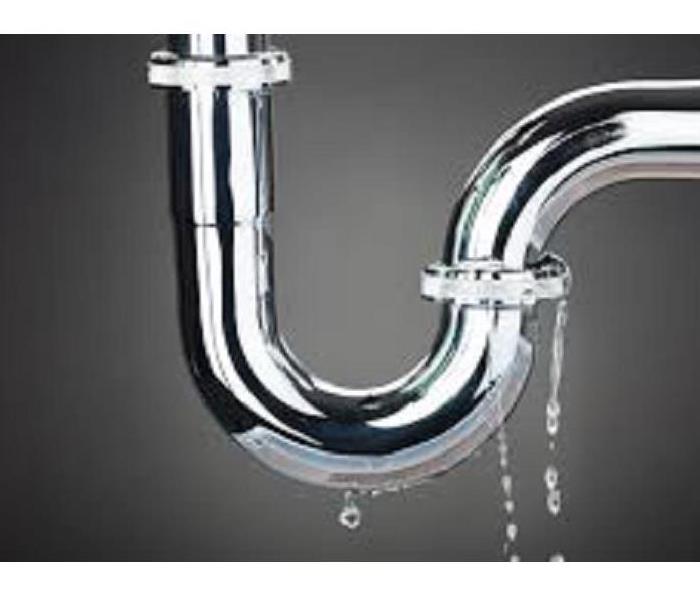 Kitchen drain pipe leaking due to a frozen pipe
Kitchen drain pipe leaking due to a frozen pipe
It is only mid November, forecasters anticipate that the mid and latter parts of this week will bring frigid temperatures in Cambridge and Belmont Massachusetts. Lengthy periods of sub-freezing temperatures mean an increased potential for frozen and burst pipes.
Here are a few tips to help safeguard your customers against frozen pipes:
Drain and shut off all outside spigots.
Leave the heat up! Set the thermostat and leave it set to the same temperature day and night.
Open the kitchen and bathroom cabinet doors to allow warm air to circulate around plumbing.
If you have an attached garage, keep the doors shut. Wind and cold air drafts increase the likelihood of a frozen pipe.
If you are going away, shut off the water supply line to your washing machine.
Have someone check on the house if you are going away for an extended period of time. Once the ice melts and the temperatures rise, the water will start to flow.
Mark the main water supply line so it can be easily identified in the event it needs to be shut off in an emergency.
If you experience an issue, please call SERVPRO of Cambridge/Belmont (617) 864-7378 to assist you.
Moisture in your home
11/5/2019 (Permalink)
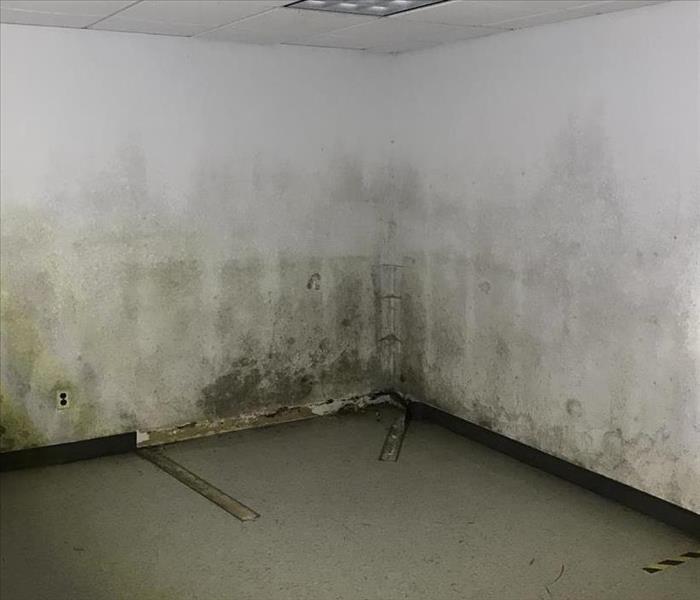 Excessive moisture in your basement may cause mold growth if dehumidification is not done.
Excessive moisture in your basement may cause mold growth if dehumidification is not done.
1) – Your home produces moisture.
Any household produces moisture by cooking, washing, bathing and exercising. Even breathing brings moisture into the air. Your family and pets bring many liters of water into your home every day. Moisture can also enter your house from the soil through the basement or crawl space.
2) – High humidity is not healthy
Humidity is important for our health. A normal humidity level is needed for feeling comfortable. However, too much moisture in your home can cause big problems and even negatively affect your health. Microorganisms that thrive in humid conditions are of special concern as they can help cause allergies and asthmatic conditions.
3) - Low humidity is not healthy either
Low humidity can, in turn, have all kinds of unpleasant effects. Your skin can feel dry, your lips can start to chap and your eyes can start to itch. Sore eyes, difficulty breathing and painful sinuses are also common problems caused by too dry air. This is especially true in winter when the outside air tends to be very dry. Air conditioned spaces, including airplanes and offices, are also well known ‘dry zones.’
4) – Bugs and mold love a humid home
Bugs thrive in humid conditions. Dust mites especially love warm temperatures (23-27 degrees Celsius / 75-80 degrees Fahrenheit) and high humidity levels of 70-80%. One study has found that mite populations stop growing and die out when relative humidity levels drop below 60%. Air conditioning has been proven to lower dust mite allergens in homes by lowering the ambient temperature and relative humidity. Mold loves humid conditions as well. When the relative humidity is higher than 80%, mold is likely to develop more than 50% of the time. Their spores are known to contribute to the development of asthma in children and cause allergies.
5) – Moisture is the No. 1 electronics killer
Excess moisture can not only damage your health, but also damage your possessions. Electronics are especially susceptible to damage by condensation. Moisture can corrode contacts inside and lower insulation resistance, which may cause short circuits. Watch for high humidity and drastic temperature changes that occur when bringing in electric appliances from your cold garage or basement. Take care to let them adjust to the climate before switching them on. You can protect stored electronics or other valuables by putting them in closed plastic boxes with a small dehumidifying satchel/bag.
6) – Winter is the real humid season for homes
The air is often cold and dry in the winter. While your lips, skin and nails suffer due to all that winter dryness, your house might suffer from the effects of excess moisture because two things happen:
Winter is the heating season. We close our windows and reduce ventilation and circulation of air in our homes to keep out the cold. At the same time, rain and melting snow can increase the amount of moisture entering your house through crawl spaces, basements and walls. Because less moisture leaves the house, humidity levels inside can start to rise.
At the same time, something else happens. Parts of your house that are in direct contact with the cold outside air are cooler than the air inside. Examples are single glazed windows and walls with low insulation. The temperature difference with the warm, moist air inside can cause continuous condensation to occur on those cold surfaces. All that wetness will attract mold growth and cause moisture stains.
7) – Ventilation is essential
Especially areas that produce a lot of moisture like bathrooms, kitchens and bedrooms need lots of ventilation. In some areas, it is simply not possible, cost effective or energy efficient to ventilate continuously. For those areas, there are many great solutions out there. Check our dehumidifier section for suggestions.
8) – Humidity is always relative
So what exactly is “humidity,” anyway? Humidity is the amount of moisture or water vapor in the air. However, you will usually hear the term “relative humidity.” Why “relative”? Because the maximum amount of water the air can “hold” depends on the temperature of the air. A relative humidity of 100% means the air contains the maximum amount of water it can hold at that specific temperature. Warmer air can hold more water than colder air.
So, what happens when warm humid air cools down? The colder air can hold less moisture and might “drop” some of it. This happens most easily when warm, humid air comes into contact with a cold surface (like a cool soda bottle in summer or windows in winter). Water released by the air in this way is called “condensation,” which can cause serious problems in your home, car, boat or RV.
9) – The ideal humidity level is 40-60%
Opinions on the ideal relative humidity level in your home vary somewhat. Generally, it is thought best to be in the 40-60% range. Moving outside this range for a short period is not likely to cause you any discomfort. Negative effects are most likely to occur when parts of your home are continuously exposed to high humidity.
10) – Humidity can be controlled
There are many solutions available to help you maintain healthy humidity levels and moisture problems. You can use a hydrometer to monitor the inside air and there are all kinds of commercial dehumidifiers and humidifiers out there. They all have their advantages and disadvantages.
If you require help with any moisture issues in your home, please call SERVPRO of Cambridge/Belmont (617) 864-7378
Fire Prevention Month
10/31/2019 (Permalink)
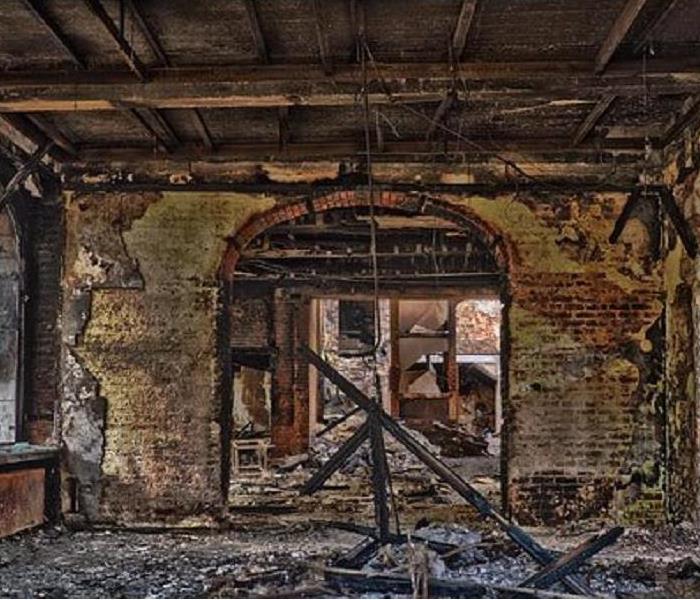 An oily rag self combusted, causing this garage fire.
An oily rag self combusted, causing this garage fire.
October is Fire Prevention Month, so it's a good time to think about fire safety where collector cars, motorcycles and boats are stored. Gasoline, oil, paints and solvents are just some of the flammable materials found in a typical garage.
Flammable Materials
Starting fluid, gasoline cans and other flammables should be kept in a special purpose cabinet for flammable materials. They should also be kept away from electrical cords, outlets and work benches where torches and grinders are used. The area around a bench grinder should be kept clear of anything flammable. The heat from the electricity can ignite the flammable materials. Oily rags are another dangerous item often left lying around shop and garage spaces. A tiny spark can set one smoldering, which can quickly lead to a fire. Special cans designed to protect oily rags from sparks and starve them of oxygen should they spontaneously combust are a piece of gear most people can afford.
Electrical devices
As we all know, electricity causes sparks, and sparks cause fires. Worm advises using smart battery tenders that shut off automatically when a battery is full, thereby avoiding an overheated battery and the potential for a fire. He also recommends disconnecting the battery on a car that's going to be sitting for a while. Dormant cars are prone to rodent damage, which can cause electrical shorts, sparks and fire. Also, it's a good idea to unplug tools, heaters and other electrical devices when they're not in use.
Fire extinguisher
In a small garage or workshop, The Cambridge Fire Department recommends keeping a fire extinguisher near the work bench, and one near the exit. The proper way to use an extinguisher is to aim at the base of the fire, sweeping from side to side until the fire is out or the extinguisher is spent. The Internet is full of videos depicting correct fire extinguisher use.
Heaters
Now that winter is coming, many enthusiasts will want heat in the garage. Propane heaters, which are designed to be used outside, should not be operated in an enclosed space.
Homeowners should think about the way cars are stored in a garage that contains more than one. Are they easy to get out? If there's a fire, more cars will be saved from the blaze if they're easy to remove from the structure.
If you do have a fire, please call SERVPRO of Cambridge/Belmont (617 864-7378) to assist you!
The correct way to lift a heavy object
9/30/2019 (Permalink)
 Back pain can occur if you lift a heavy object incorrectly
Back pain can occur if you lift a heavy object incorrectly
It can be very tempting and almost feel more natural to bend from your back to lift an object off of the ground. However, lifting with your back can be extremely harmful to your body. The best way to lift heavy objects is by bending from the knees and using your leg muscles to lift.
Helpful tips: Before you lift, make sure there is a clear path to where you are going to move the object to. It is important to position your body close to the object you are trying to pick up with your feet shoulder-length apart on a stable surface. Next, it is crucial to get a good grip on the object you are trying to lift. When ready, begin to stand up and use the muscles from your legs to lift the object. Be sure not to twist from side to side or move too fast. Always try to keep the object as close to your body as possible to help prevent an injury while lifting.
Know your limit. If the object is too heavy to lift on your own, use lift assist equipment such as a dolly or forklift, or ask a friend for help lifting the object. According to the federal Bureau of Labor Statistics, about 20 percent of all workplace injuries and illnesses are made up of back injuries. This means that over one million work-related back injuries are reported each year. These back injuries may include strains, sprains, and herniated disks, which may be prevented by practicing safe lifting habits. The majority of cases were caused by the worker lifting and twisting from side to side at the same time. If the worker had practiced safe lifting habits, their injury may have been prevented.
If you have fire, water or smoke damage, please call SERVPRO of Cambridge/Belmont (617) 864-7378
School bus safety
9/24/2019 (Permalink)
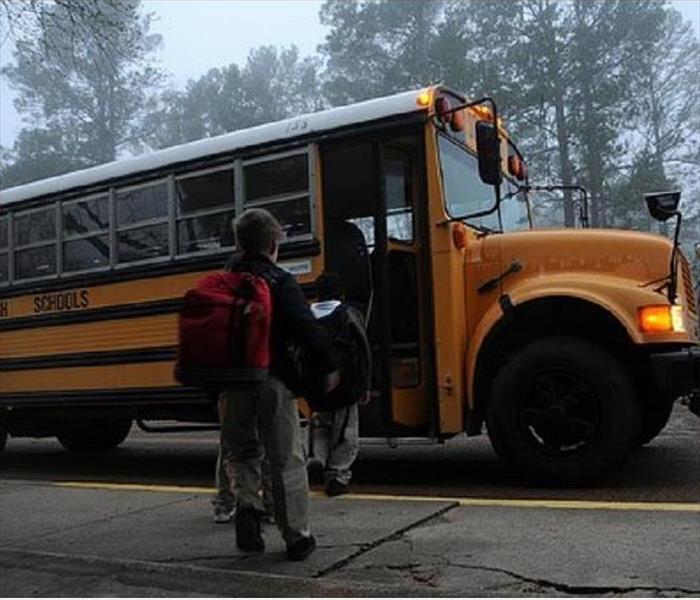 Children's safety is vital, never pass a school bus when children are getting on or off the bus.
Children's safety is vital, never pass a school bus when children are getting on or off the bus.
School buses are picking up passengers, kids are hurrying toward school, and parents are rushing to drop off kids before continuing on to their places of employment or other daily schedules. School is back in session, and we all need to share the roads.
Most children lose their lives in bus-related accidents when they are walking to or from the school bus. They are either struck by the bus itself, or by a motorist illegally passing a stopped bus.
Drivers have a responsibility to follow the laws of the road and to be extra aware when driving through school zones and approaching school buses. It’s important to be extra alert around young pedestrians as they may not remember to look both ways before crossing the street.
The most important rule of thumb is to of course slow down when traveling in school zones or behind school buses. However, there are many other tips and rules to follow when it comes to sharing the roads with school buses and young pedestrians. Please share the following rules with your drivers:
- Leave plenty of room between your vehicle and the bus when driving behind a bus. Be prepared to stop at any time when the bus’s lights begin to flash.
- When a bus is stopped with its lights flashing, be sure to stop and leave ample space (a minimum of 10 feet) between the bus and your vehicle.
- Never pass a bus loading or unloading students.
- Adhere to school zone speed limits.
- Be extra cautious while approaching crosswalks, school zones, and neighborhoods, and stop for children crossing the street.
If you have water or fire damage, please call SERVPRO of Cambridge/Belmont (617) 489-7378
Important Ladder Safety Tips
9/24/2019 (Permalink)
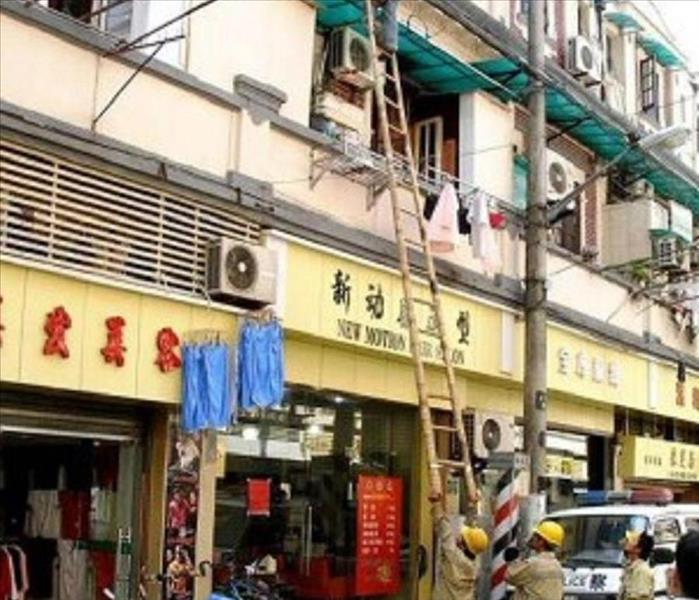 What not to do with a ladder
What not to do with a ladder
Take the time before you climb. Check to see if your ladder is safe to use before stepping foot on a rung. Ladders get thrown in and out of trucks and closets which may cause the ladders to get beat-up. A damaged ladder is unsafe to use and should be immediately taken out of service. The checklist to the right outlines a few areas that should be inspected before each use.
If you notice any cracked or damaged uprights, braces, or rungs, the ladder should not be used. Loose nails, screws, bolts or other metal parts are also a huge red flag. The ladder rungs should be secure and clean of any oil or dirt. Foot treads should not be worn out and all of the ladder’s labels should be present and legible. As always, only use a ladder on a stable surface. If the ladder is rocking even slightly, or if you need to place something underneath the feet of the ladder to keep it stable, the ladder is unsafe for use.
Why is inspection so important? According to the World Health Organization, the United States has the most number of deaths caused by falls from ladders. Falls from ladders are also the leading cause of deaths in the construction industry. There are over 164,000 emergency room visits and 300 deaths from falling from ladders. The majority of falls from ladders that lead to death are from heights of 10 feet or less from the ground. The number of deaths has tripled over the past decade. Most of these deaths may have been prevented by inspecting ladders before use and putting defected ladders out of service. Another factor that may decrease the amount of fatalities and injuries due to falls from ladders is proper training.
The following list outlines just a few items to train employees in regards to the safe and proper use of ladders.
- Always maintain 3-points of contact at all times when climbing
- Do not carry any materials up or down a ladder
- Face the ladder when ascending or descending
- Never overreach
- Only allow one person to climb the ladder at a time
Extension Ladders:
- Position the ladder at the proper pitch (1/4 rule)
- Extend the side rails at least 36 inches or 3 rungs above the landing
- Secure the top of the ladder to help prevent shifting
If you have fire, water or mold issues, please call SERVPRO of Cambridge/Belmont (617) 864-7378
50 memorable quotes
9/17/2019 (Permalink)
 Leonardo Da Vinci was way ahead of his time
Leonardo Da Vinci was way ahead of his time
- Nothing is impossible, the word itself says “I’m possible”! —Audrey Hepburn
- I’ve learned that people will forget what you said, people will forget what you did, but people will never forget how you made them feel. —Maya Angelou
- Whether you think you can or you think you can’t, you’re right. —Henry Ford
- Perfection is not attainable, but if we chase perfection we can catch excellence. —Vince Lombardi
- Life is 10% what happens to me and 90% of how I react to it. —Charles Swindoll
- If you look at what you have in life, you’ll always have more. If you look at what you don’t have in life, you’ll never have enough. —Oprah Winfrey
- Remember no one can make you feel inferior without your consent. —Eleanor Roosevelt
- I can’t change the direction of the wind, but I can adjust my sails to always reach my destination. —Jimmy Dean
- Believe you can and you’re halfway there. —Theodore Roosevelt
- “To handle yourself, use your head; to handle others, use your heart.” —Eleanor Roosevelt
- Too many of us are not living our dreams because we are living our fears. —Les Brown
- Do or do not. There is no try. —Yoda
- Whatever the mind of man can conceive and believe, it can achieve. —Napoleon Hill
- Twenty years from now you will be more disappointed by the things that you didn’t do than by the ones you did do, so throw off the bowlines, sail away from safe harbor, catch the trade winds in your sails. Explore, Dream, Discover. —Mark Twain
- I’ve missed more than 9000 shots in my career. I’ve lost almost 300 games. 26 times I’ve been trusted to take the game winning shot and missed. I’ve failed over and over and over again in my life. And that is why I succeed. —Michael Jordan
- Strive not to be a success, but rather to be of value. —Albert Einstein
- I am not a product of my circumstances. I am a product of my decisions. —Stephen Covey
- When everything seems to be going against you, remember that the airplane takes off against the wind, not with it. —Henry Ford
- The most common way people give up their power is by thinking they don’t have any. —Alice Walker
- The most difficult thing is the decision to act, the rest is merely tenacity. —Amelia Earhart
- It is during our darkest moments that we must focus to see the light. —Aristotle Onassis
- Don’t judge each day by the harvest you reap but by the seeds that you plant. —Robert Louis Stevenson
- The only way to do great work is to love what you do. —Steve Jobs
- Change your thoughts and you change your world. —Norman Vincent Peale
- The question isn’t who is going to let me; it’s who is going to stop me. —Ayn Rand
- If you hear a voice within you say "you cannot paint," then by all means paint and that voice will be silenced. —Vincent Van Gogh
- Build your own dreams, or someone else will hire you to build theirs. —Farrah Gray
- Remember that not getting what you want is sometimes a wonderful stroke of luck. —Dalai Lama
- You can’t use up creativity. The more you use, the more you have. —Maya Angelou
- I have learned over the years that when one’s mind is made up, this diminishes fear. —Rosa Parks
- I would rather die of passion than of boredom. —Vincent van Gogh
- A truly rich man is one whose children run into his arms when his hands are empty. —Unknown
- A person who never made a mistake never tried anything new.——Albert Einstein
- What’s money? A man is a success if he gets up in the morning and goes to bed at night and in between does what he wants to do. —Bob Dylan
- I have been impressed with the urgency of doing. Knowing is not enough; we must apply. Being willing is not enough; we must do. —Leonardo da Vinci
- If you want to lift yourself up, lift up someone else. —Booker T. Washington
- Limitations live only in our minds. But if we use our imaginations, our possibilities become limitless. —Jamie Paolinetti
- If you’re offered a seat on a rocket ship, don’t ask what seat! Just get on. —Sheryl Sandberg
- Certain things catch your eye, but pursue only those that capture the heart. —Ancient Indian Proverb
- When one door of happiness closes, another opens, but often we look so long at the closed door that we do not see the one that has been opened for us. —Helen Keller
- Everything has beauty, but not everyone can see. —Confucius
- How wonderful it is that nobody need wait a single moment before starting to improve the world. —Anne Frank
- When I was 5 years old, my mother always told me that happiness was the key to life. When I went to school, they asked me what I wanted to be when I grew up. I wrote down “happy”. They told me I didn’t understand the assignment, and I told them they didn’t understand life. —John Lennon
- The only person you are destined to become is the person you decide to be. —Ralph Waldo Emerson
- We can’t help everyone, but everyone can help someone. —Ronald Reagan
- Everything you’ve ever wanted is on the other side of fear. —George Addair
- We can easily forgive a child who is afraid of the dark; the real tragedy of life is when men are afraid of the light. —Plato
- Nothing will work unless you do. —Maya Angelou
- “I alone cannot change the world, but I can cast a stone across the water to create many ripples.” —Mother Teresa
- What we achieve inwardly will change outer reality. —Plutarch
If you have water or fire damage, please consider SERVPRO of Cambridge/Belmont (617) 864-7378 to assist you.
Get your home ready for the fall season
9/12/2019 (Permalink)
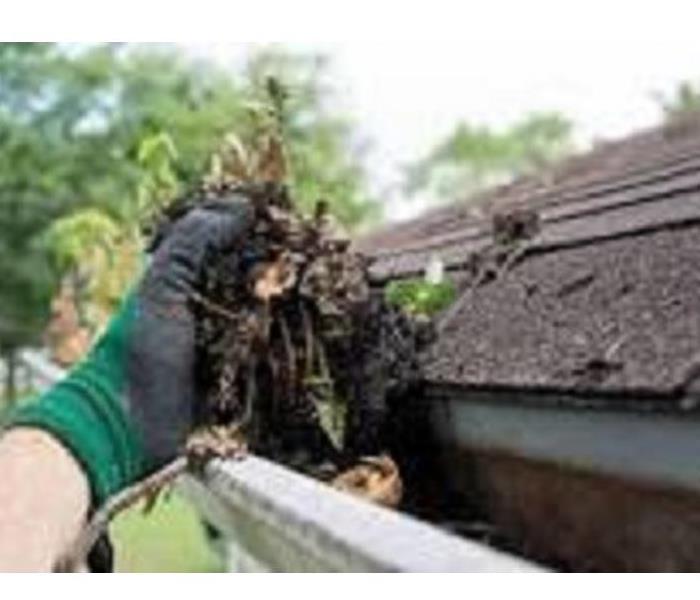 Accumulation of leaves and debris found in a gutter
Accumulation of leaves and debris found in a gutter
- Get Your HVAC Serviced
Your AC has been faithfully chugging along all summer. Now it’s time to give it a rest. Before you tuck it away for the winter, be sure to clean the coils. You can find YouTube videos showing how to do this safely.
If you’re done using the AC for the year, cover the outdoor unit to keep debris and ice from damaging your system. Then move indoors and switch your thermostat from cooling to heating. Change the filter, too. You should also make sure all indoor vents are uncovered, and maybe clean your own air ducts while you’re at it.
- Clean the Gutters
Clogged gutters will channel water down the side of your home where it eventually damages the foundation and can flood your basement. So get a ladder and pull debris out of the gutters by hand. If you have a one-story house, you can use this leaf-blower attachment to blast the stuff. Still too much work? Hire a gutter cleaning company — they’re worth it.
- Drain and Store Your Lawn Equipment
Over time, unused fuel goes through chemical changes that create deposits and destroy your lawn equipment. So drain the tanks of your lawn mower, leaf blower, and weed eater before storing them. Fall is also an excellent time to get your lawn mower blades sharpened so they’ll be ready for next spring.
- Turn Off and Drain Outdoor Faucets and Sprinklers
Outdoor hoses and pipes will burst if they’re full of water when the temperatures plunge below freezing. While replacing a garden hose isn’t that difficult, it’s incredibly expensive to dig up your lawn’s sprinkler system to deal with burst pipes. So, disconnect your outdoor hoses and turn off the outdoor water supply. Open outdoor faucets and run your sprinkler system to drain any remaining water. Then take these steps to prevent frozen pipes.
- Inspect and Clean Your Chimney
Nothing is charming about filling your home with soot, smoke, and carbon monoxide because your chimney isn’t working correctly. Even gas fireplaces need an inspection to ensure the pipe is free of cracks that can allow smoke to enter your home. This job is best left to pros. The cost runs around $100-200.
- Get Your Snow Blower Ready
By the time winter arrives, it’s often too late to find snow gear. Stock up on such things in autumn when they’re plentiful and lower-priced. Even if you think you’ve got enough left from last year, or that your snow blower or shovel are in good shape, take a few moments to check. You don’t want to get caught out in the cold finding out you’re wrong.
Don’t Delay
As with most home maintenance tasks, preparing your home for fall isn’t tricky, just time-consuming. Putting it off causes problems that can wind up costing you an enormous amount of money, though, so set aside time on the next couple of weekends to get these jobs done.
If you have water, smoke or mold issues, please call SERVPRO of Cambridge/Belmont to assist you (617) 864-7378
September home to do list
9/12/2019 (Permalink)
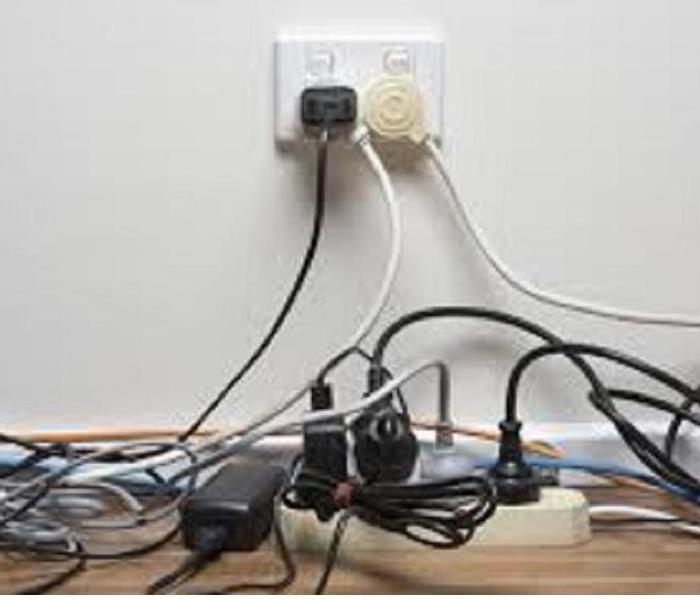 Do not do this!
Do not do this!
Electrical Cords and Outlets
Repair or replace any loose or frayed wires on all electrical devices. Follow the path of cords; make sure there are no cords are under rugs or across doorways. Rethink extension cords; consider adding electrical outlets where you currently rely on extension cords.
Feel all outlets and plugs to see if any are warm; if so, have an electrician check them. Do not overload any one outlet. Be certain that you have no more than one high-wattage appliance plugged into a single outlet.
Inspect water heaters annually.
The temperature should be set at no higher than 120 degrees to prevent burns. Never leave children alone near a water heater, and keep combustible and flammable materials well away from it.
Smoke and Carbon Monoxide Detectors
Install smoke alarms and carbon monoxide detectors generously.
These should be on each floor of the house, covering all sleeping areas.
Test alarms monthly and replace batteries bi-annually or sooner if alarm chirps
Fire Extinguishers
Place extinguishers strategically. Keep one in the kitchen and one on every floor. And learn how to use them. Replace extinguishers when necessary.
Follow the schedule suggested by the manufacturer, and always replace an extinguisher that appears damaged.
If you have water or fire damage, please call SERVPRO of Cambridge/Belmont (617) 864-7378
The Restaurant's grand opening
8/9/2019 (Permalink)
 The hose that caused the damage
The hose that caused the damage
Opening night was a huge success! After the 3 month renovation project was complete, the restaurant finally opened. The restaurant owners were ecstatic! The next morning, Angela opened the door to start her day preparing the luncheon menu, her feet felt squishy. She then noticed ceiling tiles were on the floor. Disaster had struck. The supply line to the soda machine burst overnight causing the water damage. Angela called SERVPRO of Cambridge/Belmont to help her. The SERVPRO crews were there in less than an hour. They removed and cleaned up the wet ceiling tiles, extracted the water from the carpet and installed drying equipment. The restaurant dried in 3 days, the contractor replaced the ceiling tiles and by the end of the week, the restaurant was open again. If you have water or fire damage, please call SERVPRO of Cambridge/Belmont (617) 864-7378 to assist you.
Help with commercial losses in Belmont, MA
8/7/2019 (Permalink)
 Equipment set up at a commercial loss in Belmont, MA
Equipment set up at a commercial loss in Belmont, MA
Flooding and water damage events at Town of Belmont commercial properties are often complex with numerous issues that require a knowledgeable and flexible response. Whether we’re dealing with a relatively small water cleanup scenario or a large scale event, we work quickly to assess each unique situation and isolate the damaged area. In many instances, normal operations can continue in a temporary space while we restore your facility.
Our professionals are trained to be mindful of legal and environmental concerns and strive to fully restore the damaged area while working within your budgetary constraints. We understand that every hour spent cleaning up is an hour of lost revenue and productivity. So when an emergency situation arises in your business, give us a call and we’ll be there fast with the help you need.
SERVPRO of Cambridge/Belmont specializes in the cleanup and restoration of commercial and residential property after a water damage event. Our staff is highly trained in property damage restoration. From initial and ongoing training at SERVPRO’s corporate training facility to regular IICRC-industry certification, rest assured our staff is equipped with the knowledge to restore your property. If your business has sustained a fire or water damage, please contact SERVPRO of Cambridge/Belmont (617) 864-7378 to assist you
Early morning surprise
8/6/2019 (Permalink)
 This is what Sally saw when she walked in
This is what Sally saw when she walked in
On Tuesday morning, Sally arrived in the office early as usual. She was always the first one in the office. As she went to her cubicle her feet squished. She looked around & she saw that the carpet and surrounding area was completely wet. She called the office manager, Johnny. Johnny knew what to do, call SERVPRO of Cambridge Belmont. The SERVPRO crew arrived quickly and they immediately went to work. They extracted the water and set up drying equipment. The production manager monitored the loss and when he determined the area was dry, he arranged to have the carpet cleaned. Sally requested that the carpet cleaning be done after hours so the business would not be interrupted. Everyone at the Cambridge business was very happy when things were back to normal. If your business has water damage, please call SERVPRO of Cambridge/Belmont (617) 864-7378 to assist you.
Common causes of Household Fires
8/1/2019 (Permalink)
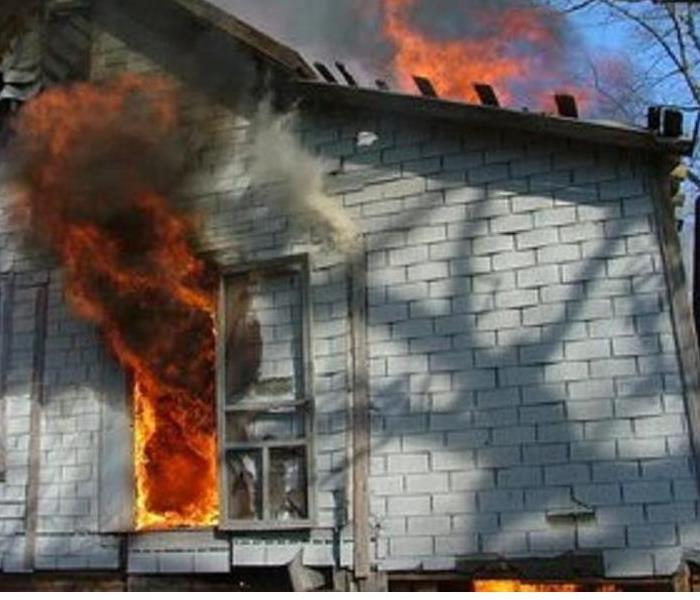 Roaring household fire
Roaring household fire
A house can easily catch fire from the misuse of appliances to smoking in bedrooms. You can take measures to avoid fire in your home and ensure the safety of your family. Below are some of the most common causes of household fires, and some tips to take precautions.
Cooking Equipment
Pots and pans can overheat and cause a fire very easily if the person cooking gets distracted and leaves cooking unattended. Always stay in the room, or ask someone to watch your food, when cooking on hotplates.
Heating
Keep portable heaters at least 5’ away from anything that could easily catch fire such as furniture, curtains, laundry, clothes and even you. If you have a furnace, get it inspected once a year to make sure it is working to safety standards.
Smoking in bedrooms
Bedrooms are best to be kept off limits for smoking. A cigarette that is not put out properly can cause a flame, as the butt may stay alit for a few hours. It could burst into flames if it came into contact with flammable materials, such as furniture. Did you know that fires started in the bedroom or lounge make up 73% of all house fire fatalities?
Electrical Equipment
An electrical appliance, such as a toaster can start a fire if it is faulty or has a frayed cord. A power point that is overloaded with double adapter plugs can cause a fire from an overuse of electricity. A power point extension cord can also be a fire hazard if not used appropriately. Double check the appliances and power points in your home.
Candles
Candles look and smell pretty, but if left unattended they can cause a room to easily burst into flames. Keep candles away from any obviously flammable items such as books and tissue boxes. Always blow a candle out before leaving a room. Did you know that in Perth last year 34 house fires started as a result of candles?
Curious Children
Kids can cause a fire out of curiosity, to see what would happen if they set fire to an object. Keep any matches or lighters out of reach of children, to avoid any curiosity turned disaster. Install a smoke alarm in your child’s room and practice a home escape plan with your children and family in case there was a fire. Inform your kids the importance of knowing their address knowing their address and if they needed to, call 911.
Faulty Wiring
Homes with inadequate wiring can cause fires from electrical hazards. Some signs to see if you’ve bad wiring are: 1) Lights dim if you use another appliance; 2) For an appliance to work, you have to disconnect another; 3) Fuses blow or trip the circuit frequently. Have a licensed electrician come and inspect your house, or contact your landlord if you have any of the above occurrences.
Barbeques
Barbeques are great for an outdoor meal, but should always be used away from the home, tablecloths or any plants and tree branches. Keep BBQs regularly maintained and cleaned with soapy water and clean any removable parts. Check the gas bottle for any leaks before you use it each time.
Flammable Liquids
If you have any flammable liquids in the home or garage such as petrol, kerosene or ethylated spirits, keep them away from heat sources and check the label before storing. Be careful when pouring these liquids.
Lighting
Lamp shades and light fittings can build up heat if they are very close to light globes. Check around the house to make sure. Lamp bases can become a hazard if they are able to be knocked over easily, and so should be removed if they are. Check that down lights is insulated from wood paneling or ceiling timbers.
The above tips are a good guide to avoiding a fire in your home. If you do have a fire and need assistance with the cleanup, please call SERVPRO of Cambridge/Belmont (617) 864-7378
Puffbacks
8/1/2019 (Permalink)
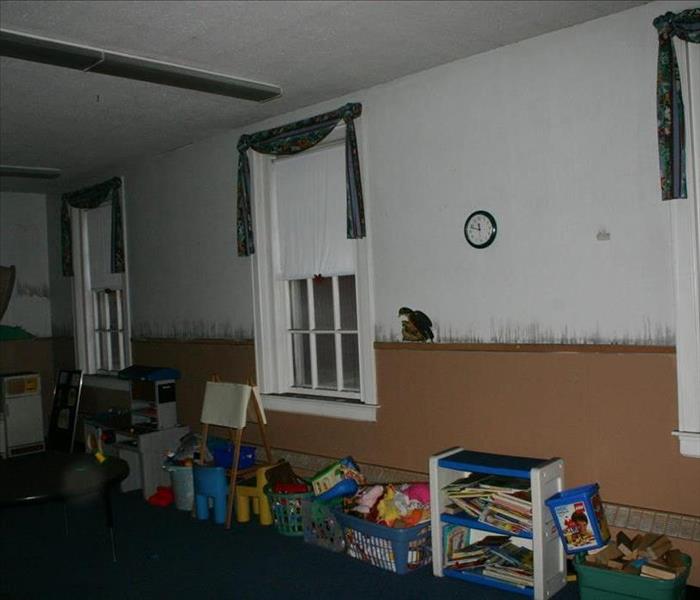 Puffback before the cleaning
Puffback before the cleaning
If your home has an oil burning furnace, there are several dangers to be aware of. Any furnace can experience a puff back, while puff backs are more common with oil systems, a furnace puff back can also occur with forced air, gas and hot water heating systems. A puff back in a furnace is a volatile explosion that occurs inside your furnace. The result of this explosion is fire and smoke being spewed out from your furnace. This fire, smoke and soot will damage your homes building materials and contents. This explosion will not be lethal, but can cause thousands of dollars in costly repairs and damage restoration, and can also cause health problems for you and your family. The explosions are caused by a buildup of vapor inside your furnace. This build up can occur with furnaces which have not been maintained properly. Parts sometimes need to be replaced, and bi yearly cleaning of your furnace and heating system will help prevent puff backs. Conducting a yearly exam of your heating system or having a professional check your heating system yearly will often times fully prevent a puff back from ever occurring.
If you have experience a puff back avoids doing the following: Try to clean or wash away soot residue yourself. This soot and smoke residue needs special cleaning methods, as it spreads easily. Soot stains can also set very quickly, making soot damage especially trick to clean if you should do it wrong. Soot is black carbon, and black carbon will stain extremely quickly when mixed with water and common household liquid cleaners. Should you attempt to remove the soot yourself and end up staining something with soot in your home, a professional cleaner may be required to remove the stain. Should you have soot damage, you should leave it to a professional to clean. SERVPRO professionals trained in soot damage have special cleaners and cleaning methods to use to remove your soot and soot damage. Use furniture or walk on carpeting affected by the fire or puff back. Do not use furniture that has been exposed to heat, soot or smoke. You can cause further damage to your furniture, until it is professionally cleaned and restored. Do not turn on any electronics such as computer, stereo's, and TV's until you have had them checked for soot damaged. Computers can be especially vulnerable and ruined as soon as they are turned on if soot has made its way inside them. This soot also contains a corrosive element, which will damage home's building materials, and contents such as your electronics, furniture, clothing and more. Not only can this soot damage your property, it can also affect the health of your loved ones by causing respiratory problems. This soot will often have a very terrible odor that will swiftly travel throughout the home, and will need to be cleaned and deodorized in order to remove the offensive odor from your home. If the soot and smoke travels through your home's duct work, it will need to be cleaned and deodorized as well. You also need to have a professional check your furnace following a puff back, to avoid further incidents. You may have a faulty part or an oil burner that may need replacing. If the problem is ignored, it can cause repeated and long lasting effects to your home. Should you have experienced a furnace puff back, you should SERVPRO of Cambridge/Belmont (617) 864-7378 to help with the clean up.
Early AM water Damage affects three local businesses
8/1/2019 (Permalink)
 This is the pipe that caused the water damage
This is the pipe that caused the water damage
On late July of this year a pipe broke in the middle of the night causing water to pour into the 2 retail businesses below. At 6:30 Am the commercial property owner was notified and he immediately called SERVPRO of Cambridge/Belmont. SERVPRO’s crew arrived and immediately began to extract the water. The business owner was hoping to be open for business at his usual 9:30 AM opening time. Additional crews were dispatched to take care of the 2 other business affected. The crews worked feverishly to ensure that all 3 businesses could open at their usual time. The project manager using a moisture detector and infrared camera created a moisture map to determine all affected floors, walls and ceilings. The project managed related this information to the crews so that they could strategically place the necessary drying equipment. The equipment was set up and the businesses were open at their usual time. If your home or business has undergone water damage, please call SERVPRO of Cambridge/Belmont (617) 864-7378 to assist you.
Fast moving storm in Cambridge, MA
8/1/2019 (Permalink)
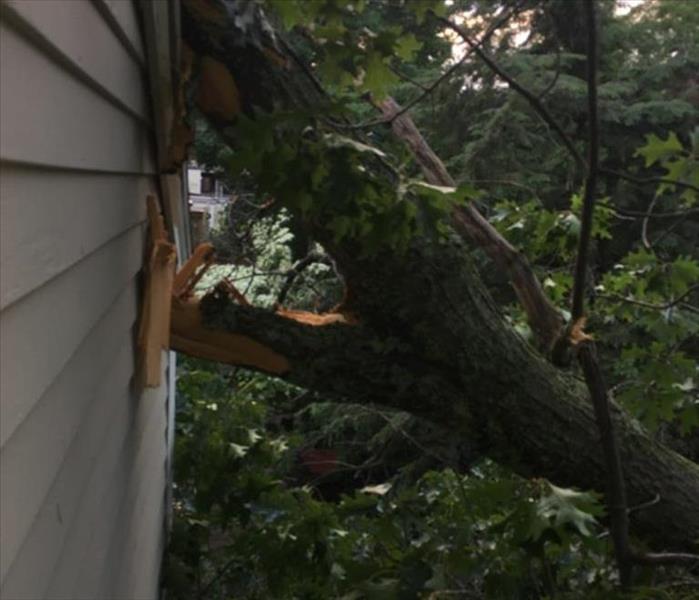 Tree branch from recent storm
Tree branch from recent storm
Last week’s microburst that occurred in the city of Cambridge resulted in about 50 limbs or branches down. Forestry crews are responding. There are also several wires down and loss of power in certain locations. The City Electrician, Eversource and SERVPRO of Cambridge/Belmont are responding. The above picture shows the damage that one of the downed trees caused. SERVPRO Of Cambridge/Belmont responded to a frantic call from the homeowner informing us that a tree came right through the kitchen ceiling. The SERVPRO technicians were at the Cambridge home in less than an hour. They cleaned up the debris and installed drying equipment.
To report a fallen tree or limb, call 617-349-3300.
To report a down wired, call 911 or 617-349-3300
To report loss of power, please call Eversourse at 1-800-592-2000
If you have had roof or water damage due to the Microburst please call SERVPRO of Cambridge/Belmont (617) 864-7378
A microburst is a small downdraft that moves in a way opposite to a tornado. Microbursts are found in strong thunderstorms. There are two types of microbursts within a thunderstorm: wet microbursts and dry microbursts. They go through three stages in their cycle, the downburst, outburst, and cushion stages. A microburst often has high winds that can knock over fully grown trees. They usually last from a couple of seconds to several minutes.
When to change the smoke alarm
7/31/2019 (Permalink)
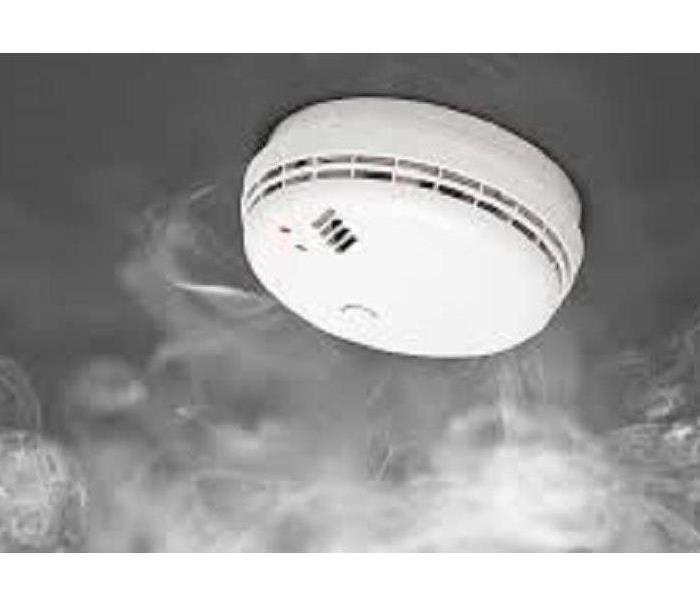 Active smoke alarm
Active smoke alarm
Your detectors are overdue for replacement, according to the National Fire Protection Association, which recommends that you replace detectors when they’re 10 years old. Top-rated security system experts we interviewed say that, over time, dust gathers inside smoke detectors, desensitizing the sensors. And even if a detector hasn’t reached the 10-year mark, replace it if it chirps after you’ve replaced the battery or if the alarm doesn’t sound when you perform the recommended monthly testing. Experts recommend replacing all connected detectors at the same time, even if some are working. Smoke detectors are an essential part of a fire-prevention strategy, so you should replace yours as soon as possible. In a 2014 report, the NFPA said three of every five home-fire deaths resulted from fires in homes with no smoke alarms or with none that worked.
You can replace hard-wired detectors yourself, if you can reach them and if you have sufficient skill to replace a light fixture. (Be sure to first turn off electricity at the breaker box.) Otherwise, you can hire an electrician or an alarm service company to do the job. The cost can vary widely, depending on where you live and on the type and number of units to be replaced, where they’re placed and the condition of the wires. Service providers we contacted charge a wide range of prices, from $35 to $40 per detector, plus a $50 for service charge, to $135 to $155 per detector.
Meanwhile, here are some NFPA safety tips:
- Install smoke alarms inside and outside each bedroom and sleeping area. Install alarms on every level of the home, including the basement. (Large homes may need extra smoke alarms.)
- Interconnected smoke alarms – whether hardwired or wireless – are best because when one is activated, they all sound.
- Test all smoke alarms at least once a month. Simply press the test button to be sure the alarm works.
- Ionization smoke alarms are quicker to warn of flaming fires. Photoelectric alarms are quicker to warn of smoldering fires. It’s best to use some of both types.
- A smoke alarm should be on the ceiling or high on a wall. Install wall-mounted alarms should no more than 12 inches from the ceiling to the top of the alarm.
- Don’t install smoke alarms near windows, doors, or ducts where drafts might interfere with their operation. To reduce false alarms, keep alarms at least 10 feet from a stove.
- Make sure everyone in your home knows how to respond if they hear a smoke alarm.
- Follow manufacturer’s instructions for cleaning.
If your smoke alarm goes off, immediately leave your home, follow your emergency plan & call SERVPRO of Cambridge/Belmont (617) 864-7378 to assist you assist you with the smoke cleanup.
10 common moisture problems in the home
7/23/2019 (Permalink)
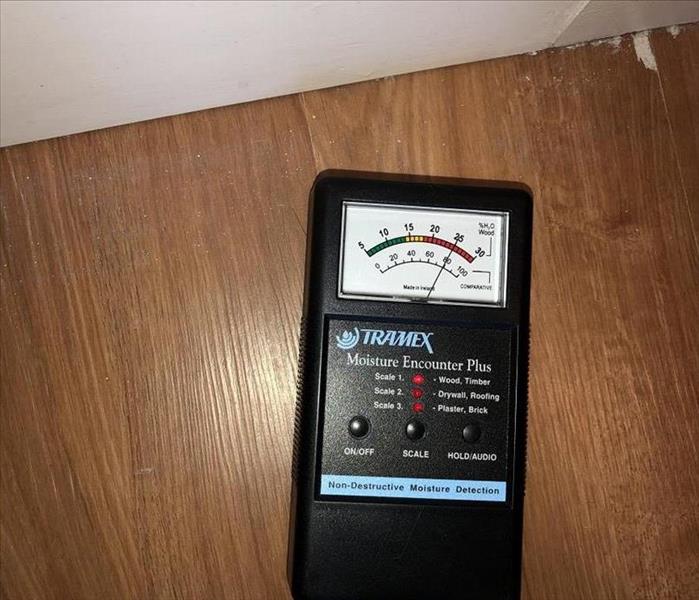 Moisture meter showing excessive moisture levels
Moisture meter showing excessive moisture levels
Must-know no. 1 – Your home produces moisture. Loads of it!
Any household produces moisture by cooking, washing, bathing and exercising. Even breathing brings moisture into the air. Your family and pets bring many liters of water into your home every day. Moisture can also enter your house from the soil through the basement or crawl space.
Must-know no. 2 – Too high humidity is not healthy…
Humidity is important for our health. A normal humidity level is needed for feeling comfortable. However, too much moisture in your home can cause big problems and even negatively affect your health. Microorganisms that thrive in humid conditions are of special concern as they can help cause allergies and asthmatic conditions.
Must-know no. 3 – … and neither is too low humidity
Low humidity can, in turn, have all kinds of unpleasant effects. Your skin can feel dry, your lips can start to chap and your eyes can start to itch. Sore eyes, difficulty breathing and painful sinuses are also common problems caused by too dry air. This is especially true in winter when the outside air tends to be very dry. Air conditioned spaces, including airplanes and offices, are also well known ‘dry zones.’
Must- know no. 4 – Bugs and mold love a humid home
Bugs thrive in humid conditions. Dust mites especially love warm temperatures (23-27 degrees Celsius / 75-80 degrees Fahrenheit) and high humidity levels of 70-80%. One study has found that mite populations stop growing and die out when relative humidity levels drop below 60%. Air conditioning has been proven to lower dust mite allergens in homes by lowering the ambient temperature and relative humidity. Mold loves humid conditions as well. When the relative humidity is higher than 80%, mold is likely to develop more than 50% of the time. Their spores are known to contribute to the development of asthma in children and cause allergies.
Must-know no. 5 – Moisture is the No. 1 electronics killer
Excess moisture can not only damage your health, but also damage your possessions. Electronics are especially susceptible to damage by condensation. Moisture can corrode contacts inside and lower insulation resistance, which may cause short circuits. Watch for high humidity and drastic temperature changes that occur when bringing in electric appliances from your cold garage or basement. Take care to let them adjust to the climate before switching them on. You can protect stored electronics or other valuables by putting them in closed plastic boxes with a small dehumidifying satchel/bag.
Must-know no. 6 – Winter is the real humid season
The air is often cold and dry in the winter. While your lips, skin and nails suffer due to all that winter dryness, your house might suffer from the effects of excess moisture because two things happen:
Winter is the heating season. We close our windows and reduce ventilation and circulation of air in our homes to keep out the cold. At the same time, rain and melting snow can increase the amount of moisture entering your house through crawl spaces, basements and walls. Because less moisture leaves the house, humidity levels inside can start to rise.
At the same time, something else happens. Parts of your house that are in direct contact with the cold outside air are cooler than the air inside. Examples are single glazed windows and walls with low insulation. The temperature difference with the warm, moist air inside can cause continuous condensation to occur on those cold surfaces. All that wetness will attract mold growth and cause moisture stains.
Must-know no. 7 – Ventilation is essential
Especially areas that produce a lot of moisture like bathrooms, kitchens and bedrooms need lots of ventilation. In some areas, it is simply not possible, cost effective or energy efficient to ventilate continuously.
Must-know no. 8 – Humidity is always relative
So what exactly is “humidity,” anyway? Humidity is the amount of moisture or water vapor in the air. However, you will usually hear the term “relative humidity.” Why “relative”? Because the maximum amount of water the air can “hold” depends on the temperature of the air. A relative humidity of 100% means the air contains the maximum amount of water it can hold at that specific temperature. Warmer air can hold more water than colder air.
So, what happens when warm humid air cools down? The colder air can hold less moisture and might “drop” some of it. This happens most easily when warm, humid air comes into contact with a cold surface (like a cool soda bottle in summer or windows in winter). Water released by the air in this way is called “condensation,” which can cause serious problems in your home, car, boat or RV.
Must-know no. 9 – The ideal humidity level is 40-60%
Opinions on the ideal relative humidity level in your home vary somewhat. Generally, it is thought best to be in the 40-60% range. Moving outside this range for a short period is not likely to cause you any discomfort. Negative effects are most likely to occur when parts of your home are continuously exposed to high humidity.
Must-know no. 10 – Humidity can be controlled
There are many solutions available to help you maintain healthy humidity levels and moisture problems. You can use a hydrometer to monitor the inside air and there are all kinds of commercial dehumidifiers and humidifiers out there. They all have their advantages and disadvantages.
If you have a moisture/water problem, please call SERVPRO of Cambridge/Belmont (617) 489-7378
Smoke & Soot cleanup
7/16/2019 (Permalink)
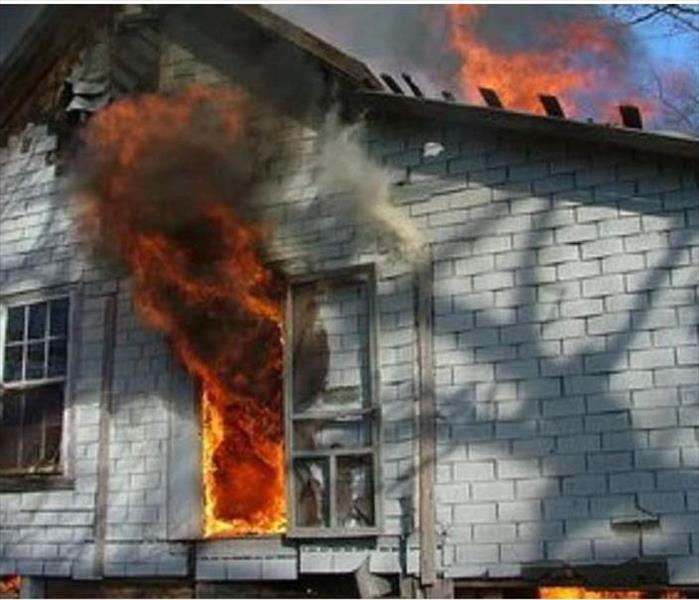 Active fire at a home in Cambridge, MA
Active fire at a home in Cambridge, MA
Smoke and soot is very invasive and can penetrate various cavities within your home, causing hidden damage and odor. Our smoke damage expertise and experience allows us to inspect and accurately assess the extent of the damage to develop a comprehensive plan of action.
Smoke and soot facts:
Hot smoke migrates to cooler areas and upper levels of a structure.
Smoke flows around plumbing systems, seeping through the holes used by pipes to go from floor to floor.
The type of smoke may greatly affect the restoration process.
Different Types of Smoke
There are two different types of smoke–wet and dry. As a result, there are different types of soot residue after a fire. Before restoration begins, SERVPRO of Cambridge/Belmont will test the soot to determine which type of smoke damage occurred. The cleaning procedures will then be based on the information identified during pretesting.
Wet Smoke – Plastic and Rubber
Dry Smoke – Paper and Wood.
Fast burning, high temperatures, heat rises therefore smoke rises.
Protein Fire Residue – Produced by evaporation of material rather than from a fire.
Virtually invisible, discolors paints and varnishes, extreme pungent odor.
Our Fire Damage Restoration Services:
Since each smoke and fire damage situation is a little different, each one requires a unique solution tailored for the specific conditions. We have the equipment, expertise, and experience to restore your fire and smoke damage. We will also treat your family with empathy and respect and your property with care.
Have Questions about Fire, Smoke, or Soot Damage?
Call SERVPRO of Cambridge/Belmont – (617) 864-7378
Floods in Belmont, MA
7/16/2019 (Permalink)
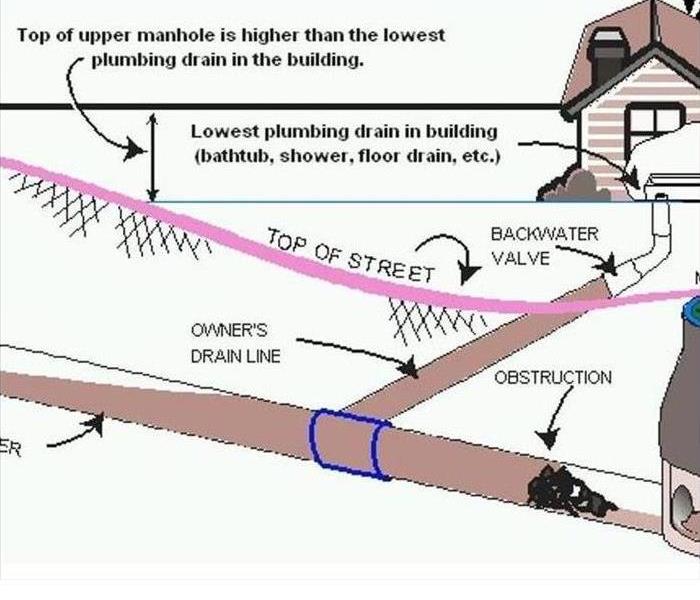 Diagram of a city sewer system
Diagram of a city sewer system
The heavy rains that occurred in the Cambridge/Belmont area caused not only flooding but also many sewage back- ups. The town & cities sewage system gets overwhelmed causing the sewage to flow into basements through toilets and sinks. When a storm drain suffers a partial or complete blockage, rain water gets trapped in the pipes and must go somewhere. Unfortunately, the only exit point is the pipe servicing your home that connects to the sewer line. With nowhere left to go it goes up through your pipe, pushing whatever refuse and filth it’s carrying into your basement and other areas of your home. Contact your local plumber to install a backwater valve to prevent this from happening to you! If your basement gets flooded or has sewage issues, please call SERVPRO of Cambridge/Belmont (617) 864-7378 to assist you. Did you know that SERVPRO of Cambridge/Belmont also helps Commercial and Industrial customers?
It's Lightning Season
7/16/2019 (Permalink)
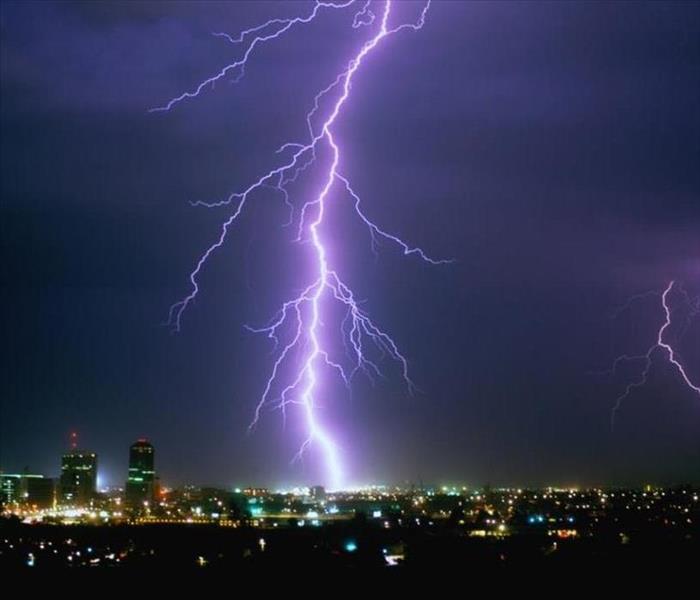 Lightning in the night sky
Lightning in the night sky
Lightning is an electrical discharge caused by imbalances between storm clouds and the ground, or within the clouds themselves. Most lightning occurs within the clouds.
"Sheet lightning" describes a distant bolt that lights up an entire cloud base. Other visible bolts may appear as bead, ribbon, or rocket lightning. During a storm, colliding particles of rain, ice, or snow inside storm clouds increase the imbalance between storm clouds and the ground, and often negatively charge the lower reaches of storm clouds. Objects on the ground, like steeples, trees, and the Earth itself, become positively charged—creating an imbalance that nature seeks to remedy by passing current between the two charges.
Lightning is extremely hot—a flash can heat the air around it to temperatures five times hotter than the sun’s surface. This heat causes surrounding air to rapidly expand and vibrate, which creates the pealing thunder we hear a short time after seeing a lightning flash.
Types of Lightning
Cloud-to-ground lightning bolts are a common phenomenon—about 100 strike Earth’s surface every single second—yet their power is extraordinary. Each bolt can contain up to one billion volts of electricity.
A typical cloud-to-ground lightning bolt begins when a step-like series of negative charges, called a stepped leader, races downward from the bottom of a storm cloud toward the Earth along a channel at about 200,000 mph (300,000 kph). Each of these segments is about 150 feet (46 meters) long.
When the lowermost step comes within 150 feet (46 meters) of a positively charged object, it is met by a climbing surge of positive electricity, called a streamer, which can rise up through a building, a tree, or even a person.
When the two connect, electrical current flows as negative charges fly down the channel towards earth and a visible flash of lightning streaks upward at some 200,000,000 mph (300,000,000 kph), transferring electricity as lightning in the process.
Some types of lightning, including the most common types, never leave the clouds but travel between differently charged areas within or between clouds. Other rare forms can be sparked by extreme forest fires, volcanic eruptions, and snowstorms. Ball lightning, a small, charged sphere that floats, glows, and bounces along oblivious to the laws of gravity or physics, still puzzles scientists.
About one to 20 cloud-to-ground lightning bolts is "positive lightning," a type that originates in the positively charged tops of storm clouds. These strikes reverse the charge flow of typical lightning bolts and are far stronger and more destructive. Positive lightning can stretch across the sky and strike "out of the blue" more than 10 miles from the storm cloud where it was born.
If you have had damage from a lightning strike, please call SERVPRO of Cambridge/Belmont (617) 864-7378
Last week's Microburst causes damage in the Cambridge/Belmont area
7/15/2019 (Permalink)
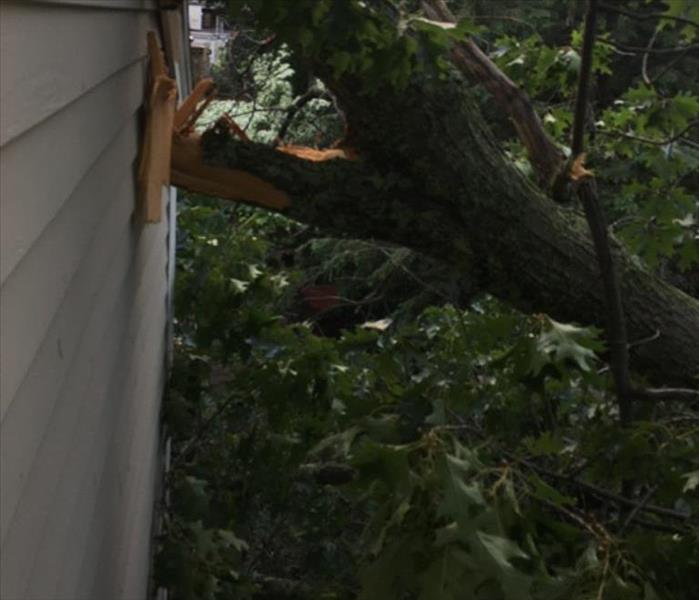 Downed Tree from microburst
Downed Tree from microburst
Last week’s microburst that occurred in the city of Cambridge resulted in about 50 limbs or branches down. Forestry crews are responding. There are also several wires down and loss of power in certain locations. The City Electrician, Eversource and SERVPRO of Cambridge/Belmont are responding. The above picture shows the damage that one of the downed trees caused. SERVPRO Of Cambridge/Belmont responded to a frantic call from the homeowner informing us that a tree came right through the kitchen ceiling. The SERVPRO technicians were at the Cambridge home in less than an hour. They cleaned up the debris and installed drying equipment.
To report a fallen tree or limb, call 617-349-3300.
To report a down wired, call 911 or 617-349-3300
To report loss of power, please call Eversourse at 1-800-592-2000
If you have had roof or water damage due to the Microburst please call SERVPRO of Cambridge/Belmont (617) 864-7378
A microburst is a small downdraft that moves in a way opposite to a tornado. Microbursts are found in strong thunderstorms. There are two types of microbursts within a thunderstorm: wet microbursts and dry microbursts. They go through three stages in their cycle, the downburst, outburst, and cushion stages. A microburst often has high winds that can knock over fully grown trees. They usually last from a couple of seconds to several minutes.
Emergency services after a storm
7/15/2019 (Permalink)
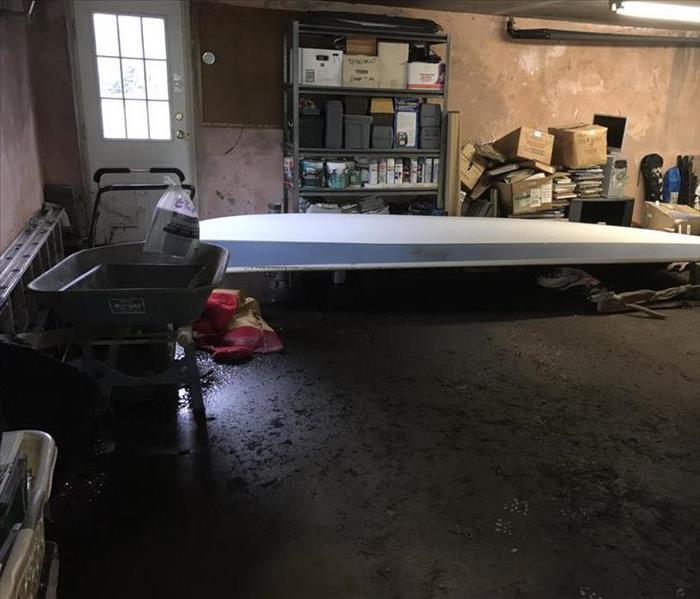 Flooded garage due to a storm
Flooded garage due to a storm
24 Hour Emergency Water Damage Service
SERVPRO of Cambridge/Belmont is available 24 hours a day for water emergencies, large or small. When you are dealing with water damage, immediate action is crucial. A delay of just a few hours can greatly increase the severity of the water damage.
We Answer the Phone Ready to Help
Call SERVPRO of Cambridge/Belmont Today - (617) 864-7378
We understand that when you call us, you may be feeling confused, stressed, and vulnerable. You need an expert to guide you through this crisis. SERVPRO of Cambridge/Belmont has the specific water damage training and experience to help you through this tough time. We specialize in water damage restoration—in fact, it's the cornerstone of our business.
What to Expect
When you call, we will ask several questions regarding your water damage emergency. These questions will help us determine what equipment and resources to bring, including how many trained SERVPRO Professionals may be needed.
Our SERVPRO Representative will ask several questions:
Your name and contact information
Your insurance information (if applicable)
The street address of the water-damaged home or business
When did the flooding or water damage occur?
What caused the water damage (if known)?
Is there electricity available (on-site)?
About SERVPRO of Cambridge/Belmont
SERVPRO of Cambridge/Belmont specializes in the cleanup and restoration of residential and commercial property after a fire, smoke or water damage event. Our staff is highly trained in property damage restoration. From initial and ongoing training at SERVPRO’s corporate training facility to regular IICRC-industry certification, rest assured our staff is equipped with the knowledge to restore your property.
Storm hits Belmont, Cambridge area
7/1/2019 (Permalink)
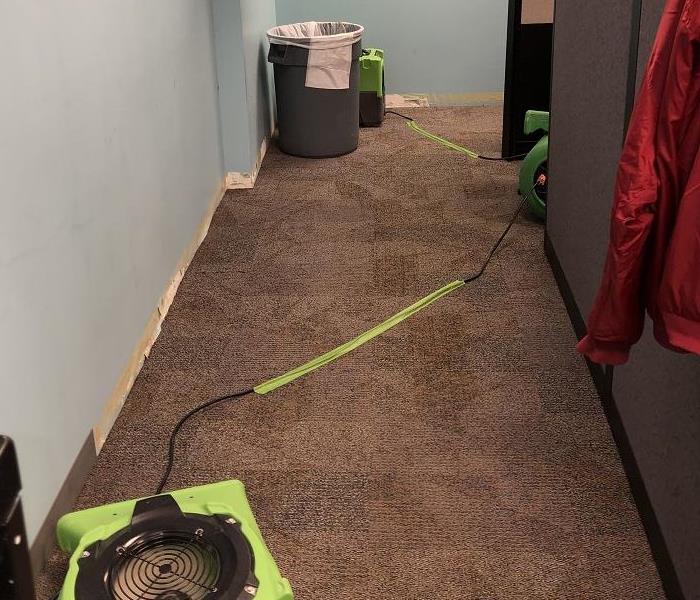 Drying equipment doing the work
Drying equipment doing the work
The rain came quickly and only lasted a few minutes but it created significant damage to the Cambridge/Belmont area. Diane, the office manager, arrived in her office Monday morning. Diane felt her feet squish as she walked across the wet carpet. The rain was so overwhelming that the roof drain overflowed causing water to pour down into the office. She made a call to SERVPRO of Cambridge/Belmont and explained that she needed her office to be operational as it was their busy season. The SERVPRO technicians arrived within the hour. Melvin, the crew chief, tested walls and ceilings for excessive moisture, extracted the water from the carpets and left equipment to dry the wet walls, ceiling and carpet. Melvin came back the next day to monitor the drying progress. The walls and carpet were still wet. He came back again the next day tested the areas with a moisture meter and he found all areas to be dry. The crew shampooed the carpet and everything was back to normal in the office. If you have water or fire damage in your business, please call SERVPRO of Cambridge/Belmont (617) 864-7378
The rain came quickly and only lasted a few minutes but it created significant damage to the Cambridge/Belmont area. Diane, the office manager, arrived in her office Monday morning. Diane felt her feet squish as she walked across the wet carpet. The rain was so overwhelming that the roof drain overflowed causing water to pour down into the office. She made a call to SERVPRO of Cambridge/Belmont and explained that she needed her office to be operational as it was their busy season. The SERVPRO technicians arrived within the hour. Melvin, the crew chief, tested walls and ceilings for excessive moisture, extracted the water from the carpets and left equipment to dry the wet walls, ceiling and carpet. Melvin came back the next day to monitor the drying progress. The walls and carpet were still wet. He came back again the next day tested the areas with a moisture meter and he found all areas to be dry. The crew shampooed the carpet and everything was back to normal in the office. If you have water or fire damage in your business, please call SERVPRO of Cambridge/Belmont (617) 864-7378
The rain came quickly and only lasted a few minutes but it created significant damage to the Cambridge/Belmont area. Diane, the office manager, arrived in her office Monday morning. Diane felt her feet squish as she walked across the wet carpet. The rain was so overwhelming that the roof drain overflowed causing water to pour down into the office. She made a call to SERVPRO of Cambridge/Belmont and explained that she needed her office to be operational as it was their busy season. The SERVPRO technicians arrived within the hour. Melvin, the crew chief, tested walls and ceilings for excessive moisture, extracted the water from the carpets and left equipment to dry the wet walls, ceiling and carpet. Melvin came back the next day to monitor the drying progress. The walls and carpet were still wet. He came back again the next day tested the areas with a moisture meter and he found all areas to be dry. The crew shampooed the carpet and everything was back to normal in the office. If you have water or fire damage in your business, please call SERVPRO of Cambridge/Belmont (617) 864-7378
Commercial Water Damage Events in Cambridge or Belmont Present Unique Challenges
7/1/2019 (Permalink)
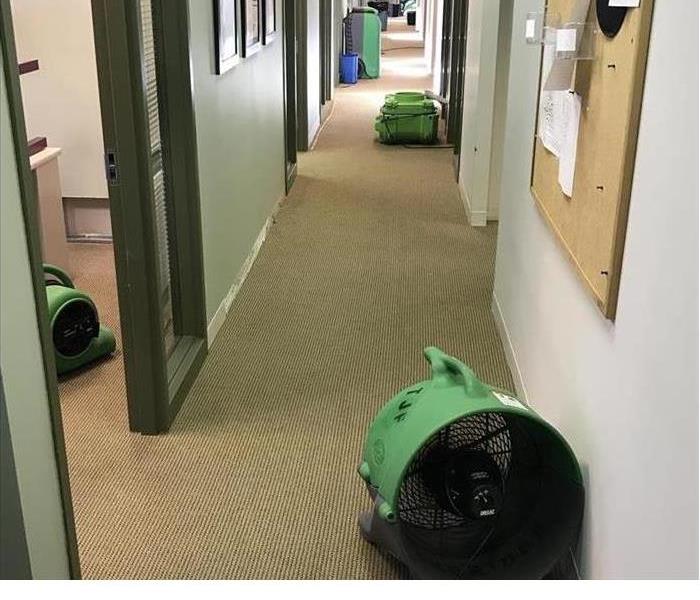 Commercial water loss Tech Sq Cambridge, MA
Commercial water loss Tech Sq Cambridge, MA
Flooding and water damage events at City of Cambridge commercial properties are often complex with numerous issues that require a knowledgeable and flexible response. Whether we’re dealing with a relatively small water cleanup scenario or a large scale event, we work quickly to assess each unique situation and isolate the damaged area. In many instances, normal operations can continue in a temporary space while we restore your facility.
Our professionals are trained to be mindful of legal and environmental concerns and strive to fully restore the damaged area while working within your budgetary constraints. We understand that every hour spent cleaning up is an hour of lost revenue and productivity. So when an emergency situation arises in your business, give us a call and we’ll be there fast with the help you need.
About SERVPRO of Cambridge/Belmont
SERVPRO of Cambridge/Belmont specializes in the cleanup and restoration of commercial and residential property after a water damage event. Our staff is highly trained in property damage restoration. From initial and ongoing training at SERVPRO’s corporate training facility to regular IICRC-industry certification, rest assured our staff is equipped with the knowledge to restore your property. If you are a property of facilities manager in Cambridge or Belmont and you have questions regarding our services, please call (617) 864-7378
Basement Flooding Belmont, MA
6/6/2019 (Permalink)
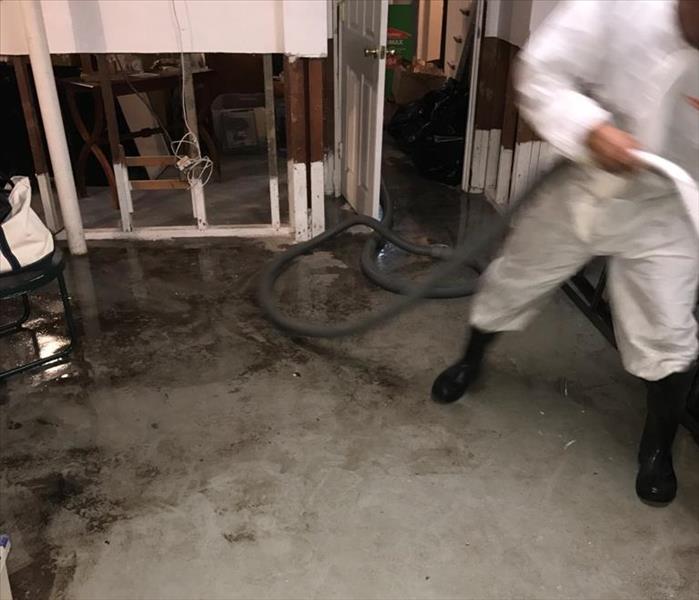 Flooded basement in Belmont, MA
Flooded basement in Belmont, MA
Town of Belmont 24 Hour Emergency Water Damage Service
SERVPRO of Cambridge/Belmont is available 24 hours a day for water emergencies, large or small. When you are dealing with water damage, immediate action is crucial. A delay of just a few hours can greatly increase the severity of the water damage.
We Answer the Phone Ready to Help
Call Today - (617) 489-7378
We understand that when you call us, you may be feeling confused, stressed, and vulnerable. You need an expert to guide you through this crisis. SERVPRO of Cambridge/Belmont has the specific water damage training and experience to help you through this tough time. We specialize in water damage restoration—in fact, it's the cornerstone of our business.
What to Expect
When you call, we will ask several questions regarding your water damage emergency. These questions will help us determine what equipment and resources to bring, including how many trained SERVPRO Professionals may be needed.
Our SERVPRO Representative will ask several questions:
Your name and contact information
Your insurance information (if applicable)
The street address of the water-damaged home or business
When did the flooding or water damage occur?
What caused the water damage (if known)?
Is there electricity available (on-site)?
About SERVPRO of Cambridge/Belmont
SERVPRO of Cambridge/Belmont specializes in the cleanup and restoration of residential and commercial property after a fire, smoke or water damage event. Our staff is highly trained in property damage restoration. From initial and ongoing training at SERVPRO’s corporate training facility to regular IICRC-industry certification, rest assured our staff is equipped with the knowledge to restore your property. SERVPRO of Cambridge/Belmont (617) 489-7378 – If you suspect you have water damage, Call us!
Appliance do's & don'ts
6/6/2019 (Permalink)
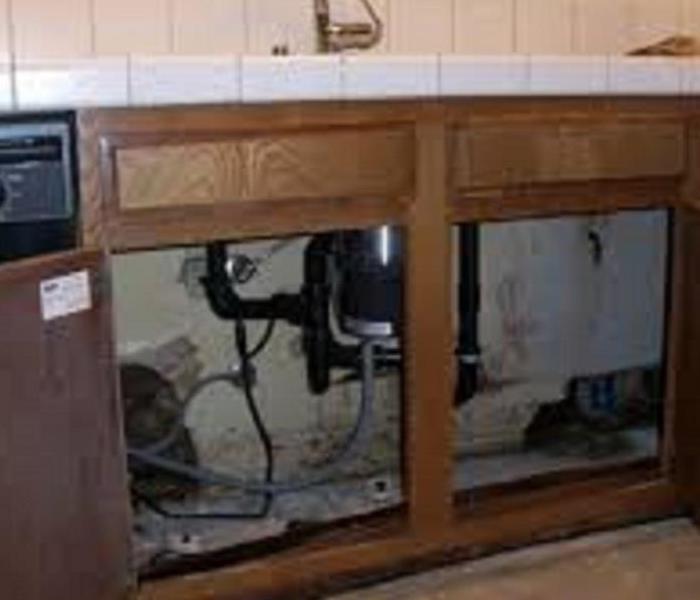 Effects of a leaking Dishwasher
Effects of a leaking Dishwasher
Has your dishwasher stopped draining? Did you accidentally break the sliding rack? Have the buttons just stopped working? You need a repair pro. We asked Sergio Rodrigues of SERVPRO of Cambridge/Belmont and Craig Kimble of We Can Fix That to share their best tips for when to repair an ailing appliance, when to replace it and what to do if it begins to leak water.
Typical Appliance problems involve broken mechanical parts, says Craig of We Can Fix That. Think a broken soap dispenser, dislodged sliding rack wheel, or broken sprayer arm in a dishwasher.
When a Dishwasher won’t drain, there’s usually something in the drain process that shouldn’t be there like lemon seeds, glass, plastic wrap or even bobby pins. “With a high-end dishwasher, you’ll get an OE overflow code. Often I can disconnect the machine, lean it forward, and drain it for a fix without having to replace any of the control boards,” says Craig.
In general, if you have to fix an issue but the unit is relatively new, it makes sense to fix if repair costs are under half the cost to replace the appliance. A good unit can last you 15-20 years if it’s well-maintained.
When to Replace: Do the Math
Once you start to replace the electronic boards, it gets expensive. On high-end dishwashers (KitchenAid, Samsung, Bosch) if the user control panel and the power control unit go out at the same time, it’s not worth it to repair it. “The parts alone will exceed $600 wholesale,” says Craig.
If a dishwasher is more than 7-10 years old and you’re paying more than half of the original cost in repairs, you should consider buying a new one.
How to Avoid Issues
Don’t run a garbage disposal at the same time the dishwasher is running, urges Michael of SERVPRO of Cambridge/Belmont. The two share the same plumbing, so if they’re going at the same time, you are more apt to kick debris into the dishwasher discharge line and clog it.
A little preventative maintenance goes a long way. Have a pro come every two years, clean out your lines and any calcium deposits, and get you running clean again. If the dishwasher does leak, call the preferred professional, SERVPRO of Cambridge/Belmont (617) 864-7378.
Common Plumbing Issues in your home
6/6/2019 (Permalink)
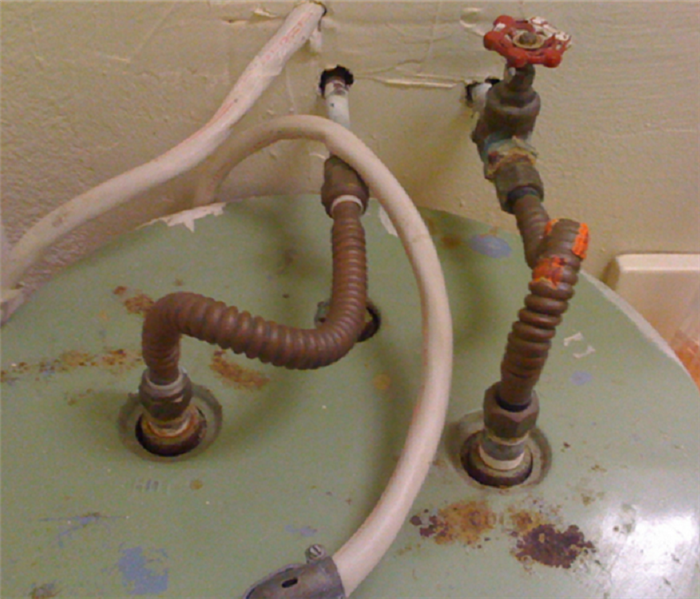 Old, Rusty Hot Water Heater
Old, Rusty Hot Water Heater
You depend on your plumbing each and every day, from the hot water in your shower to the water boiling on your stove. As such, it’s important to maintain your plumbing regularly to make sure there aren’t any major issues such as leaks or sewage backups. But plumbing problems can still occur with regular maintenance, so it’s good to be aware of common plumbing issues and what you can do to solve them or minimize damage to your home.
Low Water Pressure
Proper water pressure is necessary for washing your hands, cleaning dishes, and taking a shower. If you’ve noticed a significant drop in your home’s water pressure, you probably have a clogged pipe. It’s also possible that you need to fully open your shutoff valve. If you’re only having water pressure issues with one faucet, the solution may be as simple as cleaning the aerator or removing a nearby clog.
Dripping Faucet
Depending on the severity of the drip, a dripping faucet can raise your water bill and waste a significant amount of water—not to mention how annoying it can be. Luckily, fixing a dripping faucet is usually as simple as replacing seats and springs or a washer in the faucet.
Running Toilet
It happens so frequently: minutes after flushing your toilet, you can still hear the toilet running as if the bowl is filling with water. This is an incredibly annoying problem to have, but usually, an easy one to fix. Remove the lid from your toilet tank and make sure that your tank ball, flapper valve, and flush valve are working properly—if any of them are sticking or not functioning right, they’re easy to replace.
Clogged Drain
Clogged or slow drains are probably the most common plumbing problem. Plumbing pipes are designed to allow water and waste to flow through freely, but over time, built up hair, soap scum and other debris can form a clog in your drain that prevents water from passing. This is almost sure to happen in any home given enough time. You can use vinegar and baking soda to break up clogs in your sink, or you can buy a drain auger and remove the clog manually.
Sometimes the clog may be deeper in your pipes or too severe to easily remove, look into professional plumbing services; they have the equipment and expertise to clear clogged drains without causing damage to your plumbing. If you have sewage damage as a result of a clogged drain or other plumbing issues, please call SERVPRO of Cambridge/Belmont (617) 864-7378
Leaking Pipes
Leaks aren’t just an annoyance; they can significantly increase your water bill and quickly cause damage to your home. If you have a leaking pipe that’s beyond a slow drip, shut your water off as soon as possible. If there is any chance of mold or structural damage to your home, call SERVPRO of Cambridge/Belmont (617) 489-7378 to avoid spending a fortune on repairs. Leaking pipes generally need to be replaced, but you can use marine tape or epoxy to cover small leaks temporarily—just remember to shut the water off first.
No Hot Water
Have you ever rolled out of bed and into the shower only to find there’s no hot water? It’s not a good experience. Chances are you’ve got something wrong with your water heater, most probably an electrical problem such as a thermostat or element. If you’re not comfortable troubleshooting your water heater, it’s a good idea to get help from a trained, knowledgeable professional.
Plumbing truly is an essential part of our everyday lives. We can’t all be professional plumbers, but with a little bit of research and hard work, you can stay cool, calm and collected in the face of a plumbing emergency
If you have water damage as a result of any of these or other plumbing issues, please call SERVPRO of Cambridge/Belmont (617) 864-7378
24 Hour Water damage assistance
5/22/2019 (Permalink)
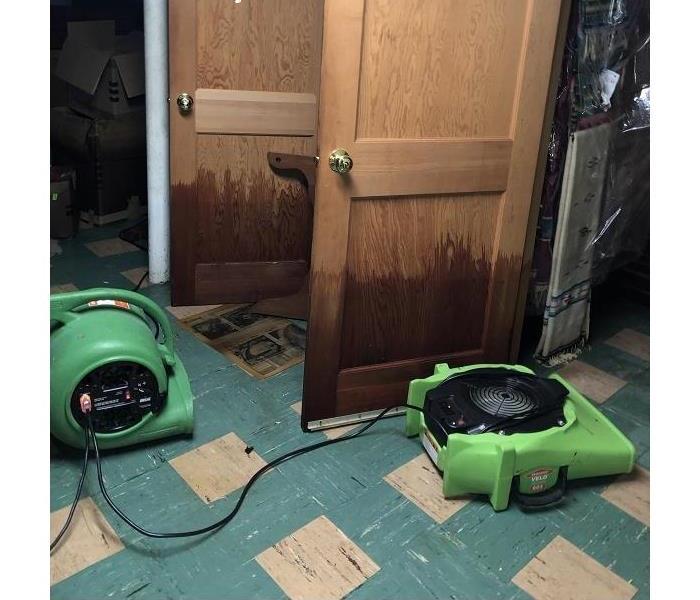 Flooded basement due to a hot water heater
Flooded basement due to a hot water heater
24 Hour Emergency Water Damage Service – SERVPRO of Cambridge/Belmont
SERVPRO of Cambridge/Belmont is available 24 hours a day for water emergencies, large or small. When you are dealing with water damage, immediate action is crucial. A delay of just a few hours can greatly increase the severity of the water damage.
We Answer the Phone Ready to Help
Call Today - (617) 864-7378
We understand that when you call us, you may be feeling confused, stressed, and vulnerable. You need an expert to guide you through this crisis. SERVPRO of Cambridge/Belmont has the specific water damage training and experience to help you through this tough time. We specialize in water damage restoration—in fact, it's the cornerstone of our business.
What to Expect: When you call, we will ask several questions regarding your water damage emergency. These questions will help us determine what equipment and resources to bring, including how many trained SERVPRO Professionals may be needed.
Our SERVPRO Representative will ask several questions:
Your name and contact information
Your insurance information (if applicable)
The street address of the water-damaged home or business
When did the flooding or water damage occur?
What caused the water damage (if known)?
Is there electricity available (on-site)?
About SERVPRO of Cambridge/Belmont
SERVPRO of Cambridge/Belmont specializes in the cleanup and restoration of residential and commercial property after a fire, smoke or water damage event. Our staff is highly trained in property damage restoration. From initial and ongoing training at SERVPRO’s corporate training facility to regular IICRC-industry certification, rest assured our staff is equipped with the knowledge to restore your property
Surprising places mold can be found
5/3/2019 (Permalink)
 Mold may be growing on your mattress
Mold may be growing on your mattress
It’s a well-known fact that mold grows in damp spots, typically in the kitchen, basement or bathroom. But below are some additional spots that may leave you cringing.
In your mattress.
Why it grows there – Mold grows in damp places, and though you might not like to think about it, your mattress can get damp. It can carry moisture from things like perspiration and spills, making it an ideal home for mold.
How to clean it – You can start by vacuuming both sides of the mattress, and then of course, cleaning out that vacuum to avoid the spread of mold spores. Then, mix together an equal ratio of rubbing alcohol and water, dip a cloth in the mixture, and scrub the mattress. After that, spray a disinfectant on the mattress, and sit it out to dry in the sunshine (a very important steps because, of course, getting rid of moisture is crucial). However, if you see the mold spread to the floors and walls of your bedroom as well, it’s best to call the experts!
On your dishes.
Your dishes, those things you serve the food you and your family eat on. While it may make you gag, it does make sense.
Why it grows there – When the dishes aren’t completely dry, but you start stacking them anyway, you set up a prime spot for mold to grow.
How to clean your dishes – To start, make sure your dishes are totally moisture-free before stacking and putting them away. If it’s too late for that step, simply run the dishes through a dishwasher (washing and sanitizing them), and wipe down your cupboards using a vinegar and water solution and a cloth. Again, if the mold has spread to your sink, counter or throughout your cabinet, it’s best to call the experts, SERVPRO of Cambridge/Belmont
On your toothbrush.
This could be the most important takeaway of them all mostly because you are potentially putting mold particles directly into your mouth.
Why it grows there – When toothbrushes don’t receive a proper chance to dry out between brushing, mold has the perfect opportunity to thrive.
How to clean it – Okay, forget cleaning mold off your toothbrush. Just go buy a new, definitely-mold-free one. And then use these tips to keep it that way.
- First, buy a new one frequently. Even if it doesn’t look frayed, you should be replacing it at least every three months.
- Second, use toothpaste with germ-fighting triclosan/copolymer.
- Third, don’t share toothbrushes.
- Fourth, close the lid to your toilet while flushing! You wouldn’t believe how far those germs can fly.
- Lastly, don’t store your toothbrush in an airtight container. To avoid mold growth, it needs to be exposed to the open air.
No matter where you find mold growing in your home, you’ll need to clean it up and fix the moisture problem immediately. Otherwise, the mold will continue to grow and potentially damage any surface it calls home. If you have a mold issue, please call SERVPRO of Cambridge/Belmont (617) 864-7378 to assist you.
Commercial Water events create unique challenges
5/2/2019 (Permalink)
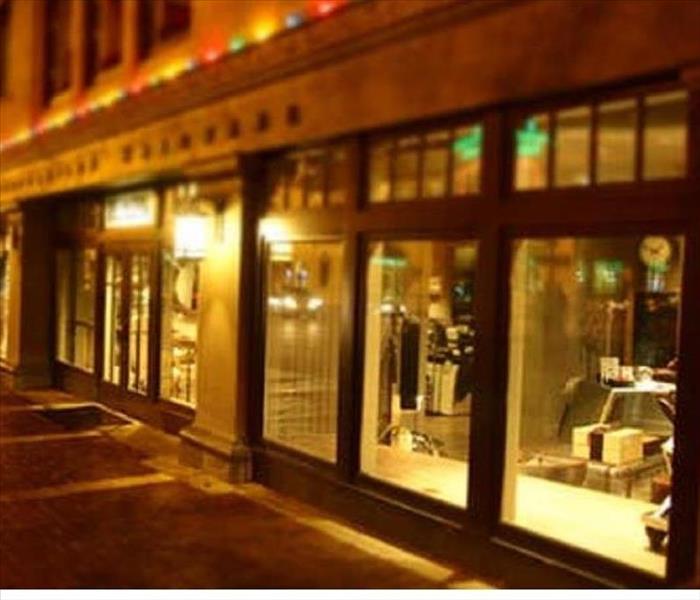 Retail stores after hours
Retail stores after hours
Flooding and water damage events at City of Cambridge commercial properties are often complex with numerous issues that require a knowledgeable and flexible response. Whether we’re dealing with a relatively small water cleanup scenario or a large scale event, we work quickly to assess each unique situation and isolate the damaged area. In many instances, normal operations can continue in a temporary space while we restore your facility.
Our professionals are trained to be mindful of legal and environmental concerns and strive to fully restore the damaged area while working within your budgetary constraints. We understand that every hour spent cleaning up is an hour of lost revenue and productivity. So when an emergency situation arises in your business, give us a call and we’ll be there fast with the help you need.
SERVPRO of Cambridge/Belmont specializes in the cleanup and restoration of commercial and residential property after a water damage event. Our staff is highly trained in property damage restoration. From initial and ongoing training at SERVPRO’s corporate training facility to regular IICRC-industry certification, rest assured our staff is equipped with the knowledge to restore your property. If your business has sustained a fire or water damage, please contact SERVPRO of Cambridge/Belmont (617) 864-7378 to assist you
Fire in the workplace
5/2/2019 (Permalink)
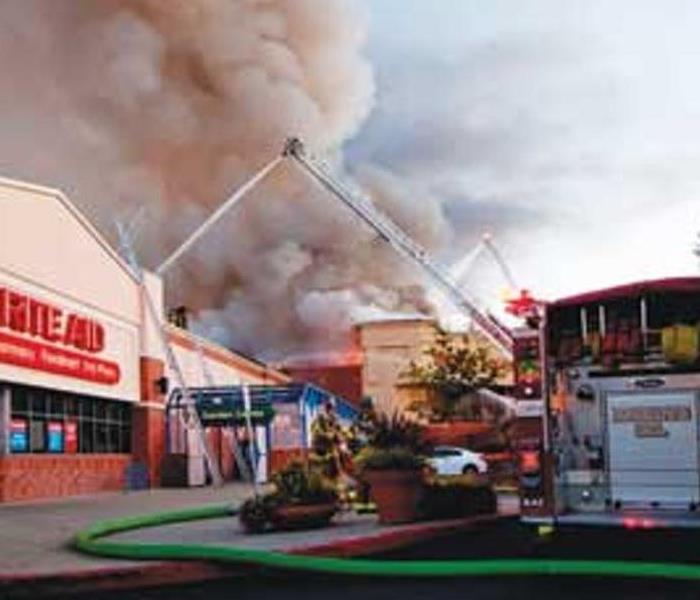 Store in the midst of a fire
Store in the midst of a fire
Most Common Causes of Fire in the Workplace
Electrical Fires
Over 25% of all fires are linked to a malfunction of either a piece of electrical equipment, wiring, or both. Electricity is a common source of ignition for major fires. One way to avoid problems with electrical fires is to establish an electrical safety program.
All employees should be thoroughly familiar with the safety procedures for their particular jobs. To maximize his or her own safety, an employee should always use tools and equipment properly. Extension cords must be inspected before use, and those found questionable, removed from service and properly tagged. Damage or inadequate maintenance can cause equipment to deteriorate, resulting in unsafe conditions.
Flammable and Combustible Materials
There are thousands of chemicals in use in the modern American workplace. One of the most prevalent dangers of these chemicals is their flammability or combustibility. Improper handling of flammable materials brings a great risk of fire. When a flammable liquid is spilled, vapors begin to form immediately. It is the vapors that will ignite, and which pose the greater danger.
Flammable liquid spill cleanup should begin immediately. Vapors will continue to build until the liquid is removed, and they can be ignited by a variety of sources in the average workplace. The best way to avoid fire caused by these materials is to follow all OSHA guidelines when dealing with flammables.
Human Error
The most common reason for a sprinkler system failure is human error. Often times the water supply was turned off at the time of the fire. The success of fire prevention strategies depends primarily on pre-planning, preparation, equipment quality, and the readiness of personnel. Employees and loss prevention practitioners must be knowledgeable about the proper use of extinguishers. If the wrong extinguisher is used, a fire may become more serious.
General Negligence
Negligence is another common cause of fire in the workplace. It’s slightly different from fires caused by human error. Negligence occurs when an employee does not follow established procedures and knowingly undertakes an activity that is a potential fire hazard.
Fire caused by negligence can be the result of:
- Hot surfaces too close to heating equipment
- Open flame that’s not properly located or protected
- Not following smoking restrictions or careless disposal of butts, ashes, and matches
Good common sense, self awareness, and close adherence to policy are a great way to avoid fires caused by general negligence. Posting fire safety signs in common areas is another way to keep fire safety at top of mind.
Arson
The premise behind arson prevention, like other prevention programs, is to address the opportunity to commit the crime. Arsonists, like other criminals, typically prefer to start fires in locations that are secluded or hidden. Prevention programs often suggest improving the surveillance in these areas by lighting the area, removing visual obstructions to natural observation, and moving the targets such as dumpsters.
If your company, please call SERVPRO of Cambridge/Belmont (617) 864-7378 to assist you with the cleanup.
Mold in the basement
5/2/2019 (Permalink)
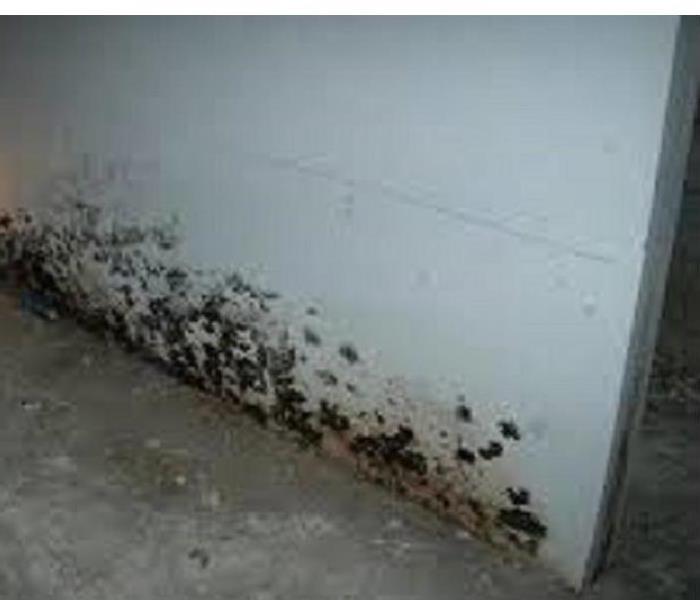 Mold growing on sheetrock in the basement
Mold growing on sheetrock in the basement
The Millers were away for a week and when they came home they noticed a smell coming from the basement. A pipe had developed a leak and was dripping water onto the carpet in their finished basement. The Millers called SERVPRO of Cambridge/Belmont to assist them with the water damage. The crew arrived and checked the basement walls and floor for excessive moisture content. The SERVPRO crew determined that the water wicked up the walls causing the positive readings. SERVPRO of Cambridge/Belmont’s technician recommended the removal of 2 feet of walls and removal of the insulation behind the walls so that the basement could be dried properly. The customer did not follow the technician’s advice and wanted only to have the pad removed and the carpet dried. A few weeks later, the Millers discovered black spots growing on the walls. They called SERVPRO of Cambridge/Belmont again to assess the situation. the crew chief determined that mold had started growing and recommended that the walls be cur 6”inches past the mold growth, remove the insulation, hepa-vacuum and spray an anti-microbial behind those walls. If you have water damage call SERVPRO of Cambridge/Belmont (617) 864-7378 to assist you and please follow the recommendations of the crew.
Flood Insurance, do you need it?
5/2/2019 (Permalink)
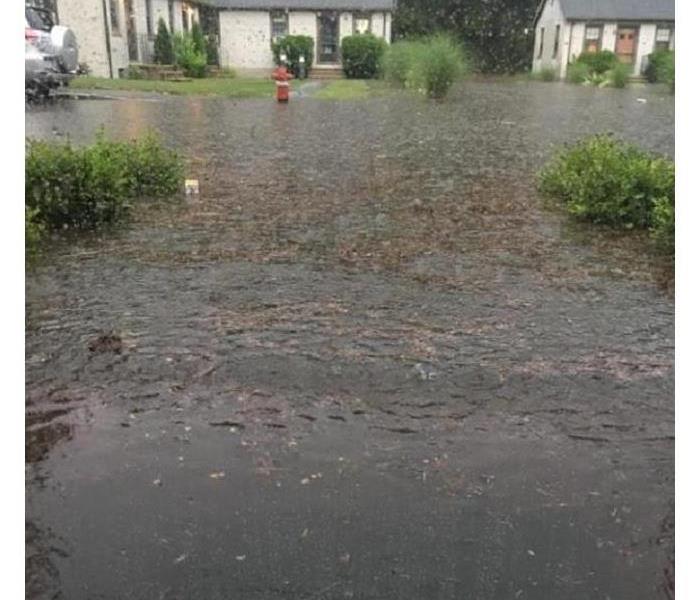 Spring rain can cause a flood very quickly
Spring rain can cause a flood very quickly
The fact is – any property can flood. Your home doesn’t have to be under five feet of water from hurricane flood surges to suffer flood damage. Normal amounts of rainwater can drain under your home, and flood your basement or the lowest floor level, causing flood damage. This kind of flooding can cause mold, increase the risk of termites and cause electrical problems.
More than 75% of homeowners devastated by flooding unfortunately discover they should have had flood insurance. The sad thing, experts say, is that flood insurance is not that expensive – typically $450 to $600 a year for the average home. When you weigh the cost of flood insurance against replacing your entire home $100,000 to $500,000, it only makes sense to buy it, whether you believe you’ll need it or not.
“People may say things like, ‘I live on a hill, I don’t need flood insurance’,” Diana Herrera, a FEMA flood insurance specialist said. “If I had a dollar for every time I’ve heard that, and those homes were flooded…”
Other common reasons people give for not buying flood insurance include:
- “I’m not in a flood zone.”
- “I’m not anywhere near water.”
- “I’ll never need it, it’s money wasted.”
- “My homeowner’s insurance will cover it.”
- “It’s not available.”
- “My realtor told me the property would never flood.”
If you sustain water damage from a flood, call SERVPRO of Cambridge/Belmont (617) 864-7378 to assist you.
Electric Car Fire
4/2/2019 (Permalink)
 What the driveway looked like before it was cleaned and pressure washed.
What the driveway looked like before it was cleaned and pressure washed.
The next door neighbor saw the smoke coming from the parked car in the driveway. He immediately called the fire department and then informed his neighbor of the situation. Paul, the car owner was charging his electric vehicle when it caught on fire. The fire department extinguished the flames but the fire caused a mess. The vehicle was charred and ruined, the driveway was filled with debris from the fire and a white powdery substance could be seen on the driveway. The owner’s second floor condo had a foul odor and there was light soot throughout the unit. The owner of the first floor complained of the odor and she had heavy soot in her unit.
The fire department suggested Paul call SERVPRO of to help him with the cleanup. Paul called SERVPRO of Cambridge/Belmont (617) 864 -7378 to assist him with the cleanup. The SERVPRO crew went right to work. They cleaned and pressure washed the driveway, installed Air Scrubbers with charcoal filters to eliminate the odors and cleaned the entire structure and contents of the condominium.
If you have a fire or have soot damage, please call SERVPRO of Cambridge/Belmont to assist you.
How to Remove an Ice Dam
11/21/2018 (Permalink)
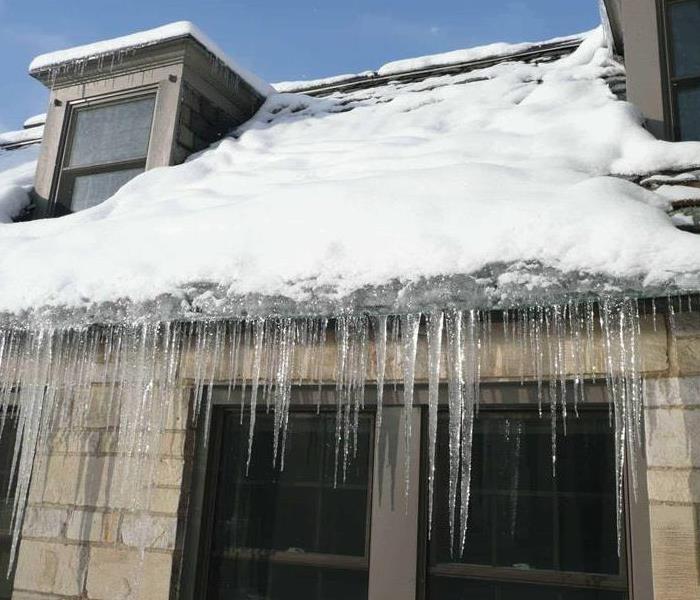 Ice dam that is located on the roof of a house
Ice dam that is located on the roof of a house
Removing an ice dam from your roof immediately after spotting the signs can be critical to helping prevent damage to your home. One way to remove an ice dam is to melt it using calcium chloride ice melt.
Step 1. Using a roof rake, remove snow 3-4 feet from the edge of your roof, being careful not to damage the roof covering
Step 2. Use a calcium chloride ice melt product, which you can generally purchase from your local hardware store. DO NOT use rock salt or sodium chloride, which can damage your roof!
Step 3. Fill a nylon stocking with the calcium chloride ice melt.
Step 4. Safely place and position the calcium chloride-filled nylon stocking vertically across the ice dam so that it can melt a channel through the ice.
Step 5. To protect your plants cover your shrubs below. This is important because the calcium chloride-saturated water dripping from the roof may damage the shrubbery and plants.
Christmas tree safety tips to keep your home safe over the holiday
11/20/2018 (Permalink)
 Christmas tree that could be found throughout your house
Christmas tree that could be found throughout your house
These simple easy tips can prevent a fire from starting within your house this Christmas!
Always place your tree away from heat sources like fireplaces, radiators, candles, heat vents or lights, and keep the tree base filled with water to avoid a dry out.
Make sure all your indoor and outdoor Christmas lights have been tested in a lab by the UL or ETL/ITSNA for safety, and throw out any damaged lights that are broken.
Any lights you use outdoors must be labeled suitable for exterior placement, and be sure to plug them into a ground-fault circuit interrupter protected receptacle.
Keep all your holiday candles away from your Christmas tree
Bedtime means lights off! don’t forget to turn your Christmas tree lights off each night.
Fresh trees are less likely to catch fire, so look for a tree with vibrant green needles that are hard to pluck and don’t break easily from its branches. The tree shouldn’t be shedding its needles readily
After your tree starts to drop needles and some may turn brown it is time to say your last goodbye and throw it outside. These simple and easy facts can really be a lifesaver come the holidays. If you ever have a problem in your home, call SERVPRO of Cambridge/Belmont, 617-864-7378.
How to prepare you snowblower from your neighborhood SERVPRO
11/20/2018 (Permalink)
 Preparing your snow blower for the most brutal winter
Preparing your snow blower for the most brutal winter
The last thing anyone wants after the first major snowstorm of the year is to take the snow blower out of the garage and discover that it doesn’t work. In general, these tasks can be done either at the end of the season in preparation for the following year or in the autumn before the snow flies. Listed below is what should be done to save homeowners many headaches .
- Changing the oil (drain the old oil before adding new oil)
- Installing a new spark plug
- Replacing oil, fuel, and air filters (if used by the snow blower)
- Inspecting the belts for wear and replacing them as necessary
- Checking the tires for proper pressure and punctures
- Filling the tank with fresh gasoline (siphon off old gasoline first)
Lubricating the snow blower drive and chassis can also improve efficiency and increase the life of the snow blower. Different snow blowers require different lubricating agents; the owner’s manual should indicate what type to use for your snow blower. One part that can wear down over time is the rubber on the auger. A finger test indicates when replacement is needed; if a finger fits between the rubber and the snow blower's housing, new rubber should be placed on the unit to optimize performance.
By doing these steps hopefully this will minimize the headache and procrastinating preparing your snow blower for winter.
How to properly prepare your backyard shed for winter
11/15/2018 (Permalink)
Everything you need to know about how to winterize your shed! There are few things you need to do in the fall to help make your shed ready for a cold harsh winter.
Thorough Cleaning
Your shed becomes a place to store everything, from pots, lawn mower, fertilizer, mulch, garden hose to gardening tools, and many other things. Before you decide to close your shed for winter with all your summer stuff it is a great idea to do a very thorough cleaning before closing it for good!
- Remove all the things outdoors to sort out what you need and what has to be disposed
- Sweep the floor and remove any cobwebs.
- Clean the gardening tools properly and store them in plastic bags, so that you have them ready for spring.
- Empty out the contents of the garden hose and then roll it to store away properly to prevent it from cracking or getting damaged in extreme temperatures.
- Remove oil and gas from the leaf blower, lawn mower and trimmer
- Place potting soil, fertilizer, mulch, and grass seed in individual plastic bags and secure them.
Repair the Interior of the Shed
When you empty out the shed and after you finish cleaning the floor and walls, it is time to inspect the interiors of the shed and make repairs to holes or damages that have been done. Make sure to check the floor, ceiling and walls carefully. If you notice holes and crevices, use caulk to fill them in. You will preventing pests from getting inside your shed in winter.
Give the Roof Special Treatment
Remember the roof of your shed is what protects everything inside, do not neglect to do inspections on this very important part.
- If the shed has metal roof, there will be areas that are rusted. Clean the roof thoroughly and rustproof it.
- Replace loose shingles and replace any that is broken.
- If you have a wooden roof, look for wood warping, boring insects, and cracked panels.
- Replace rusted nails and reinforce loose panels properly.
- Trim overhanging branches from trees, as they can damage your garden shed once they get heavy with ice and snow.
Repair the Exterior
Check the exterior of your shed carefully. Look for holes in the siding and make sure they are filled Use these tips to winterize your backyard shed. It may sound like a lot of work, but if you plan on doing a little bit every day, you should have your garden shed ready for winter within no time. Winterizing your shed will boost its longevity and you will not have to worry about repairs when spring arrives.
If you need cleaned because of bugs or animals in the spring call SERVPRO of Cambridge/Belmont! Call us at 617-864-7378.
Lets Talk Turkey Safety
11/14/2018 (Permalink)
 Turkey Safety
Turkey Safety
Thanksgiving can be a stressful day for those who are cooking the meal, but do not fret SERVPRO of Cambridge/Belmont has the tips to making your thanksgiving meal a walk through the park!
- Make sure to pick your turkey carefully!
- Avoid fresh, stuffed turkeys
- Make sure to buy your turkey at least 1-2 days before you cook it
- Keep it in the fridge and if you bought it earlier keep it in the freezer
- Defrost properly.
- Thaw in the refrigerator (every 4-5 lbs. needs one day to thaw).
- Submerge the turkey (wrapped in leak-proof packaging) in cold water (every 1 lb. needs 30 minutes to thaw) that should be changed every half hour.
- Cook immediately after thawing:
- Avoid slow cooking or partially cooking the turkey
- At 165 degrees F at least
- Make sure to cook the stuffing separately.
- Use a thermometer on the innermost part of the thigh and wing, as well as the thickest portion of the breast, to ensure that the turkey is well cooked.
- If you want a more moist turkey, do not carve at once; give the juices time (20 min.) to settle.
- Keep Clean!
- Wash your hands with soap and water before and after handling food.
- Keep all surfaces and utensils clean.
- Never handle cooked and raw food together, in order to avoid cross-contamination.
- Keep raw meat away from vegetables or other uncooked food.
Winterize your home inside and out
11/14/2018 (Permalink)
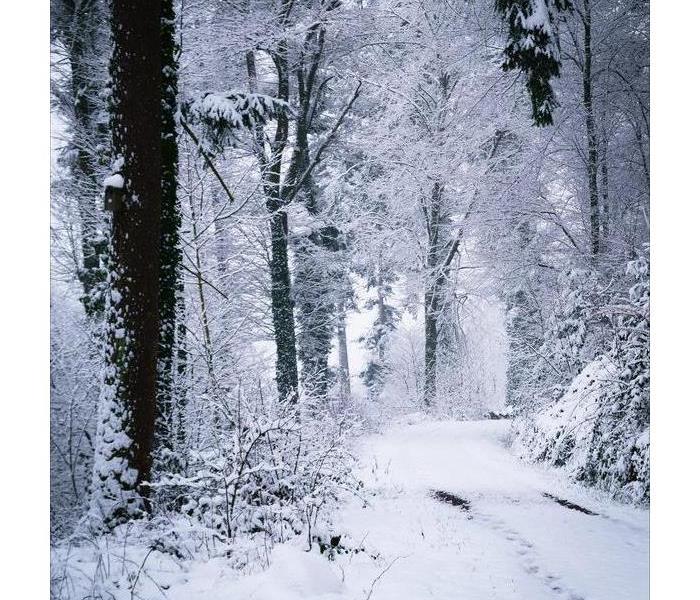 Winter Wonderland
Winter Wonderland
The cold weather is now upon us and our homes. Preparing your home for the winter months may seem like a burdensome task. There are several quick and easy ways to get your home ready for all those snowy winters.
Be sure to seal and off air leaks to prevent air from sneaking out
A good place to start is checking for drafts in the attic and rooftops, since heat rises. Make sure to check the basement, windows, and doors next. Studies shows that 5 to 30 percent of your energy usage is wasted through unwanted airways, so finding the problem areas are very important and easy to make sure you are saving money and energy.
- Door Strips: Closing off space under your door is as simple as rolling up a towel and plugging it up under the door.
- Windows: Using films around the sills Once the Air is Trapped Inside your House
- Change the Furnace Filters: Dirty filters strain production because it restricts the airflow, forcing it to work much harder than necessary. Use an electrostatic filter to catch most of the bacteria, mold, and viruses that seem so much more apparent in the winter. A new filter will also cut down majorly on energy costs.
- Thermostats: Most water heaters have a standard temperature set by installers, and it might be set higher than necessary. Check yours to make sure it’s only around 120 degrees Fahrenheit.
Keep Outside of the House Clean
The condition of your home outside is just as important to maintain as the inside.
- Cleaning out the gutters during the fall and before the first big snowfall can prevent ice from building up and in turn saves you from fixing the gutters after being damaged or broken-off.
- If you’re in for a particularly snowy winter, consider sealing your driveway. The dark color of the new sealed driveway will help snow melt faster
- Another area to check is your chimney and make sure it is clean before using it and make sure to check it a few times throughout the winter to make sure soot is not being built up.
These are simple and easy ways that everyone can save money and energy while trying to keep their home safe and warm during these cold months ahead. If anything happens in your home that is out of your control call SERVPRO of Cambridge/Belmont to help with all your needs! We will make sure your home gets back to the way it was, “Like it never even happened.”
National Day of Service and Remembrance
9/11/2018 (Permalink)
In loving memory and honor of those who passed on September 11, 2001, as well as the survivors and first responders, National Day of Service and Remembrance was established in 2009 as a day of reflection. Led by the Corporation for National and Community Service, this is a day to come together as Americans did following the events of 9/11 to help neighbors in need, and to honor veterans and First Responders in your community.
On this day and everyday, SERVPRO® of Cambridge/Belmont salutes those who served in the greatest times of need and stand tall and strong in the mists of disaster. Those heroes are the First Responders who keep our communities and country safe.
Always give back to your community each year. To find a volunteer opportunity near you, or to register your National Day of Service and Remembrance event, visit nationalservice.gov/911day.
The Importance of Clean Air to Prevent Mold
8/8/2018 (Permalink)
 Plants can help prevent mold from breeding in your home.
Plants can help prevent mold from breeding in your home.
One of the largest factors in mold survival 101 is the amount of moisture that is located within the air. Mold will grow anywhere on any substance that dampness is present. Most people do not realize as well as causing mold, excess moisture can also contaminate the air as well. Mold that is located within your home is a source of pollution all in itself. Mold particles can release toxic particles that will emanate and ilfitrait the air that you are breathing in. Also, not to mention the fact that damp itself can cause water vapor, which eventually will turn into microbial growth leading to more mold and now we are caught in a cycle. Making sure the moisture between cleanliness of the air and the actual tangle things are being controlled.
But there are many other things you can do to reduce the growth of mold and keep the air around you clean. Here are some tips from SERVPRO of Cambridge/Belmont (617-864- 7378).
Ventilation
Quick, easy and most importantly… free! Making sure that you keep your windows open whenever it is possible will ensure a healthy dose of air circulation.
Extractor Fans
Gas stoves and cooking pollutants in the kitchen as well as aerosol sprays and fragranced products in the bathroom are responsible for these rooms being high-toxin areas, so use extractor fans to ensure the air is regularly cleared. If you do not have a fan ventilating in a bathroom where showers are located, SERVPRO of Cambridge/Belmont (617-864- 7378) would recommend installing one. Bathrooms are a breeding ground for mold, especially one without a vent.
Clean
Making sure all surfaces are regularly cleaned and dusted especially bathroom and kitchens are a must. Vacuuming and dusting are major when trying to prevent mold and particles from getting into your air.
Dehumidifiers
These are a must! Every indoor space should have one of these as it is the perfect weapon against excess moisture, which could lead to black ceilings, paint, and wallpaper peeling off. Not to mention the fact that it will help protect your personal belongings and keep your food fresher for longer.
Plants
Plants one might ask? Other than just looking pretty, indoor plants, especially leafy greens, are key in helping to eliminate airborne pollutants. Thus in turn, purifying the air. So next time your out and about maybe think of purchasing a few leafy green plants to put throughout your home!
A/C Unit Ruining Your Business?
8/6/2018 (Permalink)
 Ceiling after and A/C unit had been leaking though the celling.
Ceiling after and A/C unit had been leaking though the celling.
Overtime, in commercial buildings A/C units can slowly take a turn for the worse. There can be many complications that can lead to colossal damage. A/C units should be checked for leaks and serviced every year, preferably in the spring, to make sure an incident does not happen in the future. As your A/C system runs, over time it accumulates dust and dirt in key areas that affect its efficiency. Leaving your A/C unchecked unit can make for your A/C unit to lose five percent of its operating efficiency each year.
In Watertown, Monday morning, SERVPRO of Cambridge/Belmont (617-864- 7378) responded to a call from a customer saying that there A/C unit had finally broken and there were leaks coming through the ceiling because the A/C unit was located on the second floor. There was not only water damage to the ceiling but also to the merchandise that was located on the first floor. This is a situation that could have been prevented and also could have saved the company a lot of money and headache by having there A/C unit checked each year.
SERVPRO of Cambridge/Belmont (617-864- 7378) took the job and were quick, very reliable, and trustworthy. This job was taken care of in just one short day. For any commercial needs call us we are here at your convenience 24/7, 365 days a year. Let us be the company that gets your business back to “Like it never even happened.”
Mouse Droppings?
8/6/2018 (Permalink)
 Mice that can chew wires in your office.
Mice that can chew wires in your office.
Did you know that an office or warehouse can be like a giant playground for mice and friends? Your office makes for excellent shelter for mice, its keeps them warm in cold weather and protects them from animals that are larger. To make matters worse, all the food that is left behind in an office and warehouse can lead to an all-you-can-eat buffet for these little critters.
Once there is one mouse, then becomes multiple... Mice and rats can do more damage to your office than meets the eye.
First, spread disease!
- Mice may be small animals but they can carry big diseases.
Second, droppings.
- Mice and rats can spread diseases through their droppings. Mice have no shame and will go anywhere they please, including your keyboard and phone. That would not be a pleasant way to start a Monday morning.
Third, urine.
- Mice also like to urinate everywhere, especially in a new place. It lets them keep track of the places they’ve been and is a way of leaving messages behind for their friends.
Fourth, chew cables.
- Imagine coming into work one day and your computer does not turn on? Then imagine realizing that a mouse or rat had chewed through the cord to your computer…bummer.
Fifth, start fires.
- Mice chewing on wires in your office can lead to the potential to start fires. By chewing wires under your desk, the mice leave the rubber casing open, which can lead to them short circuiting and catching alight. Exposed wires are more prone to become in contact with water and as we all know water and electricity do not mix very well.
At the first sight of any of these things happening, make sure you call SERVPRO of Cambridge/Belmont (617-864- 7378) to make sure your business is cleaned properly and prevent this problem does not happen again.
8 Places Most People Do not Know Mold Exists
8/3/2018 (Permalink)
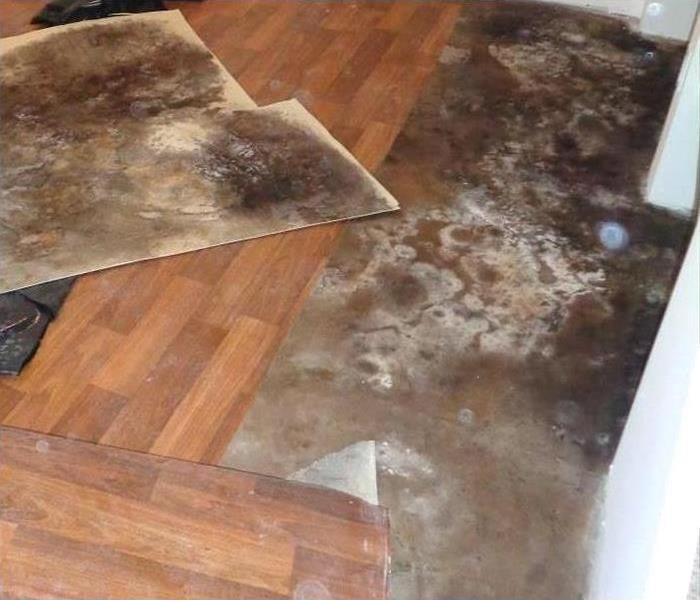 Invasive mold found under hardwood floors
Invasive mold found under hardwood floors
Mold is defined as a fungus that can spread rapidly and can take over you home and work space rather quickly. The most common places for mold to hide is, Carpeting, Furniture, Closets, Clothes, HVAC Systems, Drywall, Ceiling, and Flooring.
Carpeting
No matter how small the amount of carpet is that has liquid dropped on it, it is always a good idea to take precautions and check to see if mold has started to grow in or underneath the surface. Some of the smallest spills could lead to the biggest problems over time if not taken care of properly.
Furniture
Most people do not realize that when water or liquid is spilled on a piece of furniture it could potentially be a breeding ground for mold. Liquid can seep into the fabric and if not dried correctly could start to spread through the piece of furniture
Closets
Closets would be the last place that one would think mold would grow in. Mold spores are found in the air and can land on anything and everything throughout your home. Mold spores tend to grow more rapidly in dark, damp, or humid environments. That is why your closet can be a good breeding ground for mold spores.
Clothes
One might ask mold can grow in clothes?! Not to panic if taken care of properly this can be avoided. Most people organize their closets in conjunction with what season is approaching. Last season's clothes go into the back of the closet to sit there until it comes around again. Which mean out of sight out of mind. This is when mold spores can start to grow. Some clothes after sitting for so long can come out and smell musty. A suggestion for SERVPRO of Cambridge/Belmont 616-864-7378 is to wash your clothes each season before wear. If mold does become a problem in your closets feel free to contact us so we are able to get your closet back to “Like it never even happened”!
HVAC Systems
What is your HVAC system? You probably think of it as the thing that keeps your home warm or cool depending on the season. What it really is, is a series of long fully enclosed duct work that traverse every part of your home. These are the places that never see light and can collect several different types of bacteria, including mold spores. This is something that can be easily prevented. Getting duck worked cleaned each year can help prevent from a catastrophic mold over take throughout your home.
Drywall
Drywall loves to absorb anything and everything that comes into contact with it. Some examples are odors, bacteria, smoke, or moisture. Whenever something is absorb it can be naked to the eyes. You will not be able to notice any damage that has taken place unless it starts to smell or starts to peep through onto the drywall.
Ceiling
Most people will not notice anything wrong with the ceiling until it is visible. Which means, at that time mold has had a chance to grow throughout it. This usually happens when there is a overflow of a toilet or bathtub. Do not fret! SERVPRO of Cambridge/Belmont 616-864-7378 has the tools to help fix your mold problem. Give us a call we are available 24/7 365 days a year.
Flooring
One detail that you cannot forget about is when flooring gets wet the moisture might have disappeared on the top but that does not mean that the liquid is not deep under the surface waiting to start breeding. More often than not moisture can get underneath and become a breeding ground for mold. Some examples of where mold can grow in a moist or humid area is your attic, storage room, crawl space, or inside your washer and dryer. Some tips to make sure that your floor is staying clean and dry is to make sure that spills, when they happen, are taken care of and not just left to seep into the floor to cause damage.
Fire In Cambridge MA
8/2/2018 (Permalink)
 Building with huge flames and thick black smoke
Building with huge flames and thick black smoke
On July 20, 2018 there was a three alarm fire with heavy smoke and soot that took place in Cambridge, MA at 2:30pm. The fire made serval road closures for most of the afternoon in order to contain the fire. It took a total of 150 firefighters to put out this massive blaze.
When firefighters were on scene the front was still in tact but as more investigating went on firefighters discovered that there was a heavy fire that was started in the basement of the building in the back. It took many hours for firefighters to put out the fire and left the business and some of the businesses around it with almost nothing.
After the fire took place, the owner called SERVPRO Cambridge/Belmont (617-864-7378)
to asses the damage that had been done and begin restoration of the business. SERVPRO Cambridge/Belmont (617-864-7378) is available 24/7, seven days a week to answer their customers needs. When there is a tragedy that occurs we are the people to get business’ back on their feet “Like it never even happened.”
Air Conditioning Check list
8/2/2018 (Permalink)
 Commercial AC Unit
Commercial AC Unit
As facility-maintenance professionals prepare for summer, it is important they make sure evaporator-coil cleaning and maintenance is on their to-do list states Sergio Rodriguez from SERVPRO of Cambridge/Belmont.
“Not only do you want to make sure your HVAC system is running properly, but uncleaned coils can shorten the life of your equipment and force your system to work harder than it should,” Sergio said, “Dirty coils can drastically increase the cost of running your HVAC, but one of the quickest and safest ways to maintain your system is through a comprehensive coil-cleaning program.”
Citing a Southern California Edison report, Rodriguez says that while uncleaned evaporator coils decreased energy efficiency by 35 percent, dirty condenser coils caused energy efficiency to drop 60 percent, meaning much more power and money was required to cool at the same rate as a system with clean coils.
Additionally, Rodriguez says, dirty evaporator coils can become a breeding ground for mold and bacteria as airborne contaminants are filtered through the system, negatively impacting indoor-air quality.
SERVPRO of Cambridge/Belmont recently released a checklist for effectively cleaning coils:
- Obtain the best possible access. Cleaning coils works best when a maintenance technician can get the cleaning wand close to the areas that need to be cleaned. Consider using flexible wands if access is difficult.
- Vacuum coils and fins. Before cleaning, remove dry debris from coils with a vacuum that can reach dust and dirt in tight spaces. Other options include using compressed air.
- Clear blockages. Condensate pans and lines need to be free of blockages before wet cleaning can begin, as any obstructions can cause major damage from flooding and because of HVAC-system condensate. Consider a wet/dry vacuum to remove any debris prior to cleaning.
- Use a wet cleaning process. Pressurized water forces deeply embedded dirt and debris to come loose, vastly improving the cleaning process.
- Use a powerful-yet-delicate cleaning system. High-pressure equipment can damage fins, especially on evaporator coils. The ideal system should deliver 125 to 200 psi and up to a half-gallon of flow per minute.
- Apply an alkaline non-caustic cleaning foam. Use of a non-caustic cleaner helps to protect coils from corrosion.
- Apply a mold-control agent. Adding a mold inhibitor that is U.S. Environmental Protection Agency-registered and approved for use in occupied spaces can help to keep coils clean and free of odor and allergy-causing mold and mildew.
- If you need Your Air Conditioning unit checked out, please call SERVPRO of Cambridge/Belmont (617) 864-7378
5 Different Sources of House Fires and How to Prevent A Fire in Your Home
8/2/2018 (Permalink)
 Fire that started in a Wall
Fire that started in a Wall
Wiring and Outlets
- Make sure all electrical cords are checked throughout your home for signs of fraying and make sure all frayed wires are replaced.
- Do not cover cords with item such as rugs or blankets.
- Be aware of the capacity that your home can handle in its electrical system.
- Make sure to understand the difference between surge protectors and power strips. Surge protectors help protect electronic devices.
Kitchens
- Make sure there is a fire extinguishers readily available and make sure one knows how to use it in case of emergencies.
- Keeping your stove clean is another way to prevent a house fire. Grease on a stove or in an oven can lead to a fire the next time it is used, if not cleaned properly.
Dryers
- Installing a dryer not properly could lead to a house fire when it is used for the first time. Make sure to read the instructions thoroughly to prevent a fire from happening though the vent.
- Make sure your dryer is cleaned regularly
- After each load of laundry is done make sure the lint is taken out from the previous load.
Other Sources of Heating
- Space heaters are known for starting house fires when left on too long, or on when nobody is in your home.
- Make sure your space heater is far enough away from all furniture or anything else that can get too warm and catch on fire.
Chimneys
- If there in a chimney that is located in your house make sure it is inspected annually. Have a professional clean or repair your chimney as needed.
- Make sure to use wood only.
Pest Prevention Tips For Your Business
8/2/2018 (Permalink)
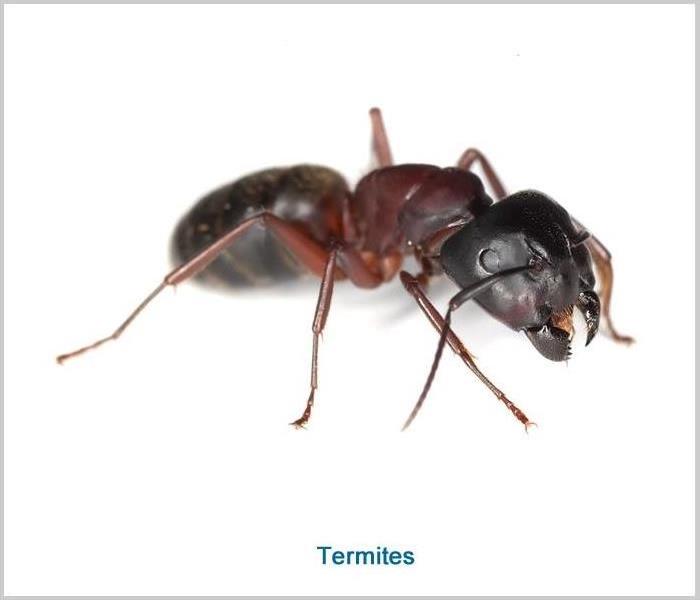 Pest that can Take Over a Business
Pest that can Take Over a Business
In order to prevent one's businesses from becoming infested with pests there are a few tips that everyone who owns a business should read about.
- Make sure your business is constantly being cleaned and spills, or damages do not go unnoticed.
- Make sure that garbage is taken out regularly as well as are stored in containers that are not easy to access.
- Make sure that all cracks throughout your business are sealed bottom to top seamlessly, especially doors.
- Make sure there is proper drainage going out. Pests can find their way in through the smallest cracks and places.
- Make sure areas stay dry and if are wet are dried properly. Certain pest thrive in cool and damp places.
- Make sure all food being stored in sealed properly and not left out.
These six simple tips can help lead to a pest free environment. If one does find themselves in a situation where pest have infested there business give SERVPRO on Cambridge/Belmont (617-864- 7378) a call.
What is lightning?
8/2/2018 (Permalink)
 Lightning contarsted with the night sky
Lightning contarsted with the night sky
Lightning is an electrical discharge caused by imbalances between storm clouds and the ground, or within the clouds themselves. Most lightning occurs within the clouds.
"Sheet lightning" describes a distant bolt that lights up an entire cloud base. Other visible bolts may appear as bead, ribbon, or rocket lightning. During a storm, colliding particles of rain, ice, or snow inside storm clouds increase the imbalance between storm clouds and the ground, and often negatively charge the lower reaches of storm clouds. Objects on the ground, like steeples, trees, and the Earth itself, become positively charged—creating an imbalance that nature seeks to remedy by passing current between the two charges.
Lightning is extremely hot—a flash can heat the air around it to temperatures five times hotter than the sun’s surface. This heat causes surrounding air to rapidly expand and vibrate, which creates the pealing thunder we hear a short time after seeing a lightning flash.
Types of Lightning
Cloud-to-ground lightning bolts are a common phenomenon—about 100 strike Earth’s surface every single second—yet their power is extraordinary. Each bolt can contain up to one billion volts of electricity.
A typical cloud-to-ground lightning bolt begins when a step-like series of negative charges, called a stepped leader, races downward from the bottom of a storm cloud toward the Earth along a channel at about 200,000 mph (300,000 kph). Each of these segments is about 150 feet (46 meters) long.
When the lowermost step comes within 150 feet (46 meters) of a positively charged object, it is met by a climbing surge of positive electricity, called a streamer, which can rise up through a building, a tree, or even a person.
When the two connect, electrical current flows as negative charges fly down the channel towards earth and a visible flash of lightning streaks upward at some 200,000,000 mph (300,000,000 kph), transferring electricity as lightning in the process.
Some types of lightning, including the most common types, never leave the clouds but travel between differently charged areas within or between clouds. Other rare forms can be sparked by extreme forest fires, volcanic eruptions, and snowstorms. Ball lightning, a small, charged sphere that floats, glows, and bounces along oblivious to the laws of gravity or physics, still puzzles scientists.
About one to 20 cloud-to-ground lightning bolts is "positive lightning," a type that originates in the positively charged tops of storm clouds. These strikes reverse the charge flow of typical lightning bolts and are far stronger and more destructive. Positive lightning can stretch across the sky and strike "out of the blue" more than 10 miles from the storm cloud where it was born.
If you have had damage from a lightning strike, please call SERVPRO of Cambridge/Belmont (617) 864-7378
Should I Waterproof My Basement?
8/2/2018 (Permalink)
 Sealed basement wall
Sealed basement wall
If your basement smells wet or musty, one might be curious about why this may be happening and what the root of it is. Many companies advertise about waterproofing basements walls. Is it really possible to dry out a basement simply by sealing the walls?
Yes, it is possible to make sure you basement stay dry and not musty. SERVPRO of Cambridge/Belmont (617-864-7378) can help. We are here to make sure that your basement stays dry especially after a tragedy. We are professionals that will get your space back to looking “like it never happened”.
There are four types of Interior Waterproofing:
1.Concrete waterproofing coatings:
2.Silicate based concrete sealers,
3.Waterproof paint
4.Plastic sheets and panels
These are all solutions that can help prevent water from getting into your basement and have the ability to have a finished basement and add value to your house. If you have water damage let SERVPRO of Cambridge/Belmont (617-864-7378) help.
6 Signs You Might Have Carpet Mold
8/1/2018 (Permalink)
Mold is extremely invasive and can become deadly over time for people to be both living or working in an environment that contains mold. Make sure when liquids are spilled, no matter how small, you clean up properly and check over time to see if mold has grown within the area.
Do you have musty odors that are smelling throughout your home or business?
Have higher Incidence of Allergies that have occurred over time?
Does your space have a damp carpet?
Have you looked under your carpet for mold?
Do you see white, green, or black spots that have appeared that were not there before?
Have you tested your carpet for mold with a mold test?
These are six MAIN signs that you have mold growing under your carpet. Call SERVPRO of Cambridge/Belmont 617-864-7378 to keep your spaces safe and healthy.
The 4 Steps to Cleaning Your Home After a Fire
8/1/2018 (Permalink)
- Step One: Emergency Contact
- SERVPRO of Cambridge/Belmont (617-864- 7378) offers a 24/7 emergency service number that can be contacted when a fire occurs in your home. This is a very important feature when trying to find a company to clean after something tragic like a fire or flood happens. Why do you need to start a fire damage restoration damage right away? You want to be able to prevent anymore damage from happening to your property.
- Step Two: Assessment
- The next step in the fire damage restoration is where the company will assess the extent of the damage that has happened to your property. This is important because it gives the company a plan of action and the company will then be able to give you and accurate quote for the cost. Most importantly, to make sure your home looks “like it never happened”.
- Step Three: Clean Up
- The main step, is where a SERVPRO of Cambridge/Belmont 617-864-7378 fire damage restoration service will being the clean up process of the damage. They will clean away smoke, dust, and soot from your surfaces and any underlying issues that come about. After a fire often you will find that your property looks dark, stained and charred. The first job your fire damage restoration company will do is clean up all the damage and get your property looking “like it never happened”. During this fire damage restoration process, SERVPRO of Cambridge/Belmont 617-864-7378 will also ensure to remove any odors that can linger after the smoke has been in the room. This might involve carpet cleaning and will often need to address adjacent rooms as well as those directly affected by fire damage.
- Step Four: Restore and Renovation
- After all is cleaned up next begins the next and final step, finally getting your property back to the way it was.
Commercial Water Damage Events Present Unique Challenges
7/27/2018 (Permalink)
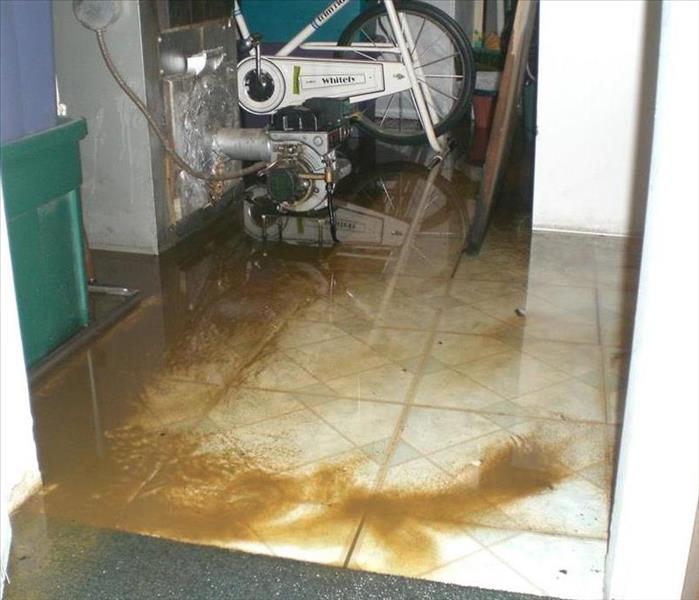 Cambridge business affected by a sewage damage
Cambridge business affected by a sewage damage
Commercial Water Damage Events Present Unique Challenges
Flooding and water damage events at City of Cambridge commercial properties are often complex with numerous issues that require a knowledgeable and flexible response. Whether we’re dealing with a relatively small water cleanup scenario or a large scale event, we work quickly to assess each unique situation and isolate the damaged area. In many instances, normal operations can continue in a temporary space while we restore your facility.
Our professionals are trained to be mindful of legal and environmental concerns and strive to fully restore the damaged area while working within your budgetary constraints. We understand that every hour spent cleaning up is an hour of lost revenue and productivity. So when an emergency situation arises in your business, give us a call and we’ll be there fast with the help you need.
SERVPRO of Cambridge/Belmont specializes in the cleanup and restoration of commercial and residential property after a water damage event. Our staff is highly trained in property damage restoration. From initial and ongoing training at SERVPRO’s corporate training facility to regular IICRC-industry certification, rest assured our staff is equipped with the knowledge to restore your property. If your business has sustained a fire or water damage, please contact SERVPRO of Cambridge/Belmont (617) 864-7378 to assist you
Important information to prevent water damage to your home
7/26/2018 (Permalink)
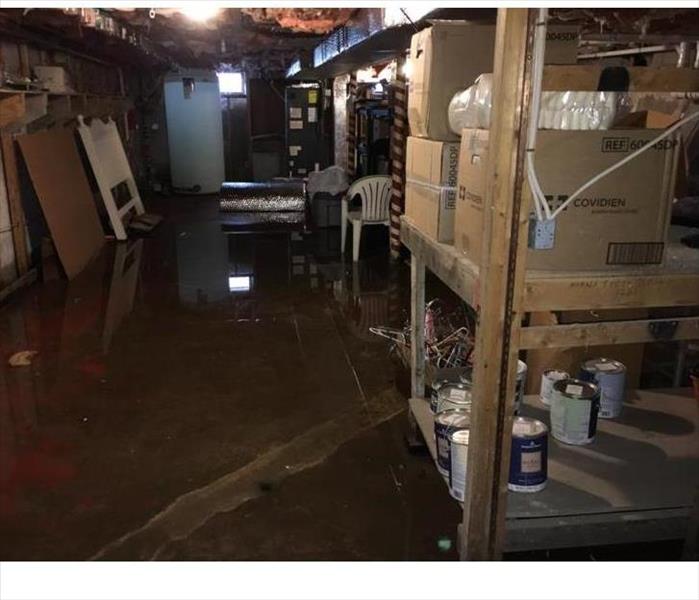 Old pipe caused water damage to the basement
Old pipe caused water damage to the basement
Exterior Measures
Disconnect hoses - Standing water in a hose may freeze back into the pipe. This may create an ice block that stops your water flow. The block may burst your pipes and create damage to walls, floor and foundation.
Clean gutters and downspouts - Clean your gutters at least twice a year to avoid blockage and ice dams. Standing water can cause damage to your gutters and roof, and unmanaged overflow may create puddles that could damage your foundation. Don't forget to clean downspouts to ensure water can flow through, and secure downspouts so that they point away from the home.
Maintain trees and vegetation - Thriving shrubs can be a beautiful thing — except when their roots wrap around your pipes and break them. That's why it's important to minimize landscaping near utility pipes or, if necessary, remove trees and shrubs that have become too big.
Interior Measures
Know your water main - Know the location of your water main, and shut it off if you leave for an extended amount of time. If no water goes in to the house, chances are no faucet drips can wreak havoc on your home while you're away.
Check appliances regularly - Check and maintain your home appliances regularly for leaks, according to manufacturer's directions.
Investigate leaks right away and fix promptly - If you opt to ignore moisture damage or postpone making the necessary repairs, be prepared to experience mold, mildew, dry rot, or even structural damage to your home. Keep in mind that homeowner's insurance provides coverage for damage that is sudden and accidental. Damage that results from lack of maintenance is not covered on a standard homeowner’s insurance policy. If it's too late and you're already dealing with a wet disaster, please call SERVPRO of Cambridge/Belmont to assist you (617) 864-7378
Upgrade washing machine hoses - Old, brittle or leaky washing machine hoses are among the most frequent causes of water loss for homeowners. Replace yours regularly to avoid a mighty mess and expensive damage.
Install water detection devices - A water detector is a small electronic device that sounds an alarm when its sensor comes in contact with moisture. Its main benefit is that it detects low moisture levels or slow leaks that often go unnoticed. Install it near water heaters, sump pumps, washing machines, dishwashers and toilets to prevent extensive damage and mold growth.
Check your water pressure - If the water pressure to your home is set too high, pipes and hoses may fail under the pressure. Buy a water pressure gauge at a local hardware store, attach it to an outside faucet, and turn the faucet to full force. The gauge will give you a reading of the home’s water pressure. Typical residential water systems are designed for water pressure of 40 to 70 psi. If your home’s water pressure exceeds 100 psi, install a pressure regulator (which is available at hardware stores as well.)
Hidden leaks can lead to mold
7/19/2018 (Permalink)
 If you see a leaky pipe, call a plumber before mold can develop
If you see a leaky pipe, call a plumber before mold can develop
A homeowner in Belmont, MA moved a cabinet in their living room and saw black spots behind the cabinet and also growing on the cabinet. The homeowner called SERVPRO of Cambridge/Belmont to assess the situation. The SERVPRO technicians using a moisture meter discovered the wall and ceiling were both wet. The technicians went upstairs to the room above the living room to determine the source of the water. The room above was a bathroom, the technicians using the moisture meter, discovered the bathroom vanity was wet. SERVPRO of Cambridge/Belmont’s technicians removed the wall and found an old leaky pipe that had probably been dripping for a long period of time causing the mold growth in the living room.
Mildew and molds are fungi - simple microscopic organisms that thrive anywhere there is a moist environment. Molds are a necessary part of the environment; without them, leaves would not decay and aspects of soil enrichment could not take place. It is their ability to destroy organic materials, however, that makes mold a problem for people - in our homes and in our bodies.
If you think you have a mold issue, call SERVPRO of Cambridge/Belmont (617) 864-74378 to assist you
Hot Water Heaters, when they should be replaced
7/19/2018 (Permalink)
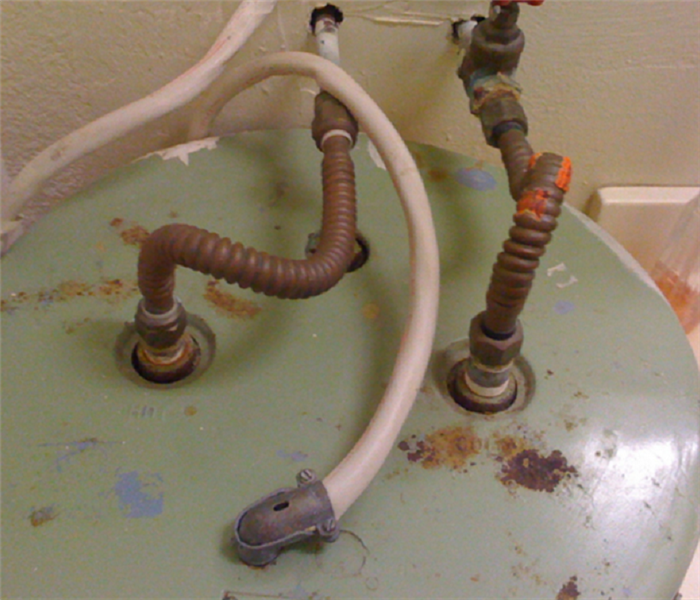 Picture of an old water heater
Picture of an old water heater
Water heaters are essential elements of our home. We use them in daily activities such as taking a bath, using the dishwasher and using the washing machine. But because we use them frequently, it’s sometimes easy to take them for granted and forget that they need to be maintained. Failing to do so will result in malfunctions and problems and eventually, replacing your water heater. Taking notice of the first signs of a problem can help you repair your water heater before it becomes worse.
You don’t have to be an expert to spot the first signs of trouble. All you need to have is a keen sense of observation so that your water heater can be repaired.
Here are three signs that indicate your water heater needs to be repaired.
Hot water has off smell or off color. The first instance that you notice your hot water has an off smell or has a rusty color, that’s something that you need to check out. The smell could be the result of a rusty anode rod in the water heater. There is no need to worry since the anode rod can be replaced that will then eliminate the bad odor. Bacteria growth also causes bad smells. This happens when the hot water has not been used or has been turned off for quite some time or when the thermostat is set at a very low level.
Corroded pipes can also cause an off color in your water. This can be solved by installing a water softener or by replacing the plumbing. If you also see a lot of sediments in the water, it’s time to have the water heater repaired.
Water is not hot enough, too hot, not strong enough or there is none at all. When there is no water, check first that your water heater has power and is working fine. If it is, have it inspected by a plumber. If water is not enough, this could be due to an undersized water heater and is a common situation when a lot more people are using the water heater. This could also be caused by the presence of mineral deposits inside the water heater tank. When water is too hot or not hot enough, you may have to adjust the temperature dial of the water heater. If there is no change in temperature, have the water heater checked and repaired.
Strange noises and leaks. Leaks coming from your water heater could lead to flooding. In the same way, strange noises like pops, bangs, gurgles, and the like are clear indicators that something is wrong with your water heater. This is usually caused by a buildup of sediments inside the tank. A boiling sound, however, could mean the water heater is overheating or that pressure is building up inside the tank. All these have to be addressed immediately to prevent further problems.
It’s important to have your water heater repaired as soon as you see these signs. This will help you save on costs, prevent further damage, and avoid an untimely replacement of your unit.
If your hot water heater malfunctions and creates a water damage, please call SERVPRO of Cambridge/Belmont (617) 864-7378 to assist you with the water damage.
Tuesday's storm caused widespread flooding
7/18/2018 (Permalink)
 The storm flooded this Cambridge home
The storm flooded this Cambridge home
The heat and humidity Tuesday will give way to potentially severe thunderstorms in the afternoon in Massachusetts, forecasters say.
“A line of strong thunderstorms is expected to develop in northwest Massachusetts around noon and then progress slowly southeastward across most of southern New England this afternoon and evening,” the National Weather Service wrote. “Any storms will be capable of producing 1 to 2 inches of rain in less than an hour.”
The National Weather Service said localized flash flooding and damaging winds are concerns with the sweeping storms.
The Flash Flood Watch has been expanded to include the Boston and Providence corridor. With widespread showers and thunderstorms today, 1"-2" of rain is expected in a short period of time. Some places could see 2"-4" with rainfall rates around 2"/hr. This could lead to localized flash flooding, especially in urban areas.
The strongest storms are forecast in western and northern Massachusetts, and the storms are expected to weaken as they approach southeastern Massachusetts and Rhode Island.
If your home or business was affected by yesterday’s storm, please call SERVPRO of Cambridge/Belmont (617) 864-7378 to assist you.
The dangers of a lightning strike
7/17/2018 (Permalink)
 Spectacular picture of lightning lighting up the sky
Spectacular picture of lightning lighting up the sky
Lightning is not only spectacular, it’s dangerous. About 2,000 people are killed worldwide by lightning each year. Hundreds more survive strikes but suffer from a variety of lasting symptoms, including memory loss, dizziness, weakness, numbness, and other life-altering ailments. Strikes can cause cardiac arrest and severe burns, but 9 of every 10 people survive. The average American has about a 1 in 5,000 chance of being struck by lightning during a lifetime.
Lightning's extreme heat will vaporize the water inside a tree, creating steam that may blow the tree apart. Cars are havens from lightning—but not for the reason that most believe. Tires conduct current, as do metal frames that carry a charge harmlessly to the ground.
Many houses are grounded by rods and other protection that conduct a lightning bolts electricity harmlessly to the ground. Homes may also be inadvertently grounded by plumbing, gutters, or other materials. Grounded buildings offer protection, but occupants who touch running water or use a landline phone may be shocked by conducted electricity.
If your home or business is struck by lightning, please call SERVPRO of Cambridge/Belmont (617) 864-7378
The most common causes of fire in the workplace
7/17/2018 (Permalink)
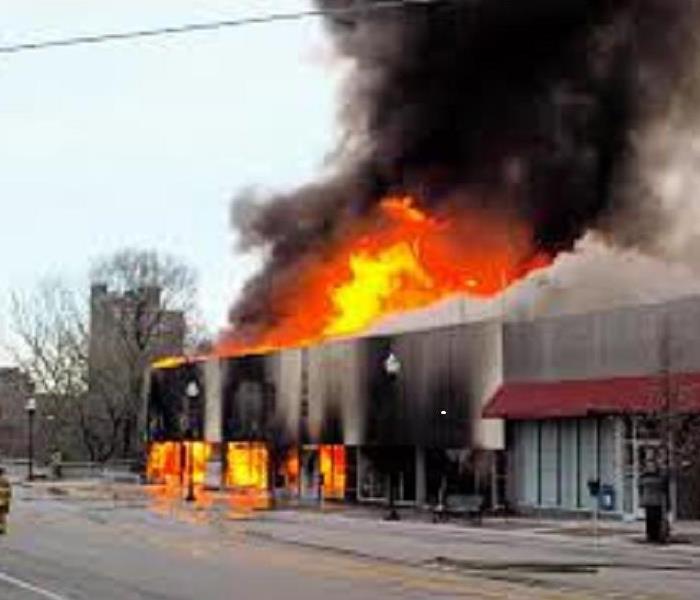 Commercial Building on fire
Commercial Building on fire
Most Common Causes of Fire in the Workplace
Electrical Fires
Over 25% of all fires are linked to a malfunction of either a piece of electrical equipment, wiring, or both. Electricity is a common source of ignition for major fires. One way to avoid problems with electrical fires is to establish an electrical safety program.
All employees should be thoroughly familiar with the safety procedures for their particular jobs. To maximize his or her own safety, an employee should always use tools and equipment properly. Extension cords must be inspected before use, and those found questionable, removed from service and properly tagged. Damage or inadequate maintenance can cause equipment to deteriorate, resulting in unsafe conditions.
Flammable and Combustible Materials
There are thousands of chemicals in use in the modern American workplace. One of the most prevalent dangers of these chemicals is their flammability or combustibility. Improper handling of flammable materials brings a great risk of fire. When a flammable liquid is spilled, vapors begin to form immediately. It is the vapors that will ignite, and which pose the greater danger.
Flammable liquid spill cleanup should begin immediately. Vapors will continue to build until the liquid is removed, and they can be ignited by a variety of sources in the average workplace. The best way to avoid fire caused by these materials is to follow all OSHA guidelines when dealing with flammables.
Human Error
The most common reason for a sprinkler system failure is human error. Often times the water supply was turned off at the time of the fire. The success of fire prevention strategies depends primarily on pre-planning, preparation, equipment quality, and the readiness of personnel. Employees and loss prevention practitioners must be knowledgeable about the proper use of extinguishers. If the wrong extinguisher is used, a fire may become more serious.
General Negligence
Negligence is another common cause of fire in the workplace. It’s slightly different from fires caused by human error. Negligence occurs when an employee does not follow established procedures and knowingly undertakes an activity that is a potential fire hazard.
Fire caused by negligence can be the result of:
- Hot surfaces too close to heating equipment
- Open flame that’s not properly located or protected
- Not following smoking restrictions or careless disposal of butts, ashes, and matches
Good common sense, self awareness, and close adherence to policy are a great way to avoid fires caused by general negligence. Posting fire safety signs in common areas is another way to keep fire safety at top of mind.
Arson
The premise behind arson prevention, like other prevention programs, is to address the opportunity to commit the crime. Arsonists, like other criminals, typically prefer to start fires in locations that are secluded or hidden. Prevention programs often suggest improving the surveillance in these areas by lighting the area, removing visual obstructions to natural observation, and moving the targets such as dumpsters.
Prevent the Common Causes of Fire in the Workplace
Fire prevention should be considered part of everyone’s job. Employees must help to keep the work area clutter-free and safe from fire hazards. Also, make sure extreme care is taken when working with chemicals such as flammable solvents, gasoline, gases, and fuels. Of course, the best prevention for fire is education and proper training.
If your company, please call SERVPRO of Cambridge/Belmont (617) 864-7378 to assist you with the cleanup.
It's Hurricane Season
7/16/2018 (Permalink)
 Satellite photo of a hurricane
Satellite photo of a hurricane
As the 2018 Atlantic hurricane season begins, scientists are worried that U.S. coastal communities could face more super storms with winds, storm surges and rainfall so intense that current warning categories don't fully capture the threat.
This year's forecast is about average and much more subdued than last summer's hyperactive season turned out to be, partly due to cooler ocean temperatures in the tropical Atlantic, as well as a nascent El Niño pattern. But that doesn't mean an individual storm won't blow up to exceptional strength, as Andrew did before striking Florida in 1992, an otherwise relatively quiet year.
Heat trapped by the increasing concentration of greenhouse gases in the atmosphere is raising the chances of that happening, said Penn State climate scientist Michael Mann.
A new review of global data on hurricanes shows that since 1980, the number of storms with winds stronger than 200 kilometers per hour (124 mph, or a strong Category 3) have doubled, and those with winds stronger than 250 kilometers per hour (155 mph) have tripled.
If a storm hits your area, please call SERVPRO of Cambridge/Belmont (617) 864-7378 to assist you with the cleanup.
Causes of Sewage backups in basements
7/16/2018 (Permalink)
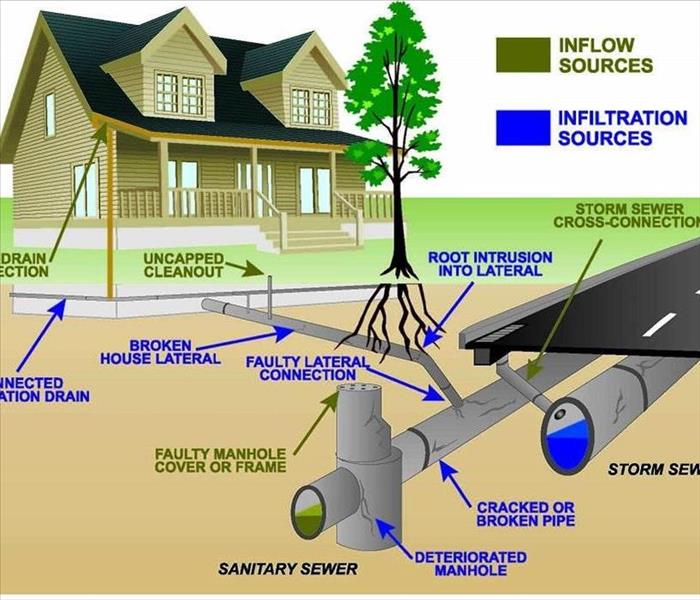 Diagram of a sewage system
Diagram of a sewage system
Heavy rains that occurred in the Cambridge/Belmont area caused not only flooding but also many sewage backups. The town & cities sewage system gets overwhelmed causing the sewage to flow into basements through toilets and sinks. When a storm drain suffers a partial or complete blockage, rain water gets trapped in the pipes and must go somewhere. Unfortunately, the only exit point is the pipe servicing your home that connects to the sewer line. With nowhere left to go it goes up through your pipe, pushing whatever refuse and filth it’s carrying into your basement and other areas of your home. Contact your local plumber to install a backwater valve to prevent this from happening to you! If your basement gets flooded or has sewage issues, please call SERVPRO of Cambridge/Belmont (617) 864-7378 to assist you. Did you know that SERVPRO of Cambridge/Belmont also helps Commercial and Industrial customers?
PPE should be worn during cleanup of animal droppings
7/16/2018 (Permalink)
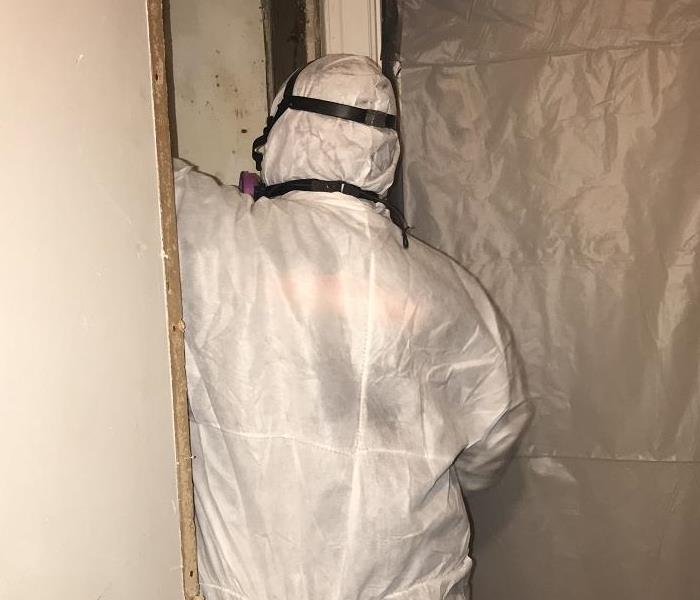 Tech with full PPE
Tech with full PPE
Histoplasmosis is an infection caused by breathing in spores of a fungus often found in bird and bat droppings. Histoplasmosis is most commonly transmitted when these spores become airborne, often during cleanup or demolition projects.
Soil contaminated by bird or bat droppings also can transmit histoplasmosis, so farmers and landscapers are at a higher risk of contracting the disease. In the United States, histoplasmosis commonly occurs in the Mississippi and Ohio river valleys, though it can occur in other areas, too.
Most people with histoplasmosis never develop symptoms and aren't aware they're infected. But for some people — primarily infants and those with compromised immune systems — histoplasmosis can be serious. Effective treatments are available for even the most severe forms of histoplasmosis.
Symptoms
Several types of histoplasmosis exist. The mildest form produces no signs or symptoms, but severe infections can be life-threatening. When signs and symptoms do occur, they usually appear three to 17 days after exposure and may include:
- Fever
- Chills
- Headache
- Muscle aches
- Dry cough
- Chest discomfort
In some people, histoplasmosis can also produce joint pain and a rash. People who have an underlying lung disease, such as emphysema, may develop a chronic form of histoplasmosis.
Signs of chronic histoplasmosis may include weight loss and a cough that brings up blood. The symptoms of chronic histoplasmosis sometimes can mimic those of tuberculosis.
Severe histoplasmosis
The most severe variety of histoplasmosis occurs primarily in infants and in people with compromised immune systems. Called disseminated histoplasmosis, this variety can affect nearly any part of your body, including your mouth, liver, central nervous system, skin and adrenal glands. If untreated, disseminated histoplasmosis is usually fatal.
When to see a doctor
Contact your doctor if you develop flu-like symptoms after being exposed to bird or bat droppings — especially if you have a weakened immune system.
Request an Appointment at Mayo ClinicCauses
Histoplasmosis is caused by the reproductive cells (spores) of the fungus Histoplasma capsulatum. The spores are extremely light and float into the air when dirt or other contaminated material is disturbed.
Even if you've had histoplasmosis in the past, you can still get the infection again. However, if you contract histoplasmosis again, the illness will likely be milder than the initial infection.
The histoplasmosis fungus thrives in damp soil that's rich in organic material, especially the droppings from birds and bats. For that reason, it's particularly common in chicken and pigeon coops, old barns, caves and parks. Histoplasmosis isn't contagious, so it can't be spread from person to person.
Risk factors
The chances of developing histoplasmosis symptoms increase with the number of spores you inhale. Professions with a higher likelihood of spore exposure include:
- Farmers
- Pest control workers
- Poultry keepers
- Construction workers
- Roofers
- Landscapers and gardeners
- Cave explorers
Most at risk of severe infection
Children younger than age 2 and adults age 55 and older have weaker immune systems, so they're more likely to develop disseminated histoplasmosis — the most serious form of the disease. Other factors that can weaken your immune system include:
- HIV or AIDS
- Intensive cancer chemotherapy
- Corticosteroid drugs, such as prednisone
- Tumor necrosis factor inhibitors, often used to control rheumatoid arthritis
- Medications that prevent rejection of organ transplants
Complications
Histoplasmosis can cause a number of serious complications, even in otherwise healthy people. For infants, older adults and people with compromised immune systems, the potential problems are often life-threatening. Complications can include:
- Acute respiratory distress syndrome (ARDS). Histoplasmosis can damage lungs to the point that the air sacs begin filling with fluid. This prevents efficient air exchange and can deplete oxygen levels in the blood.
- Heart problems. Inflammation of the pericardium, the sac that surrounds your heart, is called pericarditis. When the fluid in this sac increases, it can interfere with the heart's ability to pump blood efficiently.
- Adrenal insufficiency. Histoplasmosis can harm your adrenal glands, which produce hormones that give instructions to virtually every organ and tissue in your body.
- Meningitis. In some cases, histoplasmosis can cause meningitis, an infection and inflammation of the membranes surrounding your brain and spinal cord.
Prevention
It's difficult to prevent exposure to the fungus that causes histoplasmosis, especially in areas where the disease is widespread. Even so, these steps may help reduce the risk of infection:
- Avoid exposure. Avoid projects and activities that might expose you to the fungus, such as cave exploring and raising birds, such as pigeons or chickens.
- Spray contaminated surfaces. Before you dig soil or work in an area that could harbor the fungus that causes histoplasmosis, spray it thoroughly with water. This can help prevent spores from being released into the air. Spraying chicken coops and barns before cleaning them also can reduce your risk.
- Use an effective face mask. Wear a respirator mask. Consult the National Institute for Occupational Safety and Health to determine which type of mask will provide adequate protection for your level of exposure.
Basement Cleanup Time
7/16/2018 (Permalink)
 Basement before SERVPRO of Cambridge/Belmont's Cleanup services
Basement before SERVPRO of Cambridge/Belmont's Cleanup services
We know that cleaning out the junk in your basement can feel overwhelming. It is tough to know where to start. We can help you make the process easy and stress free. Call SERVPRO of Cambridge/Belmont (617) 864-7378 to help organize, sort and remove unwanted items in your basement.
SERVPRO of Cambridge/Belmont can handle all of your basement cleaning services. Whether your basement looks and feels like storage unit for all your junk from over the years, or you are doing some cleaning and clearing out to make room to finish your basement.
SERVPRO of Cambridge/Belmont will
- Remove all the junk from your basement
- Clean everything, and leave no junk behind
- Rearrange items in your garage (at your request)
- Create as much possible space for your basement
- Dispose of all your basement junk responsibly
- Recycle and donate whatever we can
Air Conditioning system maintenance
7/16/2018 (Permalink)
 AC Unit
AC Unit
As facility-maintenance professionals prepare for summer, it is important they make sure evaporator-coil cleaning and maintenance is on their to-do list states Sergio Rodriguez from SERVPRO of Cambridge/Belmont.
“Not only do you want to make sure your HVAC system is running properly, but uncleaned coils can shorten the life of your equipment and force your system to work harder than it should,” Sergio said, “Dirty coils can drastically increase the cost of running your HVAC, but one of the quickest and safest ways to maintain your system is through a comprehensive coil-cleaning program.”
Citing a Southern California Edison report, Rodriguez says that while uncleaned evaporator coils decreased energy efficiency by 35 percent, dirty condenser coils caused energy efficiency to drop 60 percent, meaning much more power and money was required to cool at the same rate as a system with clean coils.
Additionally, Rodriguez says, dirty evaporator coils can become a breeding ground for mold and bacteria as airborne contaminants are filtered through the system, negatively impacting indoor-air quality.
SERVPRO of Cambridge/Belmont recently released a checklist for effectively cleaning coils:
- Obtain the best possible access. Cleaning coils works best when a maintenance technician can get the cleaning wand close to the areas that need to be cleaned. Consider using flexible wands if access is difficult.
- Vacuum coils and fins. Before cleaning, remove dry debris from coils with a vacuum that can reach dust and dirt in tight spaces. Other options include using compressed air.
- Clear blockages. Condensate pans and lines need to be free of blockages before wet cleaning can begin, as any obstructions can cause major damage from flooding and because of HVAC-system condensate. Consider a wet/dry vacuum to remove any debris prior to cleaning.
- Use a wet cleaning process. Pressurized water forces deeply embedded dirt and debris to come loose, vastly improving the cleaning process.
- Use a powerful-yet-delicate cleaning system. High-pressure equipment can damage fins, especially on evaporator coils. The ideal system should deliver 125 to 200 psi and up to a half-gallon of flow per minute.
- Apply an alkaline non-caustic cleaning foam. Use of a non-caustic cleaner helps to protect coils from corrosion.
- Apply a mold-control agent. Adding a mold inhibitor that is U.S. Environmental Protection Agency-registered and approved for use in occupied spaces can help to keep coils clean and free of odor and allergy-causing mold and mildew.
- If you need Your Air Conditioning unit checked out, please call SERVPRO of Cambridge/Belmont (617) 864-7378
Mold Facts
7/12/2018 (Permalink)
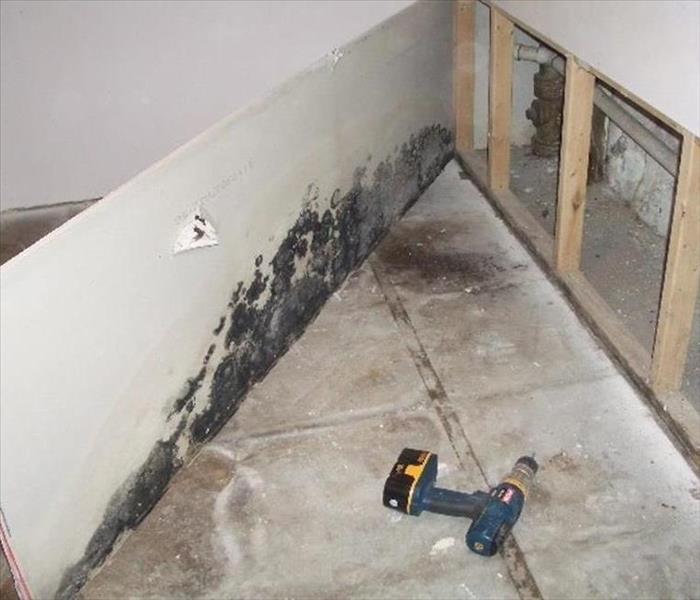 Mold on backside of shhetrock
Mold on backside of shhetrock
Microscopic mold spores naturally occur almost everywhere, both outdoors and indoors. This makes it impossible to remove mold from a home or business. Therefore, mold remediation reduces the mold spore count back to its natural or baseline level. Some restoration businesses advertise “mold removal” and even guarantee to completely eradicate mold forever, which is a fallacy. Consider the following mold facts:
- Mold is present almost everywhere, indoors and outdoors.
- Mold spores are microscopic and float along in the air and may enter your home through windows, doors, or AC/heating systems or even hitch a ride indoors on your clothing or a pet.
- Mold spores thrive on moisture. Mold spores can quickly grow into colonies when exposed to water. These colonies may produce allergens and irritants.
- Before mold remediation can begin, any sources of water or moisture must be addressed. Otherwise, the mold may return.
- Mold often produces a strong, musty odor and can lead you to possible mold problem areas.
- Even higher-than-normal indoor humidity can support mold growth. Keep indoor humidity below 45 percent.
If you think you have mold, please call SERVPRO of Cambridge/Belmont (617) 864-7378 to assess your situation.
Common causes of mold
7/5/2018 (Permalink)
 Active mold growth in the basement
Active mold growth in the basement
One of the rooms in the house where you'll most often see mold is the basement.
This Blog informs you about the most common causes and the signs of mold in the basement. It also lets you know how to find mold growth in the basement and to prevent mold from growing in the basement.
Causes of Mold in Basement
There are many sources of moisture found in the basement. And any water problem in the basement usually takes a long time to dry out. This is because the basement gets no sunlight, very little ventilation and is often humid.
To make matters worse, once mold has begun to grow in the basement it will probably go unnoticed for a long time since people don't spend much time in their basements. People rarely clean their basements too and the dust and dirt helps mold to grow.
Mold loves to grow on some of the building materials in the basement. Some favorites are drywall, wood and insulation.
Mold and Flooding
Mold from Basement Leaks
Leaking pipes in the basement or in nearby rooms lead to basement mold growth. Water in the ground can also find its way into the basement through cracks in the walls.
Basement Humidity and Mold
Once water in the basement evaporates it raises the humidity level in the basement. The humidity then usually stays high thanks to poor ventilation and no sunlight. Some molds can begin to grow in the basement just from this high level of humidity.
Signs of Mold in Basement
One of the clearest signs that you have mold in your basement is the smell. Because of the stagnant air in the basement, odors build up and become very noticeable. Don't ignore a musty or moldy smell in the basement as it probably means you have a basement mold problem.
If you need help with mold, please contact SERVPRO of Cambridge/Belmont (617) 864-7378
Recent Storm in Cambridge, MA
7/2/2018 (Permalink)
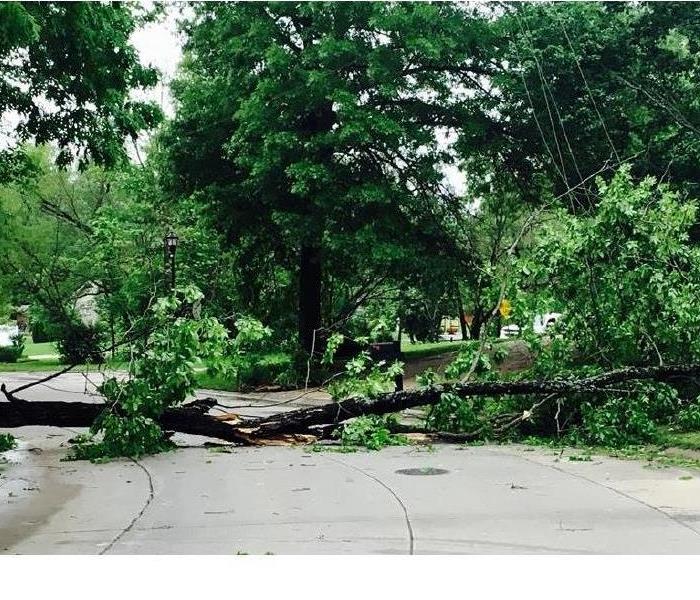 Downed tree as a result of the recent storm
Downed tree as a result of the recent storm
Yesterday’s microburst that occurred in the city of Cambridge resulted in about 50 limbs or branches down. Forestry crews are responding. There are also several wires down and loss of power in certain locations. The City Electrician, Eversource and SERVPRO of Cambridge/Belmont are responding. The above picture shows the damage that one of the downed trees caused. SERVPRO Of Cambridge/Belmont responded to a frantic call from the homeowner informing us that a tree came right through the kitchen ceiling. The SERVPRO technicians were at the Cambridge home in less than an hour. They cleaned up the debris and installed drying equipment.
To report a fallen tree or limb, call 617-349-3300.
To report a down wired, call 911 or 617-349-3300
To report loss of power, please call Eversourse at 1-800-592-2000
If you have had roof or water damage due to the Microburst please call SERVPRO of Cambridge/Belmont (617) 864-7378
A microburst is a small downdraft that moves in a way opposite to a tornado. Microbursts are found in strong thunderstorms. There are two types of microbursts within a thunderstorm: wet microbursts and dry microbursts. They go through three stages in their cycle, the downburst, outburst, and cushion stages. A microburst often has high winds that can knock over fully grown trees. They usually last from a couple of seconds to several minutes.
Mold in the Basement
7/2/2018 (Permalink)
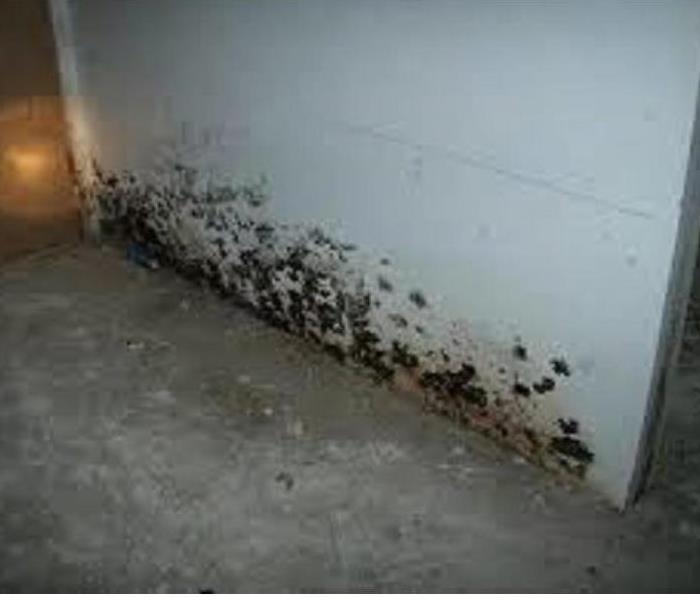 Mold growing on the walls
Mold growing on the walls
The Millers were away for a week and when they came home they noticed a smell coming from the basement. A pipe had developed a leak and was dripping water onto the carpet in their finished basement. The Millers called SERVPRO of Cambridge/Belmont to assist them with the water damage. The crew arrived and checked the basement walls and floor for excessive moisture content. The SERVPRO crew determined that the water wicked up the walls causing the positive readings. SERVPRO of Cambridge’s technician recommended the removal of 2 feet of walls and removal of the insulation behind the walls so that the basement could be dried properly. The customer did not follow the technician’s advice and wanted only to have the pad removed and the carpet dried. A few weeks later, the Millers discovered black spots growing on the walls. They called SERVPRO of Cambridge/Belmont again to assess the situation. SERVPRO determined that mold had started growing and recommended that the walls be cur 6”inches past the mold growth, remove the insulation, heap-vacuum and spray an anti-microbial behind those walls. If you have water damage call SERVPRO of Cambridge/Belmont (617) 864-7378 to assist you and please follow the recommendations of the crew
Hidden water, is it covered by insurance?
7/2/2018 (Permalink)
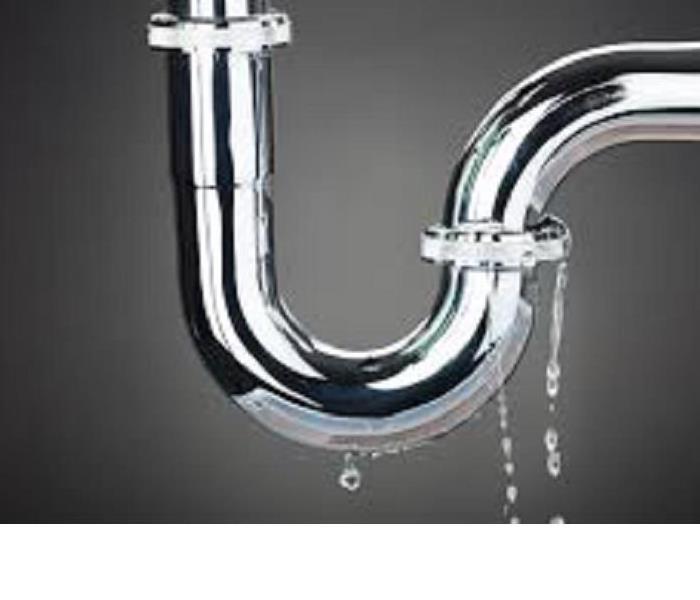 Slow leak under the kitchen sink
Slow leak under the kitchen sink
Whether it's behind the washer, above the ceiling or under the sink, a little drip can lead to big trouble. Water damage happens quickly and can be expensive to fix. Ignore a leak, and you not only could you have a mighty mess on your hands, but your home insurance probably won't bail you out. "What's really important to know for leaks is when did the insured notice it and take action," Says Michael Pridham from SERVPRO of Cambridge/Belmont
"People now build houses to be airtight," says Michael Pridham, owner of SERVPRO of Cambridge/Belmont, a property-damage restoration service. "Houses are wrapped in plastic like Saran Wrap. That's good for energy conservation, but if water gets on the wrong side of that plastic, then mold will follow, as certainly as night follows day." Pridham observes that damage often occurs after people get security systems installed. Holes are drilled into airtight window frames for wires to run through them, but they aren't properly caulked and sealed, allowing water to slowly seep in over time. "You notice that maybe the wall below the window is looking funny, and by that time the framing behind it is rotted out," he says. If the homeowner reports the problem right away, it would likely be covered by home insurance.
But what about a slow leak you can't see? Say, for instance, a pipe behind a wall leaks, and you don't notice it until water starts seeping through the wall. Are you covered? Most likely the answer is yes, as long as you take action as soon as there is evidence of the leak, Pridham says. "Nobody expects you to tear out your drywall now and again to check the pipes. Call the professionals at SERVPRO of Cambridge/Belmont (617) 864-7378. They will send out a crew to test the walls using moisture detectors and an infrared camera.
Insurance companies understand it's impossible to know you have a hidden leak until the damage becomes apparent. The same goes for leaks behind and under appliances, or above a ceiling. If you can't see the leak, you can still make an insurance claim as long as you report it when it becomes apparent. Don't expect much sympathy if you ignore the wet spot in your ceiling, only to report it when the problem gets worse. The insurance adjuster probably will be able to tell if the damage is fresh.
"If the insured had a leak in the roof and had a pot under it for six months, then that damage is not covered," Pridham of SERVPRO of Cambridge/Belmont says. "Insurance Professionals are pretty good at seeing whether a wet spot has been there for a while. Sometimes they have engineers go out to look." When it comes to insurance coverage, everything depends on the language in your policy. Although most policies cover damage from leaks as long as you responded quickly, language among policies differs. Keep in mind, though, that while home insurance may cover the water damage to the ceiling, floor, walls or furniture, it won't pay for replacing the worn-out pipe or the leaky roof (unless the roof was damaged by a covered peril, such as hail or a fallen tree).
Sergio Rodriguez, Production Manager for SERVPRO of Cambridge/Belmont suggests making sure all holes are properly caulked and sealed and keeping eaves and downspouts clean. He recommends periodically checking behind appliances and under sinks to make sure everything is dry. That means actually moving out the stuff that's been sitting under the kitchen sink for the last several years. Be careful when pulling out the refrigerator to check for a leak in the ice maker water line. Avoid running over the water line or crimping a copper line. Rodriguez also suggests replacing rubber supply hoses to appliances with braided hoses, which are made of rubber surrounded by wire mesh. Braided hoses can still spring a leak, but they won't burst.
If you think you have a leak, call the professionals at SERVPRO of Cambridge/Belmont (617) 864-7378
Drying with no demolition
7/2/2018 (Permalink)
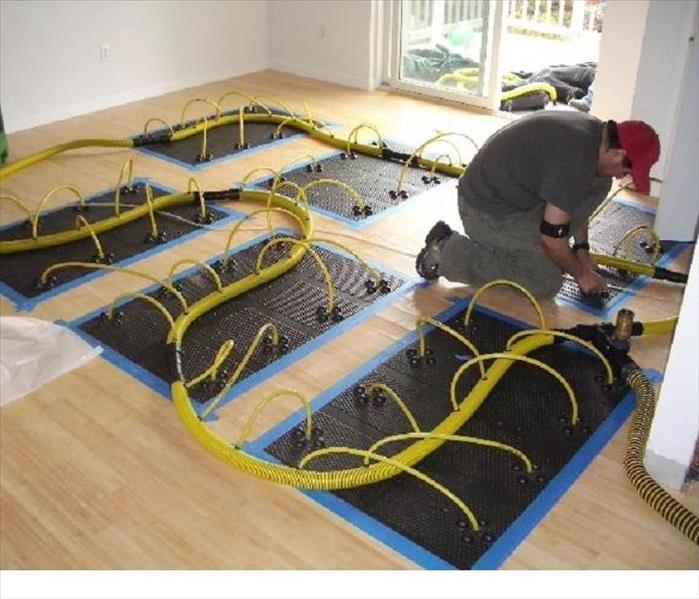 Inject-I-Dry System drying hardwood fllor
Inject-I-Dry System drying hardwood fllor
Peter & Sue Miller’s contractor had finally finished the renovations. They had been living with relatives until their new condominium was finished. The furniture and belongings were delivered and they were finally living in their dream home. They came home Sunday night after a weekend away and they noticed water dripping down from the ceiling. Their hardwood floors had standing water and were beginning to buckle. They discovered that their upstairs neighbor pipe broke causing the water to run down into their unit. They called SERVPRO of Cambridge/Belmont to assist them. The Millers explained that they had just moved in and didn’t want the life to be disrupted. The SERVPRO technician assessed the damages and came up with a plan that would not require any demolition. He discovered there were existing cavities he could install an Inject-I-Dry System that would dry out the floors & ceilings without any demolition or sanding. The technician monitored the drying progress and after one week, he determined that the floor and ceiling were dry and removed the equipment. The Miller’s were ecstatic!
If you sustain water damage, please call SERVPRO of Cambridge/Belmont (617) 864-7378 to assist you.
Water damage over the weekend
7/2/2018 (Permalink)
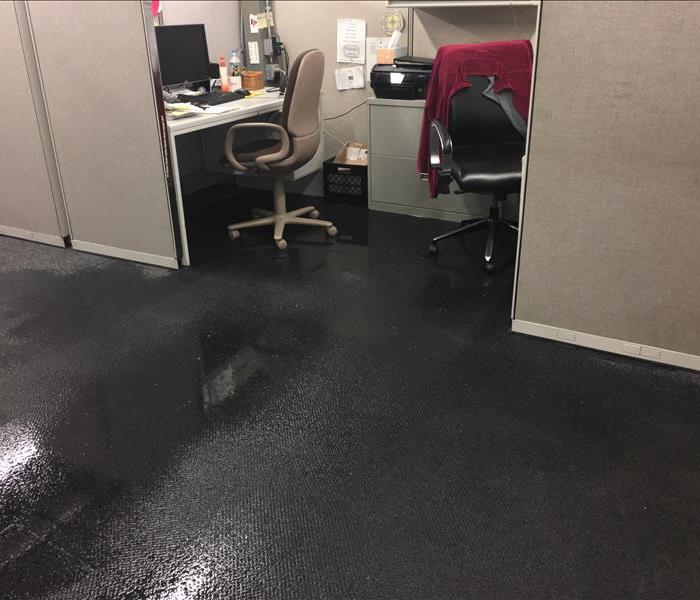 This is what the office looked like when SERVPRO arrived
This is what the office looked like when SERVPRO arrived
On Monday morning, Shannon arrived in the office early as usual. She was always the first one in the office. As she went to her cubicle her feet squished. She looked around & she saw that the carpet and surrounding area was completely wet. She called the office manager, Johnny. Johnny knew what to do, call SERVPRO of Cambridge Belmont. The SERVPRO crew arrived quickly and they immediately went to work. They extracted the water and set up drying equipment. The production manager monitored the loss and when he determined the area was dry, he arranged to have the carpet cleaned. Shannon requested that the carpet cleaning be done after hours so the business would not be interrupted. Everyone at the Cambridge business was very happy when things were back to normal. If your business has water damage, please call SERVPRO of Cambridge/Belmont (617) 864-7378 to assist you.
Water damage over the weekend
7/2/2018 (Permalink)
 This is what the office looked like when SERVPRO arrived
This is what the office looked like when SERVPRO arrived
On Monday morning, Shannon arrived in the office early as usual. She was always the first one in the office. As she went to her cubicle her feet squished. She looked around & she saw that the carpet and surrounding area was completely wet. She called the office manager, Johnny. Johnny knew what to do, call SERVPRO of Cambridge Belmont. The SERVPRO crew arrived quickly and they immediately went to work. They extracted the water and set up drying equipment. The production manager monitored the loss and when he determined the area was dry, he arranged to have the carpet cleaned. Shannon requested that the carpet cleaning be done after hours so the business would not be interrupted. Everyone at the Cambridge business was very happy when things were back to normal. If your business has water damage, please call SERVPRO of Cambridge/Belmont (617) 864-7378 to assist you.
Hidden water leaks
6/7/2018 (Permalink)
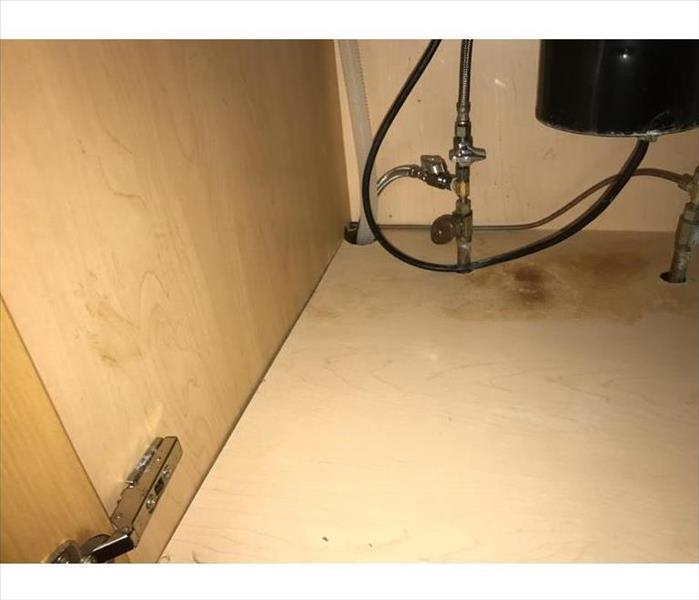 Hidden water leak
Hidden water leak
Whether it's behind the washer, above the ceiling or under the sink, a little drip can lead to big trouble. Water damage happens quickly and can be expensive to fix. Ignore a leak, and you not only could you have a mighty mess on your hands, but your home insurance probably won't bail you out. "What's really important to know for leaks is when did the insured notice it and take action," Says Michael Pridham from SERVPRO of Cambridge/Belmont
"People now build houses to be airtight," says Michael Pridham, owner of SERVPRO of Cambridge/Belmont, a property-damage restoration service. "Houses are wrapped in plastic like Saran Wrap. That's good for energy conservation, but if water gets on the wrong side of that plastic, then mold will follow, as certainly as night follows day." Pridham observes that damage often occurs after people get security systems installed. Holes are drilled into airtight window frames for wires to run through them, but they aren't properly caulked and sealed, allowing water to slowly seep in over time. "You notice that maybe the wall below the window is looking funny, and by that time the framing behind it is rotted out," he says. If the homeowner reports the problem right away, it would likely be covered by home insurance.
Today's houses also have more bathrooms, and the washing machine is often located next to the master bedroom on an upper floor for convenience, Pridham notes. "That means you've got more pipes, and if the washing machine leaks, it can affect the third floor, the second floor, the first floor and even down to the basement," he says. For water damage from leaky appliances or pipes, the damage must be "sudden and accidental" in order to be covered by insurance - such as a pipe that bursts while you're washing clothes.
But what about a slow leak you can't see? Say, for instance, a pipe behind a wall leaks, and you don't notice it until water starts seeping through the wall. Are you covered? Most likely the answer is yes, as long as you take action as soon as there is evidence of the leak, Pridham says. "Nobody expects you to tear out your drywall now and again to check the pipes. Call the professionals at SERVPRO of Cambridge/Belmont (617) 864-7378. They will send out a crew to test the walls using moisture detectors and an infrared camera.
Insurance companies understand it's impossible to know you have a hidden leak until the damage becomes apparent. The same goes for leaks behind and under appliances, or above a ceiling. If you can't see the leak, you can still make an insurance claim as long as you report it when it becomes apparent. Don't expect much sympathy if you ignore the wet spot in your ceiling, only to report it when the problem gets worse. The insurance adjuster probably will be able to tell if the damage is fresh.
"If the insured had a leak in the roof and had a pot under it for six months, then that damage is not covered," Pridham of SERVPRO of Cambridge/Belmont says. "Insurance Professionals are pretty good at seeing whether a wet spot has been there for a while. Sometimes they have engineers go out to look." When it comes to insurance coverage, everything depends on the language in your policy. Although most policies cover damage from leaks as long as you responded quickly, language among policies differs. Keep in mind, though, that while home insurance may cover the water damage to the ceiling, floor, walls or furniture, it won't pay for replacing the worn-out pipe or the leaky roof (unless the roof was damaged by a covered peril, such as hail or a fallen tree).
Sergio Rodriguez, Production Manager for SERVPRO of Cambridge/Belmont suggests making sure all holes are properly caulked and sealed and keeping eaves and downspouts clean. He recommends periodically checking behind appliances and under sinks to make sure everything is dry. That means actually moving out the stuff that's been sitting under the kitchen sink for the last several years. Be careful when pulling out the refrigerator to check for a leak in the ice maker water line. Avoid running over the water line or crimping a copper line. Rodriguez also suggests replacing rubber supply hoses to appliances with braided hoses, which are made of rubber surrounded by wire mesh. Braided hoses can still spring a leak, but they won't burst.
If you think you have a leak, call the professionals at SERVPRO of Cambridge/Belmont (617) 864-7378
The most common plumbing issues
6/7/2018 (Permalink)
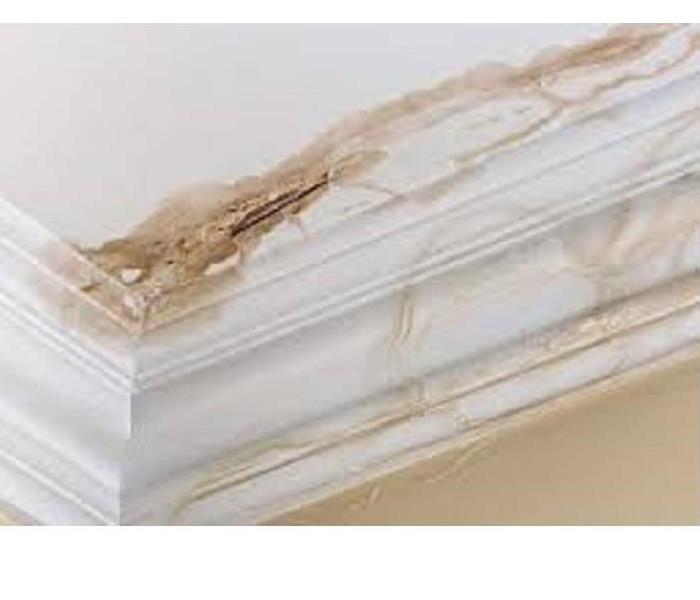 Water damage to ceiling
Water damage to ceiling
You depend on your plumbing each and every day, from the hot water in your shower to the water boiling on your stove. As such, it’s important to maintain your plumbing regularly to make sure there aren’t any major issues such as leaks or sewage backups. But plumbing problems can still occur with regular maintenance, so it’s good to be aware of common plumbing issues and what you can do to solve them or minimize damage to your home.
Low Water Pressure
Proper water pressure is necessary for washing your hands, cleaning dishes, and taking a shower. If you’ve noticed a significant drop in your home’s water pressure, you probably have a clogged pipe. It’s also possible that you need to fully open your shutoff valve. If you’re only having water pressure issues with one faucet, the solution may be as simple as cleaning the aerator or removing a nearby clog.
Dripping Faucet
Depending on the severity of the drip, a dripping faucet can raise your water bill and waste a significant amount of water—not to mention how annoying it can be. Luckily, fixing a dripping faucet is usually as simple as replacing seats and springs or a washer in the faucet.
Running Toilet
It happens so frequently: minutes after flushing your toilet, you can still hear the toilet running as if the bowl is filling with water. This is an incredibly annoying problem to have, but usually, an easy one to fix. Remove the lid from your toilet tank and make sure that your tank ball, flapper valve, and flush valve are working properly—if any of them are sticking or not functioning right, they’re easy to replace.
Clogged Drain
Clogged or slow drains are probably the most common plumbing problem. Plumbing pipes are designed to allow water and waste to flow through freely, but over time, built up hair, soap scum and other debris can form a clog in your drain that prevents water from passing. This is almost sure to happen in any home given enough time. You can use vinegar and baking soda to break up clogs in your sink, or you can buy a drain auger and remove the clog manually.
Sometimes the clog may be deeper in your pipes or too severe to easily remove, look into professional plumbing services; they have the equipment and expertise to clear clogged drains without causing damage to your plumbing. If you have sewage damage as a result of a clogged drain or other plumbing issues, please call SERVPRO of Cambridge/Belmont (617) 864-7378
Leaking Pipes
Leaks aren’t just an annoyance; they can significantly increase your water bill and quickly cause damage to your home. If you have a leaking pipe that’s beyond a slow drip, shut your water off as soon as possible. If there is any chance of mold or structural damage to your home, call SERVPRO of Cambridge/Belmont (617) 864-7378 to avoid spending a fortune on repairs. Leaking pipes generally need to be replaced, but you can use marine tape or epoxy to cover small leaks temporarily—just remember to shut the water off first.
No Hot Water
Have you ever rolled out of bed and into the shower only to find there’s no hot water? It’s not a good experience. Chances are you’ve got something wrong with your water heater, most probably an electrical problem such as a thermostat or element. If you’re not comfortable troubleshooting your water heater, it’s a good idea to get help from a trained, knowledgeable professional.
Plumbing truly is an essential part of our everyday lives. We can’t all be professional plumbers, but with a little bit of research and hard work, you can stay cool, calm and collected in the face of a plumbing emergency
If you have water damage as a result of any of these or other plumbing issues, please call SERVPRO of Cambridge/Belmont (617) 864-7378
Problems over the weekend
5/9/2018 (Permalink)
 If you see this, call us!
If you see this, call us!
On Monday morning, Marcy came to work early as usual. As she went to her cubicle her feet squished. She looked around & she saw that the carpet and surrounding area was completely wet. She called the office manager, Johnny. Johnny knew what to do, call SERVPRO of Cambridge Belmont. The SERVPRO crew arrived quickly and they immediately went to work. They extracted the water and set up drying equipment. The production manager monitored the loss and when he determined the area was dry, he arranged to have the carpet cleaned. Johnny requested that the carpet cleaning be done after hours so the business would not be interrupted. Everyone at the Cambridge business was very happy when things were back to normal. If your business has water damage, please call SERVPRO of Cambridge/Belmont (617) 864-7378 to assist you.
Preventing water damage
5/9/2018 (Permalink)
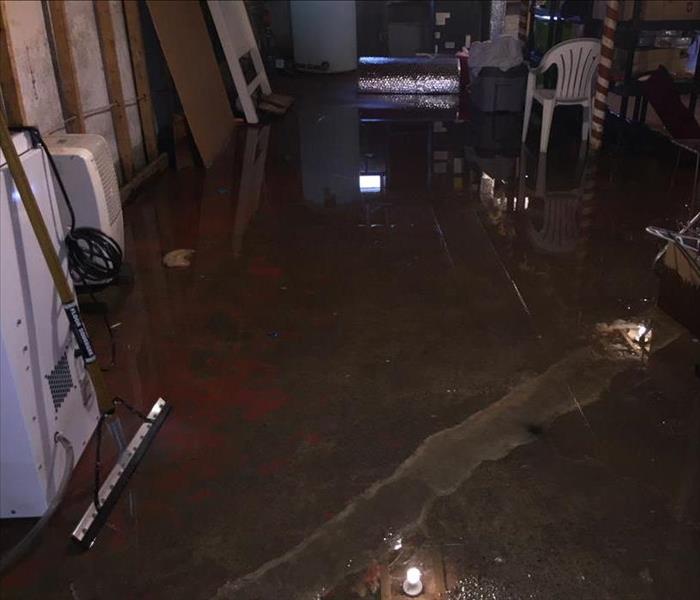 This flooded basement could have been prevented
This flooded basement could have been prevented
Preventing a water disaster in the basement
Sergio Rodriguez, Production Manager for SERVPRO of Cambridge/Belmont suggests making sure all holes are properly caulked and sealed and keeping eaves and downspouts clean. He recommends periodically checking behind appliances and under sinks to make sure everything is dry. That means actually moving out the stuff that's been sitting under the kitchen sink for the last several years. Be careful when pulling out the refrigerator to check for a leak in the ice maker water line. Avoid running over the water line or crimping a copper line. Rodriguez also suggests replacing rubber supply hoses to appliances with braided hoses, which are made of rubber surrounded by wire mesh. Braided hoses can still spring a leak, but they won't burst.
If you think you have a leak, call the professionals at SERVPRO of Cambridge/Belmont (617) 864-7378
Mold in the House
5/9/2018 (Permalink)
 Mold in home left untreated
Mold in home left untreated
Mold issues in the home
Black mold belongs to the fungal family. Fungi make up 25% of our planet’s biomass, and they are very diverse, including mushrooms, toadstools, molds and mildews. What unites them all is a lack of chlorophyll.
Although many fungi are harmless, there are also some mold such as aspergillus may not be as harmless.
Black mold loves to grow on cellulose, which includes substances such as straw, grains, paper (including wallpaper) and wood. It thrives when that substrate has a relative humidity of 15% and the ambient environment is around 90% (hello, bathrooms). But basically it will take advantage of anywhere that water has got in, so a leaky roof, faulty damp-proof course or a cracked drain are all open invitations to black mold.
Black mold facts:
- It is a fungus called Stachybotrys chartarum.
- Black mold poisoning is called stachybotryotoxicosis (literally “poisoned by stachybotrys”).
- Black mold is in part responsible for “sick building syndrome,” where people develop respiratory difficulties, chest tightness and headaches.
If you think you have mold please call SERVPRO of Cambridge/Belmont (617) 864-7378 to assist you with the mold remediation.
Causes & prevention of Commercial Fires
5/8/2018 (Permalink)
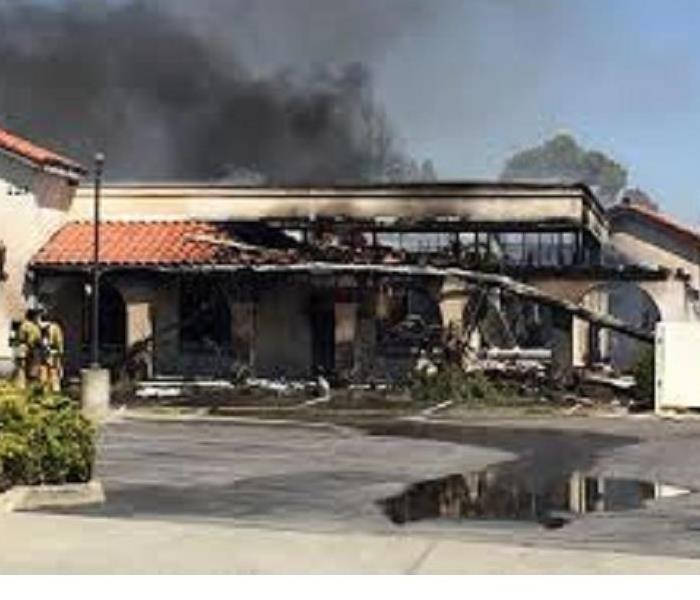 Commercial Building after the fire
Commercial Building after the fire
Most Common Causes of Commercial Building Fires
- Cooking Fires
29.3% of nonresidential fires from 2013 were cooking related. In fact, 1 in 4 office building fires were related to cooking equipment. These fires tend to account for less damage, but are easily preventable with fire protection systems such as alarms and fire extinguishers.
- Intentional
The second most common cause of nonresidential fires was intentionally started. This accounts for almost 10% of fires, and tends to cause the most damage. Intentional fires also result in more civilian injuries and deaths. Unlike cooking and heating fires, it's most common for intentional fires to be started between 3pm and midnight.
A few common locations in your building to be aware of include:
- Bathrooms
- Trash bins
- Garages
- Open areas like a lawn or field
- Careless Acts and Human Error
9.2% of commercial fires were unintentional results of careless acts. This is somewhat of an 'other' category. A few examples of careless acts that result in fires:
- Accidentally leaving space heaters or other heat producing equipment on
- Carelessly discarded cigarette butts igniting fires
- Plugging too many things into the same extension cord
- Heating Fires
Heating fires account for 9% of all nonresidential building fires. Central heating units, fireplaces, water heaters, and other heating appliances and systems should be regularly inspected to prevent fires. It's important to move any flammable materials and furniture away from heat sources, especially in the winter months when the heat is turned on.
How to Prevent a Nonresidential Fire
Run through the items below to see how protected your business is from a fire emergency. There might be something you're missing that could save you thousands of dollars in fire damage and loss.
Fire Suppression and Protection System in Place
- Fire extinguishers - The top cause of commercial building fires is cooking fires, and thankfully, most of these fires are small and contained. A fire extinguisher placed near the kitchen area can give employees the power to stop a small cooking fire from spreading. Make sure your employees are trained in using a few extinguishers. Read this if you're unsure whether or not your fire extinguishers are still in working condition.
- Fire alarms - This may sound obvious, but fire alarms are easily overlooked or left with dead batteries because they're not properly maintained. Not only is a fire alarm system required, but it can save lives and property from damage.
- Commercial fire sprinkler system - A sprinkler system can squelch a potentially deadly fire. The NFPA has no record of a fire killing more than 2 people in a building that was completely sprinkled. Having only 1 or 2 fire sprinkler heads can contain the majority of fires.
Testing and Maintenance
So you have all of the necessary fire protection systems in place. But how well maintained and up-to-date are they? Do you have expired fire extinguishers? Are you following the legal state requirements for getting these systems tested regularly? Make sure you check the local fire code to see what is required of businesses, and set up regular inspections and maintenance.
Install a Commercial Alarm System
No one likes to think that there are people who would intentionally start a fire on their property. Unfortunately, this is a scenario that you need to be prepared for. Invest in a security alarm system that will detect any suspicious activity in the evening hours when the building is most at risk. Keeping the area well-lit at night, or installing motion sensor lights outside, can deter criminal activity.
If you do have a fire please call SERVPRO of Cambridge/Belmont (617) 864-7378
Mold in the workplace
5/8/2018 (Permalink)
 Mold Remediation at a local school
Mold Remediation at a local school
Toxic Mold: What Every Employer Should Know
Mold is a favored word among lawyers and a feared word among building owners, employers and landlords.
Lawsuits arising out of mold and claiming "sick building syndrome" are common. Multi-million dollar verdicts are not unheard of. Mold, in the words of some, is becoming "the next asbestos."
An $8 billion class-action lawsuit was brought by 300 tenants in a large apartment building in New York. The Environmental Protection Agency (EPA) was sued by employees claiming they became ill because of mold exposure while working at EPA headquarters. Even Hollywood is involved: Ed McMahon sued his insurer for $20 million, claiming that toxic mold in his Beverly Hills home killed his dog.
Mold has even reached the attention of the U.S. Congress. Last year, Representative John Conyers of Detroit introduced a proposed bill, the "United States Toxic Mold Safety and Protection Act of 2002," intended to set standards for indoor mold levels and to provide for related research.
Due to increased public awareness,
Almost mounting to hysteria, the number of legal claims is sure to mount. Workers who believe they are being exposed to mold may not want to work, their productivity may decline and they may file worker's compensation and disability claims. As an employer and/or a building owner, what can you do to try to limit your legal liability?
Look for Signs of Mold
With all of this attention, you may think that mold infestation is something new or uncommon. It is not. Mold is present in all buildings in some form and quantity. However, certain species of mold spores, in large enough concentrations, can be toxic. Although the health problems of mold exposure are in debate, there is literature tying some health effects to mold exposure. People with immune-compromised systems may experience permanent health effects.
Physical symptoms related to exposure to mold or sick building syndrome include eye, nose and throat irritation; respiratory complaints; skin irritation; nausea; dizziness and fatigue. Alert your human resources department and/or office manager to be aware of any such symptoms. If numerous employees complain, or if employees complain of moldy smells, put the building owner on notice and request an investigation. If you own the building, consider hiring an air quality investigator. Although these symptoms could result from other factors, it is important to address them.
Look For the Cause
Mold needs water or moisture and oxygen to grow. Water does not have to flow into the building for there to be enough moisture to promote the growth of mold. Although one-time leaks or burst water pipes may not be a problem if repaired, even a one-time leak, if not properly addressed, can cause unacceptable mold growth. There are a number of potential causes of moisture or water entry:
- Lack of building maintenance
- Poor building design or construction
- Using wet building materials
- Leaky pipes, windows, or doors
- Regular, or even one-time flooding
- Simple plumbing mistakes
- Excessive humidity and condensation
- Improper landscaping design or maintenance outside the building, causing water to flow toward the building
- Any other serious water related problem
- Address Moisture or Water Issues Promptly
If your building is experiencing water penetration, consistent moisture or leaks, demand that the landlord investigate the cause and promptly provide you with an action plan. If the landlord does not act, put it on notice that you intend to act and that you will hold it responsible for the costs.
Call SERVPRO of Cambridge/Belmont (617) 864-7378 to make an assessment and to remediate the mold.
Smoke Alarms, when to replace
4/2/2018 (Permalink)
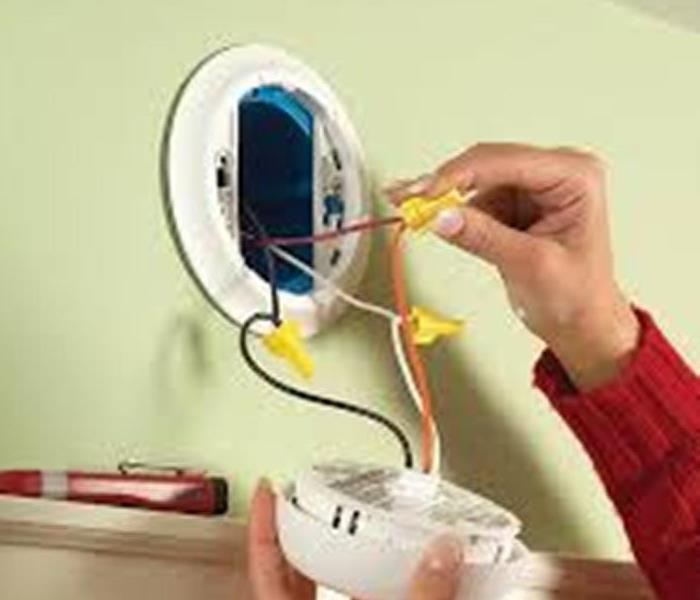 Hard wired smoke detector
Hard wired smoke detector
Your detectors are overdue for replacement, according to the National Fire Protection Association, which recommends that you replace detectors when they’re 10 years old. Top-rated security system experts we interviewed say that, over time, dust gathers inside smoke detectors, desensitizing the sensors. And even if a detector hasn’t reached the 10-year mark, replace it if it chirps after you’ve replaced the battery or if the alarm doesn’t sound when you perform the recommended monthly testing. Experts recommend replacing all connected detectors at the same time, even if some are working. Smoke detectors are an essential part of a fire-prevention strategy, so you should replace yours as soon as possible. In a 2014 report, the NFPA said three of every five home-fire deaths resulted from fires in homes with no smoke alarms or with none that worked.
You can replace hard-wired detectors yourself, if you can reach them and if you have sufficient skill to replace a light fixture. (Be sure to first turn off electricity at the breaker box.) Otherwise, you can hire an electrician or an alarm service company to do the job. The cost can vary widely, depending on where you live and on the type and number of units to be replaced, where they’re placed and the condition of the wires. Service providers we contacted charge a wide range of prices, from $35 to $40 per detector, plus a $50 for service charge, to $135 to $155 per detector.
Meanwhile, here are some NFPA safety tips:
- Install smoke alarms inside and outside each bedroom and sleeping area. Install alarms on every level of the home, including the basement. (Large homes may need extra smoke alarms.)
- Interconnected smoke alarms – whether hardwired or wireless – are best because when one is activated, they all sound.
- Test all smoke alarms at least once a month. Simply press the test button to be sure the alarm works.
- Ionization smoke alarms are quicker to warn of flaming fires. Photoelectric alarms are quicker to warn of smoldering fires. It’s best to use some of both types.
- A smoke alarm should be on the ceiling or high on a wall. Install wall-mounted alarms should no more than 12 inches from the ceiling to the top of the alarm.
- Don’t install smoke alarms near windows, doors, or ducts where drafts might interfere with their operation. To reduce false alarms, keep alarms at least 10 feet from a stove.
- Make sure everyone in your home knows how to respond if they hear a smoke alarm.
- Follow manufacturer’s instructions for cleaning.
If your smoke alarm goes off, immediately leave your home, follow your emergency plan & call SERVPRO of Cambridge/Belmont (617) 864-7378 to assist you assist you with the smoke cleanup.
Advertising with Drones!
9/27/2017 (Permalink)
 Drone with camera attached
Drone with camera attached
Drones offer a new perspective on real estate marketing, literally.When we think of drones many things come to mind. Whether it’s the military’s use of these unmanned aerial vehicles (UAV’s) or the image of Amazon dropping packages at your door, drone technology is here to stay. And in a technology friendly business like real estate it only makes sense that UAV’s should play a pivotal role. If you’re already imagining the views of those luxury properties from on high, here are some of the possibilities and some of obstacles to incorporating drones into your marketing.
Cost: Radio controlled drones weighing 4.4-pound with four spinning propeller blades capable of carrying a video camera can run anywhere from $2,000 – $5,000.
Control: Navigating a drone takes considerable skill, so you’ll want to hire a pro to navigate it. You can expect to pay a licensed professional anywhere from $350 to $500. In the long run it’s more cost effective and much safer than doing it yourself.
Risks: No matter how skilled your professional pilot might be, there are still risks involved when it comes to using drones. Before you take off, you’ll want to be sure you have insurance in place in case of unforeseen property damage, as well as damage to the drone itself.
Be proactive: Be sure to notify local law enforcement and surrounding neighbors before you take to the sky.
Where to start: In late summer of 2016 the Federal Aviation Administration (FAA) approved the use of drones for commercial use and removed a restriction that mandated a full FAA pilot’s license replacing it with $150 drone license. Check out the National Association of Realtors drone resource page for FAQ’s, timeline and political advocacy resources.
Drones, like other new technologies will continue to drop in price as demand increases. While it is true that drones will first be employed to highlight and promote luxury properties, they will no doubt become more main stream as costs come down. More than anything, a drone is an excellent differentiator, giving prospective buyers a bird’s eye view of the house, the property and the neighborhood.
If you have water or fire damage to your home, please call SERVPRO of Cambridge/Belmont (617) 864-7378 to assist you.
Early-season storms one indicator of active Atlantic hurricane season ahead
8/15/2017 (Permalink)
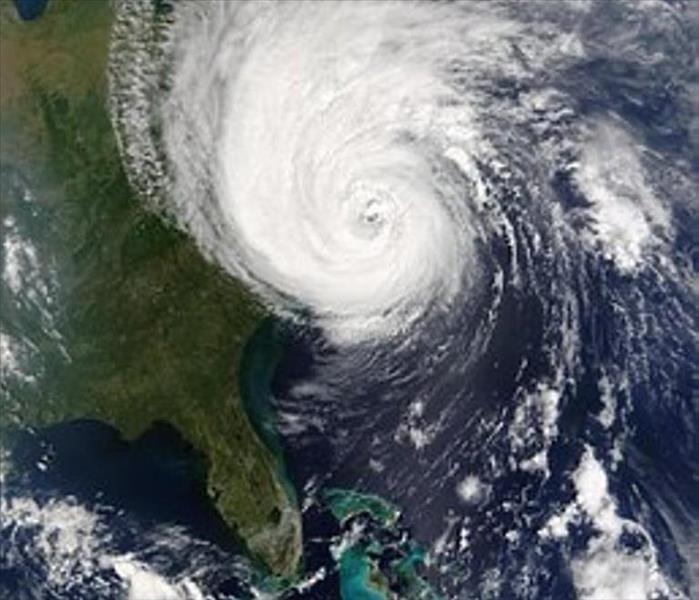 Satellite picture of a hurricane in the Atlantic
Satellite picture of a hurricane in the Atlantic
Today NOAA issued the scheduled update for its 2017 hurricane season outlook. Forecasters are now predicting a higher likelihood of an above-normal season, and they increased the predicted number of named storms and major hurricanes. The season has the potential to be extremely active, and could be the most active since 2010.
Forecasters now say there is a 60-percent chance of an above-normal season (compared to the May prediction of 45 percent chance), with 14-19 named storms (increased from the May predicted range of 11-17) and 2-5 major hurricanes (increased from the May predicted range of 2-4). A prediction for 5-9 hurricanes remains unchanged from the initial May outlook.
“We’re now entering the peak of the season when the bulk of the storms usually form,” said Gerry Bell, Ph.D., lead seasonal hurricane forecaster at NOAA’s Climate Prediction Center. “The wind and air patterns in the area of the tropical Atlantic and Caribbean where many storms develop are very conducive to an above-normal season. This is in part because the chance of an El Nino forming, which tends to prevent storms from strengthening, has dropped significantly from May.”
Bell noted other factors that point to an above-normal season include warmer waters across the tropical Atlantic than models previously predicted and higher predicted activity from available models.
In just the first nine weeks of this season there have been six named storms, which is half the number of storms during an average six-month season and double the number of storms that would typically form by early August. An average Atlantic hurricane season, which runs from June 1-November 30, produces 12 named storms, of which six become hurricanes, including three major hurricanes.
“Today’s updated outlook underscores the need for everyone to know their true vulnerabilities to storms and storm surge,” said FEMA Administrator Brock Long. “As we enter the height of hurricane season, it’s important for everyone to know who issues evacuation orders in their community, heed the warnings, update their insurance and have a preparedness plan.”
The updated outlook is based on the current and evolving atmospheric and oceanic conditions, the most recent model predictions, and pre-and early-season storm activity. The numbers announced today include the season activity to-date. The Atlantic basin has seen six named storms (Arlene in April; Bret and Cindy in June; Don and Emily in July; and Franklin in August). Two of these storms, Cindy and Emily, struck the United States. Cindy made landfall on June 22 at the Louisiana-Texas border and caused heavy rain, inland flooding and multiple tornado outbreaks. Emily made landfall on July 31 in Anna Maria Island, Florida. Franklin is predicted to make landfall in Mexico overnight as a hurricane.
Today’s update also decreases the chance of a near-normal season from 35 percent to 30 percent, and a below-normal season from 20 percent to only 10 percent from the initial outlook issued in May.
As we move into the peak of hurricane season, when hurricanes are most frequent and at their strongest, NOAA urges coastal residents to make sure they have their hurricane preparedness plans in place and to monitor the latest forecasts.
If you are affected by a hurricane, please call SERVPRO of Cambridge/Belmont (617) 864-7378
Ten tips to help prevent water damage to your home
8/15/2017 (Permalink)
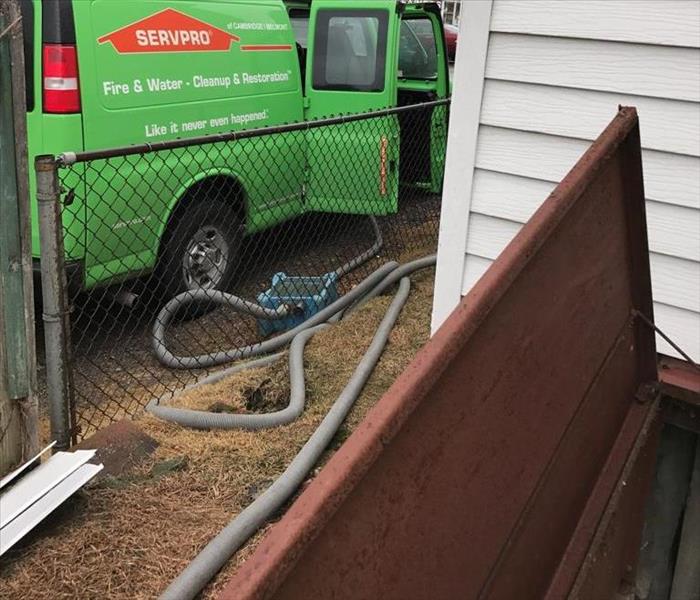 A SERVPRO truck extracting water after a burst pipe.
A SERVPRO truck extracting water after a burst pipe.
- Disconnect hoses
Standing water in a hose may freeze back into the pipe. This may create an ice block that stops your water flow. The block may may burst your pipes and create damage to walls, floor and foundation.
- Clean gutters and downspouts
Clean your gutters at least twice a year to avoid blockage and ice dams. Standing water can cause damage to your gutters and roof, and unmanaged overflow may create puddles that could damage your foundation.
Don't forget to clean downspouts to ensure water can flow through, and secure downspouts so that they point away from the home.
- Maintain trees and vegetation
Thriving shrubs can be a beautiful thing — except when their roots wrap around your pipes and break them. That's why it's important to minimize landscaping near utility pipes or, if necessary, remove trees and shrubs that have become too big.
Interior Measures to Prevent Water Damage
- Know your water main
Know the location of your water main, and shut it off if you leave for an extended amount of time. If no water goes in to the house, chances are no faucet drips can wreak havoc on your home while you're away.
- Check appliances regularly
Check and maintain your home appliances regularly for leaks, according to manufacturer's directions.
- Investigate leaks right away and fix promptly
If you opt to ignore moisture damage or postpone making the necessary repairs, be prepared to experience mold, mildew, dry rot, or even structural damage to your home.
Keep in mind that homeowner's insurance provides coverage for damage that is sudden and accidental. Damage that results from lack of maintenance is not covered on a standard homeowner’s insurance policy.
If it's too late and you're already dealing with a wet disaster, check out advice on how to minimize water damage in your home.
- Upgrade washing machine hoses
Old, brittle or leaky washing machine hoses are among the most frequent causes of water loss for homeowners. Replace yours regularly to avoid a mighty mess and expensive damage.
- Install water detection devices
A water detector is a small electronic device that sounds an alarm when its sensor comes in contact with moisture. Its main benefit is that it detects low moisture levels or slow leaks that often go unnoticed. Install it near water heaters, sump pumps, washing machines, dishwashers and toilets to prevent extensive damage and mold growth.
- Check your water pressure
If the water pressure to your home is set too high, pipes and hoses may fail under the pressure. Buy a water pressure gauge at a local hardware store, attach it to an outside faucet, and turn the faucet to full force. The gauge will give you a reading of the home’s water pressure.
Typical residential water systems are designed for water pressure of 40 to 70 psi. If your home’s water pressure exceeds 100 psi, install a pressure regulator (which is available at hardware stores as well.)
- Monitor your water bill
Sometimes, the only way you know that water is leaking is taking a closer look at your water bill. If your usage jumps significantly from one month to the next without explanation, put your "water detective hat" on. Is there a leak in your crawlspace? Or, is it a pipe in your front yard? Don't leave mystery leaks unattended!
If you have had water damage to your home please call SERVPRO of Cambridge/Belmont (617) 864-7378
The top ten causes of household fires.
8/11/2017 (Permalink)
 Fires can be prevented if you use common sense.
Fires can be prevented if you use common sense.
A house can easily catch fire from the misuse of appliances to smoking in bedrooms. You can take measures to avoid fire in your home and ensure the safety of your family. Below are some of the most common causes of household fires, and some tips to take precautions.
- Cooking Equipment
Pots and pans can overheat and cause a fire very easily if the person cooking gets distracted and leaves cooking unattended. Always stay in the room, or ask someone to watch your food, when cooking on hotplates.
- Heating
Keep portable heaters at least 5’ away from anything that could easily catch fire such as furniture, curtains, laundry, clothes and even you. If you have a furnace, get it inspected once a year to make sure it is working to safety standards.
- Smoking in bedrooms
Bedrooms are best to be kept off limits for smoking. A cigarette that is not put out properly can cause a flame, as the butt may stay alit for a few hours. It could burst into flames if it came into contact with flammable materials, such as furniture. Did you know that fires started in the bedroom or lounge make up 73% of all house fire fatalities?
- Electrical Equipment
An electrical appliance, such as a toaster can start a fire if it is faulty or has a frayed cord. A power point that is overloaded with double adapter plugs can cause a fire from an overuse of electricity. A power point extension cord can also be a fire hazard if not used appropriately. Double check the appliances and power points in your home.
- Candles
Candles look and smell pretty, but if left unattended they can cause a room to easily burst into flames. Keep candles away from any obviously flammable items such as books and tissue boxes. Always blow a candle out before leaving a room. Did you know that in Perth last year 34 house fires started as a result of candles?²
- Curious Children
Kids can cause a fire out of curiosity, to see what would happen if they set fire to an object. Keep any matches or lighters out of reach of children, to avoid any curiosity turned disaster. Install a smoke alarm in your child’s room and practice a home escape plan with your children and family in case there was a fire. Inform your kids the importance of knowing their address knowing their address and if they needed to, call 911.
- Faulty Wiring
Homes with inadequate wiring can cause fires from electrical hazards. Some signs to see if you’ve bad wiring are: 1) Lights dim if you use another appliance; 2) For an appliance to work, you have to disconnect another; 3) Fuses blow or trip the circuit frequently. Have a licensed electrician come and inspect your house, or contact your landlord if you have any of the above occurrences.
- Barbeques
Barbeques are great for an outdoor meal, but should always be used away from the home, tablecloths or any plants and tree branches. Keep BBQs regularly maintained and cleaned with soapy water and clean any removable parts. Check the gas bottle for any leaks before you use it each time.
- Flammable Liquids
If you have any flammable liquids in the home or garage such as petrol, kerosene or ethylated spirits, keep them away from heat sources and check the label before storing. Be careful when pouring these liquids.
- Lighting
Lamp shades and light fittings can build up heat if they are very close to light globes. Check around the house to make sure. Lamp bases can become a hazard if they are able to be knocked over easily, and so should be removed if they are. Check that down lights are insulated from wood paneling or ceiling timbers.
The above tips are a good guide to avoiding a fire in your home. If you do have a fire and need assistance with the cleanup, please call SERVPRO of Cambridge/Belmont (617) 864-7378
Deodorizing contents after a fire
8/10/2017 (Permalink)
 SERVPRO constructed an ozone chamber to deodorize contents.
SERVPRO constructed an ozone chamber to deodorize contents.
The contents of a house that have had a fire usually need to be deodorized to eliminate lingering odors. SERVPRO of Cambridge/Belmont uses an ozone machine to eliminate these odors. Ozone, (O3), sometimes called "activated oxygen", contains three atoms of oxygen rather than the two atoms we normally breathe. Ozone is the second most powerful sterilizer in the world and can be used to destroy bacteria, viruses and odors. Interestingly ozone occurs quite readily in nature, most often as a result of lightning strikes that occur during thunderstorms. In fact the "fresh, clean, spring rain" smells that we notice after a storm most often results from nature's creation of ozone. However, we are probably most familiar with ozone from reading about the "ozone layer" that circles the planet above the earth's atmosphere. Here ozone is created by the sun's ultra-violet rays. This serves to protect us from the ultra-violet radiation.
How does ozone work?
The third oxygen atom of ozone makes it extremely reactive. This atom readily attaches itself to other odor molecules. When contaminants such as odors, bacteria or viruses make contact with ozone, their chemical structure is changed to less odorous compounds. As more ozone attacks the remaining compounds, the odor is eventually destroyed. This process is called oxidation. Ozone essentially reverts back to oxygen after it is used. This makes it a very environmentally friendly oxidant.
If your home or business has had a fire, please call SERVPRO of Cambridge/Belmont (617) 864-7378 to assist you.
12 Habits of exceptional leaders
8/9/2017 (Permalink)
 Aristotle
Aristotle
Below are 12 essential behaviors that exceptional leaders rely on every day. Give them a try and you can become a better leader today.
- Courage
“Courage is the first virtue that makes all other virtues possible.” —Aristotle
People will wait to see if a leader is courageous before they’re willing to follow his or her lead. People need courage in their leaders. They need someone who can make difficult decisions and watch over the good of the group. They need a leader who will stay the course when things get tough. People are far more likely to show courage themselves when their leaders do the same.
For the courageous leader adversity is a welcome test. Like a blacksmith’s molding of a red-hot iron, adversity is a trial by fire that refines leaders and sharpens their game. Adversity emboldens courageous leaders and leaves them more committed to their strategic direction.
Leaders who lack courage simply toe the company line. They follow the safest path—the path of least resistance—because they’d rather cover their backside than lead.
- Effective Communication
“The more elaborate our means of communication, the less we communicate.” —Joseph Priestley
Communication is the real work of leadership. It’s a fundamental element of how leaders accomplish their goals each and every day. You simply can’t become a great leader until you are a great communicator.
Great communicators inspire people. They create a connection with their followers that is real, emotional, and personal, regardless of any physical distance between them. Great communicators forge this connection through an understanding of people and an ability to speak directly to their needs.
- Generosity
“A good leader is a person who takes a little more than his share of the blame and a little less than his share of the credit.” —John Maxwell
Great leaders are generous. They share credit and offer enthusiastic praise. They’re as committed to their followers’ success as they are to their own. They want to inspire all of their employees to achieve their personal best – not just because it will make the team more successful, but because they care about each person as an individual.
- Humility
“Humility is not thinking less of yourself, it’s thinking of yourself less.” —C.S. Lewis
Great leaders are humble. They don’t allow their position of authority to make them feel that they are better than anyone else. As such, they don’t hesitate to jump in and do the dirty work when needed, and they won’t ask their followers to do anything they wouldn’t be willing to do themselves.
- Self-Awareness
“It is absurd that a man should rule others, who cannot rule himself.” —Latin Proverb
Contrary to what Dilbert might have us believe, leaders’ gaps in self-awareness are rarely due to deceitful, Machiavellian motives, or severe character deficits. In most cases, leaders—like everyone else—view themselves in a more favorable light than other people do.
Self-awareness is the foundation of emotional intelligence, a skill that 90% of top performing leaders possess in abundance. Great leaders’ high self-awareness means they have a clear and accurate image not just of their leadership style, but also of their own strengths and weaknesses. They know where they shine and where they’re weak, and they have effective strategies for leaning into their strengths and compensating for their weaknesses.
- Adherence to the Golden Rule +1
“The way you see people is the way you treat them, and the way you treat them is what they become.” —Jon Wolfgang von Goethe
The Golden Rule – treat others as you want to be treated – assumes that all people are the same. It assumes that, if you treat your followers the way you would want a leader to treat you, they’ll be happy. It ignores that people are motivated by vastly different things. One person loves public recognition, while another loathes being the center of attention.
Great leaders don’t treat people how they themselves want to be treated. Instead, they take the Golden Rule a step further and treat each person as he or she would like to be treated. Great leaders learn what makes people tick, recognize their needs in the moment, and adapt their leadership style accordingly.
- Passion
“If you just work on stuff that you like and are passionate about, you don’t have to have a master plan with how things will play out.” —Mark Zuckerberg
Passion and enthusiasm are contagious. So are boredom and apathy. No one wants to work for a boss that’s unexcited about his or her job, or even one who’s just going through the motions. Great leaders are passionate about what they do, and they strive to share that passion with everyone around them.
- Infectiousness
“The very essence of leadership is that you have to have a vision. It’s got to be a vision you articulate clearly and forcefully on every occasion. You can’t blow an uncertain trumpet.” —Reverend Theodore Hesburgh
Great leaders know that having a clear vision isn’t enough. You have to make that vision come alive so that your followers can see it just as clearly as you do. Great leaders do that by telling stories and painting verbal pictures so that everyone can understand not just where they’re going, but what it will look and feel like when they get there. This inspires others to internalize the vision and make it their own.
- Authenticity
“Just be who you are and speak from your guts and heart – it’s all a man has.” —Hubert Humphrey
Authenticity refers to being honest in all things – not just what you say and do, but who you are. When you’re authentic, your words and actions align with who you claim to be. Your followers shouldn’t be compelled to spend time trying to figure out if you have ulterior motives. Any time they spend doing so erodes their confidence in you and in their ability to execute.
Leaders who are authentic are transparent and forthcoming. They aren’t perfect, but they earn people’s respect by walking their talk.
- Approachability
“Management is like holding a dove in your hand. Squeeze too hard and you kill it, not hard enough and it flies away.” —Tommy Lasorda
Great leaders make it clear that they welcome challenges, criticism, and viewpoints other than their own. They know that an environment where people are afraid to speak up, offer insight, and ask good questions is destined for failure. By ensuring that they are approachable, great leaders facilitate the flow of great ideas throughout the organization.
- Accountability
“The ancient Romans had a tradition: Whenever one of their engineers constructed an arch, as the capstone was hoisted into place, the engineer assumed accountability for his work in the most profound way possible: He stood under the arch.” —Michael Armstrong
Great leaders have their followers’ backs. They don’t try to shift blame, and they don’t avoid shame when they fail. They’re never afraid to say, “The buck stops here,” and they earn people’s trust by backing them up.
- Sense of Purpose
“You don’t lead by pointing and telling people some place to go. You lead by going to that place and making a case.” —Ken Kesey
Whereas vision is a clear idea of where you’re going, a sense of purpose refers to an understanding of why you’re going there. People like to feel like they’re part of something bigger than themselves. Great leaders give people that feeling.
Bringing It All Together
Becoming a great leader doesn’t mean that you have to incorporate all of these traits at once. Focus on one or two at a time; each incremental improvement will make you more effective. It’s okay if you “act” some of these qualities at first. The more you practice, the more instinctive it will become, and the more you’ll internalize your new leadership style.
Lightning Science: Five Ways Lightning Strikes People
8/9/2017 (Permalink)
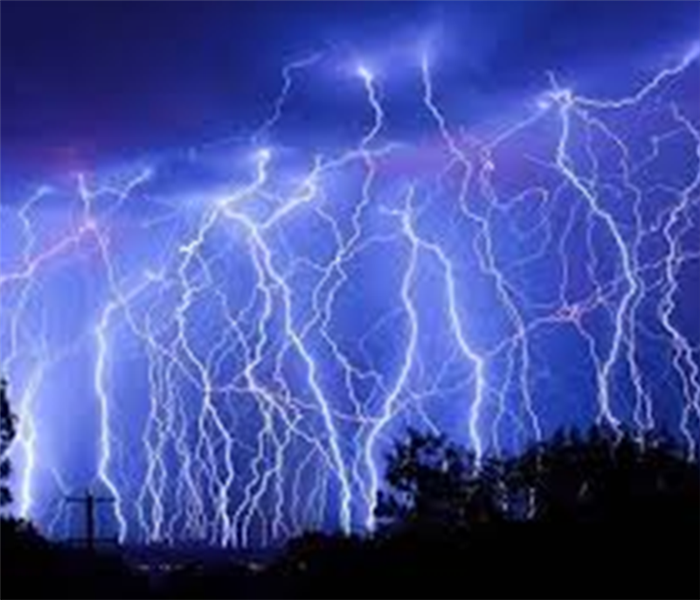 Lightning filling up the sky
Lightning filling up the sky
Direct Strike
A person struck directly by lightning becomes a part of the main lightning discharge channel. Most often, direct strikes occur to victims who are in open areas. Direct strikes are not as common as the other ways people are struck by lightning, but they are potentially the most deadly. In most direct strikes, a portion of the current moves along and just over the skin surface (called flashover) and a portion of the current moves through the body--usually through the cardiovascular and/or nervous systems. The heat produced when lightning moves over the skin can produce burns, but the current moving through the body is of greatest concern. While the ability to survive any lightning strike is related to immediate medical attention, the amount of current moving through the body is also a factor.
Side Flash
A side flash (also called a side splash) occurs when lightning strikes a taller object near the victim and a portion of the current jumps from taller object to the victim. In essence, the person acts as a “short circuit” for some of energy in the lightning discharge. Side flashes generally occur when the victim is within a foot or two of the object that is struck. Most often, side flash victims have taken shelter under a tree to avoid rain or hail.
Ground Current
When lightning strikes a tree or other object, much of the energy travels outward from the strike along the ground surface. This is known as the ground current. Anyone outside near a lightning strike is potentially a victim of ground current. In addition, ground current can travels in garage floors with conductive materials. Because the ground current affects a much larger area than the other causes of lightning casualties, the ground current causes the most lightning deaths and injuries. Ground current also kills many farm animals. Typically, the lightning enters the body at the contact point closest to the lightning strike, travels through the cardiovascular and/or nervous systems, and exits the body at the contact point farthest from the lightning. The greater the distance between contact points, the greater the potential for death or serious injury. Because large farm animals have a relatively large body-span, ground current from a nearby lightning strike is often fatal to livestock.
Conduction
Lightning can travel long distances in wires or other metal surfaces. Metal does not attract lightning, but it provides a path for the lightning to follow. Most indoor lightning casualties and some outdoor casualties are due to conduction. Whether inside or outside, anyone in contact with anything connected to metal wires, plumbing, or metal surfaces that extend outside is at risk. This includes anything that plugs into an electrical outlet, water faucets and showers, corded phones, and windows and doors.
Streamers
While not as common as the other types of lightning injuries, people caught in “streamers” are at risk of being killed or injured by lightning. Streamers develop as the downward-moving leader approaches the ground. Typically, only one of the streamers makes contact with the leader as it approaches the ground and provides the path for the bright return stroke; however, when the main channel discharges, so do all the other streamers in the area. If a person is part of one of these streamers, they could be killed or injured during the streamer discharge even though the lightning channel was not completed between the cloud and the upward streamer.
If you are a homeowner, property or facilities manager and you are affected by lightning please call SERVPRO of Cambridge/Belmont (617)864-7378 to assist you
10 places you may find bed bugs
8/7/2017 (Permalink)
 Bed bugs flat shape enable them to crawl into tight spaces
Bed bugs flat shape enable them to crawl into tight spaces
You’ve heard all about bedbugs in hotels, but did you know they’re also hiding (and waiting to hitch a ride home with you) in these common public places? Bedbugs are smaller than a grain of rice, but visible to the naked eye. So be on the lookout, and check out the top 10 places to accidentally pick up bedbugs.
Public Libraries
Crawling into bed with a good book has taken on a whole new meaning if you’re borrowing books from the public library system. Before you head home with a stash of bestsellers, check the pages and spines for bedbugs circulating from one reader’s home to the next.
Retail Stores
From clothes to furniture, bedbugs are just waiting for moving day. In the summer of 2010, retail shops around Manhattan were closed for fumigation when bedbugs were found hiding out in the goods. Investigate any possible purchases for unusual stains and shake out clothing before bringing it into the house.
Movie Theaters
You may catch more than a matinee at your local Cineplex. With cushy, upholstered seats and plenty of human hosts, the movie theater is prime real estate for bedbugs looking for a meal. Limit the personal belongings you bring with you to avoid bringing home your own critter horror show.
Planes, Trains and Buses
All kinds of people take public transportation, and bedbugs ride for free on planes, trains and buses. Bedbugs are small and hard to detect, so it’s unlikely you’ll see the pests getting cozy in your seat. However, you can take precautions when you return home -- don’t place your bags on your bed, and closely inspect your belongings when you unpack.
Daycares, Schools and Colleges
Stuffed animals, cubbies and dorms are incubators for all things gross, and bedbugs are spreading along with the rest of the germs among students and roommates. Kids in daycare share their cots and beloved toys from home. College kids bring home their laundry and bedbugs. Check in with the school director or resident advisor for reports of a bedbug invasion.
Places of Worship
Is nothing sacred? Clearly not for bedbugs who have been known to congregate in the holiest of places including temples, churches and religious meeting halls. Know how to spot a bedbug, and don’t let your guard down, even when offering up a prayer and gathering with like-minded worshippers.
Business Offices
The newest agenda item for many businesses is battling bedbugs that are just as likely to nestle into the carpet or furniture in the boardroom as they are in a bedroom. With clients and packages coming and going, bedbugs may move into an office space traveling on backpacks, briefcases, boxes, business suits or casual Friday
Business Offices
The newest agenda item for many businesses is battling bedbugs that are just as likely to nestle into the carpet or furniture in the boardroom as they are in a bedroom. With clients and packages coming and going, bedbugs may move into an office space traveling on backpacks, briefcases, boxes, business suits or casual Friday clothing.
Laundry Facilities
If you’re sorting and folding in shared spaces, there’s more to worry about than mixing your lights and darks, as bedbugs invade even the cleanest spots in town. Bedbug victims are often instructed to wash and dry infected clothing and personal belongings using extremely high heat. Avoid cross contamination in the Laundromat by keeping your dirty laundry to yourself, investigating tables and chairs, and using the hottest washing and drying temperatures possible.
Hospitals and Nursing Homes
Bedbugs don’t discriminate against the sick or the old, and to prove this point, hospitals around the country had to quarantine patient rooms and triage centers in late summer and fall 2010 to deal with bedbugs. You won’t likely have time to investigate beds and furniture if you get sick, but rest assured, bedbugs do not carry or spread disease.
Consignment, Thrift Shops and Yard Sales
Forgo the bargain-hunting and splurge on new goods to avoid bringing home bedbugs. If you just can’t pass up a sale, at least try to stay away from used mattresses, bed frames and headboards. You may save money, but professional treatment for a bedbug infestation can set you back thousands of dollars.
If you are a property or facilities manager, please call SERVPRO of Cambridge/Belmont (617) 864-7378 to assist you
Mold facts
8/7/2017 (Permalink)
 Heavy mold growth on back of shetrock
Heavy mold growth on back of shetrock
Mildew and molds are fungi - simple microscopic organisms that thrive anywhere there is a moist environment. Molds are a necessary part of the environment; without them, leaves would not decay and aspects of soil enrichment could not take place. It is their ability to destroy organic materials, however, that makes mold a problem for people - in our homes and in our bodies.
Mildew (mold in early stage) and molds grow on wood products, ceiling tiles, cardboard, wallpaper, carpets, drywall, fabric, plants, foods, insulation, decaying leaves and other organic materials.
Mold growths, or colonies, can start to grow on a damp surface within 24 to 48 hours. They reproduce by spores - tiny, lightweight “seeds”- that travel through the air. Molds digest organic material, eventually destroying the material they grow on, and then spread to destroy adjacent organic material. In addition to the damage molds can cause in your home, they can also cause mild to severe health problems. See the HEALTH section to check for possible mold related health problems.
Mold and mildew will develop within 24-48 hours of water exposure. Even worse, it will continue to grow until steps are taken to eliminate the source of moisture, and effectively deal with the mold problem.
Use the diagram on the facing page to assess the extent of mold in your home. We are all exposed to many kinds of mold both inside and outside the house. The exposure is greater in damp or wet conditions, especially when timely drying out do not have a chance to occur. Of the thousands of molds that exist, some are known allergens (aggravating or causing skin, eye, and respiratory problems), and a few molds produce harmful mycotoxins that can cause serious problems. But all molds, in the right conditions and high enough concentrations, are capable of adversely affecting human health.
Health issues caused by mold
The potential for health problems occurs when people inhale large quantities of the airborne mold spores. For some people, however, a relatively small number of mold spores can cause health problems. Infants, children, immune-compromised patients, pregnant women, individuals with existing respiratory conditions, and the elderly are at higher risks for adverse health effects from mold.
Typical symptoms reported from mold exposure include:
Respiratory problems -wheezing, asthma attacks, etc
Nasal and sinus congestion or dry, hacking cough
Eye irritation - burning, watery, redness
Nose or throat irritation -sneezing fits, bloody noses
Skin irritations -rashes or hives
Nervous system -headaches, memory loss, mood changes
Aches and pains
The more serious health problems have been associated with the toxic black mold, Stachybotrys atra. The mold is greenish-black and slimy, resembling tar or black paint. Stachybotrys typically grows only on repeatedly wetted materials that contain cellulose - from paper to ceiling tiles, and any kind of wood. In most cases, this mold can be removed by a thorough cleaning with a 10% bleach solution. Severe mold infestations may require the assistance of a professional with experience in dealing with Stachybotrys.
Mold prevention
There is no practical way for you to eliminate all of the molds and mold spores in the indoor environment. But there are many ways to help control moisture and mold growth in your home. Here is a partial list: Stop the water
- Fix leaks in pipes, and any damp areas around tubs and sinks, so that biological pollutants don’t have growing environments.
- Rebuild, or retrofit, with water-resistant building materials such as tiles, stone, deep-sealed concrete, galvanized or stainless steel hardware, indoor/ outdoor carpeting, waterproof wallboard, water-resistant glues, and so on.
- Prevent seepage of water from outdoors into your house. Rain water from gutters or the roof needs to drain away from the house. Ground around the house needs to slope away to keep basement and crawlspace dry.
- Cover dirt in crawlspaces with plastic to prevent moisture from coming from the ground. Ventilate the area as much as possible.
If you have a mold issue, please call SERVPRO of Cambridge/Belmont (617) 864-7378 to assist you.
NOAA METEOROLOGIST BOB CASE, THE MAN WHO NAMED THE PERFECT STORM
8/3/2017 (Permalink)
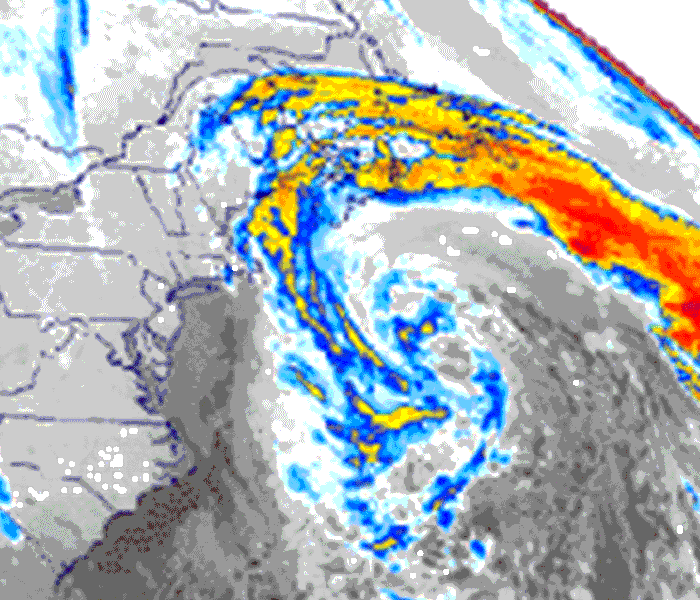 Radar picture of the storm.
Radar picture of the storm.
June 16, 2000 — The conditions were "perfect" for a monstrous storm, a meteorological time bomb that would explode in the northern Atlantic Ocean creating waves ten stories high and imperiling the New England fleet. This was the assessment of Bob Case, a NOAA National Weather Service meteorologist at the Boston, Mass. forecast office, who, with his weather service colleagues in late October 1991, began warning the public of a storm that would take on epic proportions.
"It was an unprecedented set of circumstances," the now-retired weatherman said. "A strong disturbance associated with a cold front moved along the U.S.-Canadian border on October 27 and passed through New England pretty much without incident. At the same time, a huge high pressure system was forecast to build over southeast Canada. When a low pressure system along the front moved into the Maritimes southeast of Nova Scotia, it began to intensify due to the cold dry air introduced from the north," according to Case.
"These circumstances alone, could have created a strong storm," Case said. "But then, like throwing gasoline on a fire, a dying hurricane Grace delivered immeasurable tropical energy to create the perfect storm."
With all of the contributing factors coming together at just the right time, in less than 24 hours, the storm exploded to epic proportions and then headed toward the coast," the meteorologist said, adding that if any of the components were out of sync, the epic storm would not have happened."
While NOAA's National Weather Service was warning of a storm of huge proportions, New England was enjoying unusually nice weather for late October—a beautiful late autumn day with plenty of sunshine and a northeast breeze, Case explained. "There was a certain amount of skepticism to our warnings of what turned out to be one of the North Atlantic's most powerful storms."
One of Case's colleagues at the Boston office was Walt Drag, a forecaster who shared his passion for meteorology. "Walt had a good handle on it early and the office put out warnings of a big storm," Case said. "This is an area well known for breeding tremendous storms and we could see it coming together on the satellite images and computer model information from the national center in Washington."
"You knew something bad was going to happen," said Ross Dickman another NWS meteorologist who worked the storm. "I remember seeing waves crashing over the seawall at Winthrop (Mass.) sending spray a hundred feet into the air. It was incredible."
An interesting aspect of the huge system was its retrograde motion not away from the New England Coast, but toward it. "It was difficult for us to convey the magnitude of the event to the public," Case said. "Not too many people could fathom–or believe–100-foot waves and hurricane force winds, 70-80 miles-per-hour plus, in a storm that was heading from east to west. "You were looking at a set of meteorological circumstances that come together maybe every 50-100 years."
Lightning rods can protect your house from lightning damage.
8/3/2017 (Permalink)
 Lightning rods on a dwelling
Lightning rods on a dwelling
Lightning rods (and the accompanying protection system) are designed to protect a house or building from a direct lightning strike and, in particular, a lightning-initiated fire. Note that lightning protection systems do not prevent lightning from striking the structure, but rather intercept a lightning strike, provide a conductive path for the harmful electrical discharge to follow (the appropriate UL-listed copper or aluminum cable), and disperse the energy safely into the ground (grounding network). It's very important that these components be properly connected (bonded) to minimize the chances for any sparks or side flashes. While lightning rods help protect a structure from a direct lightning strike, a complete lightning protection system is needed to help prevent harmful electrical surges and possible fires caused by lightning entering a structure via wires and pipes. A complete system also includes electrical surge protection devices for incoming power, data, and communication lines; and surge protection devices for vulnerable appliances. Lightning protection may also be needed for gas piping. Any lightning protection system should follow the national safety standards and requirements of the Lightning Protection Institute, National Fire Protection Association, and Underwriters Laboratories. If lightning causes a fire in your house, please call SERVPRO of Cambridge/Belmont (617) 864-7378 to assist you.
Mold in schools and commercial buildings
8/3/2017 (Permalink)
 Extensive mold on walls and ceiling
Extensive mold on walls and ceiling
Molds can be found almost anywhere; they can grow on virtually any organic substance, as long as moisture and oxygen are present. There are molds that can grow on wood, paper, carpet, foods, and insulation. When excessive moisture accumulates in buildings or on building materials, mold growth will often occur, particularly if the moisture problem remains undiscovered or unaddressed. It is impossible to eliminate all molds and mold spores in the indoor environment. However, mold growth can be controlled indoors by controlling moisture indoors.
Molds reproduce by making spores that usually cannot be seen without magnification. Mold spores waft through the indoor and outdoor air continually. When mold spores land on a damp spot indoors, they may begin growing and digesting whatever they are growing on in order to survive. Molds gradually destroy the things they grow on.
Many types of molds exist. All molds have the potential to cause health effects. Molds can produce allergens that can trigger allergic reactions or even asthma attacks in people allergic to mold. Others are known to produce potent toxins and/or irritants. Potential health concerns are an important reason to prevent mold growth and to remediate/clean up any existing indoor mold growth.
Since mold requires water to grow, it is important to prevent moisture problems in buildings. Moisture problems can have many causes, including uncontrolled humidity. Some moisture problems in buildings have been linked to changes in building construction practices during the 1970s, 80s and 90s. Some of these changes have resulted in buildings that are tightly sealed, but may lack adequate ventilation, potentially leading to moisture buildup. Building materials, such as drywall, may not allow moisture to escape easily. Moisture problems may include:
- Roof leaks
- Landscaping or gutters that direct water into or under the building
- Unvented combustion appliances
- Delayed maintenance or insufficient maintenance are also associated with moisture problems in schools and large buildings
Moisture problems in portable classrooms and other temporary structures have frequently been associated with mold problems. When mold growth occurs in buildings, adverse health problems may be reported by some building occupants, particularly those with allergies or respiratory problems. Remediators should avoid exposing themselves and others to mold-laden dusts as they conduct their cleanup activities. Caution should be used to prevent mold and mold spores from being dispersed throughout the air where they can be inhaled by building occupants.
If you are a facilities manager, maintenance supervisor or property manager and you have a mold issue; please call SERVPRO of Cambridge/Belmont (617) 864-7378
Fire safety and prevention tips
8/3/2017 (Permalink)
 A smoke alarm should be placed on every floor
A smoke alarm should be placed on every floor
BEFORE A FIRE
The following are things you can do to protect yourself, your family, and your property in the event of a
Fire:
SMOKE ALARMS AND CARBON MONOXIDE DETECTORS
- Install smoke alarms. Properly working smoke alarms decrease your chances of dying in a fire by half.
- Place smoke alarms on every level of your residence, including the basement.
- Install a working carbon monoxide detector in the common area of the bedrooms.
- Test and clean smoke alarms once a month and replace batteries at least once a year. Replace smoke alarms once every 10 years.
COOKING SAFETY
- Never leave cooking unattended.
- Always wear short or tight-fitting sleeves when you cook.
- Keep towels, pot holders and curtains away from flames
- Never use the range or oven to heat your home.
ESCAPING THE FIRE
- Have an escape plan. Review escape routes with your family.
- Make sure windows are not nailed or painted shut.
- Teach family members to stay low to the floor, where the air is safer, when escaping from a fire.
- In high-rise, never lock fire exits or doorways, halls or stairways. Never prop stairway or other fire doors open.
HEATING SOURCE
- Place space heaters at least three feet away from flammable/combustible materials.
- Use only the type of fuel designated for your space heater.
MATCHES/LIGHTERS AND SMOKING
- Keep matches/lighters away from children.
- Never smoke in bed or when drowsy or medicated.
- If you must smoke, do it responsibly.
ELECTRICAL WIRING
- Inspect extension cords for frayed or exposed wires or loose plugs
- Make sure outlets have cover plates and no exposed wiring.
- Make sure wiring does not run under rugs, over nails, or across high traffic areas.
- Do not overload extension cords or outlets.
ASK THE FIRE DEPARTMENT TO INSPECT YOUR HOME FOR FIRE SAFETY AND
PREVENTION
DURING A FIRE
If your clothes catch on fire, you should:
- Stop, drop, and roll until the fire is extinguished.
DO NOT PANIC
- Do not assume someone else already called the fire department get out of the house then call the Fire Department.
ESCAPE A FIRE
- Check closed doors with the back of your hand to feel for heat before you open them.
- If the door is hot do not open it. Find a second way out, such as a window. If you cannot escape through a window, hang a white sheet outside the window to alert firefighters to your presence.
- Stuff the cracks around the door with towels, rags, bedding or tape and cover vents to keep smoke out.
- If there is a phone in the room where you are trapped, call the fire department again and tell them exactly where you are.
- If the door is cold slowly open it and ensure that fire and/or smoke is not blocking your escape
Route. If your escape route is blocked, shut the door and use another escape route.
- If clear, leave immediately and close the door behind you. Be prepared to crawl.
AFTER A FIRE
- Once you are out of the building, STAY OUT! Do not go back inside for any reason.
- If you are with a burn victim or are a burn victim yourself call 911, cool and cover your burns until emergency units arrive.
- If you are a tenant contact the landlord.
- Tell the fire department if you know of anyone trapped in the building.
- Only enter when the fire department tells you it is safe to do so.
Puffbacks cause soot damage
8/3/2017 (Permalink)
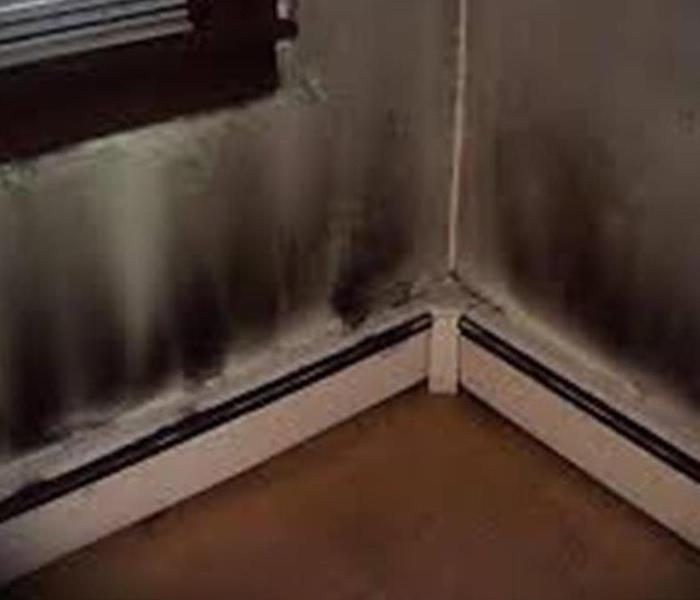 Heavy soot caused by a puffback
Heavy soot caused by a puffback
If your home has an oil burning furnace, there are several dangers to be aware of. Any furnace can experience a puff back, while puff backs are more common with oil systems, a furnace puff back can also occur with forced air, gas and hot water heating systems. A puff back in a furnace is a volatile explosion that occurs inside your furnace. The result of this explosion is fire and smoke being spewed out from your furnace. This fire, smoke and soot will damage your homes building materials and contents. This explosion will not be lethal, but can cause thousands of dollars in costly repairs and damage restoration, and can also cause health problems for you and your family. The explosions are caused by a buildup of vapor inside your furnace. This build up can occur with furnaces which have not been maintained properly. Parts sometimes need to be replaced, and bi yearly cleaning of your furnace and heating system will help prevent puff backs. Conducting a yearly exam of your heating system or having a professional check your heating system yearly will often times fully prevent a puff back from ever occurring.
If you have experience a puff back avoids doing the following: Try to clean or wash away soot residue yourself. This soot and smoke residue needs special cleaning methods, as it spreads easily. Soot stains can also set very quickly, making soot damage especially trick to clean if you should do it wrong. Soot is black carbon, and black carbon will stain extremely quickly when mixed with water and common household liquid cleaners. Should you attempt to remove the soot yourself and end up staining something with soot in your home, a professional cleaner may be required to remove the stain. Should you have soot damage, you should leave it to a professional to clean. SERVPRO professionals trained in soot damage have special cleaners and cleaning methods to use to remove your soot and soot damage. Use furniture or walk on carpeting affected by the fire or puff back. Do not use furniture that has been exposed to heat, soot or smoke. You can cause further damage to your furniture, until it is professionally cleaned and restored. Do not turn on any electronics such as computer, stereo's, and TV's until you have had them checked for soot damaged. Computers can be especially vulnerable and ruined as soon as they are turned on if soot has made its way inside them. This soot also contains a corrosive element, which will damage home's building materials, and contents such as your electronics, furniture, clothing and more. Not only can this soot damage your property, it can also affect the health of your loved ones by causing respiratory problems. This soot will often have a very terrible odor that will swiftly travel throughout the home, and will need to be cleaned and deodorized in order to remove the offensive odor from your home. If the soot and smoke travels through your home's duct work, it will need to be cleaned and deodorized as well. You also need to have a professional check your furnace following a puff back, to avoid further incidents. You may have a faulty part or an oil burner that may need replacing. If the problem is ignored, it can cause repeated and long lasting effects to your home. Should you have experienced a furnace puff back, you should SERVPRO of Cambridge/Belmont (617) 864-7378 to help with the clean up.
Three retail businesses affected by water damage.
7/31/2017 (Permalink)
 Water extraction from retail business
Water extraction from retail business
On late June of this year a pipe broke in the middle of the night causing water to pour into the 2 retail businesses below. At 6:30 Am the commercial property owner was notified and he immediately called SERVPRO of Cambridge/Belmont SERVPRO’s crew arrived and immediately began to extract the water. The business owner was hoping to be open for business at his usual 9:30 AM opening time. Additional crews were dispatched to take care of the 2 other business affected. The crews worked feverishly to ensure that all 3 businesses could open at their usual time. The SERVPRO of Cambridge/Belmont project manager using a moisture detector and infrared camera created a moisture map to determine all affected floors, walls and ceilings. The project managed related this information to the crews so that they could strategically place the necessary drying equipment. The equipment was set up and the businesses were open at their usual time. If your home or business has undergone water damage, please call SERVPRO of Cambridge/Belmont (617) 864-7378 to assist you.
Flooded basements during heavy rain storms
7/24/2017 (Permalink)
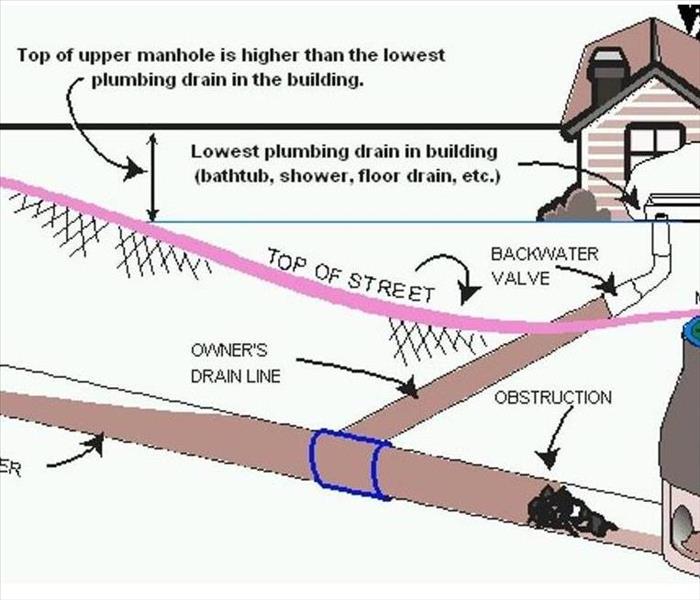 Diagram of Public sewer system
Diagram of Public sewer system
The heavy rains that occurred in the Cambridge/Belmont area caused not only flooding but also many sewage back ups. The town & cities sewage system gets overwhelmed causing the sewage to flow into basements through toilets and sinks. When a storm drain suffers a partial or complete blockage, rain water gets trapped in the pipes and must go somewhere. Unfortunately, the only exit point is the pipe servicing your home that connects to the sewer line. With nowhere left to go it goes up through your pipe, pushing whatever refuse and filth it’s carrying into your basement and other areas of your home. Contact your local plumber to install a backwater valve to prevent this from happening to you! If your basement gets flooded or has sewage issues, please call SERVPRO of Cambridge/Belmont (617) 864-7378 to assist you. Did you know that SERVPRO of Cambridge/Belmont also helps Commercial and Industrial customers?
How to prevent unwanted pests from your home without use of harmful chemicals
7/20/2017 (Permalink)
 Household ants in the Kitchen
Household ants in the Kitchen
Do you have a pest infestation? When insect and rodents invade your home it's time to fight back. Living in the country I've had to deal with my fair share of pests. I used to go straight for store bought pesticides. While they worked great at getting the job done, I absolutely hated the smell of them and I wasn't too crazy about using harmful chemicals in areas where my kids and pets often played. According to DIY Home Sweet Home, these are great ways to safely eliminate unwanted pests
ANTS
Repel: Clean with white vinegar. Not only does vinegar make a great all-purpose cleaner but ants can't stand the smell and it will mask their scent trails so they will lose their direction. Follow the ants to locate the food source (usually something sticky that has been spilled on the counter or floor). Removing the source and cleaning the area with a solution of one part vinegar and one part water a couple times a day will usually eliminate the ants.
Exterminate: If you still find ants try this simple bait recipe. Mix one part powdered sugar to one part baking soda*. Place this mixture in small shallow dishes (I found that Gatorade or juice lids work perfect for this) and leave around the home in places where you often find ants. *Please note large amounts of baking soda can be harmful to pets. For this recipe you should only be using a small amount but to be on the safe side I would place the mixture in areas where your pets can't get to it.
COCKROACHES
Repel: Place mint & bay leaves around the home. Cockroaches hate the smell and will stay away. I like to place the leaves in small mesh or muslin bags and place in dark areas such as closets and cabinets where cockroaches like to hang out. Exterminate: The same recipe we used above for ants will also kill cockroaches. Place equal parts of powdered sugar and baking soda into shallow containers and leave around the home where you notice cockroaches.
MOSQUITOES
Repel: Grow marigolds, basil, & mint. Mosquitoes are repelled by the strong scent of these plants. Place live plants around your home or place dry mint leaves in muslin bags to keep in your home. Also cleaning with mint or citrus scented cleaner will do wonders at keeping mosquitoes away. Exterminate: Make a mosquito trap. Mix 1/4 cup brown sugar and 1 cup hot water. Cut the top off of a bottle. In the bottom half of the bottle add the cooled down brown sugar mixture and 1 gram of yeast. Place the top half of the bottle upside-down inside the bottle. Wrap a sheet of black construction paper around the bottle and tape it in place. Place the bottle in at area of your home where you find the most mosquitoes. Placing these bottles in your front and back yard a few feet away from your home will also attract the mosquitoes and trap them before they have a chance to enter the home. Mosquito’s larvae live in water. Removing any standing water around your home can greatly reduce the amount of mosquitoes in and around your home.
MICE
Repel: Mice hate peppermint. Place a few drops of peppermint essential oil and a drop of dish soap in a spray bottle. Spray this around your home especially any entry points or holes that mice use to come into the home. Exterminate: The best way I've found to kill mice is a simple mouse trap. I've tried other traps and even tried poison with little or no luck. Place a small amount of peanut butter or cheese on the traps before you set them and leave them in several areas around your home where mice have been seen making sure they are out of reach of children and pets. Be sure to check the traps often. You don't want a dead mouse stinking up your home. If you would like to catch mice without killing them try out this handmade 5 gallon bucket trap and leave out the water. SPIDERS
Repel: Peppermint repels spiders. The same recipe used above to repel mice also repels spiders. You can replace the water with white vinegar and it makes a great cleaner. Use this solution to wipe down counters, appliances and even the floors. Your home will be spider free in no time. Exterminate: Fill a spray bottle with one part white vinegar and one part water. Spray this directly on spiders. The acid in the vinegar will kill spiders on contact. FLIES
Repel: Lemons & cloves. Cut a lemon in half and stick several cloves in the pulp. Leave the lemon halves on your kitchen table or wherever flies gather. The scent of the lemon and cloves will drive the flies away. Exterminate: Cut a plastic bottle in half. In the bottom half pour in a small amount of wine and fruit scraps. (I usually use strawberries or some kind of melon.) Place the top half of the bottle upside down inside the bottom half. Place the trap in your kitchen and replace every couple days until flies are gone. Another option would be to use rotten meat in place of fruit and place the trap outside, away from the home. The rotten meat smell will attract the flies and keep them away from your house.
OTHER
On top of following these methods of controlling insects you should also find a cleaning schedule that works for you and stick to it. Insects and rodents tend to like messy/dirty homes a lot more than they like clean home. It seems that every time I find pests in my home it's always after a busy week or after I haven't been feeling well. That's usually when I tend to slack on my cleaning schedule and it doesn't take long for the bugs to set up camp and move on in. Sticking to a cleaning schedule won't guarantee that you will not find bugs in your home but it does help a lot to minimize them. Another great way to keep bugs out of your home is to make sure they can't get in the first place. Go over your entire house and look for areas where insects may be entering the home. Replace any caulking around windows and doors, check weather stripping to make sure it's in good shape, and fix or replace broken window screens. After the pests are removed or exterminated and you need professional cleaning, please call SERVPRO of Cambridge/Belmont (617) 864-7378 to assist you.
Did you know that SERVPRO of Cambridge/Belmont also does Industrial and commercial work?
Wednesday night's storm causes flooding in Cambridge, MA
7/14/2017 (Permalink)
 Storm caused flooding
Storm caused flooding
Wednesday night’s storm caused street flooding, flooded basements and sewage to be backed up into basements. Local restoration companies like SERVPRO of Cambridge/Belmont were busy helping homeowners and businesses with storm related issues. Storm related events that cause flooding or sewage back up problems are not typically covered by insurance. Specialty policies or endorsements must be in place prior to a potential claim.
Precautions to prevent future flooding or damage
Certain preventive measures can be taken to prevent a City sewer from backing up into your basement during or after a heavy rain. Some are low cost, while others require corrective plumbing work.
- Make sure sewer trap plugs are fit tightly on the house trap. Replace old ill-fitting sewer trap plugs with fit-all plugs.
- If the house sewer line is solely for sanitary use (not for any rain water flow) a back-water check valve can be installed in front (the street side) of the house trap.
- If the house sewer in question is also for storm water (rain water) flow and there are plumbing fixtures in the basement (such as a toilet, shower, or a sink) backwater check valves can be installed for individual plumbing fixtures.
What is a backwater check valve?
A backwater check valve is a self-operating valve that only allows for water flow in one direction. If properly maintained it will prevent water from flowing in the opposite direction thereby preventing a sewer backup from a public sewer system.
A backwater check valve should be cleaned every 6 months to a year, a task easily performed by a non-professional by removing a few screws. No special tools or skills are required for maintenance on a backwater check valve.
This relatively low-cost installation can prevent heavy rain from causing damage to your house ever again. If your basement gets flooded or has sewage back up, please call SERVPRO of Cambridge/Belmont (617) 864-7378 to assist you.
Sick Building Syndrome
7/12/2017 (Permalink)
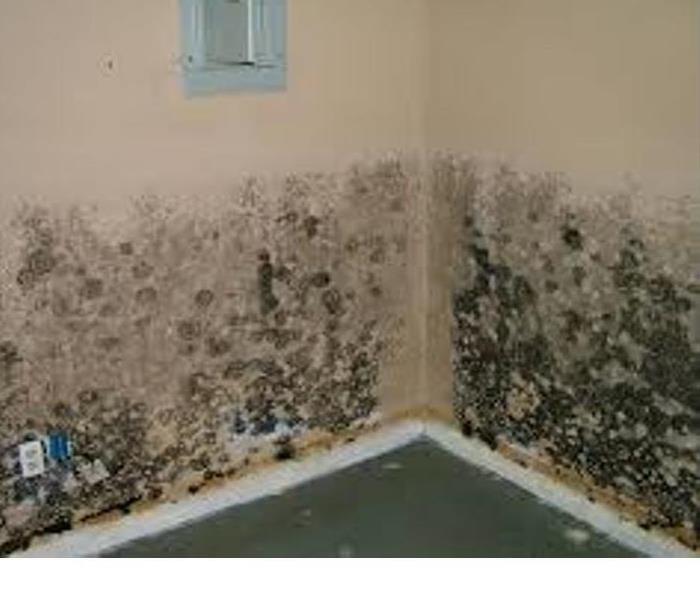 Mold growth inside a commercial building
Mold growth inside a commercial building
Toxins from mold can aerosolize directly into the air, which may help explain one cause of sick building syndrome. Mold growing in buildings can make people sick, especially people who are allergic to various fungi. It’s also known that various molds and fungi produce mycotoxins — chemicals that can sicken and even kill people and animals. What’s not been entirely clear is how mold growing in and on walls or elsewhere in buildings might make people sick.
An Indoor environmental Professional (IEP) tested three common types of fungi that can grow inside buildings and found that their mycotoxins could and did disperse into the air until normal conditions. “These toxins can subsequently be aerosolized, at least partly, from moldy material,” was written in a report in the journal Applied and Environmental Microbiology, published by the American Society for Microbiology.
“This transfer to air requires air velocities that can be encountered in ‘real life conditions’ in buildings. The three species they tested were Penicillium brevicompactum, Aspergillus versicolor and Stachybotrys chartarum, all of which grew on wallpaper in their lab. They all also produce mycotoxins.
It is estimated that, in Northern Europe and North America, 20 percent to 40 percent of buildings display macroscopically visible (visible to the eye) fungal growth. “For instance, Aspergillus versicolor, a potent producer of sterigmatocystin (STG), is one of the most frequent fungal contaminant of indoor environments that can be found together on building materials, in dust or in the air samples.”
Bottom of Form
The IEP’s team first grew the three fungi on ordinary wallpaper, and then tested to see if the toxins they produce could get into the air without some sort of interference, such as tearing down walls. "We demonstrated that mycotoxins could be transferred from a moldy material to air, under conditions that may be encountered in buildings," the IEP said in a statement. The pieces were as small as or smaller than spores and “could be easily inhaled by occupants and deeply penetrate into (the) respiratory tract,” the IEP wrote. “It seems important to take these data in consideration for risk assessment related to fungal contamination of indoor environment and the possible toxicity associated to inhalation of these toxins.”
If you suspect that you have mold in your building, call an IEP. After you have the results back from an IEP, call SERVPRO of Cambridge/Belmont (617) 864-7378 to assist you with the mold remediation.
Tips for getting your home ready to sell
7/6/2017 (Permalink)
 Too much clutter and personal items could be a hindrance during a house sale
Too much clutter and personal items could be a hindrance during a house sale
When you’re selling your home it’s important to make your home as appealing to buyers as possible. This means de-cluttering and organizing specific areas of your home to draw them to the buyer’s attention. Today I’m sharing four important tips that are sure to help you get top dollar for your home.
Pack early!
I recommend starting to pack as early as possible. This will help clear out excess clutter and the things buyers don’t need to see. You don’t always using everything in your house, and there are definitely things you can live without for a period of time, to make your home more appealing to buyers.
Less is more. The less buyers see of your stuff, the more appealing your home will be, and your house will sell quicker.
Remember when you are packing to throw away, or donate, things that you haven’t used in awhile. There is no point in moving something you never use! If you find something and didn’t remember that you owned it you should probably just get rid of it. Moving is the perfect time to de-clutter your home!
Feature your best assets
When buyers walk through your home, the things they are most interested in are the kitchen and bathrooms. Spend a little bit of time and money to make these spaces in your home, the cleanest they could possibly be.
De-clutter the kitchen and bathrooms, so there’s nothing on the counters, except for maybe some fresh flowers. And don’t forget the cupboards and drawers! Buyers want to look to see how much space the cupboards have so de-clutter these areas and make sure they are nicely organized.
I highly recommend spending a little bit of money on each of these spaces and have the entire house be professionally cleaned, please call SERVPRO of Cambridge/Belmont (617) 864-7378.
Update mirrors in the bathroom, paint the kitchen and bathrooms with a fresh coat of neutral paint, update the light fixtures, the cupboard knobs & pulls, etc. Anything you update in the space will draw the buyer’s attention and you’re guaranteed to make your money back when you sell your home
Neutral colors
Since we’re talking about updating, another thing that is sure to draw buyer’s attention is a neutral color scheme. You might like your bright blue bedroom and the accent wall in your living room, but the buyers won’t. Spend a little bit of time and money to paint over your bright and/or dark colors, with a neutral gray so the buyers can walk into your home and visualize their things in the space, and not be distracted by your color schemes.
Storage space is king
Buyers want to know your house has all the space it needs to store their stuff. De-clutter and spend some time organizing all your closets so buyers know your home has what they need! If a buyer looks in a closet and see stuff crammed in there, they will automatically assume there isn’t enough storage in the house, which is a huge downfall for you! Your closets are definitely one of the places it’s worth spending a little bit of time money to make them look as good as possible.
Once all the most important places of your home are cleaned up by a professional cleaner, please call SERVPRO of Cambridge/Belmont (617) 864-7378 for your cleaning, de-cluttered, and freshened up, your home is ready to list! If you follow these tried and true tips your home is sure to sell and you’ll be on your way to your new home. Congratulations and good luck!
Case Study: Mold growing on basement walls
7/5/2017 (Permalink)
 Mold growth that could have been prevented
Mold growth that could have been prevented
The Millers were away for a week and when they came home they noticed a smell coming from the basement. A pipe had developed a leak and was dripping water onto the carpet in their finished basement. The Millers called SERVPRO of Cambridge/Belmont to assist them with the water damage. The crew arrived and checked the basement walls and floor for excessive moisture content. The SERVPRO crew determined that the water had wicked up the walls causing the positive readings. SERVPRO of Cambridge’s technician recommended to cut the walls and remove the insulation behind the walls so that the basement could be dried properly. The customer did not follow thew technicians advice and wanted only to have the pad removed and the carpet dried. A few weeks later, the Millers discovered black spots growing on the walls. They called SERVPRO of Cambridge/Belmont again to assess the situation. SERVPRO determined that mold had started growing and recommended that the walls be cur 6”inches past the mold growth, remove the insulation, heap-vacuum and spray an anti-microbial behind those walls. If you have water damage call SERVPRO of Cambridge/Belmont (617) 864-7378 to assist you and please follow the recommendations of the crew
Common plumbing problems & how to fix them
6/19/2017 (Permalink)
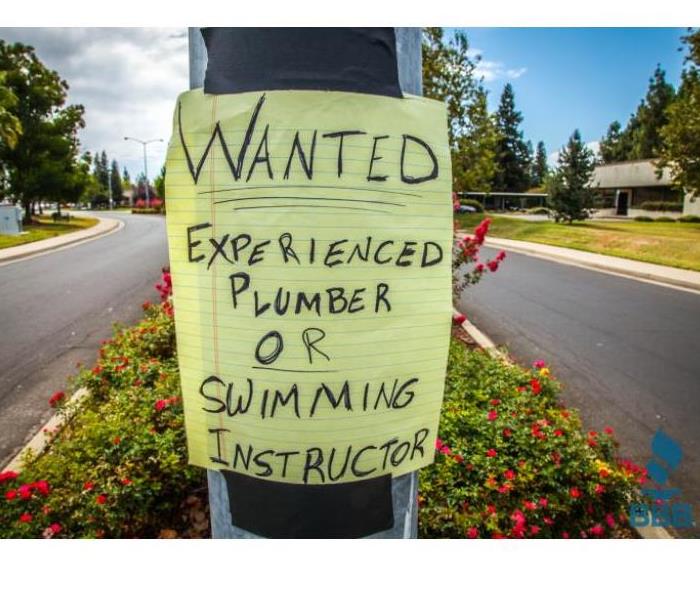 Wanted, experienced plumber
Wanted, experienced plumber
You depend on your plumbing each and every day, from the hot water in your shower to the water boiling on your stove. As such, it’s important to maintain your plumbing regularly to make sure there aren’t any major issues such as leaks or sewage backups. But plumbing problems can still occur with regular maintenance, so it’s good to be aware of common plumbing issues and what you can do to solve them or minimize damage to your home.
Low Water Pressure
Proper water pressure is necessary for washing your hands, cleaning dishes, and taking a shower. If you’ve noticed a significant drop in your home’s water pressure, you probably have a clogged pipe. It’s also possible that you need to fully open your shutoff valve. If you’re only having water pressure issues with one faucet, the solution may be as simple as cleaning the aerator or removing a nearby clog.
Dripping Faucet
Depending on the severity of the drip, a dripping faucet can raise your water bill and waste a significant amount of water—not to mention how annoying it can be. Luckily, fixing a dripping faucet is usually as simple as replacing seats and springs or a washer in the faucet.
Running Toilet
It happens so frequently: minutes after flushing your toilet, you can still hear the toilet running as if the bowl is filling with water. This is an incredibly annoying problem to have, but usually, an easy one to fix. Remove the lid from your toilet tank and make sure that your tank ball, flapper valve, and flush valve are working properly—if any of them are sticking or not functioning right, they’re easy to replace.
Clogged Drain
Clogged or slow drains are probably the most common plumbing problem. Plumbing pipes are designed to allow water and waste to flow through freely, but over time, built up hair, soap scum and other debris can form a clog in your drain that prevents water from passing. This is almost sure to happen in any home given enough time. You can use vinegar and baking soda to break up clogs in your sink, or you can buy a drain auger and remove the clog manually.
Sometimes the clog may be deeper in your pipes or too severe to easily remove, look into professional plumbing services; they have the equipment and expertise to clear clogged drains without causing damage to your plumbing. If you have sewage damage as a result of a clogged drain or other plumbing issues, please call SERVPRO of Cambridge/Belmont (617) 864-7378
Leaking Pipes
Leaks aren’t just an annoyance; they can significantly increase your water bill and quickly cause damage to your home. If you have a leaking pipe that’s beyond a slow drip, shut your water off as soon as possible. If there is any chance of mold or structural damage to your home, call SERVPRO of Cambridge/Belmont (617) 864-7378 to avoid spending a fortune on repairs. Leaking pipes generally need to be replaced, but you can use marine tape or epoxy to cover small leaks temporarily—just remember to shut the water off first.
No Hot Water
Have you ever rolled out of bed and into the shower only to find there’s no hot water? It’s not a good experience. Chances are you’ve got something wrong with your water heater, most probably an electrical problem such as a thermostat or element. If you’re not comfortable troubleshooting your water heater, it’s a good idea to get help from a trained, knowledgeable professional.
Plumbing truly is an essential part of our everyday lives. We can’t all be professional plumbers, but with a little bit of research and hard work, you can stay cool, calm and collected in the face of a plumbing emergency
If you have water damage as a result of any of these or other plumbing issues, please call SERVPRO of Cambridge/Belmont (617) 864-7378
Fast moving storm causes damage in Cambridge
6/16/2017 (Permalink)
 Cleaning up the offices
Cleaning up the offices
The rain came quickly and only lasted a few minutes but it created significant damage to the Cambridge/Somerville area. Paula, the office manager, arrived in her office Wednesday morning and, her feet squished from the wet carpet. The rain was so overwhelming that the roof drain overflowed causing water to pour down into the office. She made a call to SERVPRO of Cambridge/Belmont and explained that she needed her office to be operational as it was their busy season. The SERVPRO technicians arrived within the hour. Melvin, the crew chief, tested walls and ceilings for excessive moisture, extracted the water from the carpets and left equipment to dry the wet walls ceiling and carpet. A few days later Melvin came back, tested the areas with a moisture and he found all areas to be dry. The crew shampooed the carpet and everything was back to normal in the office. If you have water or fire damage in your business, please call SERVPRO of Cambridge/Belmont (617) 864-7378
Microburst downs trees in Cambridge, MA
6/14/2017 (Permalink)
 Tree pierces kitchen ceiling
Tree pierces kitchen ceiling
Yesterday’s microburst that occurred in the city of Cambridge resulted in about 50 limbs or branches down. Forestry crews are responding. There are also several wires down and loss of power in certain locations. The City Electrician, Eversource and SERVPRO of Cambridge/Belmont are responding. The above picture shows the damage that one of the downed trees caused. SERVPRO Of Cambridge/Belmont responded to a frantic call from the homeowner informing us that a tree came right through the kitchen ceiling. The SERVPRO technicians were at the Cambridge home in less than an hour. They cleaned up the debris and installed drying equipment.
To report a fallen tree or limb, call 617-349-3300.
To report a down wired, call 911 or 617-349-3300
To report loss of power, please call Eversourse at 1-800-592-2000
If you have had roof or water damage due to the Microburst please call SERVPRO of Cambridge/Belmont (617) 864-7378
A microburst is a small downdraft that moves in a way opposite to a tornado. Microbursts are found in strong thunderstorms. There are two types of microbursts within a thunderstorm: wet microbursts and dry microbursts. They go through three stages in their cycle, the downburst, outburst, and cushion stages. A microburst often has high winds that can knock over fully grown trees. They usually last from a couple of seconds to several minutes.
Case Study - Mold growth caused by a hidden leaky pipe
6/13/2017 (Permalink)
 Mold growth on Living Room Wall
Mold growth on Living Room Wall
A homeowner in Cambridge, MA moved a cabinet in their living room and saw black spots behind the cabinet and also growing on the cabinet. The homeowner called SERVPRO of Cambridge/Belmont to assess the situation. The SERVPRO technicians using a moisture meter discovered the wall and ceiling were both wet. The technicians went upstairs to the room above the living room to determine the source of the water. The room above was a bathroom, the technicians using the moisture meter, discovered the bathroom vanity was wet. SERVPRO of Cambridge/Belmont’s technicians removed the wall and found an old leaky pipe that had probably been dripping for a long period of time causing the mold growth in the living room.
Mildew and molds are fungi - simple microscopic organisms that thrive anywhere there is a moist environment. Molds are a necessary part of the environment; without them, leaves would not decay and aspects of soil enrichment could not take place. It is their ability to destroy organic materials, however, that makes mold a problem for people - in our homes and in our bodies.
If you think you have a mold issue, call SERVPRO of Cambridge/Belmont (617) 864-74378 to assist you
Professional Cleaning
6/12/2017 (Permalink)
 Professional Cleaners make a difference!
Professional Cleaners make a difference!
Professional cleaners
A house or an office is a place where a person spends most of his time in a day and these two places can leave a very big impression on other people who visit. The look of a house allows people to judge the taste and character of a house owner and by the look of an office, clients and customers will judge the owner and the whole staff whether they are efficient and or not. A dirty office or professional place can leave the impression that the owner and staff of the place are lazy and do not give importance to their work and clients. When it comes to deep cleaning it is just not about the cleaning of floors or your desk, it also includes the cleaning of windows, furniture, carpets and every small area of the place. In those conditions a person needs professional cleaner to help him with the cleaning. Please call SERVPRO of Cambridge/Belmont (617) 864-7378 to assist you with your professional cleaning needs.
Water damage from hidden pipe leaks
6/8/2017 (Permalink)
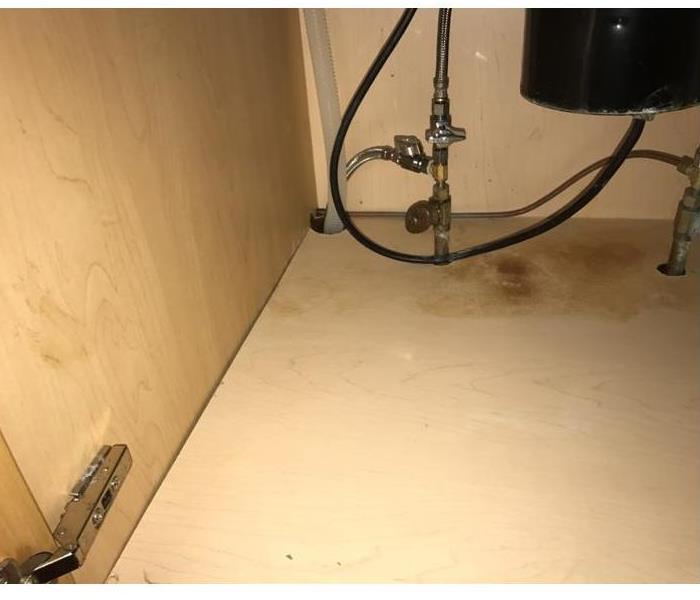 Hidden Pipe leak under kitchen sink.
Hidden Pipe leak under kitchen sink.
Whether it's behind the washer, above the ceiling or under the sink, a little drip can lead to big trouble. Water damage happens quickly and can be expensive to fix. Ignore a leak, and you not only could you have a mighty mess on your hands, but your home insurance probably won't bail you out. "What's really important to know for leaks is when did the insured notice it and take action," Says Michael Pridham from SERVPRO of Cambridge/Belmont
"People now build houses to be airtight," says Michael Pridham, owner of SERVPRO of Cambridge/Belmont, a property-damage restoration service. "Houses are wrapped in plastic like Saran Wrap. That's good for energy conservation, but if water gets on the wrong side of that plastic, then mold will follow, as certainly as night follows day." Pridham observes that damage often occurs after people get security systems installed. Holes are drilled into airtight window frames for wires to run through them, but they aren't properly caulked and sealed, allowing water to slowly seep in over time. "You notice that maybe the wall below the window is looking funny, and by that time the framing behind it is rotted out," he says. If the homeowner reports the problem right away, it would likely be covered by home insurance.
Today's houses also have more bathrooms, and the washing machine is often located next to the master bedroom on an upper floor for convenience, Pridham notes. "That means you've got more pipes, and if the washing machine leaks, it can affect the third floor, the second floor, the first floor and even down to the basement," he says. For water damage from leaky appliances or pipes, the damage must be "sudden and accidental" in order to be covered by insurance - such as a pipe that bursts while you're washing clothes.
But what about a slow leak you can't see? Say, for instance, a pipe behind a wall leaks, and you don't notice it until water starts seeping through the wall. Are you covered? Most likely the answer is yes, as long as you take action as soon as there is evidence of the leak, Pridham says. "Nobody expects you to tear out your drywall now and again to check the pipes. Call the professionals at SERVPRO of Cambridge/Belmont (617) 864-7378. They will send out a crew to test the walls using moisture detectors and an infrared camera.
Insurance companies understand it's impossible to know you have a hidden leak until the damage becomes apparent. The same goes for leaks behind and under appliances, or above a ceiling. If you can't see the leak, you can still make an insurance claim as long as you report it when it becomes apparent. Don't expect much sympathy if you ignore the wet spot in your ceiling, only to report it when the problem gets worse. The insurance adjuster probably will be able to tell if the damage is fresh.
"If the insured had a leak in the roof and had a pot under it for six months, then that damage is not covered," Pridham of SERVPRO of Cambridge/Belmont says. "Insurance Professionals are pretty good at seeing whether a wet spot has been there for a while. Sometimes they have engineers go out to look." When it comes to insurance coverage, everything depends on the language in your policy. Although most policies cover damage from leaks as long as you responded quickly, language among policies differs. Keep in mind, though, that while home insurance may cover the water damage to the ceiling, floor, walls or furniture, it won't pay for replacing the worn-out pipe or the leaky roof (unless the roof was damaged by a covered peril, such as hail or a fallen tree).
Sergio Rodriguez, Production Manager for SERVPRO of Cambridge/Belmont suggests making sure all holes are properly caulked and sealed and keeping eaves and downspouts clean. He recommends periodically checking behind appliances and under sinks to make sure everything is dry. That means actually moving out the stuff that's been sitting under the kitchen sink for the last several years. Be careful when pulling out the refrigerator to check for a leak in the ice maker water line. Avoid running over the water line or crimping a copper line. Rodriguez also suggests replacing rubber supply hoses to appliances with braided hoses, which are made of rubber surrounded by wire mesh. Braided hoses can still spring a leak, but they won't burst.
If you think you have a leak, call the professionals at SERVPRO of Cambridge/Belmont (617) 864-7378
Case Study- Mold Growth due to improper water damage remediation
6/8/2017 (Permalink)
 Wet Pad that contributed to mold growth
Wet Pad that contributed to mold growth
A homeowner in Cambridge, MA had her hot water heater burst. The water ran for several hours before she realized that it burst. The water soaked her finished basement. She called her plumber to replace the hot water heater. The plumber recommended that she hire a remediation company to extract the water & dry out the basement. He gave her the name of a carpet cleaning company to help her, not a restoration professional like SERVPRO of Cambridge/Belmont.
The carpet company extracted the water and left some drying equipment and left. A few days later they picked up the equipment and left their bill. A few weeks later she noticed a strong musty odor and black spots growing on the bottom of the walls in the basement. This time a friend recommended that she call SERVPRO of Cambridge/Belmont at (617) 864-7378.
A crew was dispatched to the house, assessed the basement using moisture detectors and an infrared camera and informed the homeowner that the black spots are most likely mold and the walls were still wet from the water damage. He also told her that the smell was coming from the wet pad under the carpet. Melvin Torres, the crew chief on site educated the homeowner on the proper way to remediate a water damage. He explained the proper steps that should have taken place are:
- Assess the entire basement to find the extent of the water intrusion.
- Using a moisture detector or infrared camera , if necessary, determine if the water had wicked up the walls.
- If the walls were wet, determine the least destructive way of drying the walls (remove baseboard & drill holes or if there is insulation behind the walls cut walls 1’ or 2’ up & remove the insulation up to the area cut)
- Move and block furniture and contents
- Remove the pad under the carpet (the pad is non salvageable after a water damage.)
- Spray an antimicrobial under the pad
- Determine if the carpet is salvageable. If salvageable, lift carpet and place air movers (fans) under the corners of the carpet
- Position 1 or 2 dehumidifiers in the area depending on the size of room and area affected
- Monitor the progress of the drying using moisture detectors and a hygrometer
Avoid having a mold issue, if you have a water damage; call the professionals at SERVPRO of Cambridge/Belmont (617) 864-7378.
How to get rid of mice
6/6/2017 (Permalink)
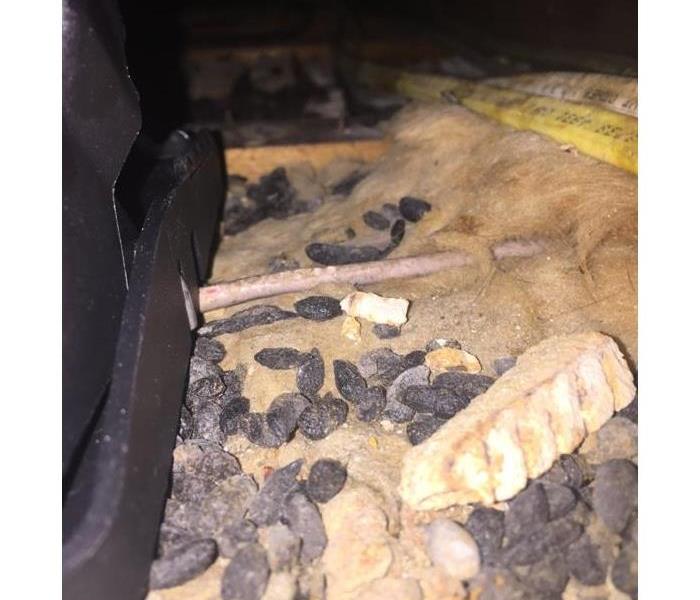 Mice Droppings in your home
Mice Droppings in your home
Mice can be cute and some people – especially children – like to keep one or two as pets. But when mice invade a home uninvited, they are anything but cute!
There’s good reason to evict them as soon as possible. Mice can be dangerous to your health, as they can carry several diseases and transmit them via their urine and feces. Well, not to mention the extensive damage they can do with their sharp teeth.
Being rapid reproducers, their population can grow quickly and soon you will find the tiny animals running here, there and everywhere.
To control a mice infestation, some prefer to just hand the problem off to a pest control professional. But that can be an expensive affair that doesn’t fit into everyone’s budget. Plus, they may use chemical-based products that could introduce toxins into your home.
To show the exit door to these disease-carrying rodents, there are many simple and easy tips that you can try on your own.
Here are the top 10 ways to get rid of mice.
- Deprive Them of Food
Mice enter your home in search of food, and they will stay around as long as food is available. Hence, depriving them of food is one logical way to deal with the uninvited guests.
- Seal All Openings
Another effective way to control the growth of rodents in your house is by sealing off all the small openings and cracks in your home. This way they will not be able to enter your house.
- Relocate them using Humane Mouse Traps
Humane or live mouse traps are one of the best ways to catch roaming mice in your premises. These traps catch and hold live mice, and they are not as inhumane as snap traps and glue traps that kill the mice.
4. Push Them Away with Peppermint Oil
You can use peppermint oil to get rid of mice. Mice are very sensitive to smells, and they find the smell of peppermint oil very overwhelming and offensive.
5. Cayenne Pepper
Cayenne pepper works as a great non-poisonous solution to deter pests like mice, squirrels, ants and other bugs. This is because most pests do not like its strong smell.
6. Use Kitty Litter
Mice fear cats because they are their natural predators. The smell of kitty litter is enough to drive the mice away.
7. Get a Pet
If you have a cat, then your work is half done. Cats or other predatory pets can help chase rodents out of your house. In fact, terrier dog breeds are often trained for pest control.
8. Discourage Them with Eucalyptus
Eucalyptus also works as an effective natural mice repellent.
9. Get an Ultrasonic Repellent Machine
Ultrasonic repellent machines are also an effective method to get rid of rodents. These machines send out small beeps that not only annoy but also scare off mice. These beeps cannot be heard by humans.
10. Keep a Clean House
Keeping your house clean will not make it mouse-proof, but a messy house will attract them and permit them to thrive in greater numbers. Hence, a clean house is a small but important step toward your effort to show the rodents the door.
After the mice have been controlled, please call SERVPRO of Cambridge/Belmont (617) 864-7378 to assist you with the clean up. Our specially trained technicians will clean up the hazardous mice droppings.
Leaky Dishwasher
6/2/2017 (Permalink)
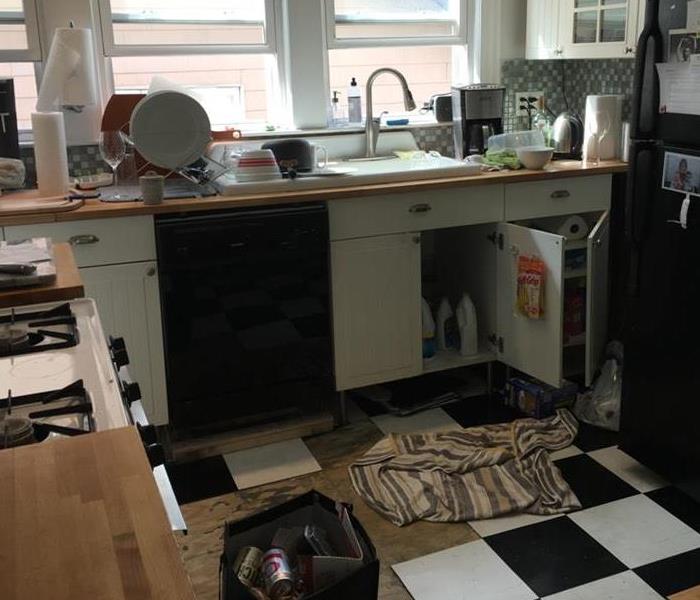 Water damage from a malfunctioning Dishwasher
Water damage from a malfunctioning Dishwasher
Has your dishwasher stopped draining? Did you accidentally break the sliding rack? Have the buttons just stopped working? You need a repair pro. We asked Michael Pridham of SERVPRO of Cambridge/Belmont and Craig Kimble of We Can Fix That to share their best tips for when to repair an ailing dishwasher, when to replace it and what to do if it begins to leak water.
When to Fix: Common Dishwasher Issues
Typical dishwasher problems involve broken mechanical parts, says Craig of We Can Fix That. Think a broken soap dispenser, dislodged sliding rack wheel, or broken sprayer arm.
When a dishwasher won’t drain, there’s usually something in the drain process that shouldn’t be there like lemon seeds, glass, plastic wrap or even bobby pins. “With a high-end dishwasher, you’ll get an OE overflow code. Often I can disconnect the machine, lean it forward, and drain it for a fix without having to replace any of the control boards,” says Craig.
In general, if you have to fix an issue but the unit is relatively new, it makes sense to fix if repair costs are under half the cost to replace the appliance. A good unit can last you 15-20 years if it’s well-maintained.
When to Replace: Do the Math
Once you start to replace the electronic boards, it gets expensive. On high-end dishwashers (KitchenAid, Samsung, Bosch) if the user control panel and the power control unit go out at the same time, it’s not worth it to repair it. “The parts alone will exceed $600 wholesale,” says Craig.
If a dishwasher is more than 7-10 years old and you’re paying more than half of the original cost in repairs, you should consider buying a new one.
Replacing a door latch can get pricey, says Deondre of Lee Appliance Repair and Installation. “This can run $200-250 for parts and labor,” he says, “And you can easily avoid this repair. If you want to add in dishes, don’t just pull it open. Hit pause and let the automatic lock release. It will save you money!”
Leaking is a big problem around the door or underneath where the motor or pumps assembly are, says Deondre. Costs vary depending on how old the unit is or if the control board is gone. For standard dishwashers repairs range from $100-200. For bigger projects or work on higher-end dishwashers (with more expensive parts) average costs might be $380-450.
How to Avoid Issues
Don’t overload it, says Deondre of Lee Appliance Repair and Installation, and when you first have a problem, look at your model number and do some online research to learn about your machine. There might be an easy DIY fix for your symptoms.
Don’t run a garbage disposal at the same time the dishwasher is running, urges Michael of SERVPRO of Cambridge/Belmont. The two share the same plumbing, so if they’re going at the same time, you are more apt to kick debris into the dishwasher discharge line and clog it.
A little preventative maintenance goes a long way. Have a pro come every two years, clean out your lines and any calcium deposits, and get you running clean again. If the dishwasher does leak, call the preferred professional, SERVPRO of Cambridge/Belmont (617) 864-7378.
How to Keep Carpet Looking New in a Pet-Friendly Home
6/1/2017 (Permalink)
 Carpet Cleaning
Carpet Cleaning
A pet-friendly home is a happy home. But sometimes it can also be a challenge to keep carpets and neat with a dog or car around. They may shed, have an accident of some kind, or neglect to watch where they step with dirty paws. Any of these things can be damaging to your carpet if they aren’t properly cleaned or treated at the time these eventualities occur. Having pets shouldn’t mean you have to give up owning beautiful carpet.
You can keep both as long as you follow some of these helpful hints for keeping your carpet looking new in a pet-friendly home.
Early Housebreaking
Cleaning Up the Mess
Routine Vacuuming
Commercial Cleaning
Sometimes you need a professional to come in for a deep cleaning of your carpet. Not only will it get some of those hard to clean spots out, it will revitalize those heavy traffic areas that have picked up more than just pet-related stains. Our shoes and feet can do just as much damage and get a professional crew in there for a full-service session will do wonders for maintaining the look and feel of your carpet. Call SERVPRO of Cambridge/Belmont (617) 864-7378 to assist you with your carpet cleaning needs.
Hot Water Heater Replacement
5/31/2017 (Permalink)
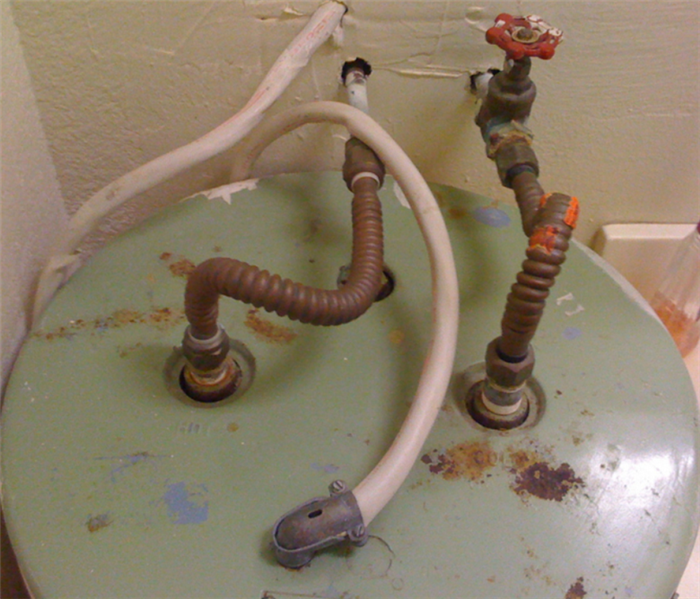 Old Hot Water Heater
Old Hot Water Heater
Water heaters are essential elements of our home. We use them in daily activities such as taking a bath, using the dishwasher and using the washing machine. But because we use them frequently, it’s sometimes easy to take them for granted and forget that they need to be maintained. Failing to do so will result in malfunctions and problems and eventually, replacing your water heater. Taking notice of the first signs of a problem can help you repair your water heater before it becomes worse.
You don’t have to be an expert to spot the first signs of trouble. All you need to have is a keen sense of observation so that your water heater can be repaired.
Here are three signs that indicate your water heater needs to be repaired.
Hot water has off smell or off color. The first instance that you notice your hot water has an off smell or has a rusty color, that’s something that you need to check out. The smell could be the result of a rusty anode rod in the water heater. There is no need to worry since the anode rod can be replaced that will then eliminate the bad odor. Bacteria growth also causes bad smells. This happens when the hot water has not been used or has been turned off for quite some time or when the thermostat is set at a very low level.
Corroded pipes can also cause an off color in your water. This can be solved by installing a water softener or by replacing the plumbing. If you also see a lot of sediments in the water, it’s time to have the water heater repaired.
Water is not hot enough, too hot, not strong enough or there is none at all. When there is no water, check first that your water heater has power and is working fine. If it is, have it inspected by a plumber. If water is not enough, this could be due to an undersized water heater and is a common situation when a lot more people are using the water heater. This could also be caused by the presence of mineral deposits inside the water heater tank. When water is too hot or not hot enough, you may have to adjust the temperature dial of the water heater. If there is no change in temperature, have the water heater checked and repaired.
Strange noises and leaks. Leaks coming from your water heater could lead to flooding. In the same way, strange noises like pops, bangs, gurgles, and the like are clear indicators that something is wrong with your water heater. This is usually caused by a buildup of sediments inside the tank. A boiling sound, however, could mean the water heater is overheating or that pressure is building up inside the tank. All these have to be addressed immediately to prevent further problems.
It’s important to have your water heater repaired as soon as you see these signs. This will help you save on costs, prevent further damage, and avoid an untimely replacement of your unit.
If your hot water heater malfunctions and creates a water damage, please call SERVPRO of Cambridge/Belmont (617) 864-7378 to assist you with the water damage.
Team SERVPRO at Tour De Cure
5/24/2017 (Permalink)
 Team SERVPRO at the Tour De Cure
Team SERVPRO at the Tour De Cure
On Sunday May 21, 2017, Team SERVPRO "Like It Never Happened" had 28 cyclists in the annual Tour De Cure in Topsfield MA. The Tour De Cure is the largest cycling fundraiser for the American Diabetes Association. Team SERVPRO "Like It Never Happened" raised $18,000 at the event, we were the 5th largest company team fundraiser. This is the 5th year Team SERVPRO "Like It Never Happened" has had a group of cyclists in this event. We have gone from 3 riders to the 28 this year. If you would like to join us next year, please contact SERVPRO of Cambridge/Belmont at (617) 864-7378.
Here are some facts about Diabetes:
29.1 million people in the United States has diabetes
1 out of every 4 people who have diabetes don't know it
The total amount of money between lost wages and medical costs are 245 billion dollars
What you can do to prevent diabetes:
lose weight, eat healthy and become more active
9 Air Conditioning tips to prevent costly breakdowns
5/3/2017 (Permalink)
 A/C Duct after cleaning.
A/C Duct after cleaning.
It is getting warmer in New England & homeowners will soon be turning on their Air Conditioning units. Appropriate maintenance at the beginning of the cooling season is one of the best ways to prevent an air conditioning breakdown. Prevention is the key to avoiding an air conditioning emergency in the height of summer. Here are nine maintenance tips that can help you avoid a costly air conditioning repair:
1) Energize the crankcase heater
2) Clean outside coils twice per year
3) Inspect the compressor motor starter
4) Check/ replace moisture filters
5) Check refrigerant charge
6) Check for leaks
7) Clean evaporators
8) Protect electrical equipment
9) Familiarize yourself with normal operating conditions of the system
For all your duct cleaning needs please call SERVPRO of Cambridge/Belmont (617) 864-7378
Angie's list Super Service Award
5/3/2017 (Permalink)
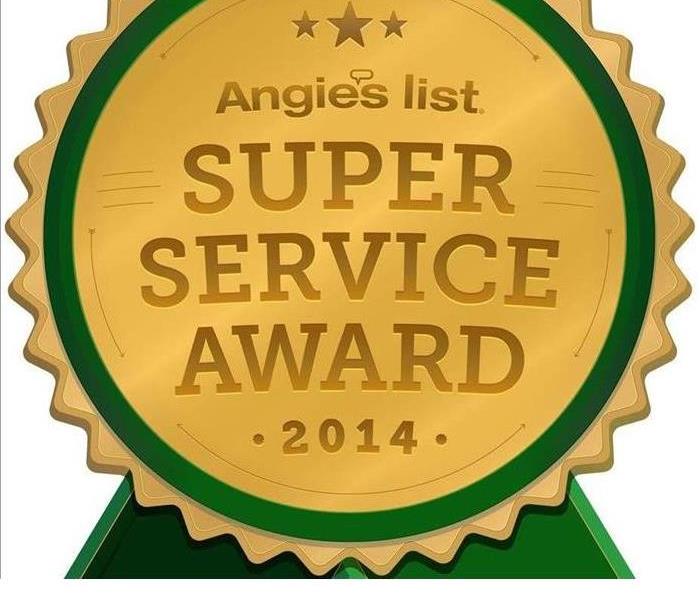 SERVPRO of Cambridge/Belmont wins Super Service Award
SERVPRO of Cambridge/Belmont wins Super Service Award
SERVPRO of Cambridge/Belmont Earns Esteemed Angie’s List Super Service Award
Award reflects company’s consistently high level of customer service
SERVPRO Cambridge/Belmont has earned the service industry’s coveted Angie’s List Super Service Award, reflecting an exemplary year of service provided to members of the local services marketplace and consumer review site in 2014.
“Only about 5 percent of the damage restoration companies in New England have performed so consistently well enough to earn our Super Service Award,” said Angie’s List Founder Angie Hicks. “It’s a really high standard.”
Angie’s List Super Service Award 2014 winners have met strict eligibility requirements, which include an “A” rating in overall grade, recent grade, and review period grade; the company must be in good standing with Angie’s List, pass a background check and abide by Angie’s List operational guidelines.
Service company ratings are updated daily on Angie’s List. Companies are graded on an A through F scale in areas ranging from price to professionalism to punctuality.
Angie's List helps facilitate happy transactions between nearly 3 million consumers nationwide and its collection of highly-rated service providers in 720 categories of service, ranging from home improvement to health care. Built on a foundation of authentic reviews of local service, Angie's List connects consumers directly to its online marketplace of services from member-reviewed providers, and offers unique tools and support designed to improve the local service experience for both consumers and service professionals.
Call SERVPRO of Cambridge/Belmont (617) 864-7378 for your restoration needs.
Commercial Water Damage
5/2/2017 (Permalink)
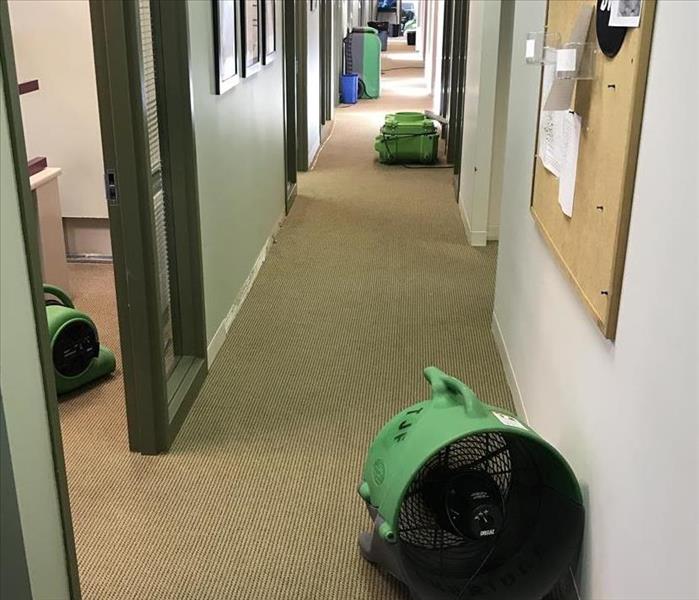 Commercial Water Damage Events Present Unique Challenges
Commercial Water Damage Events Present Unique Challenges
Restoring Your Cambridge Commercial Property After A Water Damage Event
Commercial Water Damage Events Present Unique Challenges
Body:
Flooding and water damage events at City of Cambridge commercial properties are often complex with numerous issues that require a knowledgeable and flexible response. Whether we’re dealing with a relatively small water cleanup scenario or a large scale event, we work quickly to assess each unique situation and isolate the damaged area. In many instances, normal operations can continue in a temporary space while we restore your facility.
Restoring Commercial Properties Presents Unique Challenges
Our professionals are trained to be mindful of legal and environmental concerns and strive to fully restore the damaged area while working within your budgetary constraints. We understand that every hour spent cleaning up is an hour of lost revenue and productivity. So when an emergency situation arises in your business, give us a call and we’ll be there fast with the help you need.
About SERVPRO of Cambridge/Belmont
SERVPRO of Cambridge/Belmont specializes in the cleanup and restoration of commercial and residential property after a water damage event. Our staff is highly trained in property damage restoration. From initial and ongoing training at SERVPRO’s corporate training facility to regular IICRC-industry certification, rest assured our staff is equipped with the knowledge to restore your property.
Mold Remediation
4/18/2017 (Permalink)
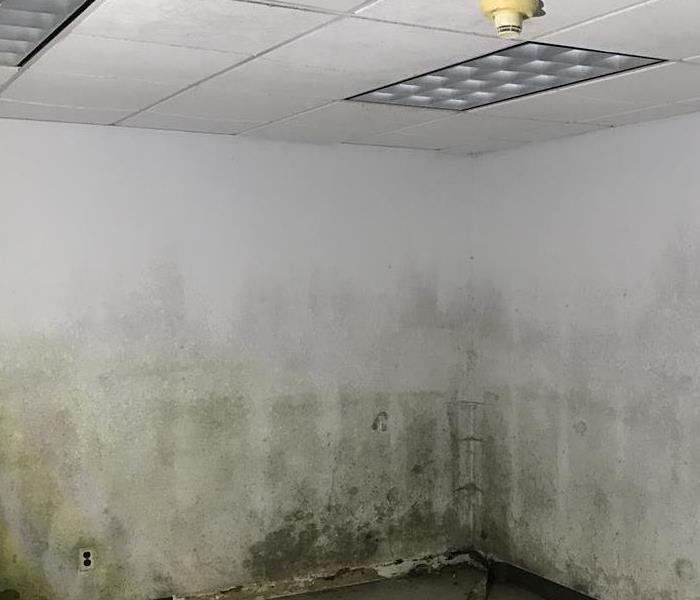 In Belmont, mold can spread through a home in as little as 48 hours.
In Belmont, mold can spread through a home in as little as 48 hours.
Does Your Town of Belmont Home Have A Mold Problem?
In Belmont, mold can spread through a home in as little as 48 hours.
Microscopic mold spores naturally occur almost everywhere, both outdoors and indoors. This makes it impossible to remove all mold from a home or business. Therefore, mold remediation reduces the mold spore count back to its natural or baseline level. Some restoration businesses advertise “mold removal” and even guarantee to remove all mold, which is a fallacy. Consider the following mold facts:
- Mold is present almost everywhere, indoors and outdoors.
- Mold spores are microscopic and float along in the air and may enter your home through windows, doors, or AC/heating systems or even hitch a ride indoors on your clothing or a pet.
- Mold spores thrive on moisture. Mold spores can quickly grow into colonies when exposed to water. These colonies may produce allergens and irritants.
- Before mold remediation can begin, any sources of water or moisture must be addressed. Otherwise, the mold may return.
- Mold often produces a strong, musty odor and can lead you to possible mold problem areas.
- Even higher-than-normal indoor humidity can support mold growth. Keep indoor humidity below 45 percent.
If your home or business has a mold problem, we can inspect and assess your property and use our specialized training, equipment, and expertise to remediate your mold infestation.
If You See Signs of Mold, Call Us Today – (617)489-7378
Duct cleaning
4/13/2017 (Permalink)
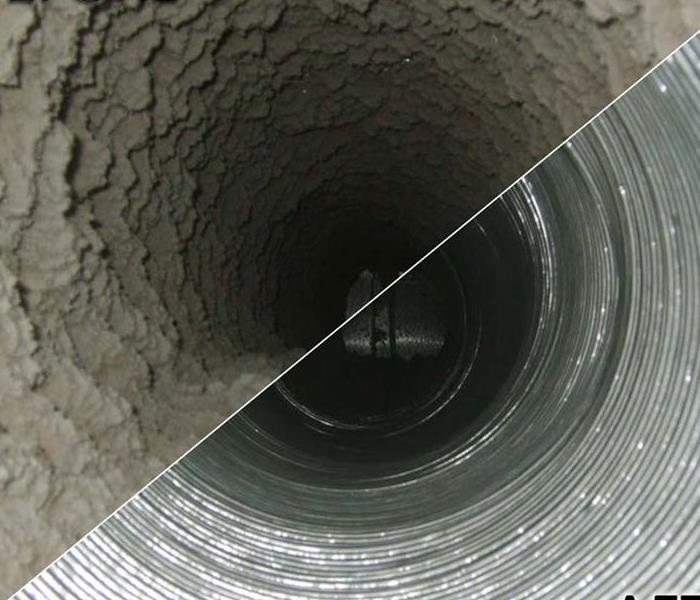 Duct cleaning before & after
Duct cleaning before & after
Professional duct cleaning services use specialized blowers, vacuums, and brushes to clean out the supply, intake, and return ducts throughout your home. Duct cleaning should also involve a thorough cleaning of the air handler, registers, grilles, fans, motors, housings, and coils of the HVAC system.The National Air Duct Cleaners Association recommends getting your air ducts cleaned every three to five years.
5 benefits of having your ducts cleaned are it creates a cleaner living environment, reduces allergens and irritants, helps everyone breathe easier and removes unpleasant smells and odors and improves air flow efficiency.
Frequency of cleaning depends on several factors, not the least of which is the preference of the home owner. Some of the things that may lead a home owner to consider more frequent cleaning include:
- Smokers in the household
- Pets that shed high amounts of hair and dander
- Water contamination or damage to the home or HVAC system
- Residents with allergies or asthma who might benefit from a reduction in the amount of indoor air pollutants in the home’s HVAC system
- After home renovations or remodeling
- Prior to occupancy of a new home.
Please call SERVPRO of Cambridge/Belmont to assist you with your duct cleaning needs (617) 864-7378
Declutter your Basement
4/13/2017 (Permalink)
 Let us clean up your clutter
Let us clean up your clutter
We know that cleaning out the junk in your basement can feel overwhelming. It is tough to know where to start. We can help you make the process easy and stress free. Call SERVPRO of Cambridge/Belmont (617) 864-7378 to help organize, sort and remove unwanted items in your basement.
SERVPRO of Cambridge/Belmont can handle all of your basement cleaning services. Whether your basement looks and feels like storage unit for all your junk from over the years, or you are doing some cleaning and clearing out to make room to finish your basement.
SERVPRO of Cambridge/Belmont will
- Remove all the junk from your basement
- Clean everything, and leave no junk behind
- Rearrange items in your garage (at your request)
- Create as much possible space for your basement
- Dispose of all your basement junk responsibly
- Recycle and donate whatever we can
Spring Allergy Season
4/13/2017 (Permalink)
 Spring Allergies are nothing to sneeze at
Spring Allergies are nothing to sneeze at
Spring is a welcome reprieve from the long New England winters — that is, unless you suffer from spring allergies. You don’t, however, have to suffer inside your home.
Here are 8 solutions to alleviate spring allergies:
- Change air filters every 30 days during peak usage months.
- Clean hard and carpeted floor surfaces often and shake out or vacuum door mats.
- Check the seals in all windows and doors, and re-seal where necessary
- Use a humidifier to balance humidity levels.
- Install a whole-house air cleaner.
- Have your air ducts cleaned.
- Resist the urge to open doors and windows even on the nicest days!
- Have your home checked by an HVAC technician annually.
Don’t suffer from Spring Allergies! Contact SERVPRO of Cambridge/Belmont (617) 864-7378 for assistance!
Spring Cleaning can help with allergies
4/13/2017 (Permalink)
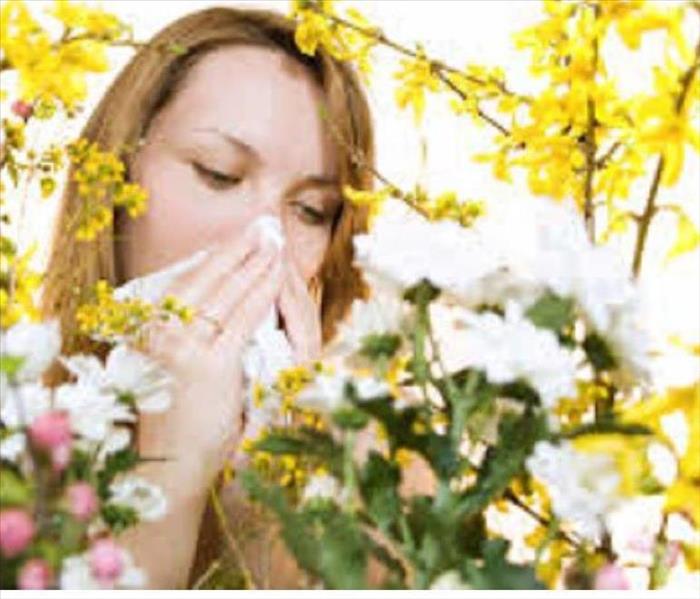 Spring Allergies are nothing to sneeze at
Spring Allergies are nothing to sneeze at
Spring is a welcome reprieve from the long New England winters — that is, unless you suffer from spring allergies. You don’t, however, have to suffer inside your home.
Here are 8 solutions to alleviate spring allergies:
- Change air filters every 30 days during peak usage months.
- Clean hard and carpeted floor surfaces often and shake out or vacuum door mats.
- Check the seals in all windows and doors, and re-seal where necessary
- Use a humidifier to balance humidity levels.
- Install a whole-house air cleaner.
- Have your air ducts cleaned.
- Resist the urge to open doors and windows even on the nicest days!
- Have your home checked by an HVAC technician annually.
Don’t suffer from Spring Allergies! Contact SERVPRO of Cambridge/Belmont (617) 864-7378 for assistance!
Flooded Basements
4/11/2017 (Permalink)
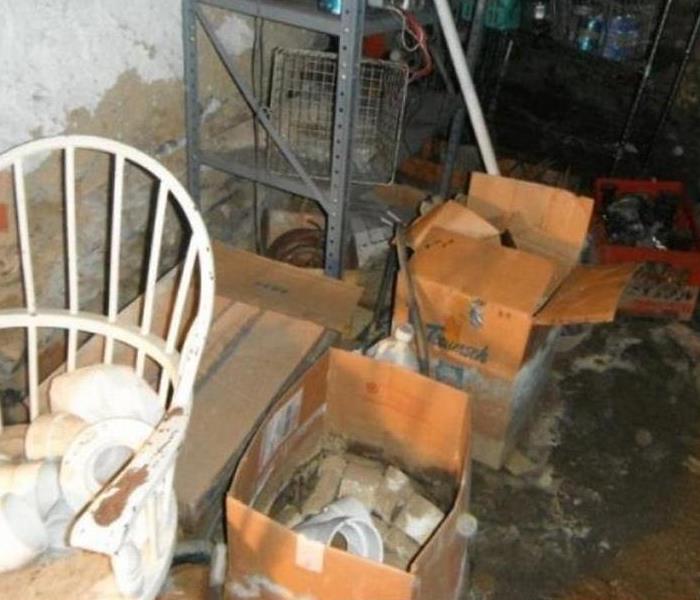 SERVPRO of Cambridge/Belmont provides 24 hour fire and water damage restoration service in Cambridge
SERVPRO of Cambridge/Belmont provides 24 hour fire and water damage restoration service in Cambridge
City of Cambridge 24 Hour Emergency Water Damage Service
SERVPRO of Cambridge/Belmont is available 24 hours a day for water emergencies, large or small. When you are dealing with water damage, immediate action is crucial. A delay of just a few hours can greatly increase the severity of the water damage.
We Answer the Phone Ready to Help
Call Today - (617) 864-7378
We understand that when you call us, you may be feeling confused, stressed, and vulnerable. You need an expert to guide you through this crisis. SERVPRO of Cambridge/Belmont has the specific water damage training and experience to help you through this tough time. We specialize in water damage restoration—in fact, it's the cornerstone of our business.
What to Expect
When you call, we will ask several questions regarding your water damage emergency. These questions will help us determine what equipment and resources to bring, including how many trained SERVPRO Professionals may be needed.
Our SERVPRO Representative will ask several questions:
- Your name and contact information
- Your insurance information (if applicable)
- The street address of the water-damaged home or business
- When did the flooding or water damage occur?
- What caused the water damage (if known)?
- Is there electricity available (on-site)?
About SERVPRO of Cambridge/Belmont
SERVPRO of Cambridge/Belmont specializes in the cleanup and restoration of residential and commercial property after a fire, smoke or water damage event. Our staff is highly trained in property damage restoration. From initial and ongoing training at SERVPRO’s corporate training facility to regular IICRC-industry certification, rest assured our staff is equipped with the knowledge to restore your property.
Fire Damage
3/28/2017 (Permalink)
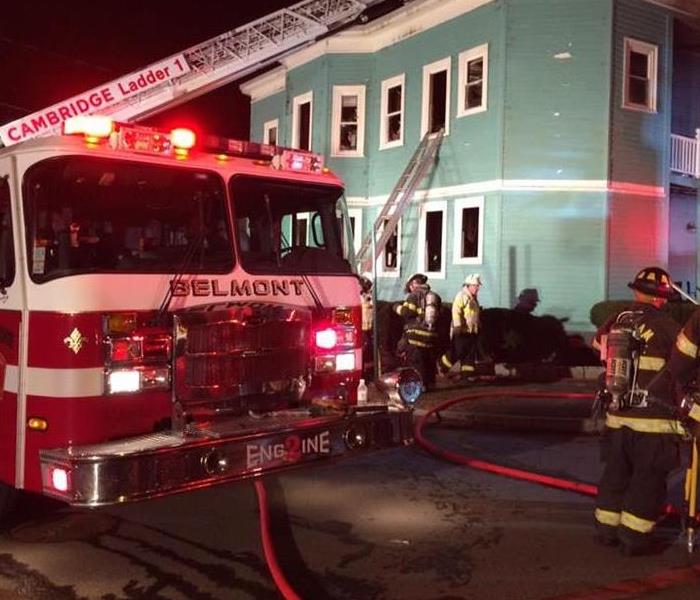 Recent fire in Belmont
Recent fire in Belmont
City of cambridge Smoke and Soot Cleanup
Smoke and soot is very invasive and can penetrate various cavities within your home, causing hidden damage and odor. Our smoke damage expertise and experience allows us to inspect and accurately assess the extent of the damage to develop a comprehensive plan of action.
Smoke and soot facts:
- Hot smoke migrates to cooler areas and upper levels of a structure.
- Smoke flows around plumbing systems, seeping through the holes used by pipes to go from floor to floor.
- The type of smoke may greatly affect the restoration process.
Different Types of Smoke
There are two different types of smoke–wet and dry. As a result, there are different types of soot residue after a fire. Before restoration begins, SERVPRO of Cambridge/Belmont will test the soot to determine which type of smoke damage occurred. The cleaning procedures will then be based on the information identified during pretesting. Here is some additional information:
Wet Smoke – Plastic and Rubber
- Low heat, smoldering, pungent odor, sticky, smeary. Smoke webs are more difficult to clean.
Dry Smoke – Paper and Wood
- Fast burning, high temperatures, heat rises therefore smoke rises.
Protein Fire Residue – Produced by evaporation of material rather than from a fire
- Virtually invisible, discolors paints and varnishes, extreme pungent odor.
Our Fire Damage Restoration Services
Since each smoke and fire damage situation is a little different, each one requires a unique solution tailored for the specific conditions. We have the equipment, expertise, and experience to restore your fire and smoke damage. We will also treat your family with empathy and respect and your property with care.
Have Questions about Fire, Smoke, or Soot Damage?
Call Us Today – (617) 864-7378
Angie's list Super Service Award 2014
3/20/2015 (Permalink)
SERVPRO of Cambridge/Belmont Earns Esteemed 2014 Angie’s List Super Service Award
Award reflects company’s consistently high level of customer service
SERVPRO Cambridge/Belmont has earned the service industry’s coveted Angie’s List Super Service Award, reflecting an exemplary year of service provided to members of the local services marketplace and consumer review site in 2014.
“Only about 5 percent of the damage restoration companies in New England have performed so consistently well enough to earn our Super Service Award,” said Angie’s List Founder Angie Hicks. “It’s a really high standard.”
Angie’s List Super Service Award 2014 winners have met strict eligibility requirements, which include an “A” rating in overall grade, recent grade, and review period grade; the company must be in good standing with Angie’s List, pass a background check and abide by Angie’s List operational guidelines.
Service company ratings are updated daily on Angie’s List. Companies are graded on an A through F scale in areas ranging from price to professionalism to punctuality.
Angie's List helps facilitate happy transactions between nearly 3 million consumers nationwide and its collection of highly-rated service providers in 720 categories of service, ranging from home improvement to health care. Built on a foundation of authentic reviews of local service, Angie's List connects consumers directly to its online marketplace of services from member-reviewed providers, and offers unique tools and support designed to improve the local service experience for both consumers and service professionals.
 Call SERVPRO of Cambridge / Belmont at (617) 864-7378 for assistance from a professional remediation company.
Call SERVPRO of Cambridge / Belmont at (617) 864-7378 for assistance from a professional remediation company.






 24/7 Emergency Service
24/7 Emergency Service







































































































































































































